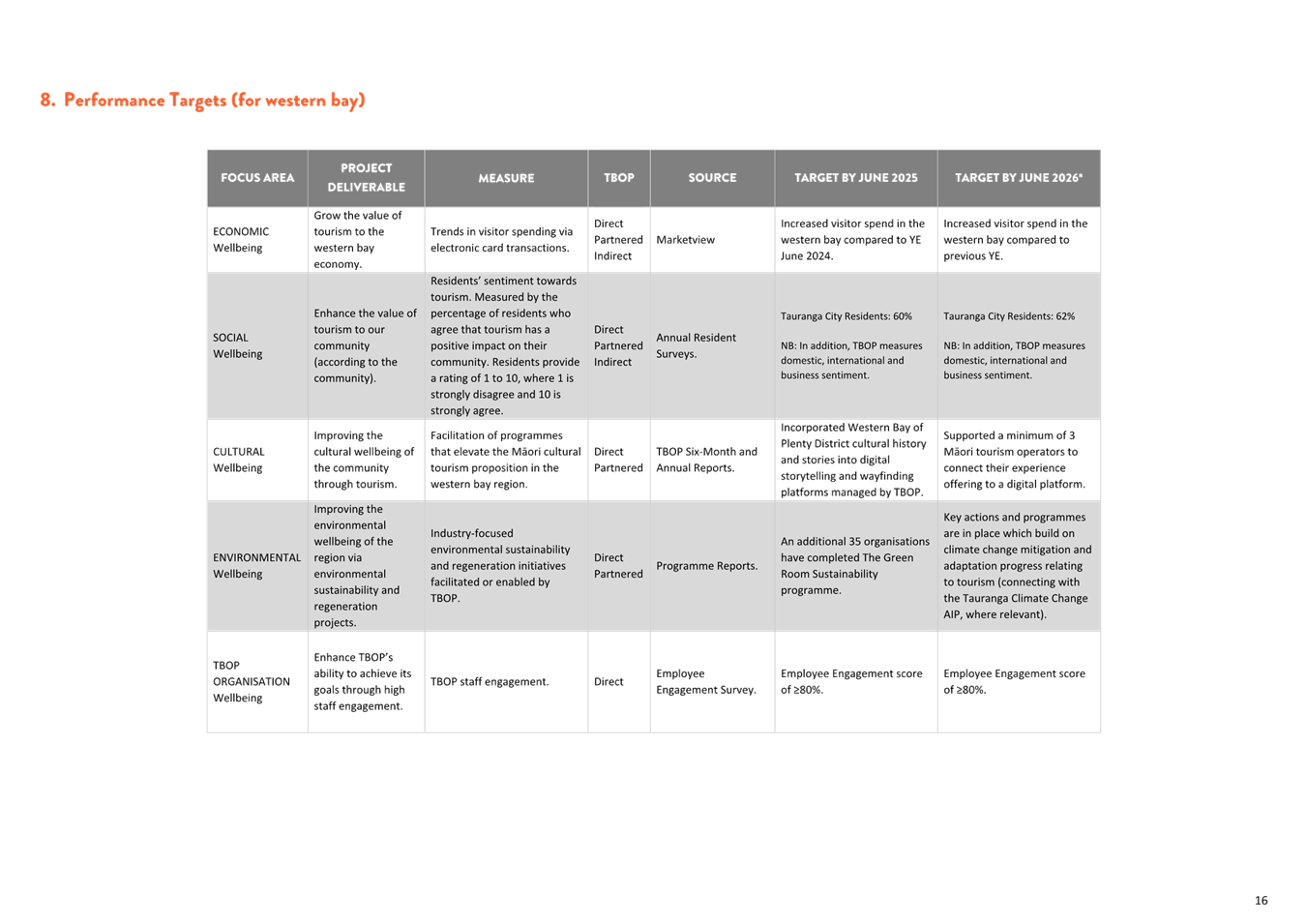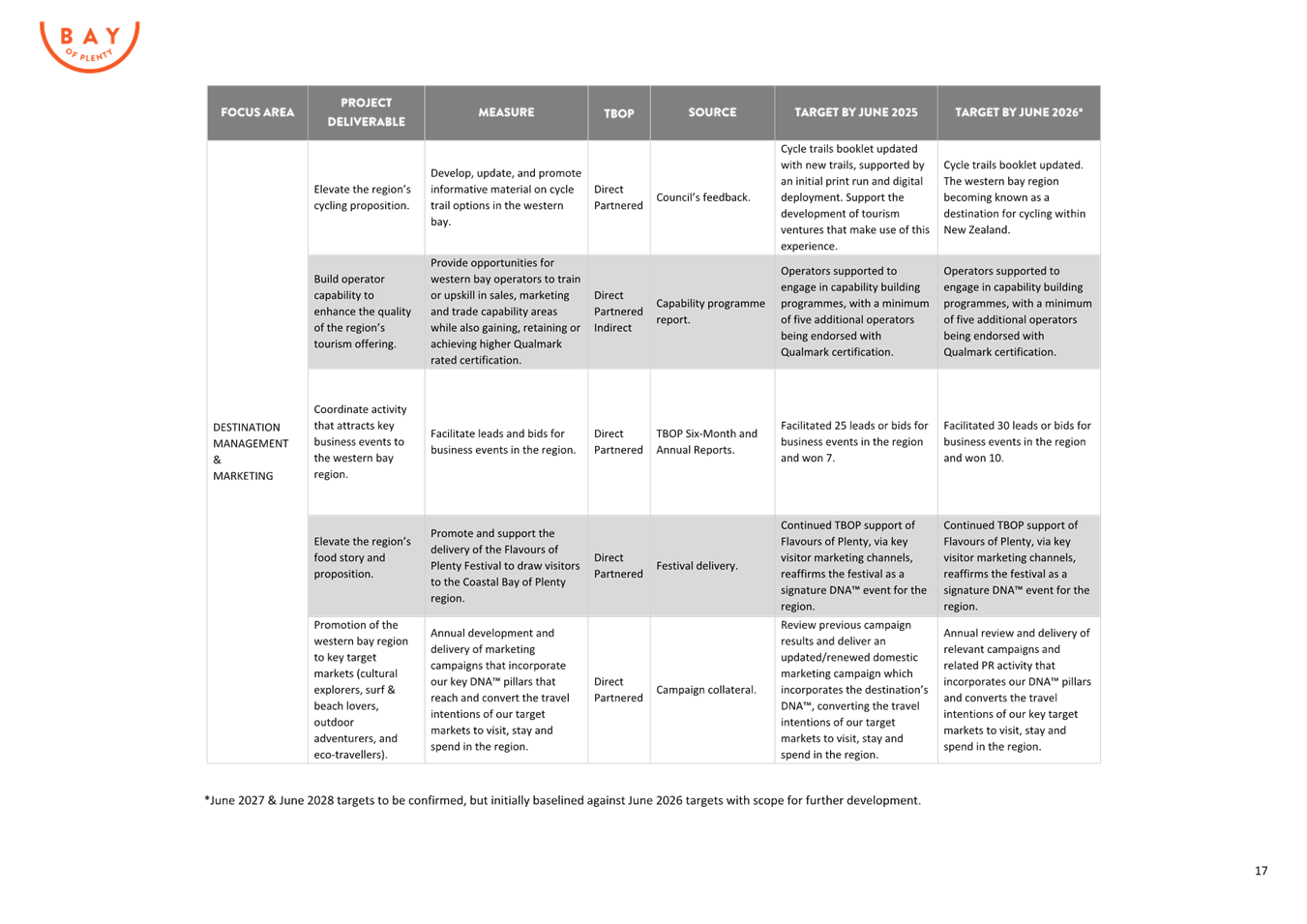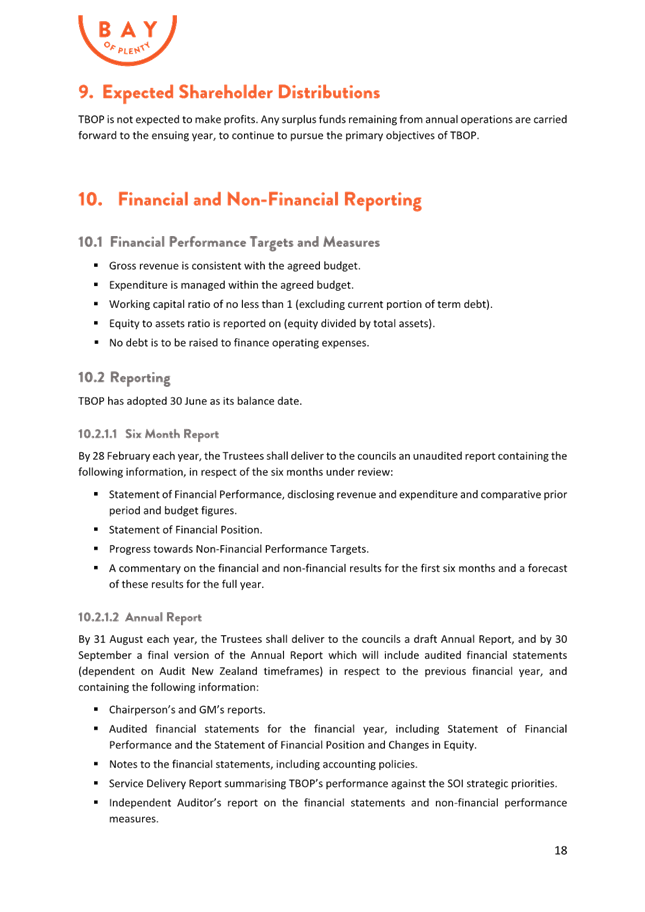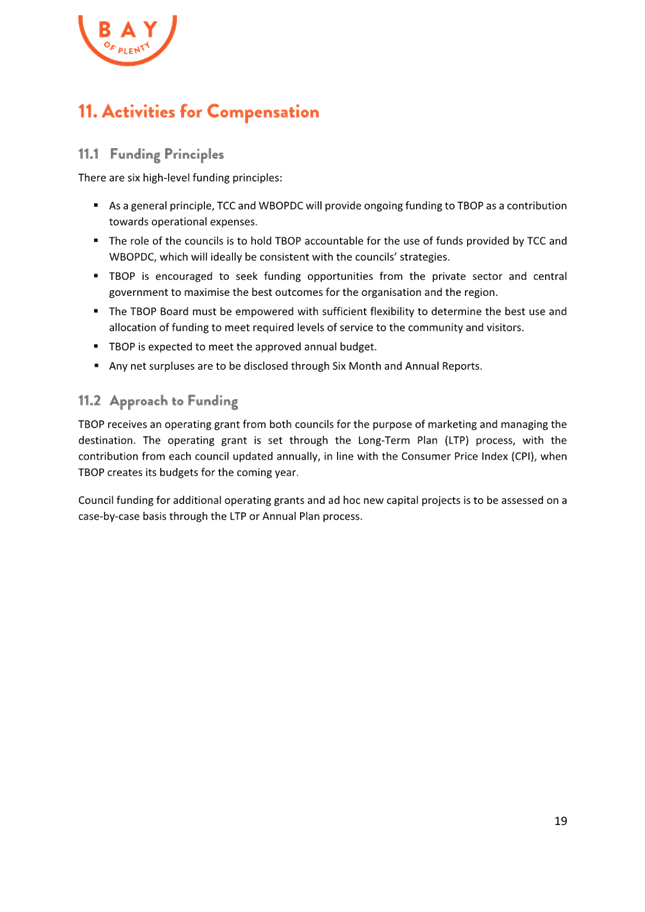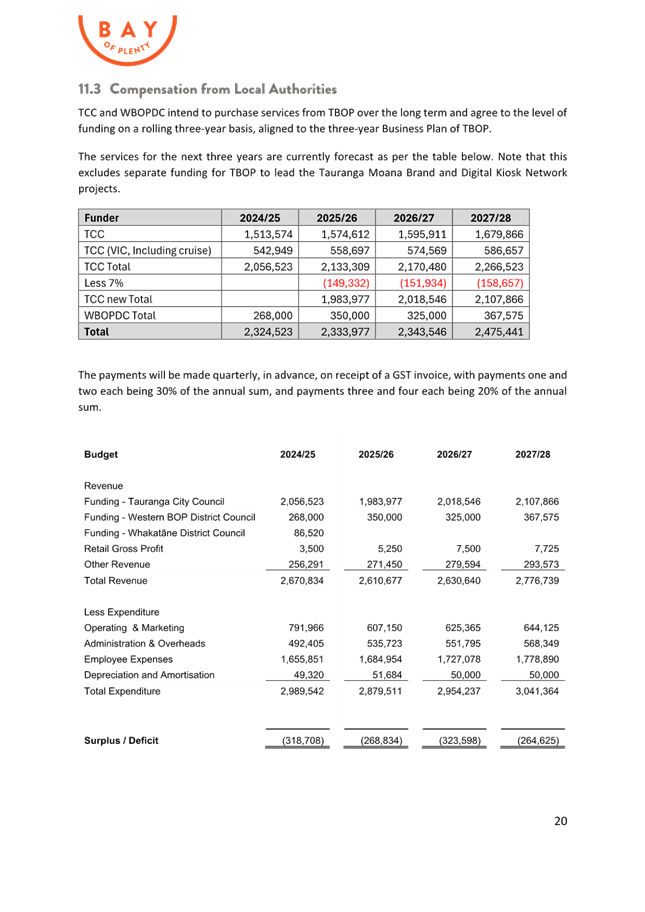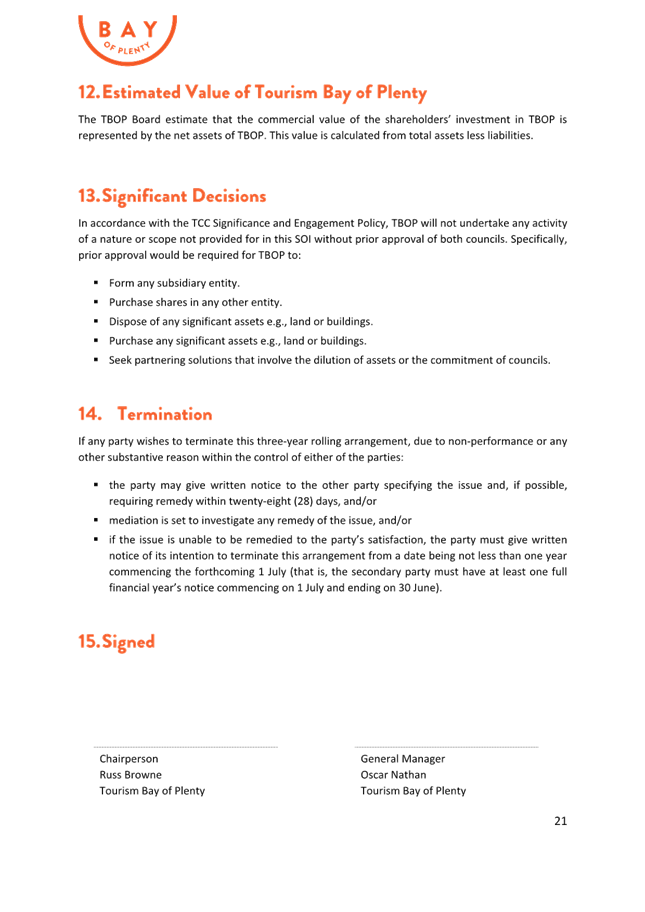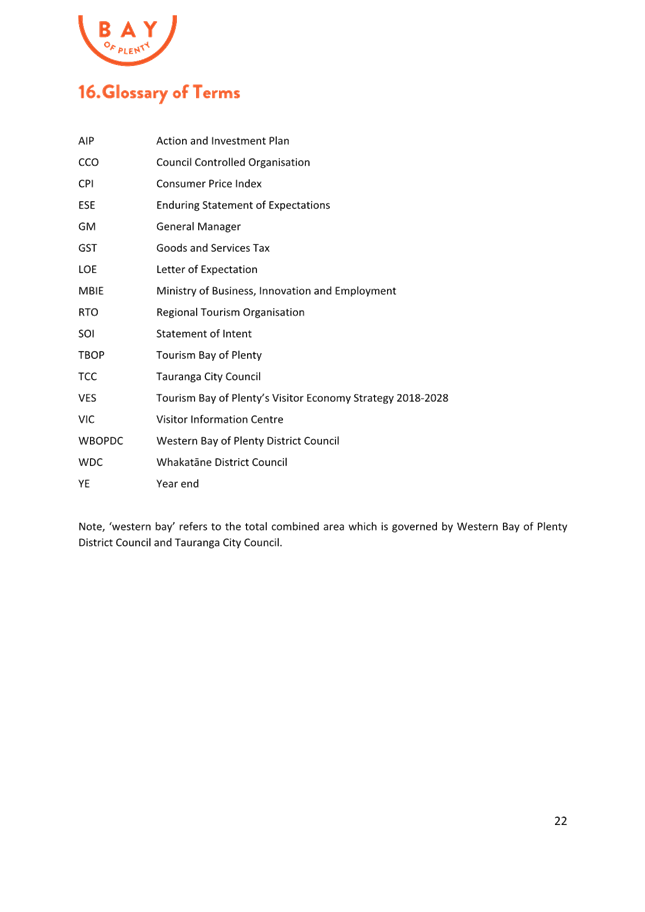|

|
|
AGENDA
Ordinary Council meeting
Monday, 14 July 2025
|
|
I hereby give notice that an Ordinary meeting of
Council will be held on:
|
|
Date:
|
Monday, 14 July 2025
|
|
Time:
|
9:30 AM
|
|
Location:
|
Tauranga City Council Chambers
Level 1 - 90 Devonport Road
Tauranga
|
|
Please note that this
meeting will be livestreamed and the recording will be publicly available on
Tauranga City Council's website: www.tauranga.govt.nz.
|
|
Marty Grenfell
Chief Executive
|
Terms of reference – Council
Membership
|
Chair
|
Mayor
Mahé Drysdale
|
|
Deputy Chair
|
|
|
Members
|
|
|
Quorum
|
Half of the members
present, where the number of members (including vacancies) is even;
and a majority of the members present, where the number of members
(including vacancies) is odd.
|
|
Meeting frequency
|
Three weekly or as required
|
Role
·
To ensure the effective and efficient governance
of the City.
·
To enable leadership of the City including advocacy
and facilitation on behalf of the community.
·
To review and monitor the performance of the
Chief Executive.
Scope
·
Oversee the work of all committees and
subcommittees.
·
Exercise all non-delegable and non-delegated
functions and powers of the Council.
·
The powers Council is legally prohibited from
delegating include:
○
Power to make a rate.
○
Power to make a bylaw.
○
Power to borrow money, or purchase or dispose of
assets, other than in accordance with the long-term plan.
○
Power to adopt a long-term plan, annual plan, or
annual report
○
Power to appoint a chief executive.
○
Power to adopt policies required to be adopted
and consulted on under the Local Government Act 2002 in association with the
long-term plan or developed for the purpose of the local governance statement.
○
All final decisions required to be made by
resolution of the territorial authority/Council pursuant to relevant
legislation (for example: the approval of the City Plan or City Plan changes as
per section 34A Resource Management Act 1991).
·
Council has chosen not to delegate the
following:
○
Power to compulsorily acquire land under the
Public Works Act 1981.
·
Make those decisions which are required by
legislation to be made by resolution of the local authority.
·
Authorise all expenditure not delegated to
officers, Committees or other subordinate decision‑making bodies of
Council.
·
Make appointments of members to the council-controlled
organisation Boards of Directors/Trustees and representatives of Council to
external organisations.
·
Undertake statutory duties in regard to
Council-controlled organisations, including reviewing statements of intent,
with the exception of the Local Government Funding Agency where such roles are
delegated to the City Delivery Committee. (Note that monitoring of all
Council-controlled organisations’ performance is undertaken by the City
Delivery Committee. This also includes Priority One reporting.)
·
Consider all matters related to Local Water Done
Well.
·
Consider any matters referred from any of the
Standing or Special Committees, Joint Committees, Chief Executive or General
Managers.
·
Review and monitor the Chief Executive’s
performance.
·
Develop Long Term Plans and Annual Plans
including hearings, deliberations and adoption.
Procedural matters
·
Delegation of Council powers to Council’s
committees and other subordinate decision-making bodies.
·
Adoption of Standing Orders.
·
Receipt of Joint Committee minutes.
·
Approval of Special Orders.
·
Employment of Chief Executive.
·
Other Delegations of Council’s powers,
duties and responsibilities.
Regulatory matters
Administration,
monitoring and enforcement of all regulatory matters that have not otherwise
been delegated or that are referred to Council for determination (by a
committee, subordinate decision‑making body, Chief Executive or relevant
General Manager).
|
Ordinary Council meeting Agenda
|
14 July 2025
|
7 Confirmation
of minutes
7.1 Minutes
of the Council meeting held on 10 June 2025
File
Number: A18427947
Author: Caroline
Irvin, Governance Advisor
Authoriser: Clare
Sullivan, Team Leader: Governance Services
|
Recommendations
That the Minutes of the
Council meeting held on 10 June 2025 be confirmed as a true and correct
record.
|
Attachments
1. Minutes
of the Council meeting held on 10 June 2025
|
 Ordinary Council
meeting minutes Ordinary Council
meeting minutes
|
10 June 2025
|
|

|
|
MINUTES
Ordinary Council meeting
Tuesday, 10 June 2025
|
Order of Business
1 Opening karakia. 3
2 Apologies. 3
3 Public
forum.. 3
4 Acceptance
of late items. 3
5 Confidential
business to be transferred into the open. 3
6 Change to
the order of business. 3
7 Confirmation
of minutes. 4
7.1 Minutes
of the Council meeting held on 28 April 2025. 4
7.2 Minutes
of the Council meeting held on 8 May 2025. 4
7.3 Minutes
of the Extraordinary Council meeting held on 9 May 2025. 4
8 Declaration
of conflicts of interest 4
9 Deputations,
presentations, petitions. 4
Nil
10 Recommendations from
other committees. 5
10.1 Recommendation
from Ngā Poutiriao o Mauao Appointment of Deputy Chair - Cr Hēmi
Rolleston - Te Awanui Ward Councillor 5
10.2 Recommendation
from Waiari Kaitiaki Advisory Group - Appointment of Co-Chair Councillor
Hautapu Baker 5
11 Business. 6
11.1 Status
update on actions from prior Council meetings. 6
11.2 Ratepayer
Assistance Scheme (RAS) 6
11.3 2025/26
Annual Plan & Rates Impact Update Post Deliberations. 8
11.4 Membership
of the 'Leading for Delivery Sub-Committee' of the SmartGrowth Leadership Group. 9
12 Discussion of late
items. 9
13 Public excluded
session. 9
13.1 Public
Excluded Minutes of the Council meeting held on 28 April 2025. 9
13.2 Public
Excluded Minutes of the Extraordinary Council meeting held on 9 May 2025. 10
13.3 Disposal
Classification 2140L Kairua Road, Tauranga. 10
13.4 Litigation
Report 10
13.5 Public
Art Framework. 10
13.6 Appointment
of Tangata Whenua Representative to SmartGrowth Leadership Group. 10
Confidential Attachment 2 11.1 - Status
update on actions from prior Council meetings. 10
14 Closing karakia. 11
MINUTES
OF Tauranga City Council
Ordinary Council meeting
HELD
AT THE Tauranga City Council Chambers,
Level 1 - 90 Devonport Road, Tauranga
ON
Tuesday, 10 June 2025 AT 9.30am
|
MEMBERS PRESENT:
|
Mayor Mahé Drysdale
(Chair), Deputy Mayor Jen Scoular, Cr Hautapu Baker, Cr Glen Crowther, Cr
Rick Curach, Cr Steve Morris, Cr Marten Rozeboom, Cr Kevin Schuler, Cr Rod
Taylor, Cr Hēmi Rolleston
|
|
IN ATTENDANCE:
|
Paul Davidson (Chief Financial Officer), Barbara Dempsey
(General Manager: Community Services), Jeremy Boase (Acting General Manager:
Strategy, Growth & Governance), Frazer Smith (Manager: Strategic Finance
& Growth), Jim Taylor (Manager: Rating Policy & Revenue),
Kathryn Sharplin (Manager: Finance), Tracey Hughes (Financial
Insights and Reporting Manager), Clare Sullivan (Team Leader: Governance
Services), Caroline Irvin (Governance Advisor).
|
Timestamps are
included beside each of the items and relate to the recording of the meeting
held on 10 June 2025 at Council Website.
1 Opening
karakia
Cr Hēmi Rolleston opened the meeting with a karakia
2 Apologies
Nil
3 Public
forum
Nil
4 Acceptance
of late items
Nil
5 Confidential
business to be transferred into the open
Nil
6 Change
to the order of business
Nil
7 Confirmation
of minutes
8 Declaration
of conflicts of interest
Nil
9 Deputations,
presentations, petitions
Nil
10 Recommendations
from other committees
TIMESTAMP 4:51
|
10.1 Recommendation from Ngā
Poutiriao o Mauao Appointment of Deputy Chair - Cr Hēmi Rolleston - Te
Awanui Ward Councillor
|
|
Resolution CO/25/18/4
Moved: Cr
Rick Curach
Seconded: Cr Kevin Schuler
That the Council:
(a)
Receives the report "Recommendation from Ngā Poutiriao o
Mauao Appointment of Deputy Chair - Cr Hēmi Rolleston - Te Awanui Ward
Councillor".
(b)
Appoints Councillor Hēmi Rolleston as the Deputy Chair for
Ngā Poutiriao o Mauao.
For: Mayor
Mahé Drysdale, Deputy Mayor Jen Scoular, Cr Hautapu Baker, Cr Glen
Crowther, Cr Rick Curach, Cr Steve Morris, Cr Marten Rozeboom, Cr Kevin
Schuler and Cr Rod Taylor
Abstained: Cr
Hēmi Rolleston
Carried
|
TIMESTAMP 7:34
|
10.2 Recommendation from
Waiari Kaitiaki Advisory Group - Appointment of Co-Chair Councillor Hautapu
Baker
|
|
Resolution CO/25/18/5
Moved: Deputy
Mayor Jen Scoular
Seconded: Cr Hēmi Rolleston
That the Council:
(a) Receives the
report "Recommendation from Waiāri Kaitiaki Advisory Group -
Appointment of Co-Chair Councillor Hautapu Baker".
(b) Appoints
Councillor Hautapu Baker as Co-chair for Waiāri Kaitiaki Advisory Group.
For: Mayor
Mahé Drysdale, Deputy Mayor Jen Scoular, Cr Glen Crowther, Cr Rick
Curach, Cr Steve Morris, Cr Marten Rozeboom, Cr Kevin Schuler, Cr Rod Taylor
and Cr Hēmi Rolleston
Abstained: Cr
Hautapu Baker
Carried
|
11 Business
TIMESTAMP 8:50
|
11.1 Status update on
actions from prior Council meetings
|
|
Staff: Paul Davidson,
Chief Financial Officer
Action
·
That staff add the closed action lists to Stellar for Council
and the committees.
·
That staff provide Councillors confirmation on what information
on the Sale of Marine Precinct has been released and what hasn’t.
|
|
Resolution CO/25/18/6
Moved: Cr
Rod Taylor
Seconded: Deputy Mayor Jen Scoular
That the Council:
(a) Receives
the report "Status update on actions from prior Council meetings".
(b) Notes that this is a recurring report,
which will be provided to every second Council meeting.
(c) Notes any requested improvements for
future iterations of this report.
(d) Notes
that Attachment 2 can be transferred into the open when the report
that generated the action is no longer confidential.
Carried
|
TIMESTAMP 22:05
|
11.2 Ratepayer Assistance
Scheme (RAS)
|
|
Staff: Paul Davidson, Chief
Financial Officer
Frazer Smith, Manager: Strategic Finance & Growth
Jim Taylor, Manager: Rating Policy & Revenue
|
|
Recommendation
Moved: Mayor
Mahé Drysdale
Seconded: Cr Rod Taylor
That the Council:
(a) Receives the report "Ratepayer Assistance
Scheme (RAS)".
(b) Approve $500,000 loan funding expenditure
in the 2025/26 financial year to support final development of the RAS subject
to total development funding $2.5 million (including Tauranga City Council's contribution)
being committed from other local authorities and/ or central government; and
(c) Notes
that total RAS establishment capital is estimated at ~ $30 million and that Tauranga
City Council's contribution of RAS equity could be up to ~ $6 million (the maximum
investment available is 20 per cent of total capital to ensure off-balance sheet
treatment), subject to final approval by the Governing Body.
(d) Notes that total Tauranga City Council's
funding contribution to date and any further final development funding will
count as establishment capital in the event it chooses to participate in the
establishment of the RAS.
(e) Notes
that this funding will be treated as an investment as it will only be paid
once sufficient support has been obtained to complete the full $2.5 million
funding requirement.
|
|
A MOTION WAS PROPOSED
Moved: Cr
Glen Crowther
Seconded: Cr Rick Curach
That the Council:
(b)
Amend recommendation (b) as follows:
·
Approve up to $250,000 loan funded expenditure in the
2025/26 financial year to support final development of the RAS subject to
total development funding $2.5 million (including Tauranga City Council's contribution)
being committed from other local authorities and/ or central government; and
For: Cr
Glen Crowther and Cr Rick Curach
Against: Mayor Mahé Drysdale, Deputy Mayor Jen Scoular,
Cr Hautapu Baker, Cr Steve Morris, Cr Marten Rozeboom, Cr Kevin Schuler, Cr
Rod Taylor and Cr Hēmi Rolleston
lost
|
|
Resolution CO/25/18/7
Moved: Mayor
Mahé Drysdale
Seconded: Cr Rod Taylor
That the Council:
(a) Receives the report "Ratepayer
Assistance Scheme (RAS)".
(b) Approve $500,000 loan funding expenditure
in the 2025/26 financial year to support final development of the RAS subject
to total development funding $2.5 million (including Tauranga City Council's contribution)
being committed from other local authorities and/ or central government; and
(c) Note that
total RAS establishment capital is estimated at ~ $30 million and that Tauranga
City Council's contribution of RAS equity could be up to ~ $6 million (the maximum
investment available is 20 per cent of total capital to ensure off-balance sheet
treatment), subject to final approval by the Governing Body.
(d) Note
that total Tauranga City Council's funding contribution to date and any
further final development funding will
count as establishment capital in the event it chooses to participate
in the establishment of the RAS.
(e) Note
that this funding will be treated as an investment as it will only be paid
once sufficient support has been obtained to complete the full $2.5 million
funding requirement.
For: Mayor
Mahé Drysdale, Deputy Mayor Jen Scoular, Cr Hautapu Baker, Cr Rick
Curach, Cr Steve Morris, Cr Marten Rozeboom, Cr Kevin Schuler, Cr Rod Taylor
and Cr Hēmi Rolleston
Against: Cr
Glen Crowther
Carried
|
|
Attachments
1 Ratepayer
Assistant Scheme - Risk Assessment
2 Local
Government Ratepayer Assistance Scheme
|
TIMESTAMP 1:31:11
|
11.3 2025/26
Annual Plan & Rates Impact Update Post Deliberations
|
|
Staff:
Paul Davidson, Chief Financial Officer
Kathryn Sharplin (Manager: Finance)
Tracey Hughes (Financial Insights and Reporting Manager)
Jim Taylor, Manager: Rating Policy & Revenue
|
|
Resolution CO/25/18/8
Moved: Mayor
Mahé Drysdale
Seconded: Cr Hautapu Baker
That the Council:
(a) Receives the report "2025/26 Annual
Plan & Rates Impact Update Post Deliberations".
(b) Notes the rating impact by category
arising from the overall rates increase after growth of 9.9%, which will be incorporated
in the Annual plan and rates resolution for adoption on 26 June 2025.
Carried
|
TIMESTAMP 1:50:14
|
11.4 Membership of the
'Leading for Delivery Sub-Committee' of the SmartGrowth Leadership Group
|
|
Staff: Jeremy Boase,
Acting General Manager: Strategy, Growth & Governance
|
|
Resolution CO/25/18/9
Moved: Cr
Hautapu Baker
Seconded: Cr Kevin Schuler
That the Council:
(a) Receives the report "Membership of
the 'Leading for Delivery Sub-Committee' of the SmartGrowth Leadership Group".
(b) Confirms the appointment of Mayor Mahé
Drysdale as Council’s appointed member on the subcommittee, with Deputy
Mayor Jen Scoular as the alternate.
For: Cr
Hautapu Baker, Cr Glen Crowther, Cr Rick Curach, Cr Steve Morris, Cr Marten Rozeboom,
Cr Kevin Schuler, Cr Rod Taylor and Cr Hēmi Rolleston
Abstained: Mayor
Mahé Drysdale and Deputy Mayor Jen Scoular
Carried
|
12 Discussion
of late items
Nil
13 Public
excluded session
Resolution to exclude the public
|
Resolution CO/25/18/10
Moved: Deputy
Mayor Jen Scoular
Seconded: Cr Rod Taylor
That the public be excluded from the following parts of
the proceedings of this meeting.
The general subject matter of each matter to be considered
while the public is excluded, the reason for passing this resolution in
relation to each matter, and the specific grounds under section 48 of the
Local Government Official Information and Meetings Act 1987 for the passing
of this resolution are as follows:
|
General
subject of each matter to be considered
|
Reason for
passing this resolution in relation to each matter
|
Ground(s)
under section 48 for the passing of this resolution
|
|
13.1 -
Public Excluded Minutes of the Council meeting held on 28 April 2025
|
s7(2)(a) - The
withholding of the information is necessary to protect the privacy of
natural persons, including that of deceased natural persons
s7(2)(h) - The
withholding of the information is necessary to enable Council to carry out,
without prejudice or disadvantage, commercial activities
|
s48(1)(a) - the public
conduct of the relevant part of the proceedings of the meeting would be
likely to result in the disclosure of information for which good reason for
withholding would exist under section 6 or section 7
|
|
13.2 -
Public Excluded Minutes of the Extraordinary Council meeting held on 9 May
2025
|
s7(2)(g) - The
withholding of the information is necessary to maintain legal professional
privilege
|
s48(1)(a) - the public
conduct of the relevant part of the proceedings of the meeting would be
likely to result in the disclosure of information for which good reason for
withholding would exist under section 6 or section 7
|
|
13.3 -
Disposal Classification 2140L Kairua Road, Tauranga
|
s7(2)(i) - The
withholding of the information is necessary to enable Council to carry on,
without prejudice or disadvantage, negotiations (including commercial and
industrial negotiations)
|
s48(1)(a) - the public
conduct of the relevant part of the proceedings of the meeting would be
likely to result in the disclosure of information for which good reason for
withholding would exist under section 6 or section 7
|
|
13.4 -
Litigation Report
|
s7(2)(a) - The
withholding of the information is necessary to protect the privacy of
natural persons, including that of deceased natural persons
s7(2)(g) - The
withholding of the information is necessary to maintain legal professional
privilege
s7(2)(h) - The
withholding of the information is necessary to enable Council to carry out,
without prejudice or disadvantage, commercial activities
s7(2)(i) - The
withholding of the information is necessary to enable Council to carry on,
without prejudice or disadvantage, negotiations (including commercial and
industrial negotiations)
|
s48(1)(a) - the public
conduct of the relevant part of the proceedings of the meeting would be
likely to result in the disclosure of information for which good reason for
withholding would exist under section 6 or section 7
|
|
13.5 -
Public Art Framework
|
s7(2)(h) - The
withholding of the information is necessary to enable Council to carry out,
without prejudice or disadvantage, commercial activities
|
s48(1)(a) - the public
conduct of the relevant part of the proceedings of the meeting would be
likely to result in the disclosure of information for which good reason for
withholding would exist under section 6 or section 7
|
|
13.6 -
Appointment of Tangata Whenua Representative to SmartGrowth Leadership
Group
|
s7(2)(a) - The
withholding of the information is necessary to protect the privacy of
natural persons, including that of deceased natural persons
|
s48(1)(a) - the public
conduct of the relevant part of the proceedings of the meeting would be
likely to result in the disclosure of information for which good reason for
withholding would exist under section 6 or section 7
|
|
Confidential
Attachment 2 - 11.1 - Status update on actions from prior Council meetings
|
s7(2)(h) - The
withholding of the information is necessary to enable Council to carry out,
without prejudice or disadvantage, commercial activities
|
s48(1)(a) the public
conduct of the relevant part of the proceedings of the meeting would be
likely to result in the disclosure of information for which good reason for
withholding would exist under section 6 or section 7
|
Carried
|
At 11.20 the meeting was closed to the public.
The meeting was re-opened in public at 3.08 pm.
14 Closing
karakia
Cr Hēmi Rolleston closed the meeting with a karakia.
The meeting closed at 3.10pm.
The minutes of this meeting were confirmed as a true and
correct record at the Ordinary Council meeting held on 26 June 2025.
...........................................................
Mayor
Mahé Drysdale
CHAIR
|
Ordinary
Council meeting Agenda
|
14
July 2025
|
7.2 Minutes of
the Council meeting held on 26 June 2025
File
Number: A18482646
Author: Clare
Sullivan, Team Leader: Governance Services
Authoriser: Christine
Jones, General Manager: Strategy, Growth & Governance
|
Recommendations
That the Minutes of the
Council meeting held on 26 June 2025 be confirmed as a true and correct
record.
|
Attachments
1. Minutes
of the Council meeting held on 26 June 2025
|
Ordinary
Council meeting minutes
|
26 June 2025
|
|

|
|
MINUTES
Ordinary Council meeting
Thursday, 26 June 2025
|
Order of Business
1 Opening karakia. 3
2 Apologies. 3
3 Public
forum.. 3
4 Acceptance
of late items. 4
5 Confidential
business to be transferred into the open. 4
6 Change to
the order of business. 4
7 Confirmation
of minutes. 4
7.1 Minutes
of the Council meeting held on 13 May 2025. 4
7.2 Minutes
of the Council meeting held on 26 May 2025. 5
8 Declaration
of conflicts of interest 5
9 Deputations,
presentations, petitions. 5
Nil
10 Recommendations from
other committees. 5
10.1 Wastewater
Management Review Committee Appointment of Chair and Deputy Chair 5
11 Business. 6
11.1 Annual
Plan 2025/26 - Adoption Report 6
11.2 Rates
Resolution 2025/2026. 6
11.3 Development
Contributions Policy 2025/26 - Adoption Report 14
12 Discussion of late
items. 15
13 Public excluded
session. 15
13.1 Public
Excluded Minutes of the Council meeting held on 13 May 2025. 15
13.2 Public
Excluded Minutes of the Council meeting held on 26 May 2025. 15
13.3 Board
Appointments for Bay Venues Limited, Tauranga Art Gallery Trust and Tourism Bay
of Plenty, and the appointment of a new Deputy Chair for Tourism Bay of Plenty. 15
14 Closing karakia. 15
MINUTES
OF Tauranga City Council
Ordinary Council meeting
HELD
AT THE Tauranga City Council Chambers,
Level 1 - 90 Devonport Road, Tauranga
ON
Thursday, 26 June 2025 AT 9:30 Adoption of Annual Plan
|
MEMBERS PRESENT:
|
Mayor Mahé Drysdale,
Deputy Mayor Jen Scoular, Cr Hautapu Baker, Cr Glen Crowther, Cr Rick Curach,
Cr Steve Morris, Cr Marten Rozeboom, Cr Kevin Schuler, Cr Rod Taylor, Cr
Hēmi Rolleston
|
|
IN ATTENDANCE:
|
Marty Grenfell (Chief Executive),
Paul Davidson (Chief Financial Officer), Christine Jones (General Manager:
Strategy, Growth & Governance), Gareth Wallis (General Manager: City
Development & Partnerships), Clare Sullivan (Team Leader: Governance
Services), Anahera Dinsdale (Governance Advisor),
|
Timestamps are included beside each of the items and relate
to the recordings of the public part of the meeting held on 26 June 2025:
https://www.youtube.com/watch?v=nQ-gwmHM-9E
1 Opening
karakia
Cr Rolleston opened the meeting with a karakia and
acknowledged the passing of the Member of Parliament for the Tāmaki
Makaurau electorate, Takutai Moana Natasha Kemp who died suddenly. He
offered condolences on behalf of the council to her whanau and colleagues.
2 Apologies
Nil
3 Public
forum
Timestamp :4
|
3.1 Murray
Guy
|
|
Mr Guy spoke to the Council on
the ability of the public to speak at Council meetings the issue of rates
affordability.
|
Timestamp: 10:55
|
3.2 Mark
Kenyon-Slade
|
|
Mark Keynon-Slade spoke on the
increasing debt position of council and impact on the ratepayers of Tauranga
|
Timestamp: 17:
|
3.3 Jan
Gyenge
|
|
Jan Gyenge expressed
concern about process of, in her view not the Council, not considering the
total amount of operating expenditure.
|
Timestamp: 24:
|
3.4 Tim
Maltby
|
|
Tim Maltby asked Council to consider involving members of
the community on the working group to consider council budgets.
|
4 Acceptance
of late items
The Mayor noted that the Development Contributions Policy
attachment was circulated on Wednesday.
5 Confidential
business to be transferred into the open
Nil.
6 Change
to the order of business
Nil.
7 Confirmation
of minutes
Timestamp: 31:
|
7.2 Minutes of
the Council meeting held on 26 May 2025
|
|
Resolution CO/25/19/2
Moved: Cr
Rod Taylor
Seconded: Deputy Mayor Jen Scoular
That the Minutes
of the Council meeting held on 26 May 2025 be confirmed as a true and correct
record subject to the following corrections being made:
Page 50
ARGOS Gym Sports - Delete resolution (i)
Page 63 Local
Water Done Well - amend record of vote for clause e) (iv) to show
that only Cr Rozeboom voted against the amendment
Page 67 Domain
Road - Amend clause b) to reflect the years of the National Land
Transport Programme to 2027 – 2030
Check that rec c)
is on the list for follow-up
Page 72
Amendment re public art - Amend the rate of percentage of capital value
to .5%
Carried
|
8 Declaration
of conflicts of interest
Nil
9 Deputations,
presentations, petitions
Nil
10 Recommendations
from other committees
Timestamp: 38
|
10.1 Wastewater Management
Review Committee Appointment of Chair and Deputy Chair
|
|
Resolution CO/25/19/3
Moved: Cr
Rod Taylor
Seconded: Cr Kevin Schuler
That the Council:
(a) Receives
the report "Wastewater Management Review Committee Appointment of Chair
and Deputy Chair".
(b) Appoints
Mr Spencer Webster (Ngā Pōtiki) as the Chair of the Wastewater
Management Review Committee.
(c) Notes
that Councillor Rick Curach was appointed as Deputy Chair of the Wastewater
Management Review Committee.
Carried
|
11 Business
Timestamp: 40
|
11.1 Annual Plan 2025/26 -
Adoption Report
|
|
Staff Paul Davidson, Chief
Financial Officer
Kathryn Sharplin, Manager:
Finance
Tracey
Hughes, Financila Insights & Reporting Manager
|
|
Resolution CO/25/19/4
Moved: Mayor
Mahé Drysdale
Seconded: Deputy Mayor Jen Scoular
That the Council:
(a) Receives
the report "Annual Plan 2025/26 - Adoption Report".
(b) Adopts
the Annual Plan 2025/26 (Attachment 1).
(c) Adopts
the suggested amendments to the 2025/26 User Fees and Charges Schedule in
paragraph 13 in relation to the six cemetery parks and crematorium fees being
retained at 2024/25 fee for 2025/26.
(d) Approves
borrowing of $485m for the 2025/26 financial year in line with the approved
Annual Plan debt levels.
(e) Authorises
the Chief Executive to make any necessary minor drafting or presentation
amendments to the Annual Plan 2025/26 prior to final printing.
Carried
|
Timestamp: 1:23
|
11.2 Rates Resolution
2025/2026
|
|
Staff Paul Davidson, Chief Financial
Officer
Jim Taylor, Manager: Rating
Policy & Revenue
|
|
Resolution CO/25/19/5
Moved: Cr
Steve Morris
Seconded: Cr Rick Curach
That the Council:
(a) Receives
the report "Rates Resolution 2025/2026".
(b) Sets
the following rates under the Local Government (Rating) Act 2002, in
accordance with the relevant provisions of the Funding Impact Statement in
the Annual Plan for the 2025/2026 rating year, on rating units in the city
for the financial year commencing on 1 July 2025 and ending on 30 June 2026.
The
rates and charges specified are inclusive of Goods and Services Tax at the
prevailing rate.
I. General
Rate
A
general rate set under section 13(2) (b) of the Local Government (Rating) Act
2002 at:
· A rate of $ 0.00262181 in the dollar of capital value on
all residential rateable rating units in the city.
· A rate of $ 0.00590432 in the dollar of capital value on
all commercial rateable rating units in the city.
· A rate of $ 0.00710511 in the dollar of capital value on
all industrial rateable rating units in the city.
(“residential”,
“commercial” and “industrial” are as defined in the
Funding Impact Statement).
II. Uniform
Annual General Charge
A
uniform annual general charge set under section 15(1)(b) of the Local
Government (Rating) Act 2002 at:
· A rate of $318.00 per separately used or inhabited part
of a rateable rating unit.
III. Economic
Development Rate
A
targeted rate for economic development in the city, set under section
16(3)(b) and 16(4)(a) of the Local Government (Rating) Act 2002 at:
· A rate of $ 0.00035516 in the dollar of capital value on
every commercial and industrial rateable rating unit (as defined in the
Funding Impact Statement).
IV. Stormwater
Rate
A
targeted rate for stormwater infrastructure investment, set under section
16(3)(a) and 16(4) (b) of the Local Government (Rating) Act 2002 at:
· A rate of $ 0.00000666 in the dollar of capital value on
all residential rateable rating units in the city.
· A rate of
$ 0.00001066 in the dollar of capital value on all commercial or industrial
rateable rating units in the city.
V. Resilience
Rate
A
targeted rate for resilience infrastructure investment in Water, Wastewater, Stormwater, Transportation and Emergency
Management, set under section 16(3)(a) and 16(4) (b) of the Local Government
(Rating) Act 2002 at:
· A rate of $ 0.00001724 in the dollar of capital value on
all residential rateable rating units in the city.
· A rate of
$ 0.00002759 in the dollar of capital value on all commercial or industrial
rateable rating units in the city.
VI. Urban
Growth Rates
Targeted
rates for debt retirement for urban growth projects, set under section
16(3)(b) and 16(4)(a) of the Local Government (Rating) Act 2002, at:
Three
uniform targeted rates set on every rating unit at:
· A rate of $106.31 on each rateable rating unit located
within an area of “Full benefit” as defined in the Funding Impact
Statement.
· A rate of $70.88 on each rateable rating unit located within an area
of “Wide benefit” as defined in the Funding Impact Statement.
· A rate of $35.44 on each rateable rating unit located within the city
outside of the areas of “Full benefit” and “Wide
benefit” as defined in the Funding Impact Statement.
VII. Waste
Collection Rate
Uniform
targeted rates for the kerbside waste collection services, set under section
16(3)(b) and 16(4)(a) of the Local Government (Rating) Act 2002, on all
rating units in the city as a fixed amount per separately used or inhabited
part (SUIP) of a rating unit that is provided with the residential waste
collection service as follows:
· A rate of $210 per low waste service capacity provided
per residential SUIP.
· A rate of $245 per standard waste service capacity
provided per residential SUIP.
· A rate of $350 per high waste service capacity provided
per residential SUIP.
VIII. Garden
Waste Rate (optional)
Uniform
targeted rates for garden waste collection services, set under section
16(3)(b) and 16(4)(a) of the Local Government (Rating) Act 2002, on all
rating units in the city used for residential purposes and that will be
provided with the garden waste collection service, at:
· A rate of $110 for each garden waste bin (two weekly
collection).
· A
rate of $80 for each garden waste bin (four weekly collection).
IX. Wastewater
Rate
A differential
targeted rate for wastewater, set under sections 16(3)(b) and 16(4)(b) of the
Local Government (Rating) Act 2002 at:
· A rate of $786.60 for each water closet or urinal in a
connected rating unit in the city.
· A rate of
$393.30 per separately used or inhabited part of a rating unit for any serviceable rating units in
the city.
(“separately
used or inhabited part of a”, “connected” and
“serviceable” rating units, are defined in the Funding Impact
Statement).
A
rating unit used primarily as a residence for 1 household will not be treated
as having more than 1 water closet or urinal.
X. Water
Supply Rates
Volumetric
rate
A
targeted rate for metered water supply set under section 19(2)(a) of the
Local Government (Rating) Act 2002 at
· A rate of $3.87 per cubic metre of water supplied.
Base
rate
A
differential targeted rate per connection on every rating unit in the city,
which is provided with a metered water supply service, set under sections
16(3)(b) and 16(4)(b) of the Local Government (Rating) Act 2002, calculated
on the basis of the nature of the connection size as follows:
|
Meter
Size
|
Amount
|
|
15mm
|
$41.17
|
|
20mm
|
$41.17
|
|
25mm
|
$77.90
|
|
32mm
|
$77.90
|
|
40mm
|
$321.60
|
|
50mm
|
$636.52
|
|
80mm
|
$1,271.93
|
|
100mm
|
$1,565.71
|
|
1500mm
|
$1,565.71
|
|
200mm
|
$1,565.71
|
XI. Water
Supply Rate (unmetered)
A
uniform targeted rate on every rating unit in the city which is provided with
and connected to an unmetered water supply service, set under sections
16(3)(b) and 16(4)(a) of the Local Government (Rating) Act 2002, at:
· A rate of $1,006 for each separately used or inhabited
part of a rating unit as defined in the Funding Impact Statement.
XII. Pool
inspection Rate
A
uniform targeted rate set under sections 16(3)(b) and 16(4)(a) of the Local
Government (Rating) Act 2002 at
· A rate of $107.00 for each rating unit on councils
register of pool fence and barrier inspections.
XIII. Mainstreet
Rates
Targeted
rates for Mainstreet organisations, set under section 16(3)(b) and 16(4)(a)
of the Local Government (Rating) Act 2002, at:
· A rate of $0.00043862 in the dollar of capital value for
every commercial and industrial rating unit in the Tauranga Mainstreet rating
area as defined in the Funding Impact Statement.
· A rate of $0.00062329 in the dollar of capital value for
every commercial and industrial rating unit in the Mt Maunganui Mainstreet
rating area as defined in the Funding Impact Statement.
· A rate of $0.00148533 in the dollar of capital value for
every commercial and industrial rating unit in the Greerton Mainstreet rating
area as defined in the Funding Impact Statement.
· A rate of $0.00037003 in the dollar of capital value for
every commercial and industrial rating unit in the Papamoa Mainstreet area as
defined in the Funding Impact Statement.
XIV. Special
Services Rates
'The
Lakes’ Targeted Rate
A uniform targeted rate for
additional levels of service in relation to maintenance and renewal of street
gardens, street trees, footpaths, and the removal of litter from ponds
provided to ‘The Lakes’ subdivision, located at Pyes Pa, set under
section 16(3)(b) and 16(4)(a) of the Local Government (Rating) Act 2002, at:
· A rate of $117.01 per rating unit located within
‘The Lakes’ subdivision as defined in the Funding Impact
Statement.
‘The
Coast Papamoa’ Targeted Rate
A
uniform targeted rate for additional levels of service in relation to
maintenance and renewal of street trees and footpaths provided to ‘The
Coast Papamoa’ subdivision, located at Papamoa, set under section
16(3)(b) and 16(4)(a) of the Local Government (Rating) Act 2002, at:
· A rate of $38.72 per rating unit located within
‘The Coast Papamoa’ subdivision as defined in the Funding Impact
Statement.
‘The
Excelsa’ Targeted Rate
A
uniform targeted rate for additional levels of service in relation to
maintenance and renewal of street gardens, street trees and up lights under
trees provided to ‘The Excelsa’ subdivision, located at Papamoa,
set under section 16(3)(b) and 16(4)(a) of the Local Government (Rating) Act
2002, at:
· A rate of $50.79 per rating unit located within
‘The Excelsa’ subdivision as defined in the Funding Impact
Statement.
XV. Urban
Infrastructure
Pyes
Pa West Urban Infrastructure Targeted Rate
A uniform targeted rate for partly
funding debt retirement for under recovered Development Contributions for
local infrastructure, set under section 16(3)(b) and 16(4)(a) of the Local
Government (Rating) Act 2002, at:
· A rate of $81.51 on each rateable rating unit located
within an area in Pyes Pa West defined in the Funding Impact Statement.
(c) That
all rates (except the water supply volumetric rate set under section 19 and
the water supply base rate for metered connections under section 16 of the
Local Government (Rating) Act 2002) be payable in two equal instalments due
on:
· 29 August 2025 and
· 27 February 2026
(d) That all metered water rates
will, except as to high users, be invoiced on a quarterly basis dependant on
when the water meters are read, in accordance with the table below headed
“Due dates and penalty dates for rates for metered water supply”.
The due dates will also be specified on the invoice. Rating units, which are
considered high users of water (namely having an average consumption more
than 5m3 per day) will be invoiced monthly, and these rates will be due on
the first Thursday after 23 days following the date of the invoice.
(e) That
the Council authorises the addition of penalties to rates that are not paid
by the due date, as follows, in accordance with sections 57 and 58 of the
Local Government (Rating) Act 2002, and delegates authority to the Manager
Finance to apply penalties in accordance with this regime:
(i) a
charge of 10% on so much of any rates instalment after 1 July 2025 which is
unpaid after the relevant due date (except for the volumetric rate under
section 19 and the water supply base rate for metered connections under
section 16 of the Local Government (Rating) Act 2002) will be applied on:
|
Instalment due date
|
Penalty Date
|
|
29 August 2025
|
11 September 2025
|
|
27 February 2026
|
12 March 2026
|
(ii) a charge
of 10% on so much of any of the volumetric rate under section 19 and the
water supply base rate for metered connections under section 16 of the Local Government
(Rating) Act 2002 invoiced after 1 July 2025 and which is unpaid after the
due date will be applied on whichever is the next consecutive date following
the due date of the invoice to which the penalty applies, being:
|
Week
|
Area
|
Q1 Due date
|
Q2 Due date
|
Q3 Due date
|
Q4 Due date
|
|
1
|
Mt Maunganui North/ Ind, Omanu,
Matapihi,
|
07-Aug-25
|
30-Oct-25
|
12-Feb-26
|
14-May-26
|
|
2
|
Arataki, Te Maunga, Papamoa West
|
14-Aug-25
|
06-Nov-25
|
19-Feb-26
|
21-May-26
|
|
3
|
Papamoa West / East
|
21-Aug-25
|
13-Nov-25
|
26-Feb-26
|
28-May-26
|
|
4
|
Papamoa East / South,
|
28-Aug-25
|
20-Nov-25
|
05-Mar-26
|
04-Jun-26
|
|
5
|
Papamoa East, Kairua, Welcome
Bay, Hairini
|
04-Sep-25
|
27-Nov-25
|
12-Mar-26
|
11-Jun-26
|
|
6
|
Hairini / Ohauiti, Poike, Pyes
Pa, Maungatapu.
|
11-Sep-25
|
04-Dec-25
|
19-Mar-26
|
18-Jun-26
|
|
7
|
Greerton, Yatton Park, Gate Pa,
Avenues
|
18-Sep-25
|
11-Dec-25
|
26-Mar-26
|
25-Jun-26
|
|
8
|
Tauranga Central/South,
TeReti/Judea
|
25-Sep-25
|
08-Jan-26
|
02-Apr-26
|
02-Jul-26
|
|
9
|
Brookfield, Bellevue, Otumoetai
|
02-Oct-25
|
08-Jan-26
|
09-Apr-26
|
09-Jul-26
|
|
10
|
Otumoetai, Matua
|
09-Oct-25
|
15-Jan-26
|
16-Apr-26
|
16-Jul-26
|
|
11
|
The Lakes, Bethlehem
|
16-Oct-25
|
22-Jan-26
|
23-Apr-26
|
23-Jul-26
|
|
All (including high users)
|
Penalty Added Date
|
23-Oct-25
|
29-Jan-26
|
30-Apr-26
|
30-Jul-26
|
Due dates and penalty dates for rates for metered water
supply and connection
(f) Where a
ratepayer makes any payment that is less than the amount now payable, the
Council, will apply the payment firstly to any rates outstanding from
previous rating years and then proportionately across all current year rates
due.
(g) Consider in the
draft 2026/27 Annual Plan renaming the Urban Growth targeted rate.
Carried
|
Timestamp: 1:39
|
11.3 Development
Contributions Policy 2025/26 - Adoption Report
|
|
Staff Christine Jones, General Manager,
Strategy, Growth & Governance
Ben Corbett, Team Leader:
Growth Funding
|
|
Resolution CO/25/19/6
Moved: Cr
Marten Rozeboom
Seconded: Mayor Mahé Drysdale
That the Council:
(a) Receives
the report "Development Contributions Policy 2025/26 - Adoption
Report".
(b) Adopts
the 2025/26 Development Contributions Policy for implementation from 1 July
2025.
(c) Notes
the citywide development contribution has increased by 17.2% from the
operative charges. This is higher than the 15% increase shared during
the public consultation process. This is an increase of $5,122 for a
3-bedroom dwelling (from $29,701 to $34,823) and $655 more than was consulted
on.
(d) Notes
that Council is expected to make decisions in the 2025/26 year relating to
the Cameron Road Stage 2 project and Queen Elizabeth Youth Centre which may
impact the Te Papa Infill local development contribution and citywide
development contribution charges respectively.
(e) Delegates
to the General Manager: Strategy, Growth & Governance authority to make
minor typographical updates to the final 2025/26 Development Contributions
Policy prior to implementation on 1 July 2025.
Carried
|
12 Discussion
of late items
Nil
13 Public
excluded session
Resolution to exclude the public
|
Resolution CO/25/19/7
Moved: Deputy
Mayor Jen Scoular
Seconded: Cr Marten Rozeboom
That the public be excluded from the following parts of
the proceedings of this meeting.
The general subject matter of each matter to be considered
while the public is excluded, the reason for passing this resolution in
relation to each matter, and the specific grounds under section 48 of the
Local Government Official Information and Meetings Act 1987 for the passing
of this resolution are as follows:
|
General
subject of each matter to be considered
|
Reason for
passing this resolution in relation to each matter
|
Ground(s)
under section 48 for the passing of this resolution
|
|
13.1 -
Public Excluded Minutes of the Council meeting held on 13 May 2025
|
s7(2)(i) - The
withholding of the information is necessary to enable Council to carry on,
without prejudice or disadvantage, negotiations (including commercial and
industrial negotiations)
|
s48(1)(a) - the public
conduct of the relevant part of the proceedings of the meeting would be
likely to result in the disclosure of information for which good reason for
withholding would exist under section 6 or section 7
|
|
13.2 - Public
Excluded Minutes of the Council meeting held on 26 May 2025
|
s7(2)(b)(ii) - The
withholding of the information is necessary to protect information where
the making available of the information would be likely unreasonably to
prejudice the commercial position of the person who supplied or who is the
subject of the information
|
s48(1)(a) - the public
conduct of the relevant part of the proceedings of the meeting would be
likely to result in the disclosure of information for which good reason for
withholding would exist under section 6 or section 7
|
|
13.3 -
Board Appointments for Bay Venues Limited, Tauranga Art Gallery Trust and
Tourism Bay of Plenty, and the appointment of a new Deputy Chair for
Tourism Bay of Plenty
|
s6(b) - The making
available of the information would be likely to endanger the safety of any
person
s7(2)(a) - The
withholding of the information is necessary to protect the privacy of
natural persons, including that of deceased natural persons
|
s48(1)(a) - the public
conduct of the relevant part of the proceedings of the meeting would be
likely to result in the disclosure of information for which good reason for
withholding would exist under section 6 or section 7
|
Carried
|
The meeting went into public excluded at 11.30 am
14 Closing
karakia
The meeting resumed in public at 11.47. Cr Rolleston
closed the meeting with a karakia.
The meeting closed at 11.47 am.
The minutes of this meeting were confirmed as a true and
correct record at the Ordinary Council meeting held on 14 July 2025.
...........................................................
Mayor Mahé Drysdale
CHAIR
|
Ordinary Council meeting Agenda
|
14 July 2025
|
11 Business
11.1 Netball Relocation to Baypark
File
Number: A18245194
Author: Alison
Law, Manager: Spaces & Places
Ross Hudson,
Manager: Strategic Planning and Partnerships, Spaces and Places
Authoriser: Barbara
Dempsey, General Manager: Community Services
Purpose of the Report
1. To seek confirmation
of Council’s position on the planned relocation of Tauranga Netball
Centre to Baypark, in particular the proposed commercial and tenure
arrangements.
2. To seek endorsement
to proceed to the detailed design and delivery phase of the project and
associated site improvement works and carparking.
Executive Summary
3. The masterplan
developed for Baypark relocates Tauranga Netball Centre (TNC) to the western
part of the site from Blake Park for the following reasons –
(a) It significantly mitigates the
traffic and parking issues at Blake Park which are a regular cause of community
frustration and safety concern.
(b) It enables the development of
additional sports field capacity at Blake Park to better meet demand for
community and high-performance rugby and cricket (and with the potential re-use
of the Netball Centre building) and to enable more events.
(c) It provides Tauranga Netball
Centre with an improved quality facility that can accommodate growth and enable
the hosting of national netball events.
(d) It provides additional
multi-use hardcourt space for sports such as basketball and pickleball and also
provides a multi-functional space for non-sporting events.
4. The implementation
of the programme of works to enable this to happen, also encompassing the
re-positioning of Speedway on the site and site access, parking and improvement
works, has been paused while Council considers its sports investment
priorities, looks to ensure value for money in project delivery, and considers
the commercial and tenure arrangements with TNC and the consultation on
proposals for Speedway.
5. The recommendations
of this report reflect recent discussions between the Mayor and TNC towards an
agreement of key terms. These are considered to provide a balance between
return on Council’s investment, affordability for TNC and the netball
community, and fairness with other sports.
6. With the intended
retention on the Queen Elizabeth Youth Centre and the opening of the Haumaru
Courts on Cameron Road, Council is better placed to meet current demand for
indoor courts. As such, it is proposed that the development of the new Netball
Multisport centre (and associated works at Baypark) should be prioritised and
proceed using existing budgets from 2025/26 once Council has confidence in a
revised value for money build programme, which staff would bring to the City
Delivery Committee for consideration.
7. The new Netball
Multisport centre is planned to include 9 Rebound Ace courts (of which at least
three are covered), 14 asphalt courts, a building of circa 800m2, a
covered walkway and gathering space. In addition, development works are
proposed for Baypark as a whole to enable the implementation of the site
masterplan. These include access, parking, and internal connections.
8. The table below
provides a summary of current cost estimations for the Netball Multisport
Centre and wider site works. Note that these are concept level estimates with
significant contingencies that we would expect to revise down through the next
phase of design. Note also that TECT has previously made an offer of $2m
towards the development of the Netball Multisport Centre. That offer would need
to be reconfirmed.
|
Netball Multisport Centre
|
|
Item
|
Cost estimate ($m)
|
Details
|
|
Netball courts
|
7.47m
|
* 9 Rebound Ace
* 14 Asphalt courts
*also includes covered walkway etc
*specification and configuration to be confirmed
* separate toilet block and storage
*Includes 25% contingency
*based on most recent QS, refinement required
|
|
Cover 3 courts
|
1.73m
|
Includes 25% contingency
|
|
Plaza and landscaping
|
0.76m
|
Includes 25% contingency
|
|
Netball Building
|
4.01m
|
Conservative estimate requires further refinement as design is
undertaken.
|
|
Total
|
13.97m
|
|
|
Baypark Site Works
|
|
Eastern carpark and associated paving and landscaping (excludes
speedway carpark / pit area)
|
12.00m
|
*Includes 25% contingency on physical works
*Value engineering still to be undertaken
*FY26 allowance to construct an interim carpark solution while construction
underway
*based on most recent QS, refinement required
|
|
Central road and landscaping
|
1.37m
|
Includes 25% contingency
|
|
New Truman Lane entry/exit - parking and bus turnaround
|
4.05m
|
* Build cost - allowing for signalisation - signalisation could be
delivered as part 2.
*Includes contingency 25%
|
|
Carpark (Speedway)
|
6.00m
|
* New pit area carpark only, excludes pit services
* Conservative estimate requires further refinement as design is undertaken
and compliance requirements understood
|
|
Total
|
23.42m
|
|
|
Combined total (+10%)
|
41.13m
|
*10% contingency + risk
|
9. The table below
provides the current total budget allocations and also a revised cashflow based
on the figures above (which we expect to revise downwards).
|
|
FY26
|
FY27
|
FY28
|
FY29
|
Total
|
|
Current budget
|
$3.75m
|
$34.87m
|
$3.66m
|
|
$42.28m
|
|
Revised Cashflow
|
$3.19m
|
$16.29m
|
$13.98m
|
$7.67m
|
$41.13m
|
|
Net
|
-$0.56m
|
-$18.58m
|
+$10.32m
|
+$7.67m
|
-$1.15m
|
10. Next steps would include
–
(a) Finalisation of the agreements
with TNC and Bay Venues
(b) Establishment of ongoing
stakeholder and governance arrangements through the detailed design, build and
operation phases of the Baypark development programme and site management
(c) Detailed design and value
engineering, consenting and return to the City Delivery Committee prior to
construction with a revised budget and programme.
Background
11. The design for the new Netball
Multisport centre is currently at concept level and has been agreed with TNC
and Bay Venues. Detailed design, delivery programme oversight and site
management after opening will take a collaborative approach. TNC remain committed
to the move on the basis that fair and affordable terms can be agreed.
12. They key terms of the proposed
arrangement are as follows –
(i) An exclusive sub-lease
with Bay Venues for a new 800m2 building to support netball at Baypark until
2042, with one right of renewal for 15 years, to be at a cost to Tauranga
Netball Centre of $70,000 per annum in year one of the lease, rising to
$100,000 per annum by year three of the lease and to be reviewed every three
years.
(ii) A licence to occupy the new
outdoor courts at Baypark (number of courts and hours of use) required to meet
core netball activities standard hours of use with payment for this through a
‘facility charge’ set at $150 per team per annum in year one,
rising to $300 per annum in year three (outdoor netball only) and to be
reviewed every three years.
(iii) Tauranga Netball Centre to be
able to run a kitchen / canteen from the leased building and to hire the
building out to other community activities to generate revenues.
(iv) Tauranga Netball Centre to have
first rights to book additional outdoor courts at the new facility.
Expected Use
13. TNC has provided information on
their current ‘core use’ requirements (courts, hours, days,
season). Space required to deliver these is expected to grow over time. The
facility is designed to accommodate some growth, with pro-active management
between TNC and Bay Venues also required to make most efficient use of the
space over the week and with changing sports seasons in order to maximise the
community benefit (and non-netball revenue) that can be generated.
14. TNC core use is as follows
below. We have begun working through indicative schedules and dialogue with
other potential users (such as basketball and pickleball) to explore
complementary hours of use. It is clear there is a significant opportunity to
maximise the use of the space. Schedules and bookings will be reviewed
annually. There is an expectation that over time netball use of the facility
may slowly begin to displace some other uses.
· Competitions
– Senior Club, Premier Club, Junior Club, Juniors (Yrs 1 – 8),
College (Yrs 9-13), Summer League
· Tournaments
– Representatives (annually), Zone Secondary Schools (annually), AIMS
(annually) and UNISS (every 5 years, 2026 next time), Junior tournaments (local
teams generally in August)
· Player
Development Programmes and Strength/Conditioning Sessions
· Representative
Teams Trials and Training
· Workshops
– Coaches and Umpires
· Training
nights for clubs and school teams (usually Monday and/or Tuesday)
15. The Baypark Masterplan provides
for sufficient space for up to 29 outdoor netball courts, of which 23 are
proposed to be delivered by the end of FY28. (There are 19 courts at Blake
Park). We propose to consider the longer-term model for netball with TNC in due
course. A more optimal longer-term outcome may be to have a smaller hub on the
Tauranga side of the harbour (say at Pōteriwhi) to support the main 23
court centre at Baypark. This would require consideration of the TNC operating
model with them.
16. The masterplan also envisages
the potential for up to six of the courts to become covered Rebound Ace courts
(three more than the proposed three by FY28). Initial estimates are that it
will cost up to $1.8m to achieve that. This would maximise the potential of the
facility for major events and would enable more use by sports other than
netball. This could be considered in the context of detailed design and value
engineering phases or in due course as use is better understood.
STRATEGIC ALIGNMENT
17. The
Play, Active Recreation & Sport Action and Investment Plan outlines the
value of investment in our major active reserves including Baypark. The
recommendations are consistent with the adopted Baypark Masterplan and the set
of integrated masterplans developed for Baypark, Blake Park and Tauranga
Domain. The relocation of the TNC is considered to be the ‘key
move’ that enables the maximisation of community value from those key
community sport, recreation and events spaces.
Options Analysis
18. The table below summarises
commercial and tenure options considered.
|
|
Option
|
Pros
|
Cons
|
|
1
|
Proposed option
– exclusive building lease to TNC; licence to occupy courts for core
use; lease revenue to BVL and licence revenue based on number of teams
|
Provides good cost
recovery to TCC/BVL
Provides TNC with
tenure security and ability to generate revenues
|
Constitutes an upward
step in costs for TNC with some flow through effects to netball players and
their families.
|
|
2
|
As with option 1 but
with a reciprocal 20% revenue arrangement where BVL takes 20% of Netball
building gross revenues and TNC receives 20% of non-Netball court booking
gross revenues
|
May incentivise
collaboration between TNC and BVL
|
Makes commercial
arrangements more complex and adds risk to TNC
|
|
3
|
As option 2 but with no
reciprocal offer to TNC to receive share of revenues
|
Greater revenue for BVL
|
Puts TNC in a less
sustainable financial position.
Potential negative
impact on affordability and participation levels.
|
|
4
|
As option 1 but with
the facility charge capped at $150 per team for five years and with no
revenue deal
|
Provides TNC and
netball players with a more affordable outcome for longer.
|
Reduces BVL revenue.
|
|
5
|
Fully BVL owned and
managed facility with netball booking building and courts as required
|
Provides autonomy to
BVL to determine best use of space and receive associated revenues.
Lower upfront costs to
TNC.
|
Provides no guarantees
on cost and availability to TNC and considered unacceptable to them from a
tenure and sport management perspective.
|
Financial Considerations
19. Current concept design cost
estimates and Baypark Masterplan budgets are identified above in the Executive
Summary. These will be refined with a focus on value for money through the
detailed design phase, before the City Delivery committee confirms a decision
to proceed to construction. TECT has offered $2m towards the development of the
facility. Assuming Council wishes to proceed, we would need to go back to TECT
to confirm that still stands.
20. The working assumption is that
revenues from the new centre would flow to Bay Venues.
Legal Implications / Risks
21. Bay
Venues is the designated owner of the Baypark site via a lease from Council for
the land (Bay Venues own the buildings). Therefore, a sub-lease between Bay
Venues and TNC will be required to enable the netball centre. Council will
facilitate the sub-lease between Bay Venues and TNC.
22. As
the sub-lease would not usually be granted until the area of the lease is 100%
confirmed and the date of start of use is known, Bay Venues will enter into an
Agreement to Lease arrangement. Council will prepare and facilitate the
signing of the Agreement to Lease and Licence to Occupy and associated facility
use and overall site management arrangements.
TE AO MĀORI APPROACH
23. Baypark falls within the rohe
of Ngā Pōtīki. The hapū have been and will
continue to be involved in the development of the plans for the Baypark site
and its consenting requirements. A cultural impact assessment will be
undertaken and will be attached to the resource consent when it is lodged.
Through the development of the masterplan, initial work was undertaken to
identify appropriate cultural and historical narratves for the site that could
be woven into the implementaion of site upgrades. This would be picked up in
the detailed design phase.
CLIMATE IMPACT
24. The climate impact of the
project has not been formally assessed. Materials used and construction at
Baypark and at Blake Park will have a small climate impact.
Consultation / Engagement
25. The
recommendations give effect to the Baypark Masterplan which has had extensive
stakeholder engagement and formed part of the Long-Term Plan 2024-34
consultation. No further public consultation is considered necessary.
26. TNC
have been a key stakeholder throughout and involved in design and planning
discussions and will continue to be throughout the delivery of the project,
along with Bay Venues and other site stakeholders.
27. There
will be an engagement plan in place leading up to and during the construction
of the new facility.
28. The agreement to lease will be
conditional on TNC holding a Special General Meeting (SGM) and the arrangements
being approved in accordance with TNCs constitution. TNC intend to hold the SGM
soon after this Council meeting. TNC have advised that the signing of the
agreement to lease will also be subject to TNC receiving independent legal
advice.
Significance
29. The Local Government Act 2002
requires an assessment of the significance of matters, issues, proposals and
decisions in this report against Council’s Significance and Engagement
Policy. Council acknowledges that in some instances a matter, issue,
proposal or decision may have a high degree of importance to individuals,
groups, or agencies affected by the report.
30. In making this assessment,
consideration has been given to the likely impact, and likely consequences for:
(a) the current
and future social, economic, environmental, or cultural well-being of the
district or region
(b) any persons who are likely to be
particularly affected by, or interested in, the proposal.
(c) the capacity of the local authority
to perform its role, and the financial and other costs of doing so.
31. In accordance with the
considerations above, criteria and thresholds in the policy, it is considered
that the proposal is of medium significance.
Next Steps
32. Depending on Council’s
decisions, next steps would include finalisation of terms with TNC and
refinement of the design and costs of the Baypark programme for a decision by
the City Delivery committee to proceed to delivery.
Attachments
Nil
|
Ordinary
Council meeting Agenda
|
14
July 2025
|
11.2 Community Feedback on
Speedway Proposals
File
Number: A17105058
Author: Alison
Law, Manager: Spaces & Places
Ross Hudson,
Manager: Strategic Planning and Partnerships, Spaces and Places
Authoriser: Barbara
Dempsey, General Manager: Community Services
Purpose of the Report
1. To consider feedback from
the community on the proposals for Baypark Speedway and to propose next steps.
|
Recommendations
That the Council:
(a) Receives the report
"Community Feedback on Speedway Proposals".
(b) Requests staff proceed with
negotiations with Speedway Racing Ltd with the following key parameters -
i. Sale of the North Stand to Speedway
Racing Ltd for $1 with an agreement to purchase it back for $1 in 2039, with
costs and liabilities (including for health and safety) for the stand passing
to Speedway Racing Ltd.
ii. Sub-lease of the land on which the
Baypark Stadium sits to Speedway Racing Ltd until 2039, for a percentage of
revenue from events held.
iii. A ‘licence to occupy’ to
Speedway Racing Ltd for other spaces at Baypark at times necessary to enable
Speedway events.
|
Executive Summary
2. Council has been
seeking community feedback on the following key elements of a proposal that
would see Speedway continue at Baypark Stadium to 2039, significantly reducing
costs and risks to Council, whilst improving the overall functionality of the
Baypark site in line with the adopted Baypark Masterplan –
(a) Sale of the North Stand
to Speedway Racing Ltd (SRL) for $1 with an agreement to purchase it back for
$1 in 2039, with all costs and liabilities for the stand passing to SRL.
Ownership of the North Stand will automatically revert to Council at the end of
the lease term in 2039, in accordance with the Sublease, without further
payment
(b) Sub-lease of the land on which
the Mercury Baypark Stadium sits to SRL for a percentage gross revenue, to
cover as a minimum the remaining Bay Venues operating costs associated with
Speedway, until 2039.
(c) A ‘licence to
occupy’ to SRL for other spaces at Baypark at times necessary to enable
Speedway events, including areas of the main stand and the carpark / pit area
(d) Council investment in a new
carpark to serve the Baypark site as a whole that would become a Speedway pit
area on race days.
(e) SRL to make investments in pit
services and improvements to vehicle movements and patron experience within the
lease and licence areas.
(f) Current commercial
agreements between Bay Venues and SRL and between Bay Venues and Bay of Plenty
Speedway Association to be superseded.
3. Council sought
community feedback on these proposals from 23rd May to 23rd
June 2025. Key results of that feedback are as follows –
(a) There were 3,527 respondents to
the survey of which 1,818 (52%) of whom were Tauranga residents and 1,709 were
non-residents. 65% identified as male, 34% female, 1% other.
(b) Of the Tauranga residents that
responded –
(i) 90% either
‘support’ or ‘strongly support’ the proposed lease to
2039.
(ii) 10% ‘strongly do not
support’ or ‘do not support’ the lease to 2039.
(iii) 86% ‘support’ or
‘strongly support’ transferring ownership of the North Stand.
(iv) 14% ‘do not support’ or
‘strongly do not support’ transferring ownership of the North
Stand.
(v) 1,440 had attended Speedway in
the last 12 months.
4. The feedback leads
us to the view that there remains a passionate and reasonably large cohort of
people that continue to value Speedway at Baypark and are supportive of the
proposed arrangements and that there is limited aversion from the population as
a whole to that happening.
5. Council should note
however that Ngā Pōtiki (who have mana whenua) have expressed some
opposition to the proposals. The Ngā Pōtiki submission acknowledged
the range of community views, but concluded that, due to concerns as to the best
community use of the space and with regard to noise, traffic and pollution,
that they were not in support. Their submission (at Attachment 3) favoured a
new collaborative planning exercise to determine future uses.
6. Bay Venues board has
expressed their concerns to councillors that Speedway is not necessarily the
best community use of the site and their preference that further investigation
should be undertaken of potential alternative uses before any conclusions are
reached. They have shared the following statement,
“Bay Venues does not agree with the
recommendation and strongly recommends considering alternative options for the
best long-term use of the Baypark Stadium site and would like to partner with
Council and the community on this. Speedway may be an acceptable continued use
of the site, but without fully assessing alternative uses a broader perspective
on the future of the site has not been adequately considered. We do not support
a long-term arrangement with speedway, without full consideration of options
for the site.”
7. Bay of Plenty
Speedway Association expressed strong support for the proposals, as long as
proposed terms that enable their interests as stakeholders are followed through
on.
8. Attachment 1
provides a summary of the community feedback.
9. Note that a separate
report to this Council meeting seeks direction to continue with the
implementation of the Baypark masterplan, including the site improvements that
would enable this outcome to be fully realised.
10. It is proposed that staff seek
to finalise commercial and tenure arrangements with SRL and Bay Venues in
advance of the coming Speedway season. A collaborative process that involves
all site stakeholders will be maintained as the Baypark Masterplan is implemented.
Background
11. Baypark Stadium, which has
circa 18,000 seats and stadium buildings, was purchased by Council in 2007 and
comprises about 3.5ha of the Baypark site. Until the 2024-34 Long Term Plan, no
funding for depreciation of the stadium had been allocated. Whilst Bay Venues
makes use of the stadium buildings in the Main Stand, the seating across the
Main and North Stands and the outdoor clay track and field areas are used
almost exclusively for Speedway events, run by SRL through a commercial
agreement with Bay Venues, which run until 2029. The Speedway events also make
use of the main carpark as a pit area on race days. The stadium is only
considered to be viable to host Speedway and occasional other motorsport
events.
12. Patronage at Speedway events
has declined to an average of circa 2,500 and the stadium is in need of major
renewals. Circa $1.8m per annum has been allocated in the 2024-34 Long Term
Plan for renewal of the Main Stand and stadium buildings. In the context of the
Baypark Masterplan, it was considered appropriate to assess the long-term costs
of keeping and maintaining the stadium in its current, or a reduced-capacity
form and to consider commercial and operating options in relation to
Speedway’s use of the site.
13. In 2023/24, we undertook an
independently-facilitated review of the financial viability of the stadium over
the period to 2039, which considered spatial layout and infrastructure options,
seating capacity options and alternative commercial/operating models. The
resulting Deloitte report, “Baypark Stadium Financial Review” is at
Attachment 2 of this report. This exercise was undertaken working
collaboratively with Bay Venues and representatives from Speedway Racing Ltd
and Bay of Plenty Speedway Association.
14. Concurrently, Bay Venues
commissioned a Detailed Seismic Assessment of the stadium, which informed the
costs and options assessment. The stadium requires remedial action to bring its
condition to at least 34% of the New Building Standard. For the Main Stand that
work needs to be undertaken by 2041; for the North Stand by 2053. The Main
Stand, which houses the internal parts of the stadium complex and 2,400 seats,
will require circa $750k of investment to bring it up to at least 34% of the
New Building Standard. Bay Venues will be able to cover those costs through its
existing renewals allocations over the Long Term Plan period and beyond. The
Main Stand is considered to have long-term value to the community and to the
function of the Baypark site.
15. The North Stand – the arc
of seating around the track, which comprises 15,600 seats and a commercial
kitchen – is estimated to require a minimum of $2.9m of earthquake
strengthening to bring it to at least 34% of the New Building Standard, plus
$2.1m of renewals over the period to 2039. The North Stand is not considered to
have wider community use beyond Speedway events and it is estimated to have
essentially no residual commercial value due to its condition and required
investment. It was proposed that the North Stand be sold to SRL at a peppercorn
rate, with the expectation that it is maintained in a safe condition in
accordance with relevant legislation.
16. On 20th May 2024,
the Commission made a set of resolutions in relation to the stadium. Key
decisions were that the North Stand should be sold to Speedway Racing Ltd, who
would then lease land from Bay Venues until 2039 to enable Speedway to continue
at the stadium until that time. In addition, as part of the implementation of
the Baypark Masterplan, it was resolved that a new carpark and pit lane area
would be constructed to the east of the site near the main entrance that
Speedway would have a licence to occupy on race days. This would enable
improved overall function of the Baypark site given the additional use
envisaged by the relocation of the Netball Centre from Blake Park and the
eventual expansion of the indoor arena.
17. Through the masterplan
development process, some initial consideration had been given to whether
Speedway was the best value long-term use of the stadium space. Alternative
uses of the space could include a relocated athletics track from Tauranga
Domain or other community sport or commercial recreational activities.
18. The Deloitte review considered
–
(a) An investment timeframe to 2039
(b) An assumed reduced capacity
stadium of 5,000 seats (the North Stand would remain as it provides a sound
buffer to meet consent requirements, but parts of it would effectively be
closed off).
(c) Investments required to
maintain, renew and remediate the facility and to upgrade the race vehicle and
customer access to the stadium
(d) Operational costs and revenues
and alternative operating models with associated cost allocations between
Council / Bay Venues and SRL.
19. Three operating models were
considered –
(a) Status Quo - a
commercial agreement where Speedway Racing Ltd receive all ticket revenues and
Bay Venues Ltd receive all other revenues, with Bay Venues owning all assets
and Speedway paying an annual fee (currently $165k per annum) towards the
operating costs.
(b) Shared Revenue - with a
new collaborative agreement between Bay Venues and Speedway entities with
shared costs and revenues.
(c) Sub-lease option –
a land lease covering the outside areas, with the North Stand sold to a
Speedway entity; with a new carpark / pit area constructed by Council to the
East of the Stadium with Speedway use rights of the pit area and Main Stand on
event days.
20. The preferred option was found
to be the Sub-lease option for the following reasons -
· With
the North Stand sold to Speedway, this reduces capital expenditure and
liability to Council / Bay Venues for an asset with limited community value.
· Reduced
Bay Venues operational obligations and associated losses associated with
servicing Speedway events held at the Stadium.
· Clear
and separate responsibilities between Bay Venues and Speedway, with a lease
that reflects affordability to Speedway and greater autonomy; and for Bay
Venues revenue towards the costs of operating and maintaining the Stadium that
are attributable to Speedway.
· With
investment in a carpark / pit area to the East of the Stadium, additional
parking (outside of Speedway event times) in the pit area and additional
parking in the main carpark during Speedway events with better site management
outcomes and a functional separation of Speedway from the remainder of Baypark.
Lease and Licence to Occupy
21. Council, as 100% shareholder,
can instruct Bay Venues Ltd to enter into new legal arrangements. Key
parameters of the proposed sub-lease and licence to occupy arrangements with
SRL are as follows below.
(i) A ground sub-lease to
2039, without a lease renewal option, for the area comprising the North Stand
and Speedway track area.
(ii) Sale of the North Stand and
Speedway track to Speedway Racing Ltd at no cost, on an ‘as is where
is’ basis; noting the need for the facility to be kept in a safe
condition with any maintenance, renewal or remediation works becoming the
responsibility of Speedway parties.
(iii) All costs of new and existing
facilities within the lease area to fall to Speedway Racing Ltd.
(iv) Ownership of the North Stand and any
associated improvements within the sub-lease area will automatically vest in
Bay Venues Ltd at the end of the sub-lease term in 2039, without any further
payment.
(v) A licence to occupy parts of
the Main Stand and areas adjacent to the North Stand on Speedway event days.
(vi) A licence to occupy parts of the
Main Carpark (current pit area) until construction of the new pit area is
complete.
(vii) Ownership of the Main Stand buildings and
seats to remain with Bay Venues Ltd, with costs of maintenance and renewal,
including earthquake strengthening to remain with Bay Venues Ltd.
(viii) A licence to occupy until 2039, without
a renewal option, a new pit and carpark area for Speedway race meetings and
priority rights to use a defined parking area for Speedway participants and
patrons.
(ix) Bay Venues will be able to continue
to use the commercial kitchen within the North Stand without impediment (this
will be excluded from the lease area, with access rights provided to the
kitchen).
(x) To
supersede the current commercial agreements between Bay Venues Ltd and Speedway
Racing Ltd and between Bay Venues Ltd and Bay of Plenty Speedway Association.
(xi) With the lease price to be based on
an agreed percentage of gross revenue, with the intention that, as a minimum,
it covers Bay Venues residual operational costs associated with facilitating
Speedway.
(xii) The sub-lease and licences are
interdependent and must be read and operated together to ensure the coordinated
use of the Baypark site for Speedway events.
(xiii) The sub-lease provides a right of first
refusal in favour of Bay of Plenty Speedway Association to continue Speedway
operations in the event of early termination by SRL.
(xiv) A Baypark User Group will be established to
support collaboration between Bay Venues, SRL, and other key users of the
Baypark site in relation to shared use, event scheduling, and operational
coordination.
(xv) Bay Venues and Council will have the right
to undertake a performance review in 2034 and may elect to terminate the
sub-lease prior to 2039 if agreed outcomes covering average event attendance,
number of events and compliance with permitted use are not met or if there is a
compelling public interest basis to do so, following consultation with
stakeholders.
Strategic / Statutory Context
22. The Play, Active Recreation
& Sport Action and Investment Plan outlines the value of investment in our
major active reserves including Baypark. The recommendations are broadly
consistent with the adopted Baypark Masterplan, albeit with minor amendments to
the area to the South-East of the Stadium. Minor amendments to the masterplan
are delegated to the Chief Executive to implement.
Financial Considerations
23. The table below summarises the
estimated costs and asset allocations between the parties.
|
Council / Bay Venues
|
Speedway
|
|
Main Stand –
renewal and earthquake strengthening
|
$17m over period to
2039
(already allocated via
LTP)
|
North Stand –
Renewal and remediation
at Speedway’s
discretion
|
Purchase price $1.
$2m for 2,600
earthquake strengthened seats
$2.1m renewals
|
|
Pit Area /
Carpark
|
$6m
(Initial QS of concept)
|
Pit Services
|
$800k
(Initial QS of concept)
|
|
Stadium lights renewal
|
$1.5m
(already undertaken)
|
|
|
|
|
|
Speedway functional
upgrades
(chute, big screen,
workshop, fanzone above ground features)
at Speedway’s
discretion
|
$2.1m + professional
fees
|
|
|
|
Lease and
licence-to-occupy
|
Percentage of gross
revenue to at least cover BVL costs
|
24. Bay Venues will need to write
of the remaining book value of the North Stand at and track improvements at
$2.3m and the costs of seismic assessment at circa $200k (with the assessment
costs now unable to be capitalised).
25. Council has currently allocated
$35.5m (inflated) to the implementation of the Baypark Masterplan over FY26 to
FY28.
Legal Implications / Risks
26. Earthquake strengthening is
required to the Main Stand by 2041 and North Stand by 2053. Legal, health and
safety and insurance liabilities are being addressed through the sub-lease and
sale documentation with the intention that primary responsibility during the
lease term sits with SRL refined through the lease negotiation process to
minimise any ongoing liabilities to Council. SRL will be required to maintain
the North Stand in a safe and legally compliant condition throughout the lease
term, at its own cost. Ownership of the North Stand and associated assets will
automatically vest in Council at the end of the lease term in 2039, unless
otherwise agreed. The expectation is that all assets and attendant liabilities
will revert to Council in 2039 unless other contractual arrangements are made
prior.
27. While SRL is responsible for
the North Stand and associated improvements, the Main Stand, kitchen facilities
and parts of the Baypark site will remain under the control of Bay Venues and
continue to serve multiple users. This will require proactive operational
coordination and clarity of responsibilities across parties.
28. The termination rights under
the sub-lease provide some mitigation of commercial viability risk, including
Council’s ability to end the arrangement in 2034.
29. The new agreement represents a
transition away from previous commercial agreements, including the direct
agreement between Bay Venues and the Bay of Plenty Speedway Association. The
proposed agreement with SRL grants right of first refusal to the Association in
the event of early termination and addresses ongoing collaboration matters
between those parties. The establishment of a Baypark User Group to manage site
coordination, the 2034 performance review point and the 2039 lease term are
intended to ensure effective issue resolution and establish processes for
potential future transition points.
TE AO MĀORI APPROACH
30. Ngā Pōtiki’s
submission is noted above and attached. Through the development of the Baypark
Masterplan, an initial cultural narrative of the site was developed with
Ngā Pōtīki and the intention is that that will be woven into
design components through site development works.
CLIMATE IMPACT
31. No Specific climate impact
assessment has been undertaken. Speedway by its nature is a high carbon dioxide
emitting activity. However, at 10-15 race meetings per annum, its climate
impact is considered to be small. There will be continued vehicle movements to
and from the site on race days by event patrons.
Significance
32. The Local Government Act 2002
requires an assessment of the significance of matters, issues, proposals and
decisions in this report against Council’s Significance and Engagement
Policy. Council acknowledges that in some instances a matter, issue,
proposal or decision may have a high degree of importance to individuals,
groups, or agencies affected by the report.
33. In making this assessment,
consideration has been given to the likely impact, and likely consequences for:
(a) the current
and future social, economic, environmental, or cultural well-being of the
district or region
(b) any persons who are likely to be
particularly affected by, or interested in, the proposal.
(c) the capacity of the local authority
to perform its role, and the financial and other costs of doing so.
34. In accordance with the
considerations above, criteria and thresholds in the policy, it is considered
that the proposal is of high significance.
Next Steps
35. Next Steps would include
–
(a) Finalisation of commercial and
tenure arrangements
(b) Implementation of the Baypark
Masterplan
(c) Ongoing collaborative
arrangements with site stakeholders to ensure site changes and ongoing site
management are fair and effective
Attachments
1. Attachment
1 - Speedway Consultation Feedback Analysis (July 2025) - A18457764 ⇩ 
2. Attachment
2 - Baypark Stadium - Financial Review Report (Final) - A18457771 ⇩ 
3. Attachment 3 -
Nga Potiki Submission - A18474007 ⇩ 
|
Ordinary
Council meeting Agenda
|
14
July 2025
|







|
Ordinary
Council meeting Agenda
|
14
July 2025
|






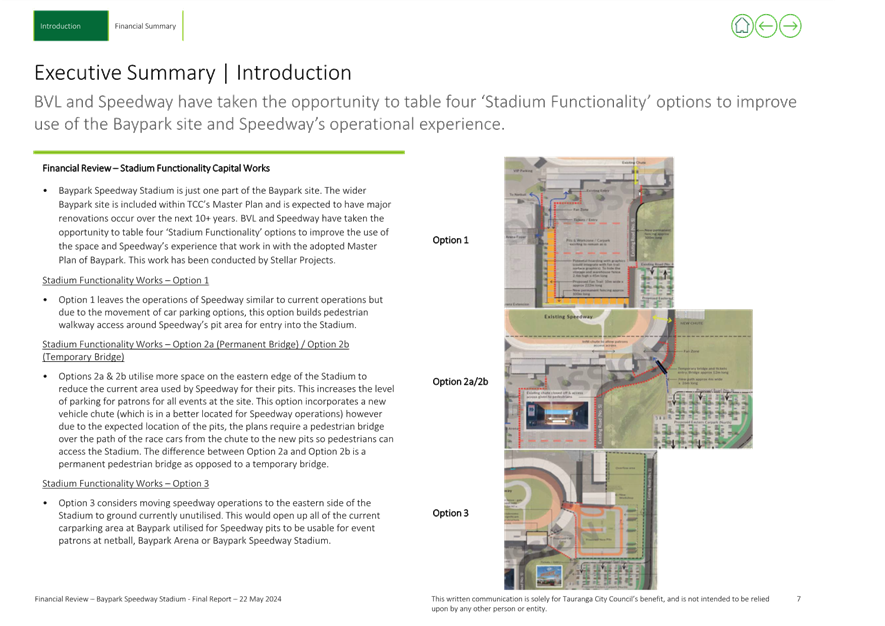
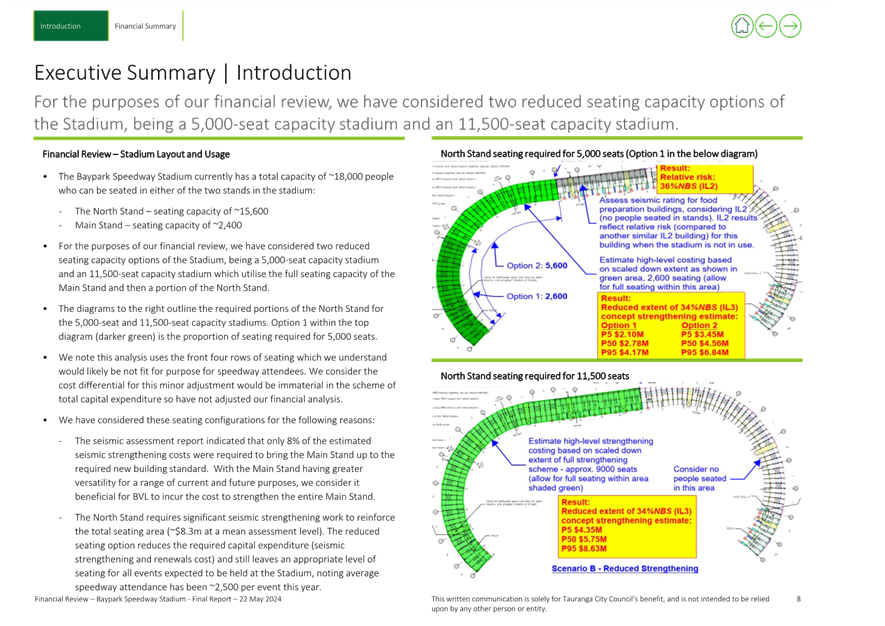
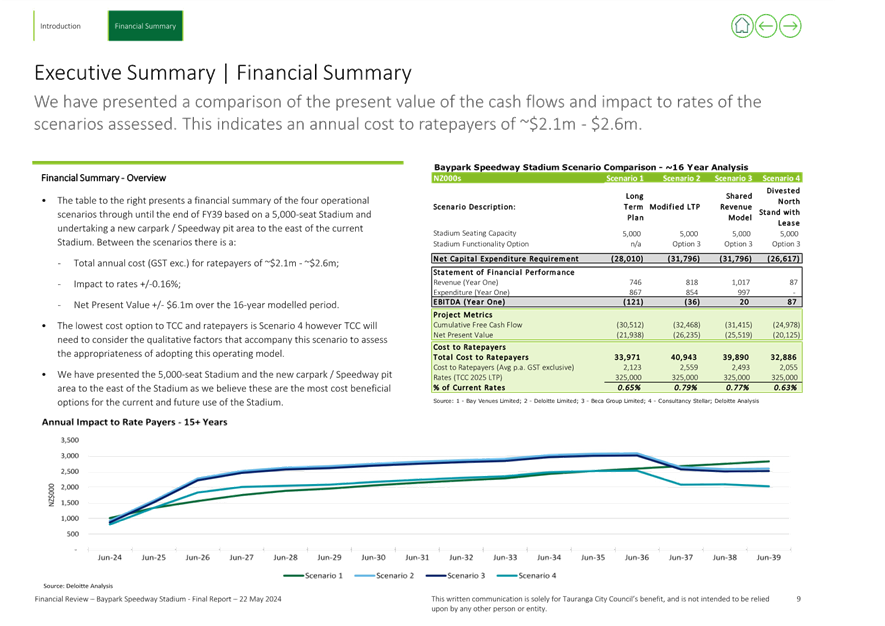
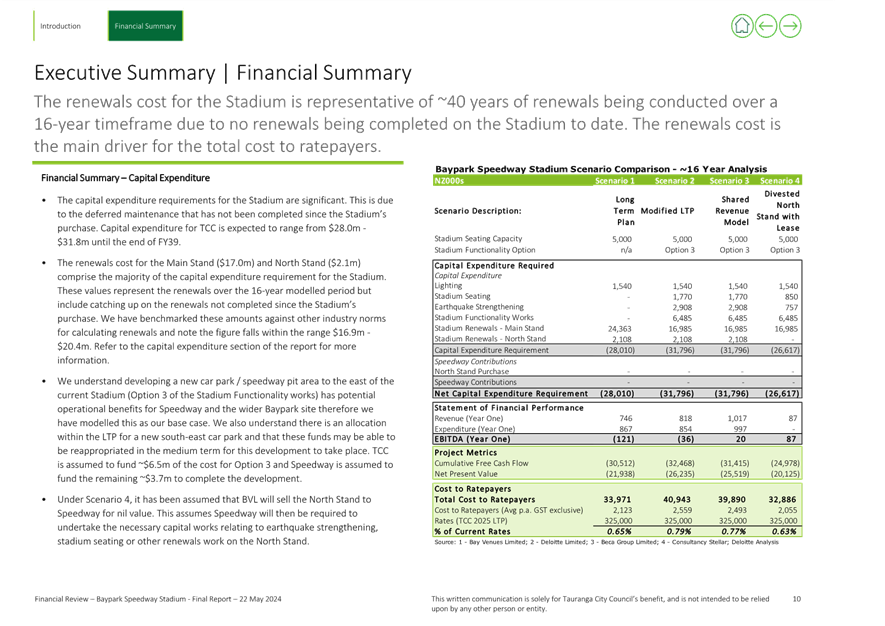
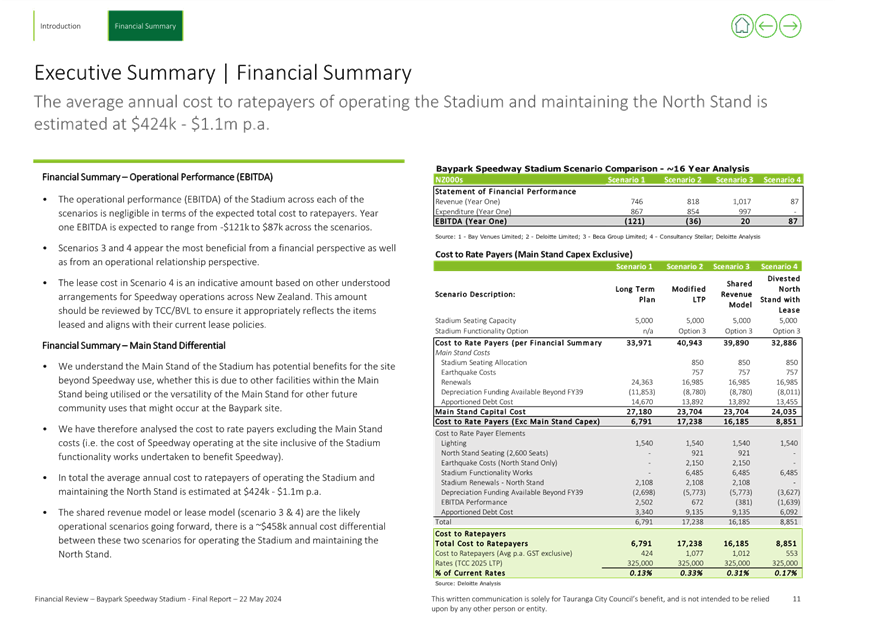
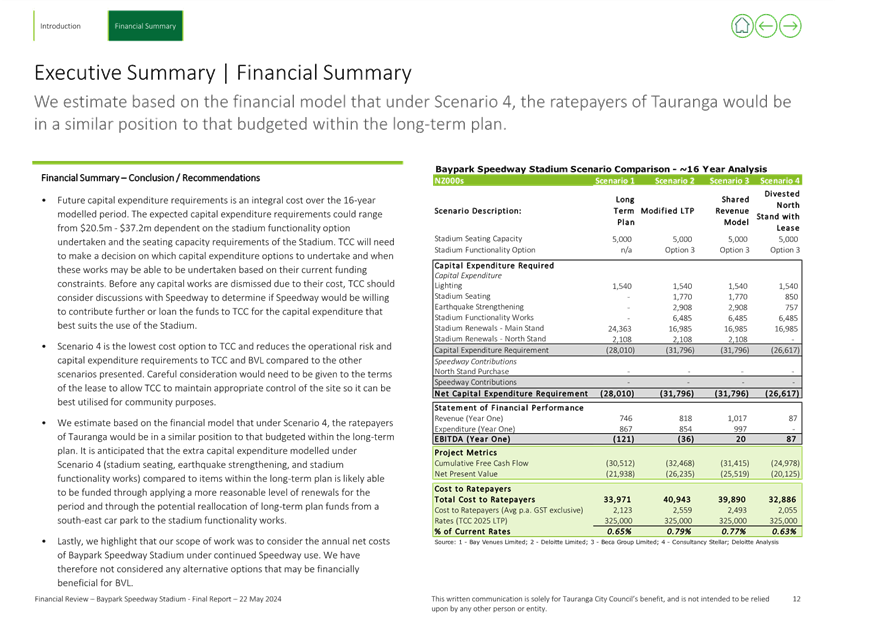

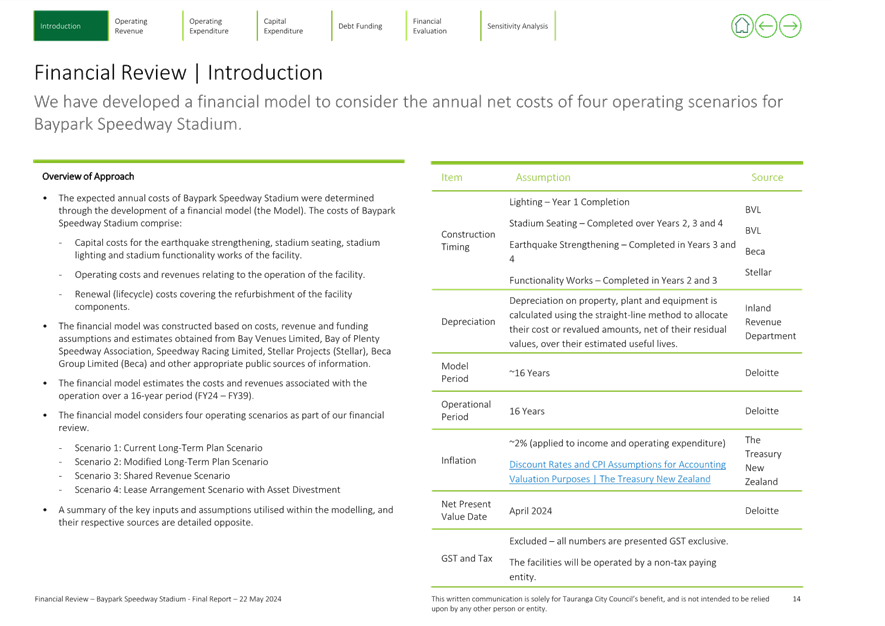
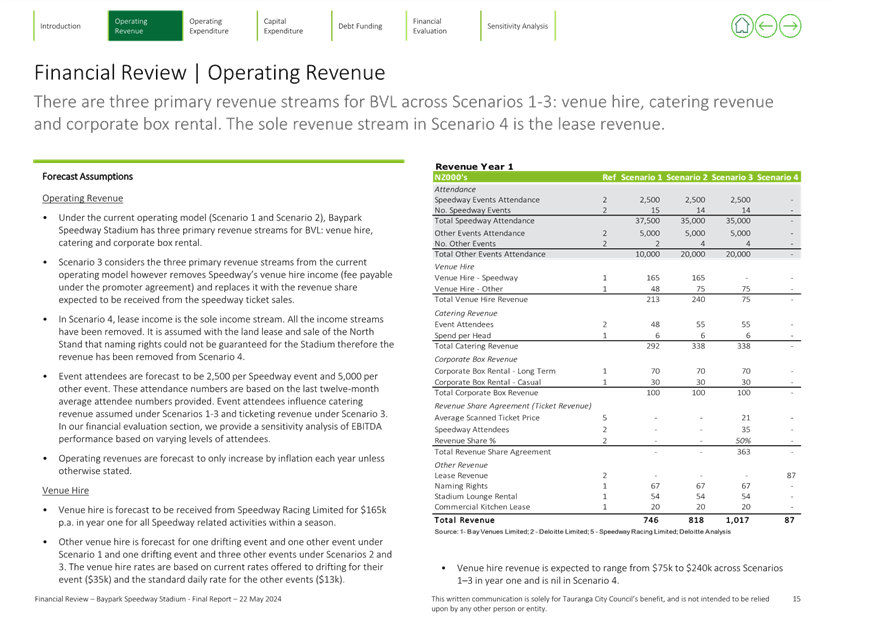

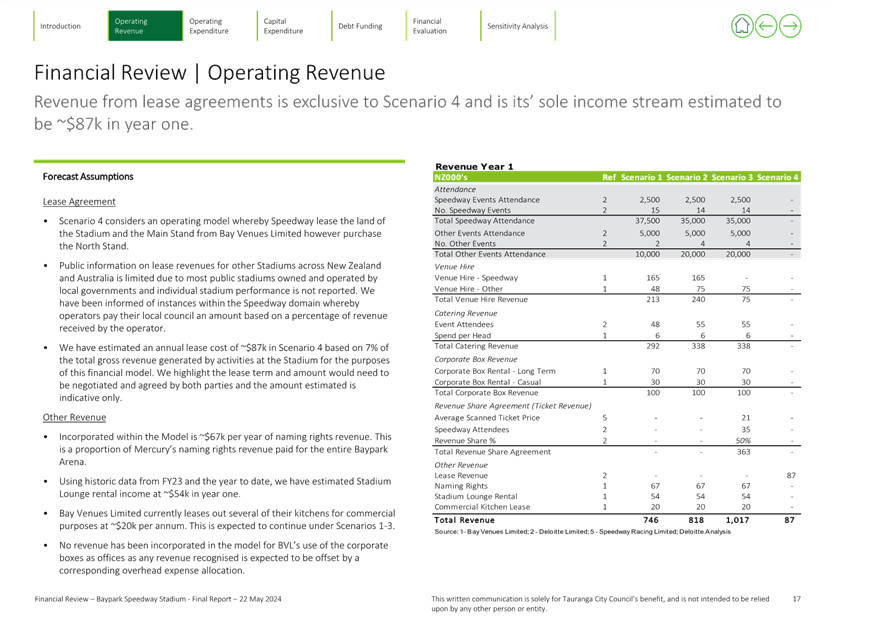
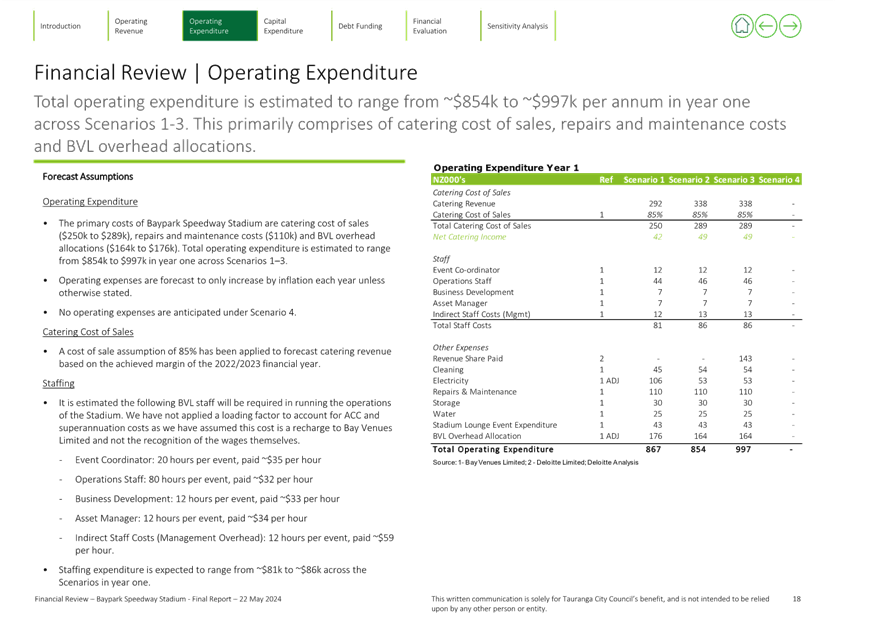
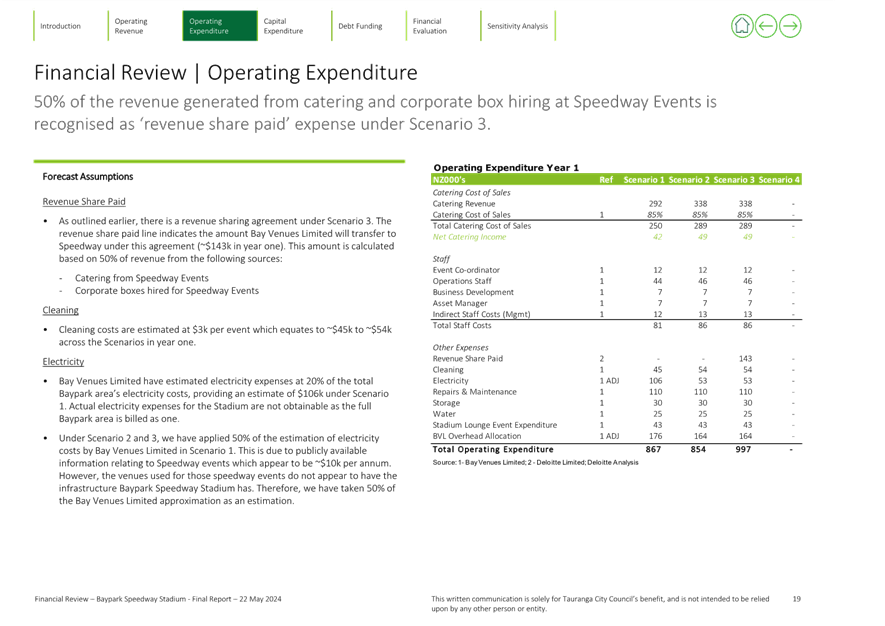
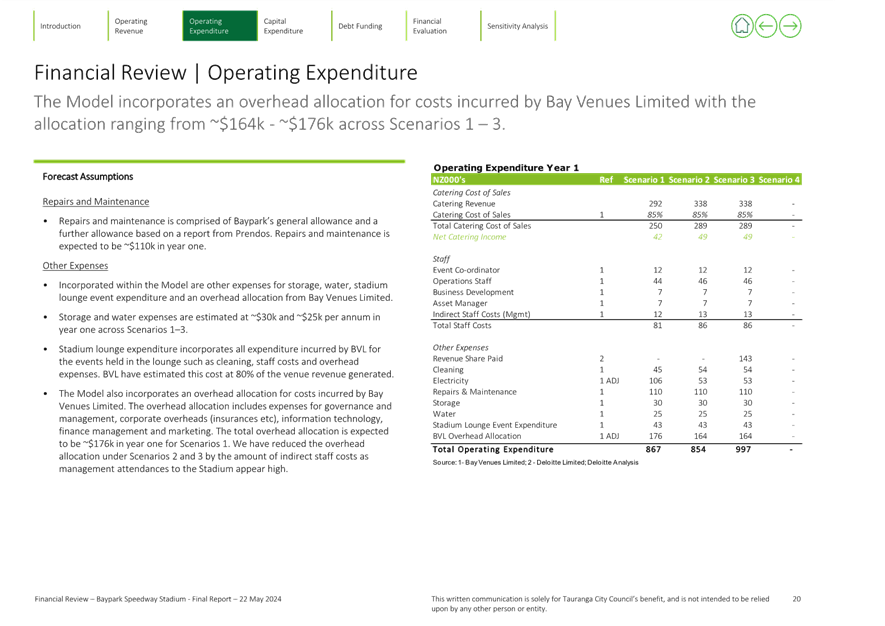
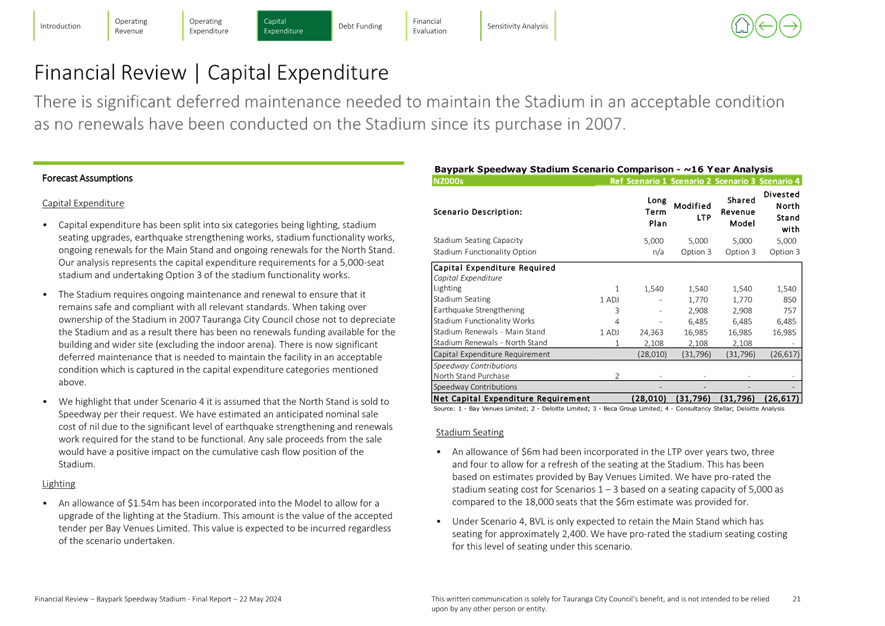
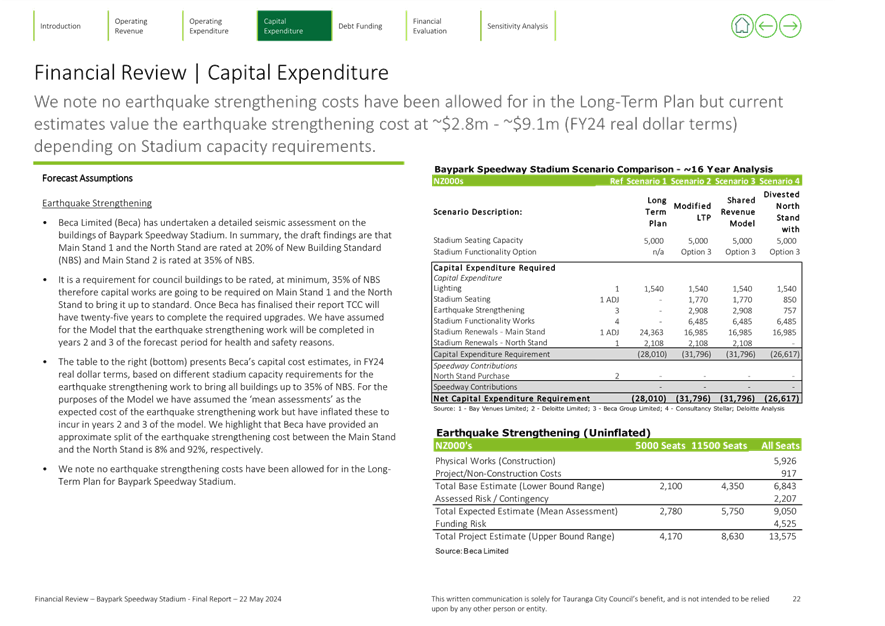
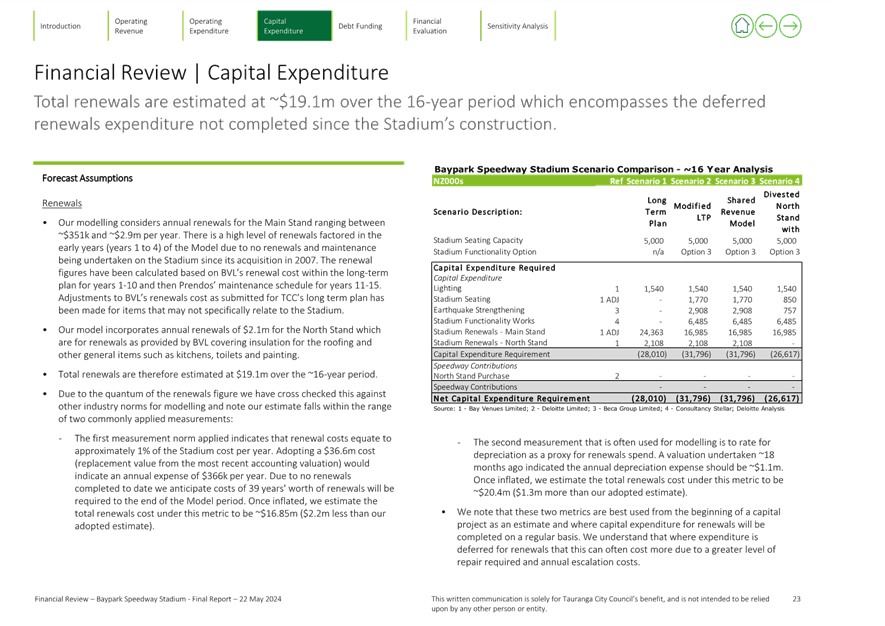
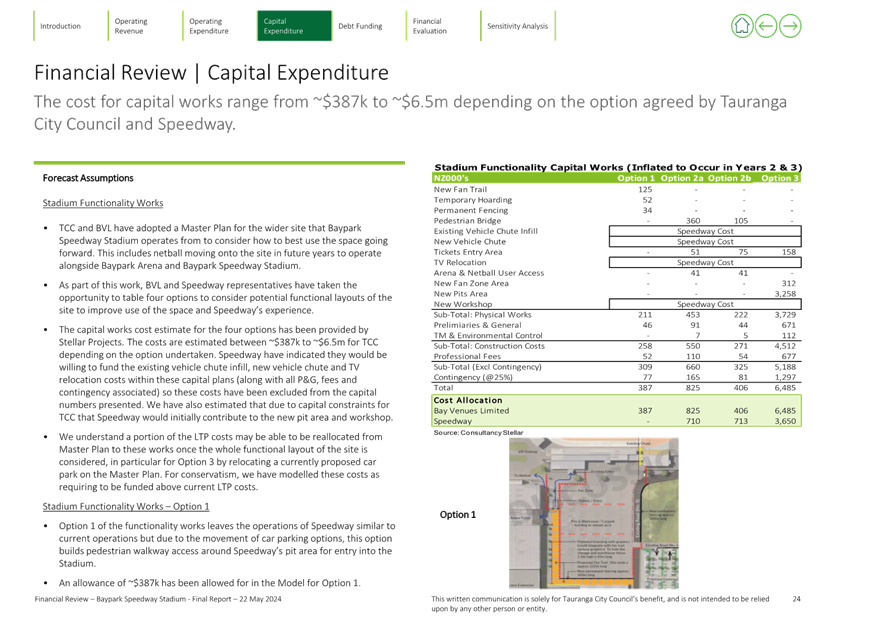
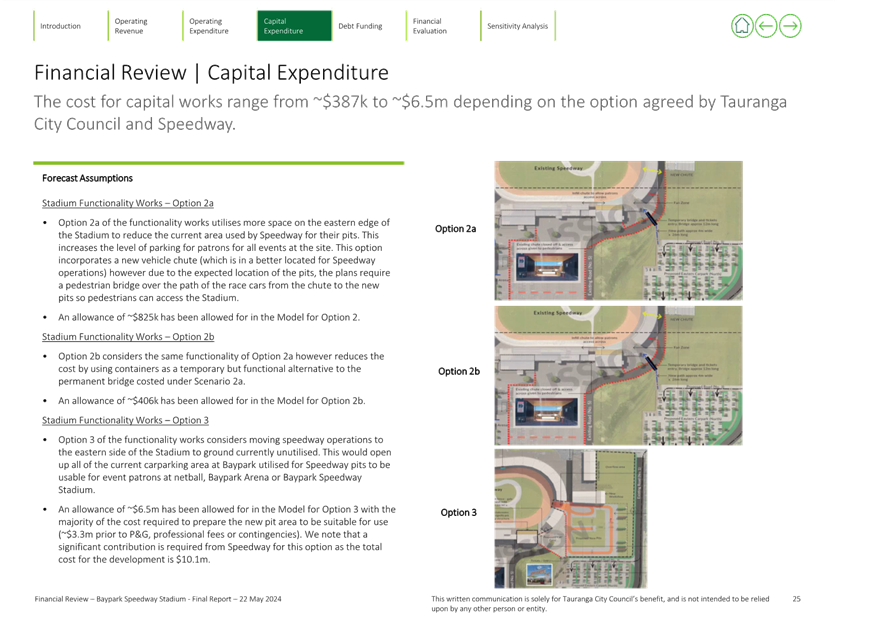
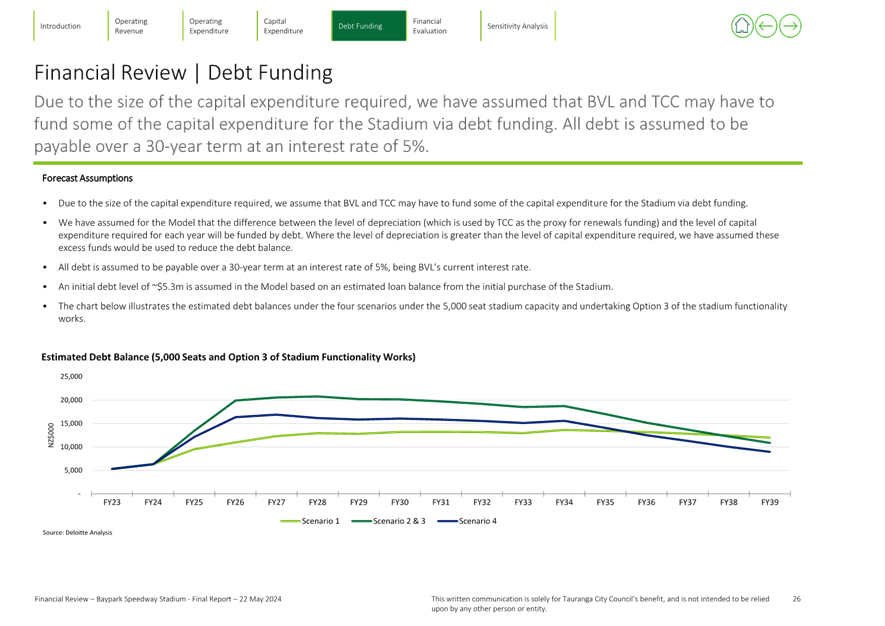

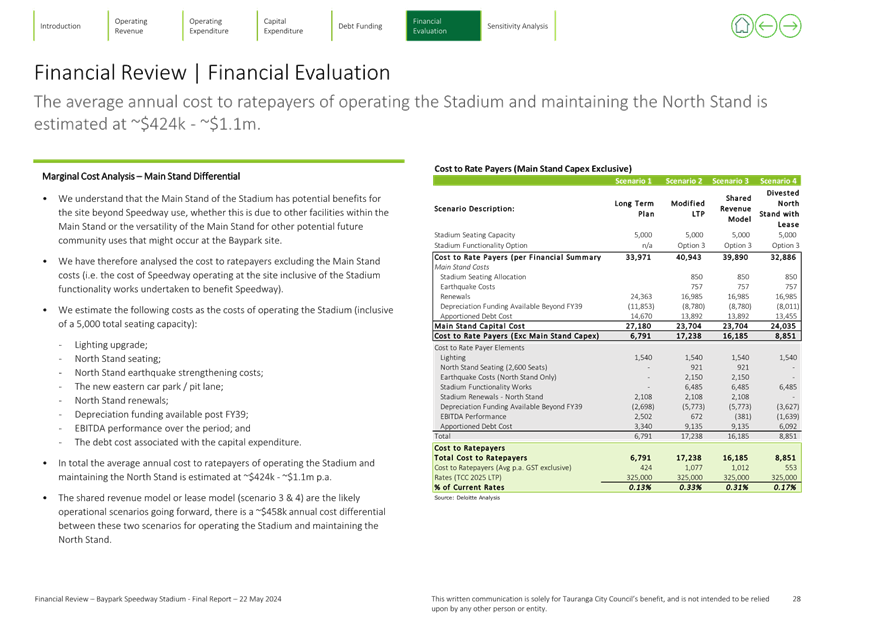
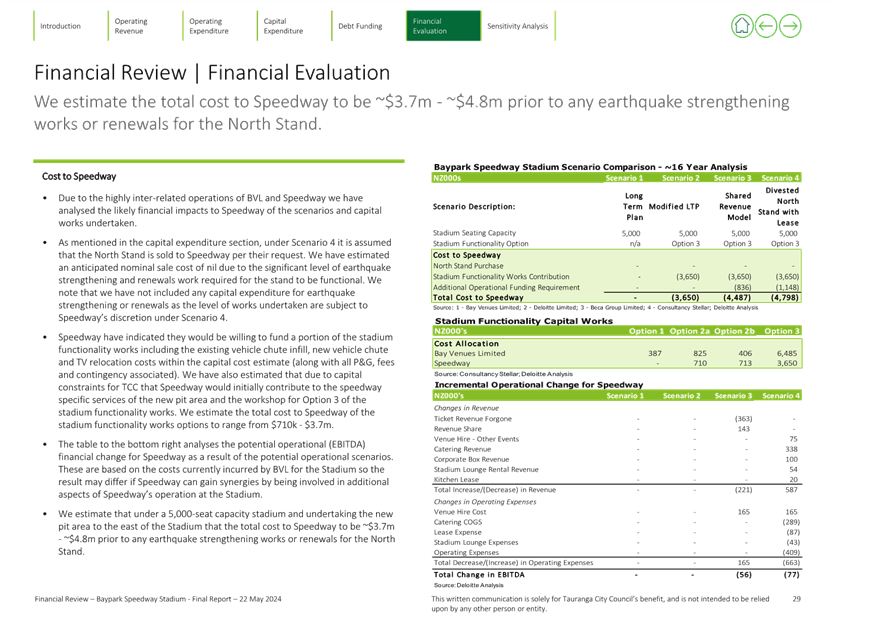
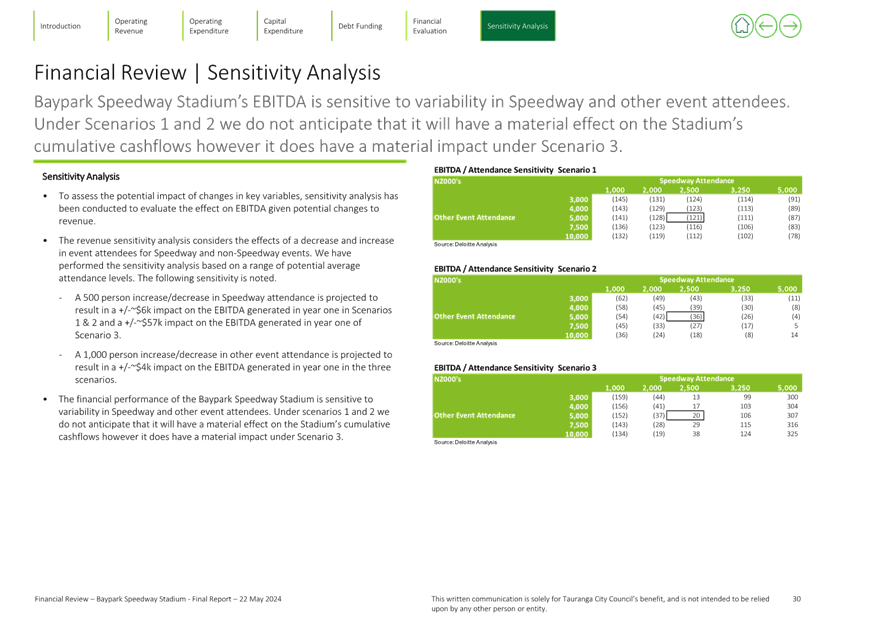
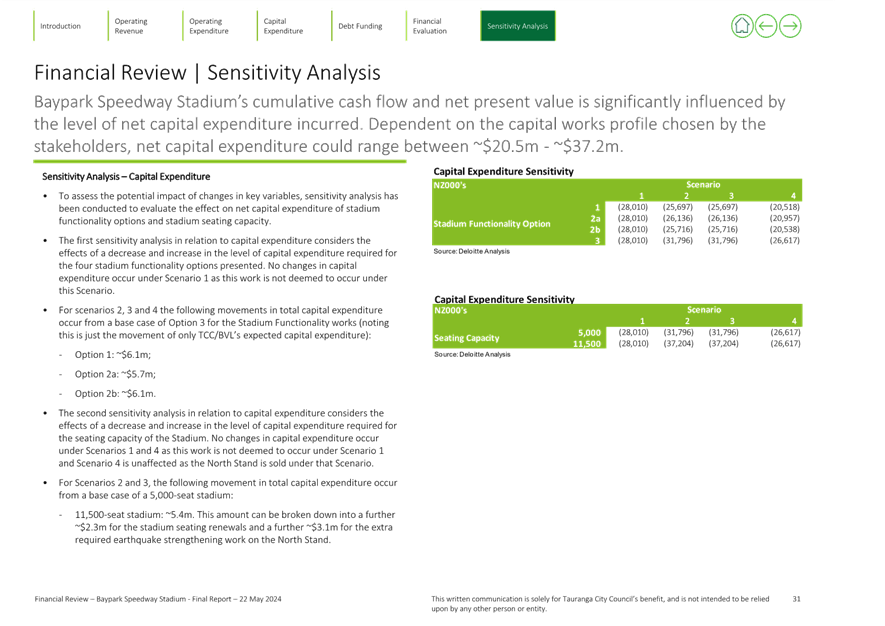

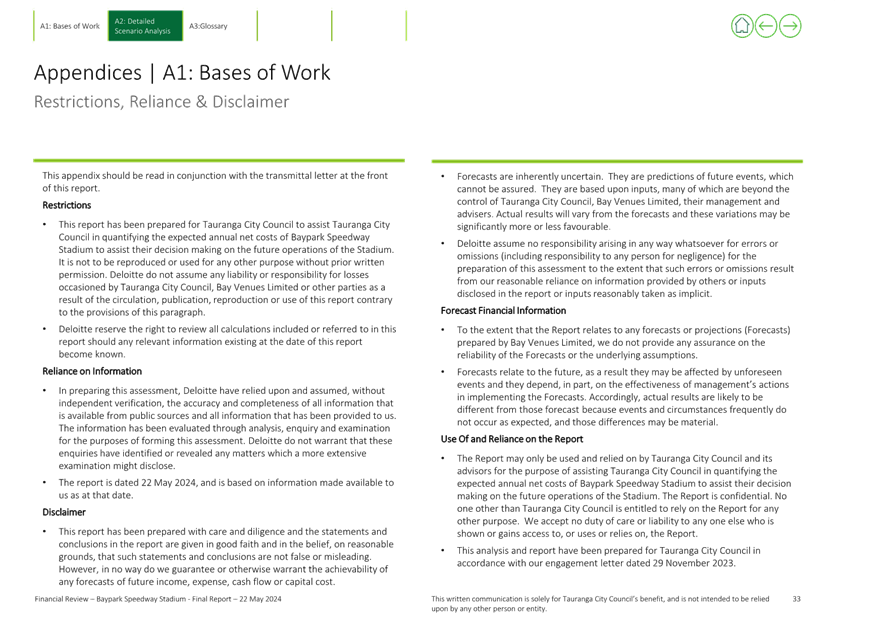
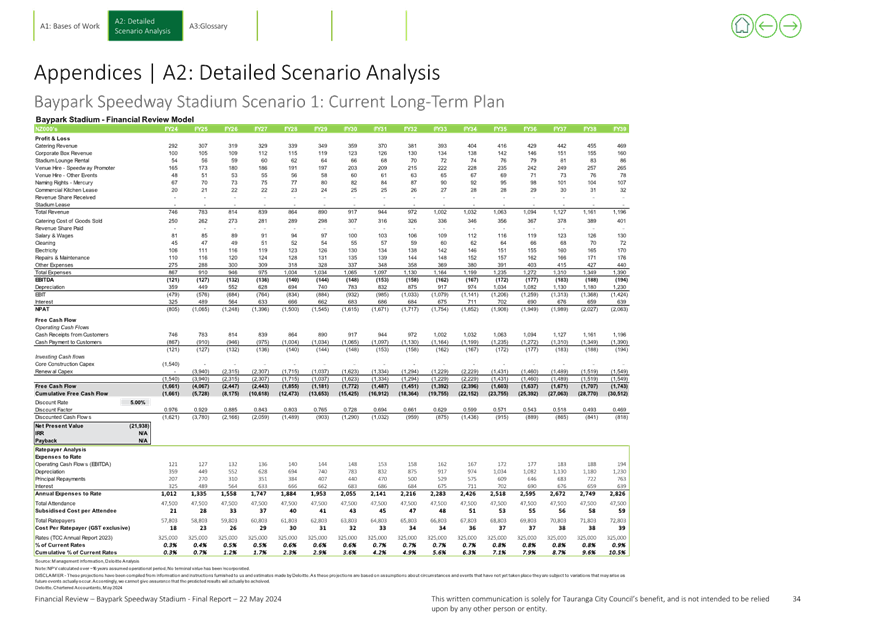
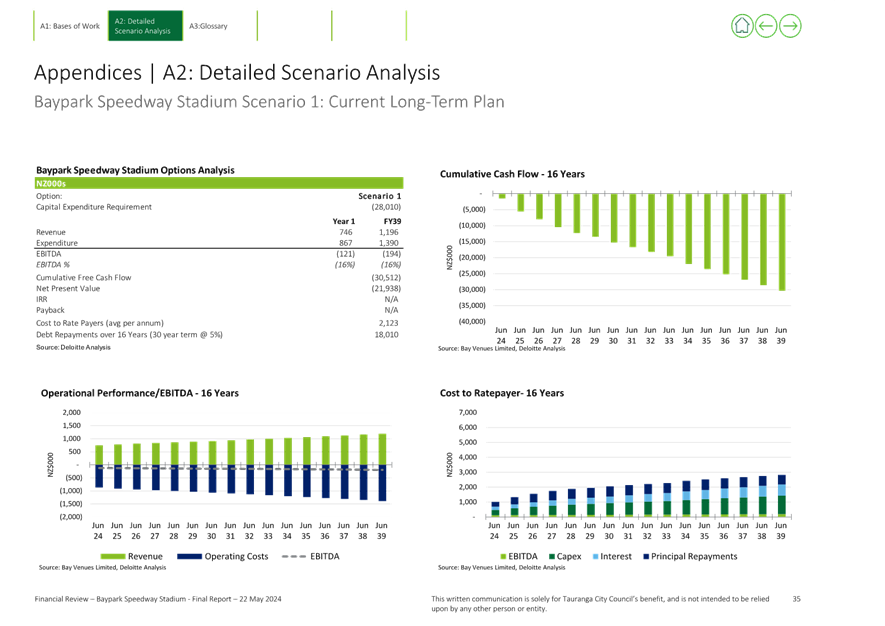
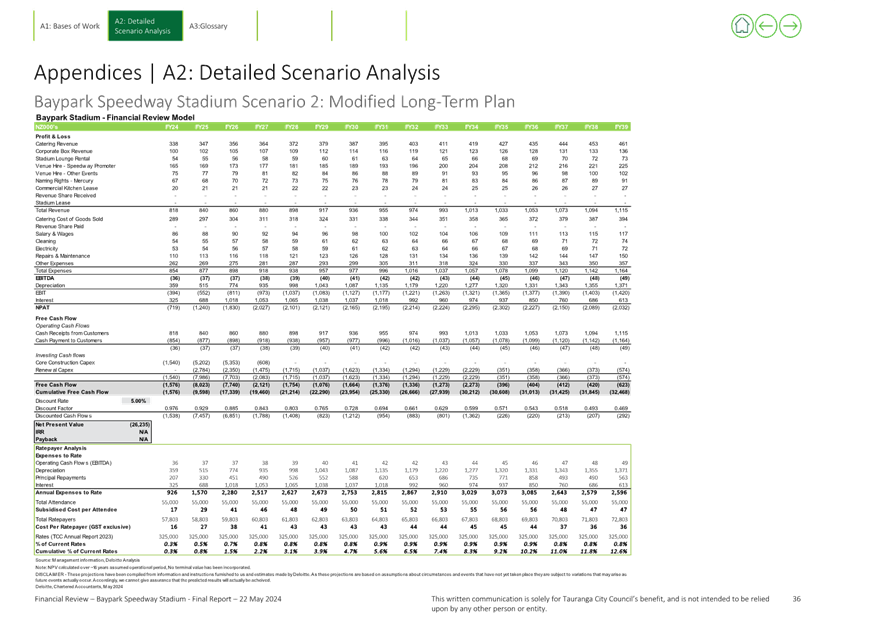
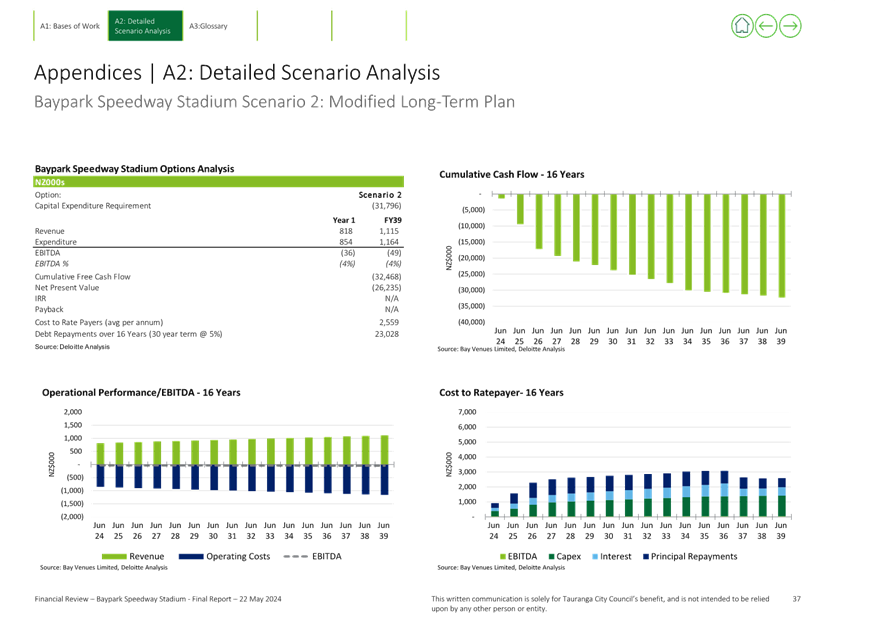
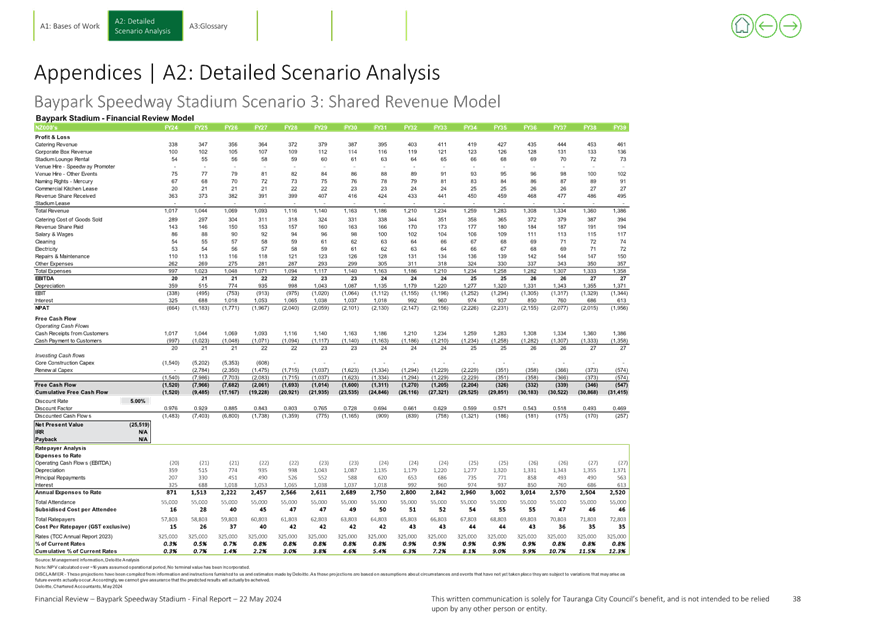
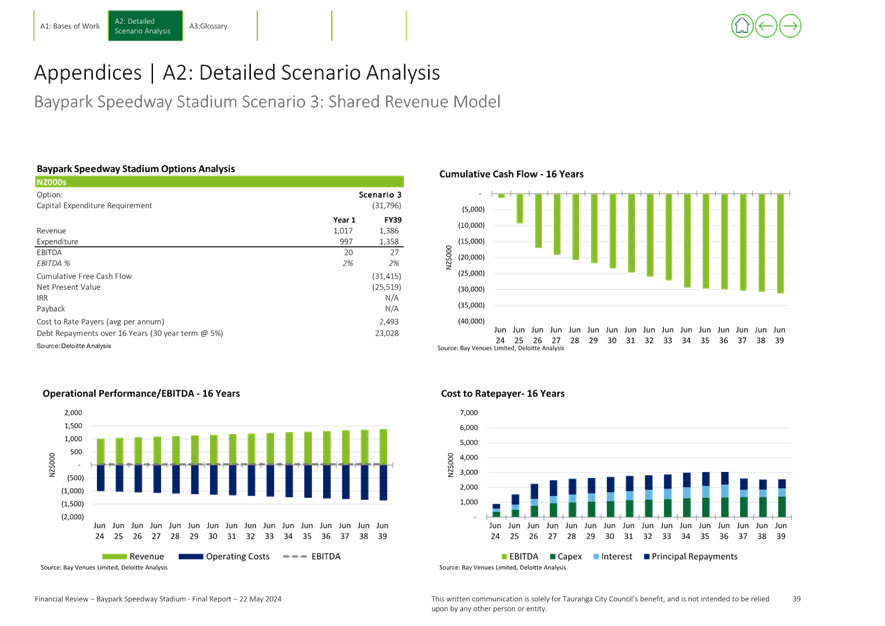
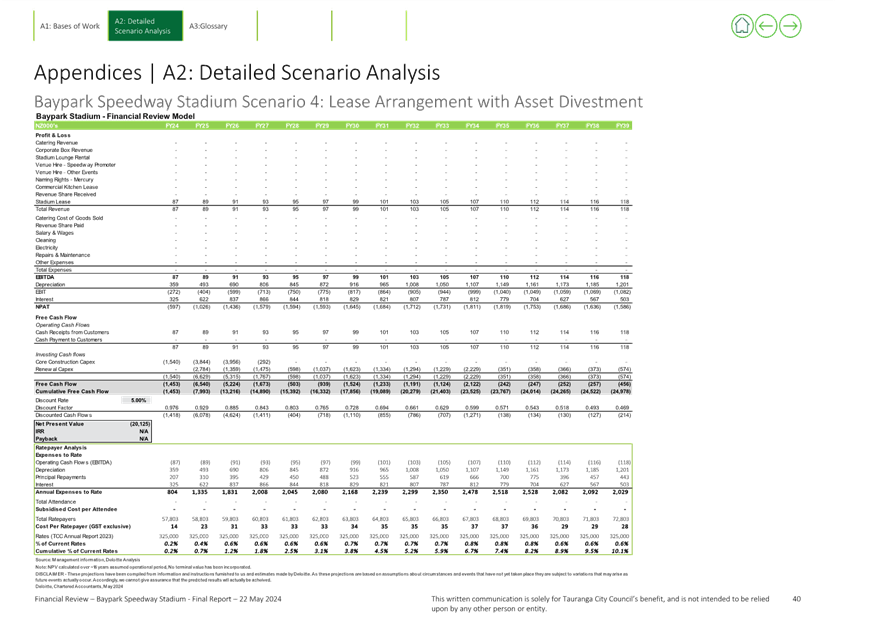
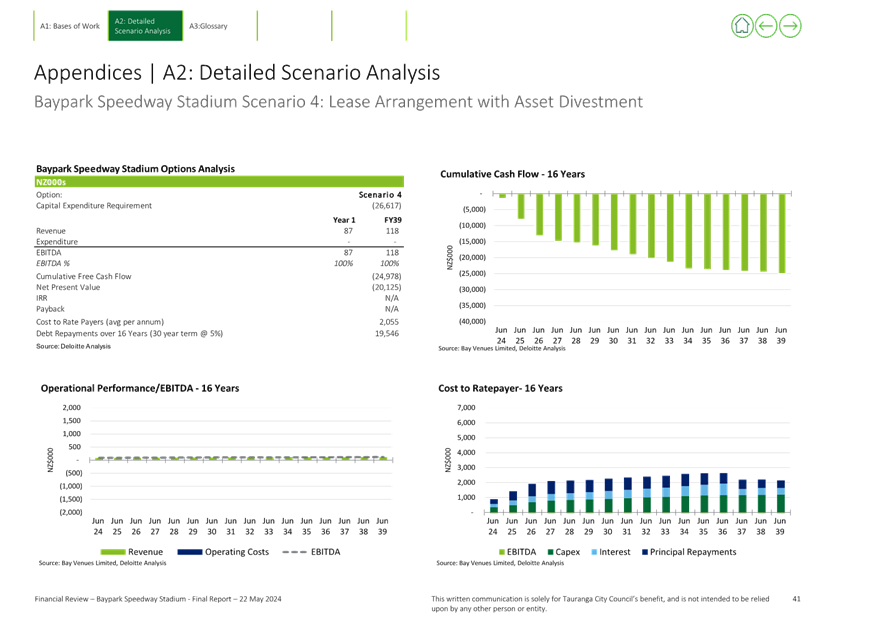
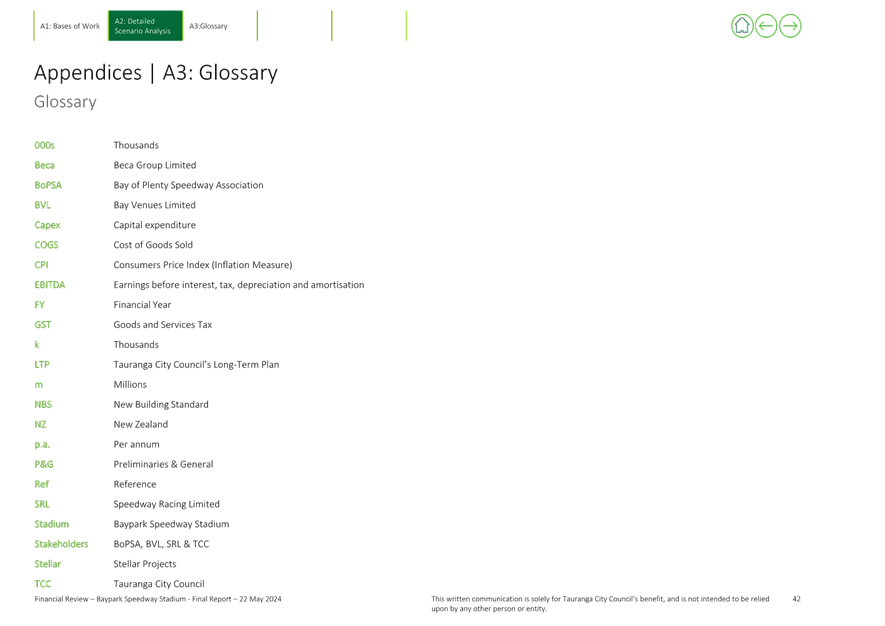

|
Ordinary
Council meeting Agenda
|
14
July 2025
|
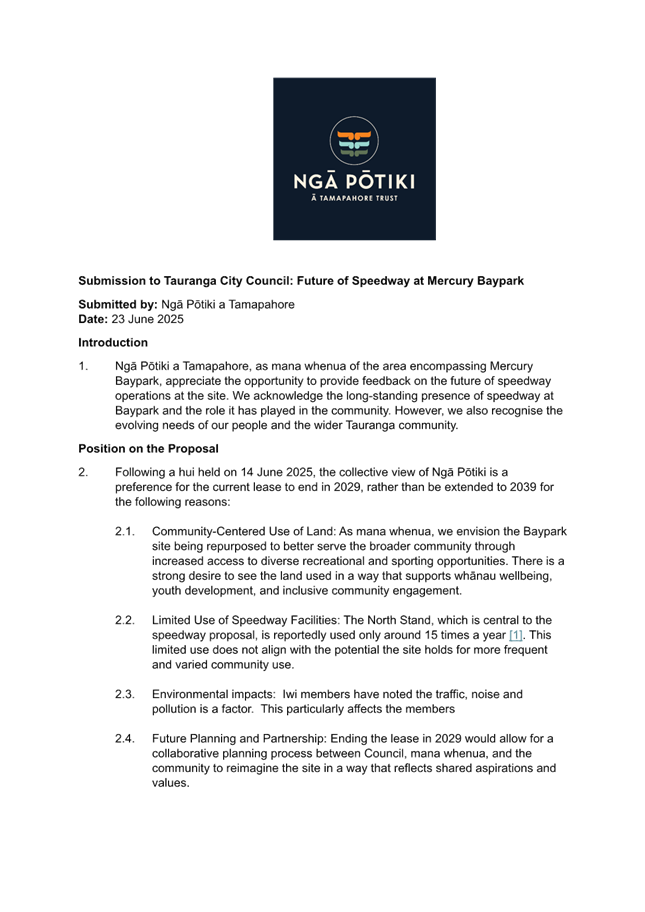

|
Ordinary
Council meeting Agenda
|
14
July 2025
|
11.3 City Centre Street
Project - Public Engagement
File
Number: A18148898
Author: Emily
McLean, Programme Lead: City Centre
Nick Chester,
Principal Strategic Advisor
Shawn Geard, City
Centre Infrastructure Lead
Authoriser: Gareth
Wallis, General Manager: City Development & Partnerships
Purpose of the Report
1. To brief the Council on
the City Centre Movement Framework and City Centre Streetscape Implementation
Plan.
2. To seek approval to
undertake community engagement on the City Centre Movement Framework and Draft
City Centre Streetscape Implementation Plan.
3. To
inform the Council of next steps to approve final plans on both projects by the
end of 2025.
|
Recommendations
That the Council:
(a) Receives the report
"City Centre Street Project - Public Engagement".
(b) Approves community engagement
on:
(i) the City Centre
Movement Framework, and
(ii) the Draft City Centre
Streetscape Implementation Plan.
(c) Notes
that final versions of both the City Centre Movement Plan and City Centre
Streetscape Implementation Plan will be presented to council for approval by
the end of 2025.
|
Executive Summary
4. Revitalisation of
the city centre is a key priority for Tauranga City Council. Significant
developments, both by the council and private developers are currently underway
to support the revitalisation of the city centre.
5. It is critical that
the city’s streets support these developments, and wider usage of the
city centre more generally. Well designed and functioning streets ensure
movement and public amenity usage is maximised.
6. Many of our current
city centre street assets are over 30 years old and close to end-of-life, at
times failing to provide for user safety and needs.
7. There are currently
two projects underway to ensure streets and movement in the city centre can
support this revitalisation. These are, the:
(a) City Centre Movement Framework;
and
(b) City Centre Streetscape
Implementation Plan.
8. The city centre
movement pilot was introduced to parts of Harington, Hamilton, Wharf, Spring
and Willow streets during March 2024, and is planned to remain in place for at
least two years as a pilot during the city centre transformation.
9. Funding was
allocated as part of the 2024-34 Long-term Plan for city centre streetscape
upgrades. A total of $80m was allocated over 10 years.
10. At a workshop on 3 April 2025,
initial feedback was provided to staff by the Council and city centre
stakeholders on potential next steps for both the City Centre Movement
Framework, and the City Centre Streetscape Implementation Plan.
11. A City Centre Movement
Framework and several options for streetscape improvements have been developed,
based on feedback received through the workshop. Approval is being sought to
undertake wider community engagement on the options that have been prepared.
12. Following engagement, final
decisions will be sought by Council before the end of 2025, to be ready for
implementation from 2026 onwards.
Background
13. Creating a vibrant and
well-planned city centre is a key objective sought by Tauranga City Council.
The next decade will be transformational for the city centre as there are
currently unprecedented levels of both public and private investment occurring.
14. Council adopted the City
Centre Action and Investment Plan in August 2022, which has a focus on a
city centre for people and accessibility as two of the strategic priorities.
15. Council has committed over
$400m of investment in the city centre on major projects (to date), including
the Civic Precinct redevelopment – Te Manawataki o Te Papa, ongoing
waterfront improvements, movement projects, and public realm upgrades. This is
coupled with a number of large-scale projects being undertaken by private
developers (e.g. 2 Devonport Rd, Northern Quarter, Panorama Towers etc.) and
other institutions such as the University of Waikato.
16. Ensuring that people can move
to and through the city centre safely and accessibly is central to the overall
success of this transformation. The City Centre Movement Framework and the City
Centre Streetscape Implementation Plan are therefore critical tools to enabling
this outcome.
Movement Framework
17. The City Centre Movement Pilot
was implemented March 2024 as a pilot under the Land Transport Rule: Street
Layouts 2023. This enables a road controlling authority to change road layouts
as a pilot for up to two years, enabling practical adjustments and enabling
future designs to consider the on-the-ground experience.
18. The Movement Pilot was a trial
to support elements of the Movement Framework, a key action of the City Centre
Action and Investment Plan 2022, to improve the effectiveness and ease of
traffic movement through the city centre. Anticipated benefits of the pilot
were:
(a) safer
streets by slowing down vehicles, reducing the number of intersections, and
improving visibility;
(b) more
space for wider footpaths, planter boxes, street art and other opportunities to
make the city centre more attractive and accessible; and
(c) fewer road closures for the
many building projects occurring in the city centre, because space can be
provided beside the street for construction activities when needed.
19. In December 2024, the City
Centre Movement Pilot was adjusted, reversing changes to Harington Street
between Willow Street and The Strand to accommodate two-way travel.
20. In early 2025, approximately
400 people directly affected by the Movement Pilot were contacted for feedback
resulting in 40 responses, with over 21 of these providing positive sentiment
to the changes, nine providing a mixed sentiment, and five providing a negative
response.
21. Two key components of the
Movement Framework not included within the current Movement Pilot, are making
The Strand and Grey St one-way. It is envisioned that this planned engagement
will enable further development of what these options could consist of, and
when a trial and their implementation would be appropriate.
22. A draft Movement Framework
overview is included in Attachment 1.
Streetscape Implementation Plan
23. Well-designed streetscapes are
essential to ensuring that people can move easily through both new and existing
buildings and spaces. Safe, accessible, and inviting streetscapes are of
benefit to a wide range of users and ensure the city centre can function both a
key business and hospitality space, but can also support events when there are
larger numbers of people using streets in a variety of ways.
24. Many streets in city centre are
30 years old and are coming to the end of their useful life. Some investment is
required to ensure they continue to meet the needs of users, in the same way
that streets in any part of the city would. Given the high use of city centre
streets, and the need to attract visitors into these spaces, in most cases, a
“do minimum” approach to repairing these streets is unlikely to
meet the needs and expectations of the community.
25. The upgrading of streetscapes
is important for creating real connections between existing and developing
parts of the city centre, and to fulfil council’s strategic outcomes.
26. Some streetscapes have been
upgraded recently, including Elizabeth Street East and Durham Street in the
Knowledge Precinct. These newly designed streetscapes have improved the
functionality of the streets but have been undertaken in isolation from the wider
city centre.
27. As new developments occur in
the city centre, there will be an increasing lack of integration between
buildings and the streets that surround them. Integrating streetscapes with new
developments is therefore a vitally important part of the plan.
28. The development of a City
Centre Streetscape Implementation Plan for further streetscape upgrades will
ensure that these spaces are improved to meet necessary safety and
accessibility requirements, but are also developed in a holistic way that
considers the needs of the city centre as a whole.
29. Funding of $80m was allocated
in the 2024-34 Long-term Plan to upgrade streetscapes in the city centre. The
Streetscape Implementation Plan is being developed with a “right spend,
right place, right time” approach to ensure this funding is spent
effectively, demonstrating clear value-for-money.
30. A workshop with councillors and
community representatives was held on 3 April 2025 to explore initial thinking
on both streetscape upgrades and the City Centre Movement Framework.
31. A Draft City Centre Streetscape
Implementation Plan has been developed, with this vision:
Empowering change in our city centre through timely,
targeted investment – enhancing streetscapes that are safe, vibrant,
connected, and sustainable, so every dollar delivers the right impact, in the
right place, at the right time.
32. The draft plan has been
developed aiming to fix several key issues:
(a) Many
of our streets don’t meet the needs of today’s or tomorrow’s
users – this includes basic pedestrian safety and accessibility needs.
(b) There’s
no clear, unified plan – designs often don’t match up with other
city developments.
(c) The streets need to reflect the
needs and aspirations of the wide variety of people who will use them.
33. The draft plan has also been
developed using the following investment objectives:
(a) Streetscapes
encourage more people to spend productive time in the city centre.
(b) Streetscapes support
the development of a city centre that is a central place for people to live,
work, learn and play.
(c) Current streetscapes
are improved to deliver a future-focused, multi-modal city centre.
(d) The
plan is cohesive, connected and cost-effective, ensuring that streetscapes are
improved to deliver a bold, enticing, and vibrant city centre.
34. The Draft City Centre
Streetscape Implementation Plan has been developed based on analysis undertaken
by staff and feedback provided at the 3 April 2025 workshop. The current
recommended option aims to strike a balance between required streetscape upgrades,
whilst also limiting costs and providing clear value-for-money.
35. Following community engagement,
the proposed option will be analysed, adjusted and tested prior to a final
approval by the council by December 2025.
36. A Draft Streetscape
Implementation Plan overview is included in Attachment 2.
Community engagement on next steps
37. Following the 3 April 2025
workshop, staff undertook to:
(a) develop
a final Movement Framework that could be consulted on and implemented to
provide community certainty.
(b) develop a Draft City Centre
Streetscape Implementation Plan that could be consulted on and approved by the
end of 2025, ahead of implementation in 2026.
38. Staff recommend that community
engagement is now undertaken on these two projects. The purpose of this
engagement is to ensure community insights and perspectives are considered in
order to finalise plans and move into a delivery phase.
39. Engagement is specifically
focused on the Movement Framework and Draft City Centre Streetscape
Implementation Plan. Following the formal adoption of these pieces of work,
further engagement will be undertaken as detailed planning and delivery on
individual streets and spaces is delivered over the coming years.
40. It is proposed that engagement
will take place in August and September, followed by analysis of feedback and
reporting back to Council in October 2025. Several engagement and communication
tactics will be utilised, including surveys, face-to-face meetings, street
intercepts, and event engagement.
41. A draft engagement overview is
included in Attachment 3.
Statutory Context
42. The Movement Pilot is
implemented under the Land Transport Rule: Street Layouts 2023. This enables
changes to occur as lessons are learnt, prior to the more standard permanent
statutory process.
STRATEGIC ALIGNMENT
43. This contributes to the
promotion or achievement of the following strategic community outcome(s):
|
Contributes
|
|
We are an inclusive city
|
ü
|
|
We value, protect and enhance the environment
|
ü
|
|
We are a well-planned city
|
ü
|
|
We can move around our city easily
|
ü
|
|
We are a city that supports business and education
|
ü
|
44. The
Movement Framework and Draft City Centre Streetscape Implementation Plan have
broad alignment with TCC’s community outcomes and strategic priorities.
This is particularly evident through the following outcomes:
(a) We are an inclusive city
– streetscape improvements and completed movement frameworks make the
city more inclusive and accessible to all. Barriers will be removed as a result
of on-street improvements, improving the accessibility and safety of the city
centre as a result.
(b) We can move around our city
easily – the completed Movement Framework will provide certainty and
allow people to plan trips in and around the city centre accordingly with
certainty. It also provides greater clarity to city centre businesses and will
reduce disruptions in the medium- to long-term.
Options Analysis
45. Staff have determined there are
three potential options, which are analysed below.
46. Option
1 – Undertake community engagement with a view to approving final the
Movement Framework and Streetscape Implementation Plan by the end of 2025 (recommended).
|
Advantages
|
Disadvantages and risks
|
|
· There
is a high level of interest in the development of the city centre –
community engagement ensures there is public input prior to
making any final decisions.
· Helps to ensure
that the project will meet actual community needs.
· Provides an
opportunity for community to raise issues and concerns prior to any
significant work being undertaken.
· Provides an
opportunity to include a diverse range of views and create more inclusive
spaces as a result.
|
Disadvantages:
· Engagement has
an associated cost (however this is within budget).
· A large amount
of community engagement on city centre issues has already been undertaken and
further engagement may lead to fatigue, disengagement, or apathy.
· Undertaking
engagement will add time to the project overall.
Risks:
· May not provide
a clear consensus for approving final plans.
· Engagement
may create unrealistic expectations of what can be achieved within existing
budgets.
|
47. Option
2 – Complete both plans without further engagement (i.e. go straight
to approving a final document) (not recommended).
|
Advantages
|
Disadvantages and risks
|
|
· Faster decision
making and implementation.
· No associated
engagement costs.
· No
associated engagement fatigue – significant engagement on city centre
projects has already provided relevant feedback.
|
Disadvantages:
· Misses
an opportunity for public input which may identify further risks and
opportunities.
· Those
directly impacted may feel excluded, reducing support and increasing
complaints or resistance post-implementation.
· Opportunities
to improve functionality or accessibility based on direct feedback might be
lost.
Risks:
· Reputational
risk of not fully engaging on the projects.
· Lack
of feedback on practical details (e.g. parking, pedestrian routes etc.) could
lead to design flaws or unintended consequences.
|
48. Option
3 – End Movement Pilot, undertake critical/necessary street upgrades
in the city centre only (effective status quo with minor upgrades for safety
purposes) (not recommended).
|
Advantages
|
Disadvantages and risks
|
|
· Minimal disruption
in city centre.
· Can
achieve some cost savings, both from no engagement and also larger
streetscape work.
|
Disadvantages:
· Missed
opportunity for improvements – basic streetscape designs are unlikely
to be inviting to visitors and will meet only the basic accessibility and
safety criteria.
· There
is a public expectation that vehicle movement and city streetscapes will
compliment ongoing developments. Without further work, there will be a
mismatch between developments and the streets that surround them.
· Minimal
quality streetscapes can reduce foot traffic and negatively affect local
businesses.
· Opportunities
to improve functionality or accessibility based on direct feedback might be
lost.
Risks:
· Potential safety
and accessibility concerns with basic upgrades only.
· Many
streets are at the end of their useful life and will require upgrades –
undertaking work without any tangible benefits is likely to lead to community
dissatisfaction.
|
Financial Considerations
49. The Movement Framework and
Streetscape Implementation Plan are both funded activities as part of the
2024-34 Long-term Plan.
50. Project costs noted in the
Draft Streetscape Implementation Plan are indicative of a variety of potential
investment packages. Once engagement is undertaken, a final investment case
will be developed, including more detailed costing.
51. It is envisioned that the
results of this investment case, including more detailed costings, will help
inform decisions within the 2027-37 Long-term Plan.
TE AO MĀORI APPROACH
52. The Te Papa peninsula, and the
city centre is a culturally significant site and Tauranga City Council is
committed to working in partnership with Tangata Whenua on projects in the
area.
53. The Movement Framework and
Streetscape Implementation Plan align with the Te Ao Māori approach,
particularly relating to the following principles:
(a) Rangatiratanga – Mana
motuhake – self-determination, Tikanga – best practise,
Tāuutuutu – reciprocity – council has worked closely with
tangata whenua on all projects in the city centre, given the cultural
significance of the area. This will continue as the plan is developed and
implemented.
(b) Te Reo Māori –
Active commitment to protect and promote this taonga, the Māori language,
for future generations of all New Zealanders – streetscape upgrades
provide opportunities for increased storytelling, wayfinding, and public art.
Given the historical and cultural significance of the city centre to tangata
whenua, ensuring a strong voice as part of this work will be critical to
success.
54. Specific engagement will be
undertaken with mana whenua as part of this project. Specific engagement will
also occur as individual street upgrades are undertaken in the future.
CLIMATE IMPACT
55. The Movement Framework and City
Centre Streetscape Implementation Plan contribute to all three climate impact
areas in the following ways:
(a) Adapting
to a changing climate – streetscape upgrades can offset the impacts of
urban heat islands through the introduction of more canopy cover and other
measures. This will be a consideration in areas where possible.
(b) Reduce
emissions – both the Movement Framework and Streetscape Implementation
Plan can encourage people to use public transport and active forms of
transport, thereby helping to reduce emissions in Tauranga. A reliable Movement
Framework and safer, more accessible streetscapes will naturally encourage
people to seek alternative transport options.
(c) Embrace nature and biodiversity
– streetscape upgrades provide a unique opportunity to introduce a range
of vegetation into the city centre where appropriate. This can have the effect
of increasing biodiversity.
Consultation / Engagement
56. Community engagement has
already occurred on both projects. This has been particularly evident for the
Movement Framework, where community engagement has been coupled with targeted
engagement with affected city centre businesses. It is understood that with
topics such as outlined in this report, community engagement needs to take a
continuous approach.
Significance
57. The Local Government Act 2002
requires an assessment of the significance of matters, issues, proposals and
decisions in this report against Council’s Significance and Engagement
Policy. Council acknowledges that in some instances a matter, issue, proposal
or decision may have a high degree of importance to individuals, groups, or
agencies affected by the report.
58. In making this assessment,
consideration has been given to the likely impact, and likely consequences for:
(a) the current
and future social, economic, environmental, or cultural well-being of the
district or region;
(b) any persons who are likely to be
particularly affected by, or interested in, the decision; and
(c) the capacity of the local authority
to perform its role, and the financial and other costs of doing so.
59. In accordance with the
considerations above, criteria and thresholds in the policy, it is considered
that the decision is of medium significance.
ENGAGEMENT
60. Taking into consideration the
above assessment, that the decision is of medium significance, engagement is
recommended as outlined in the report.
Next Steps
61. Undertake community engagement
on the Movement Framework, and Draft City Centre Streetscape Implementation
Plan.
62. The Movement Framework and City
Centre Streetscape Implementation Plan will be presented to the council for
approval by December 2025.
Attachments
1. Attachment
1_Movement Framework - A18452895 ⇩ 
2. Attachment
2_Streetscapes Implementation - A18452897 ⇩ 
3. Attachment
3_Community Engagement Summarised Approach - A18452896 ⇩ 
|
Ordinary
Council meeting Agenda
|
14
July 2025
|
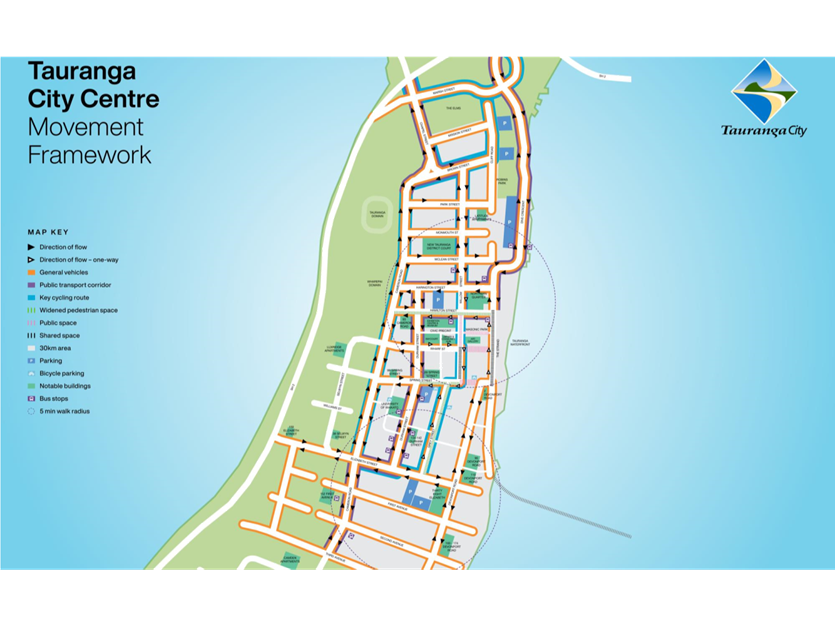
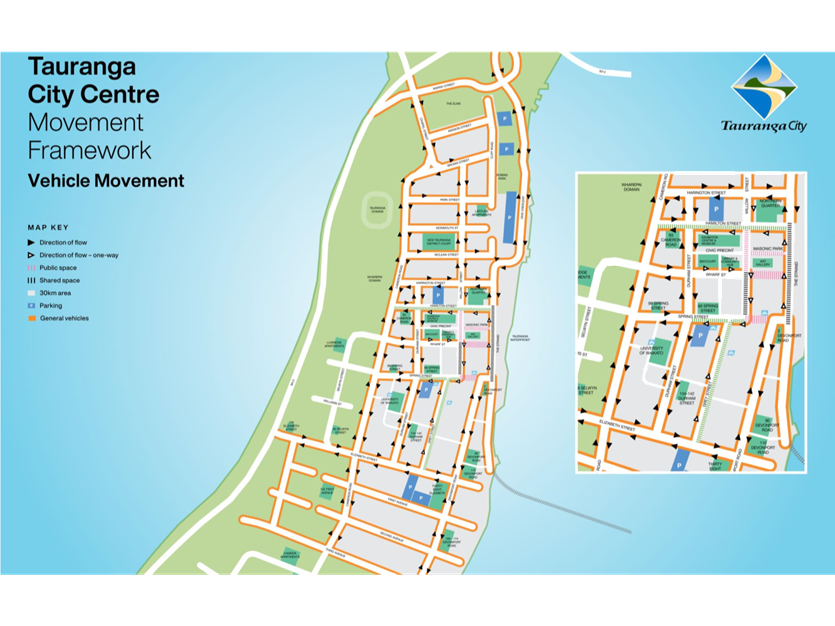
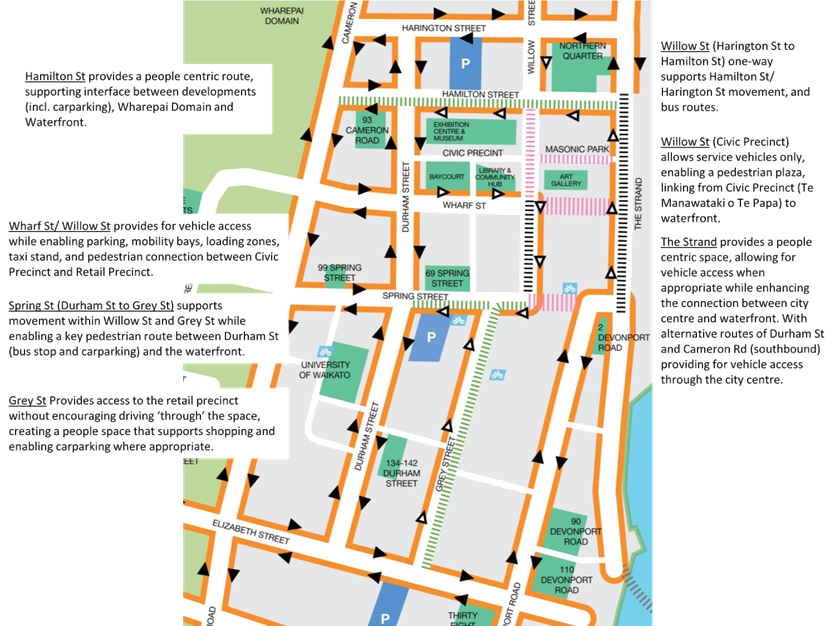
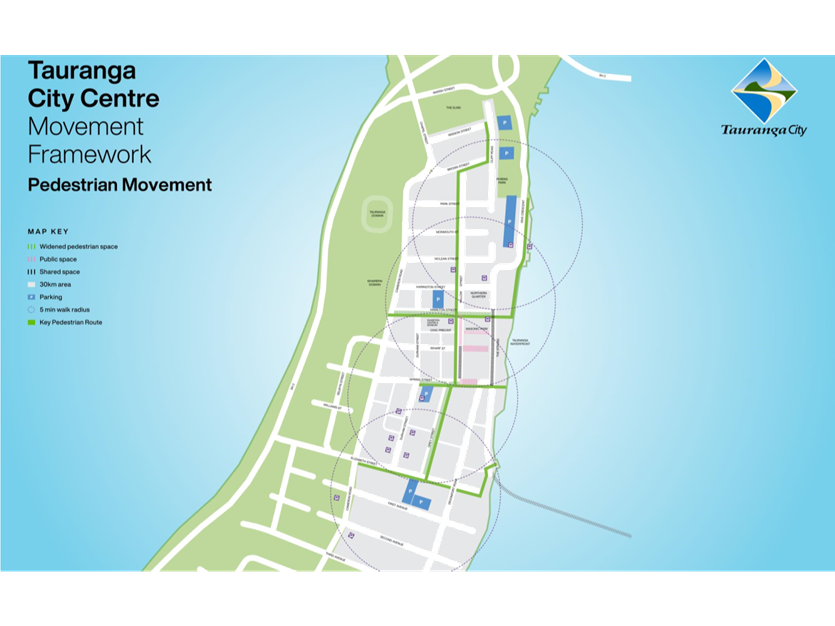
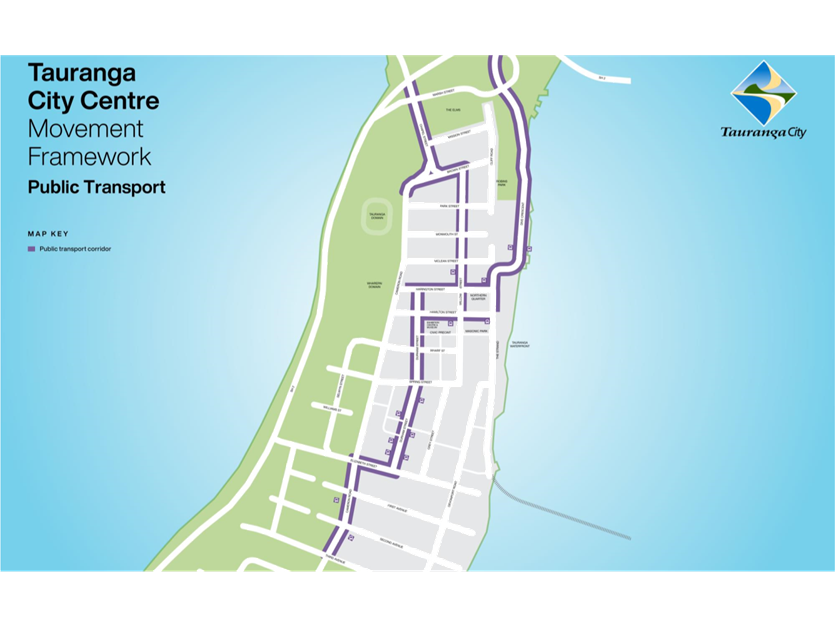
|
Ordinary
Council meeting Agenda
|
14
July 2025
|
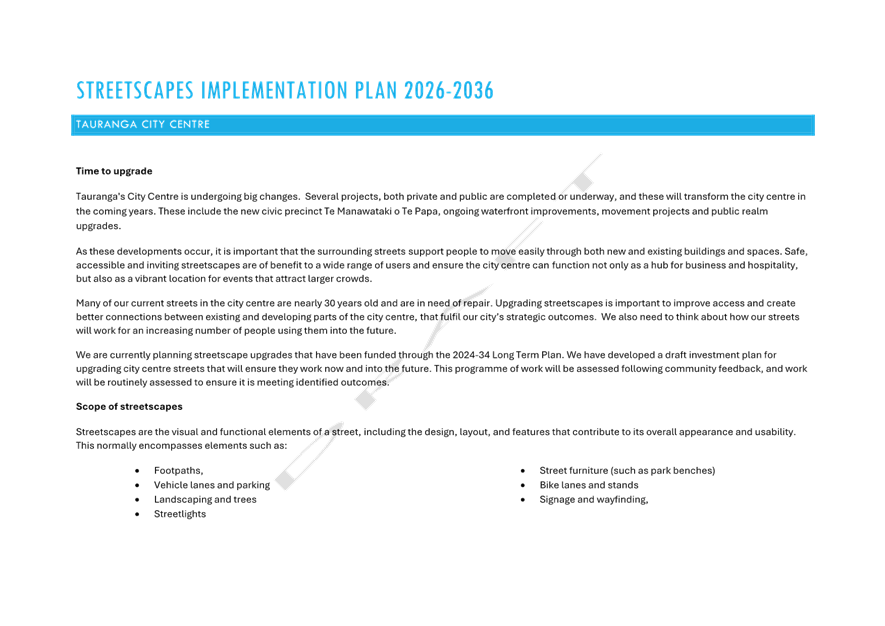
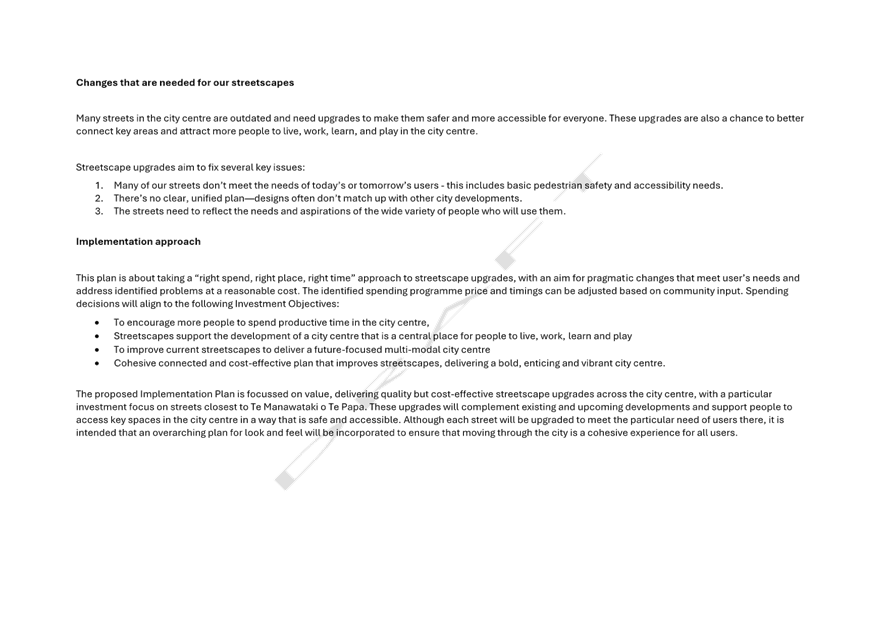
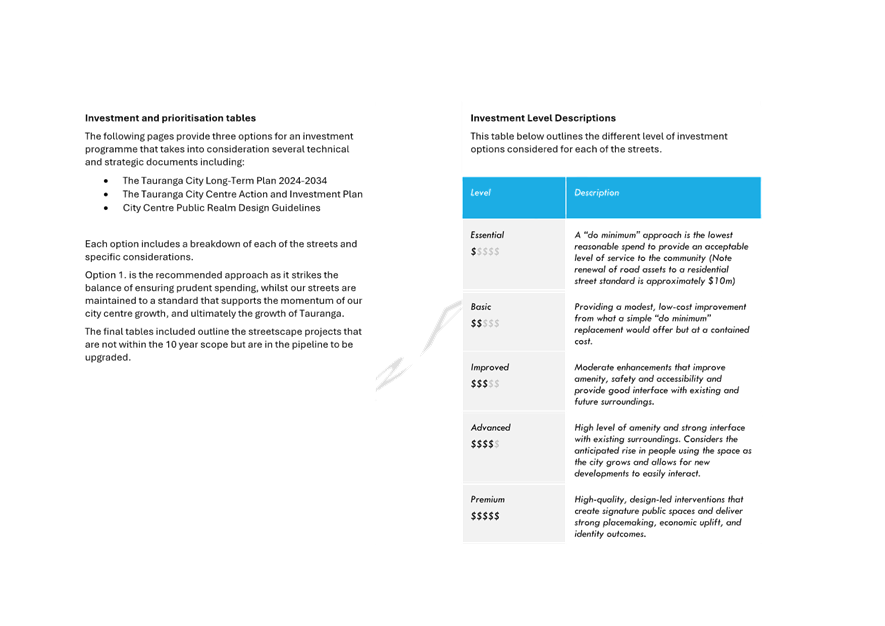

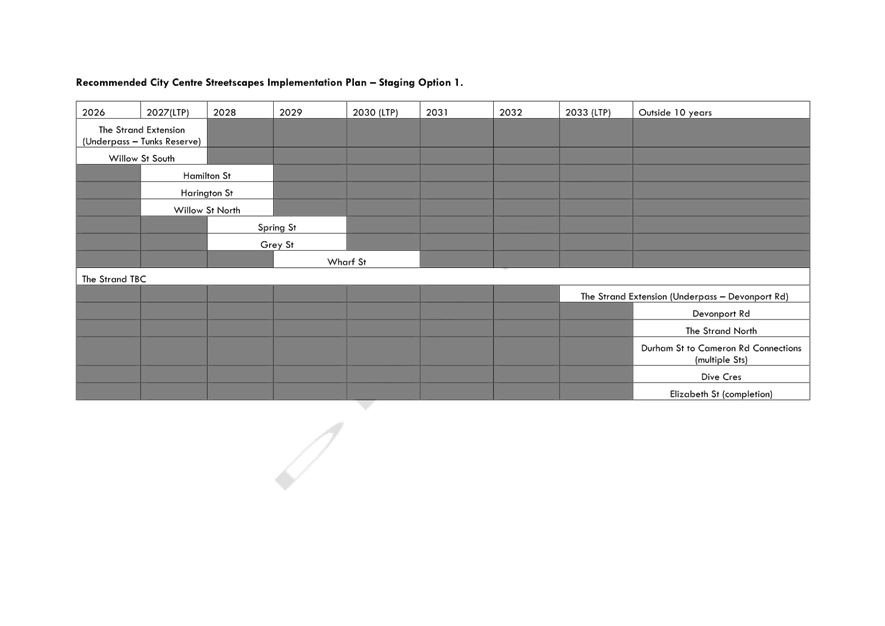
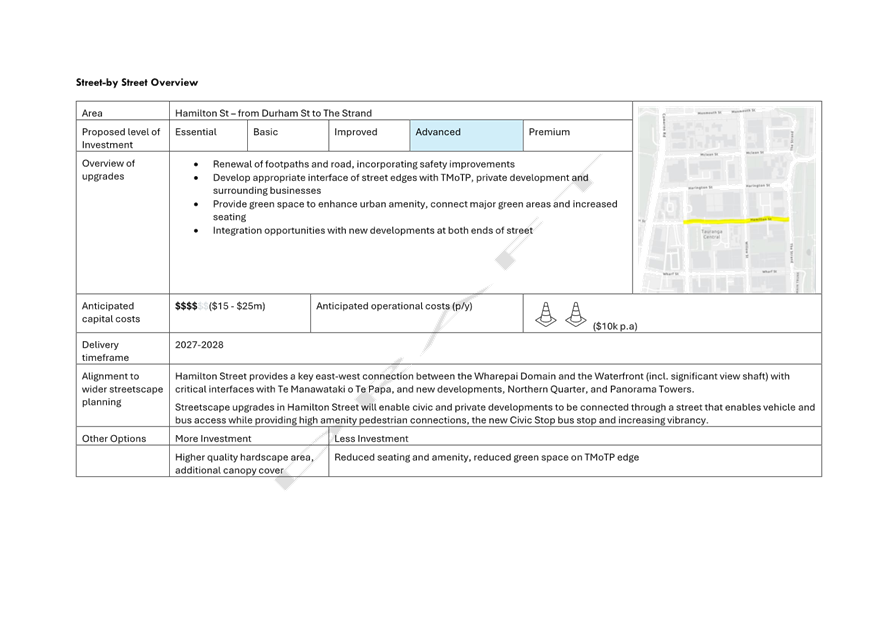
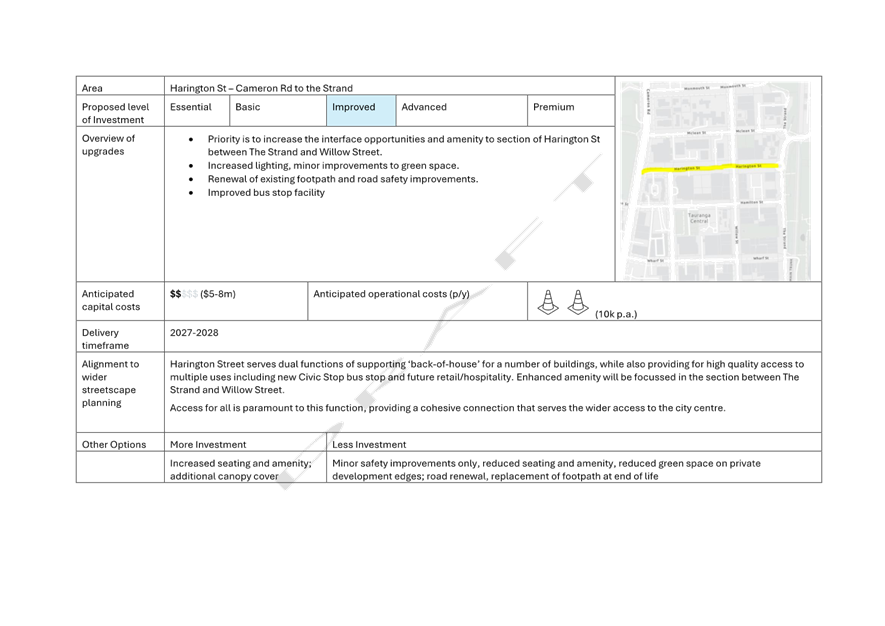
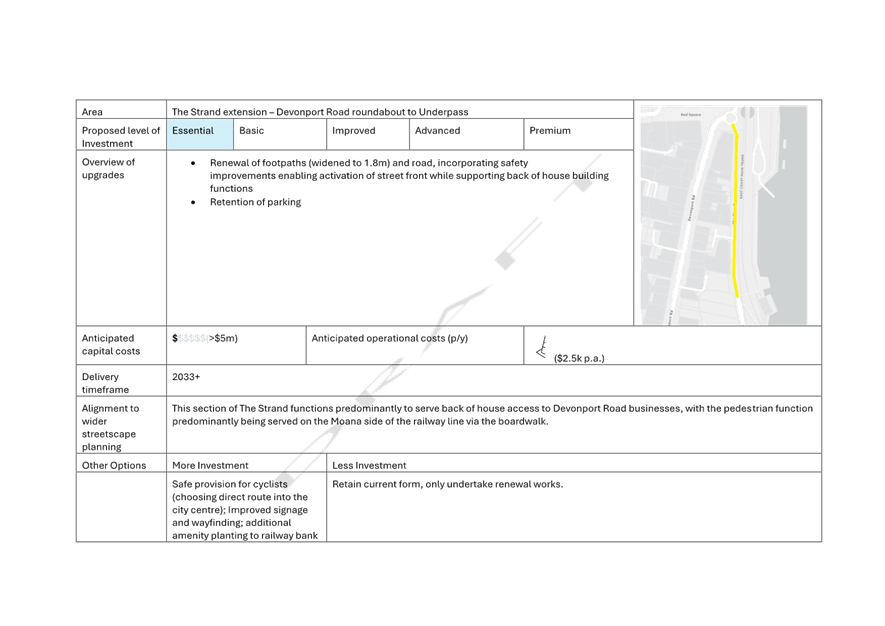


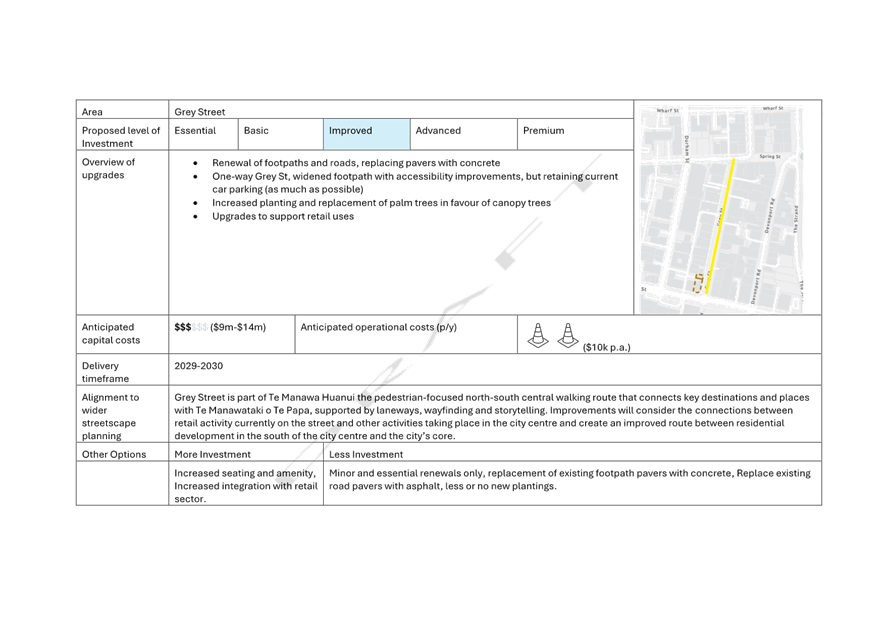
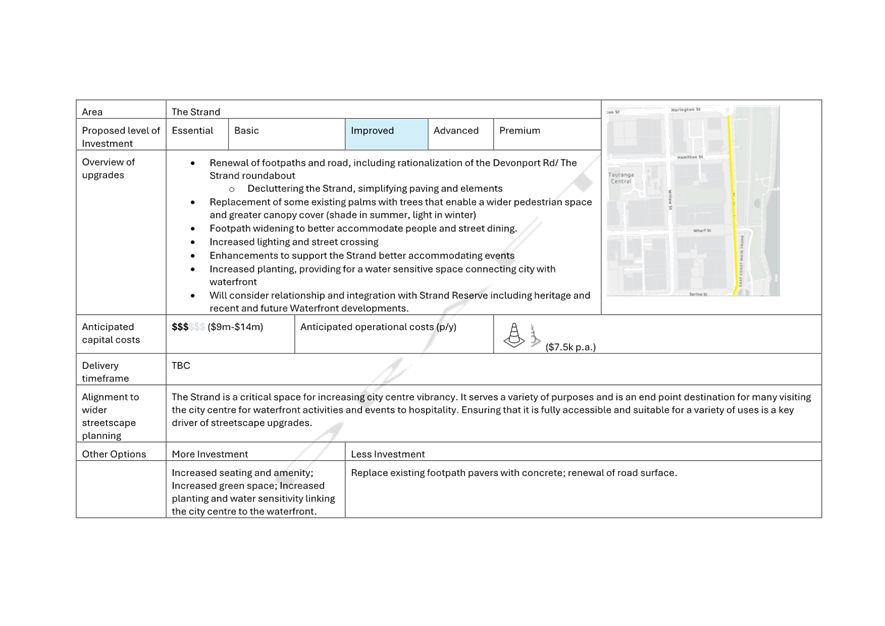

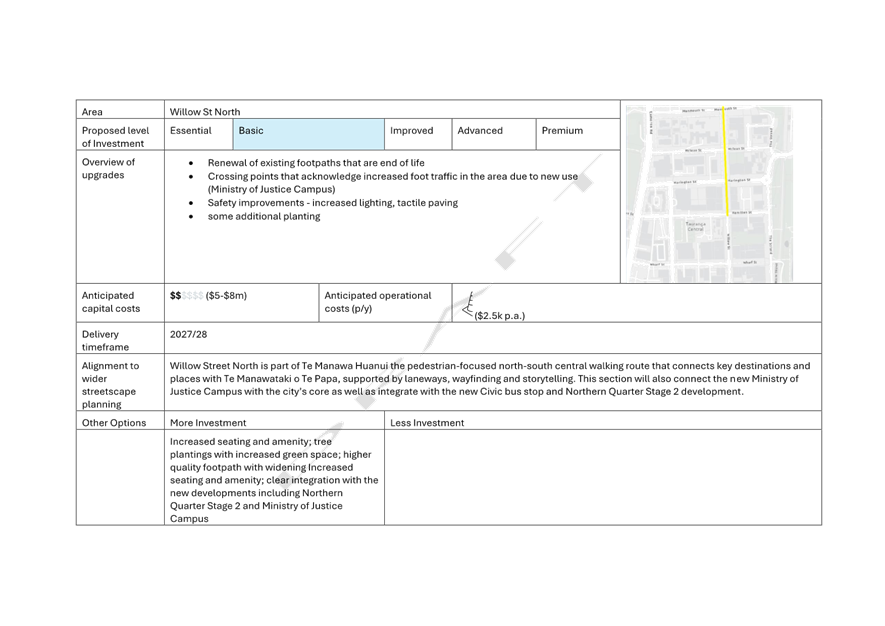
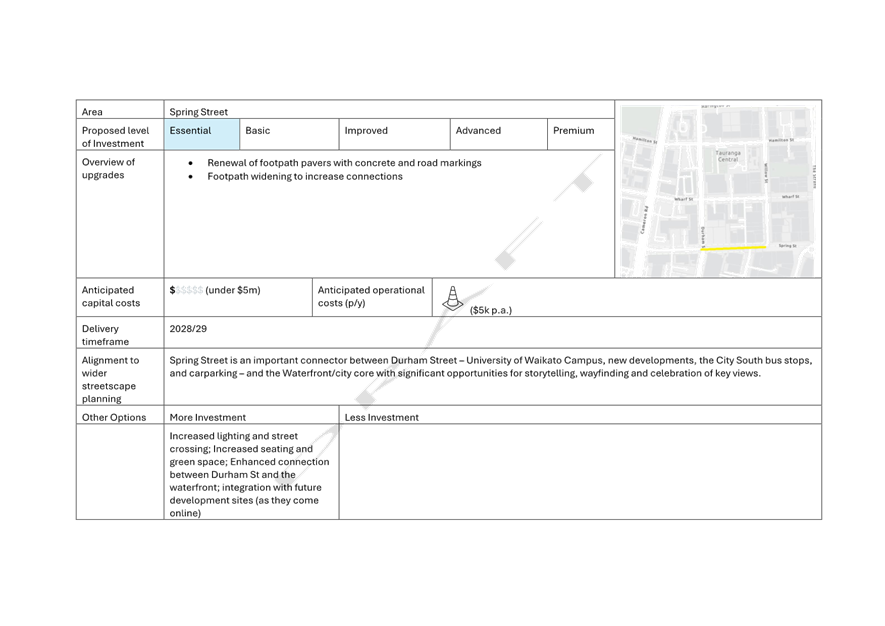
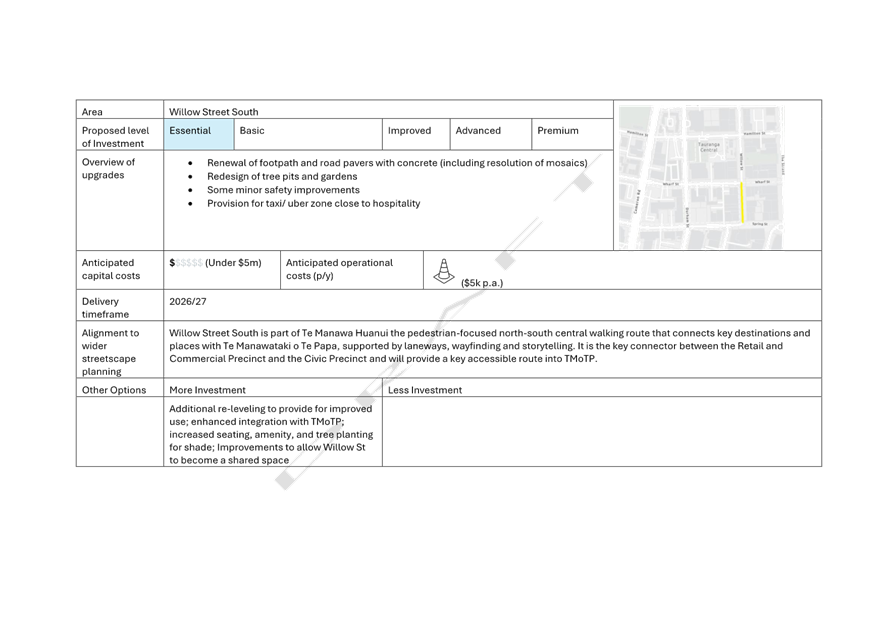
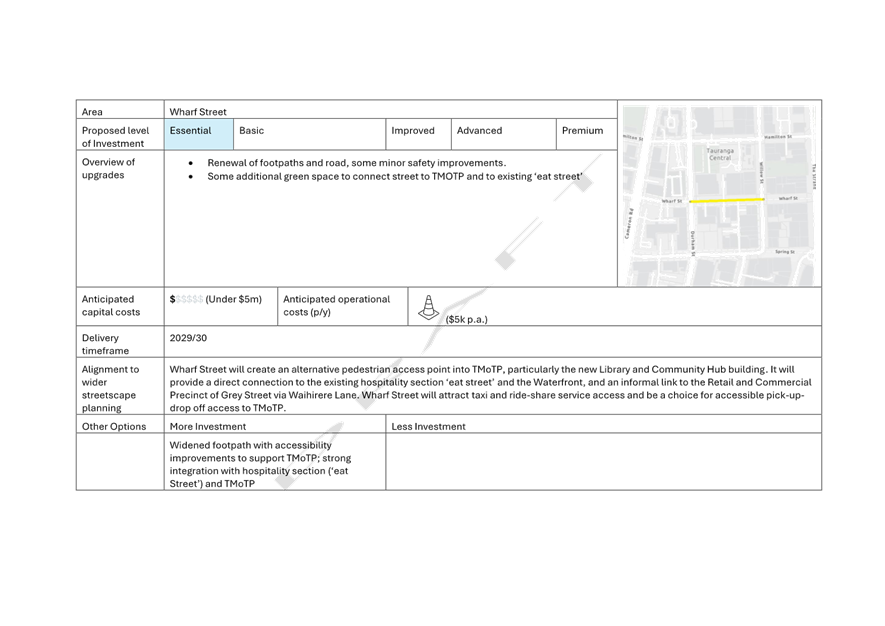
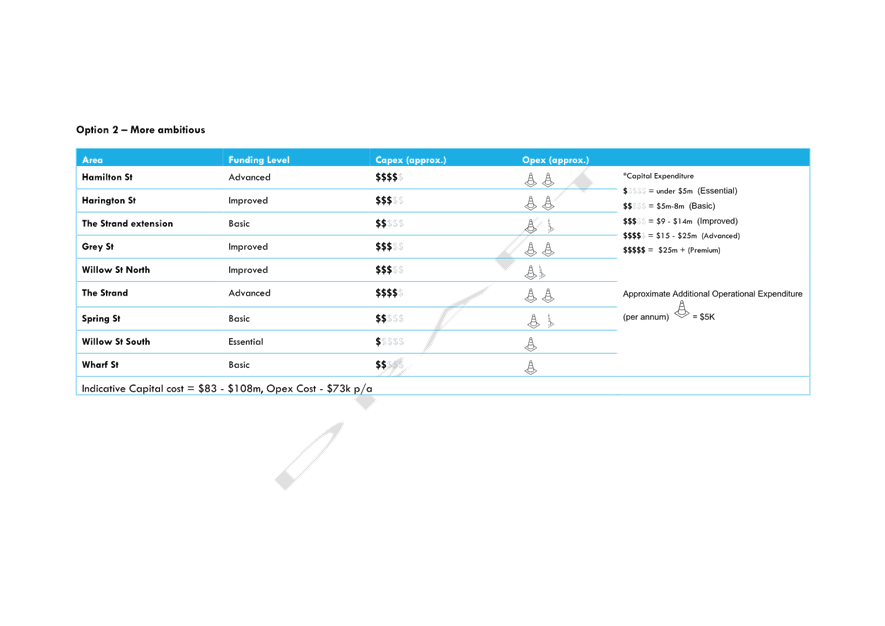
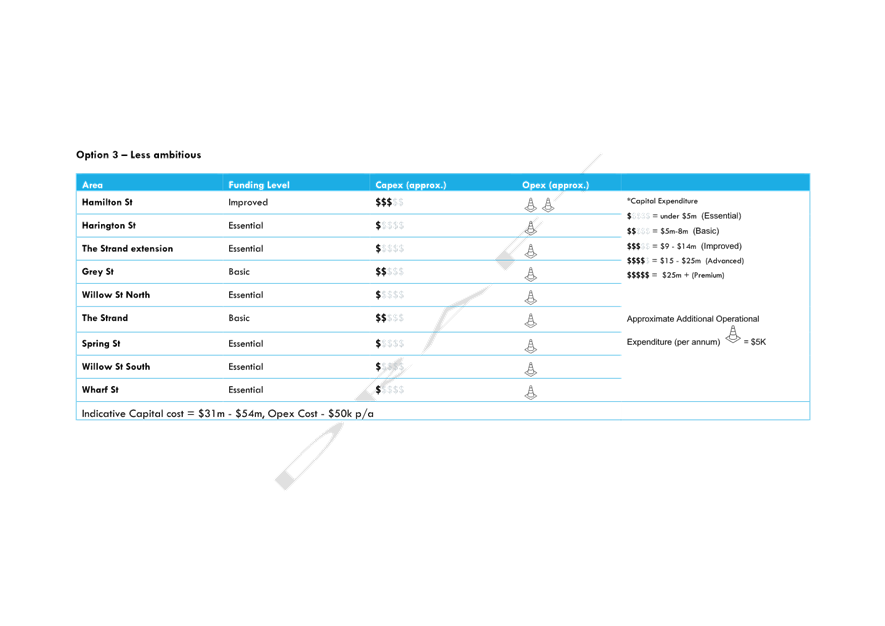
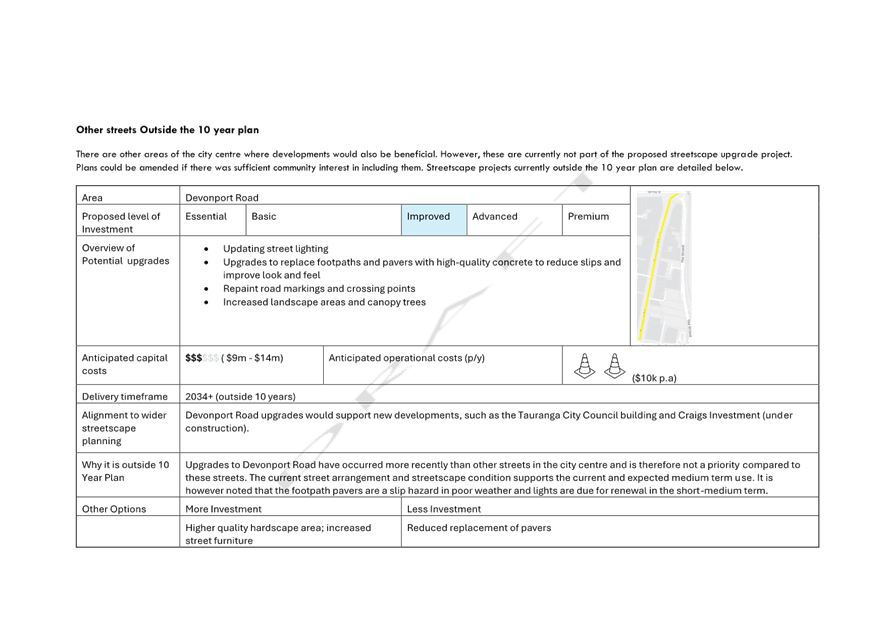
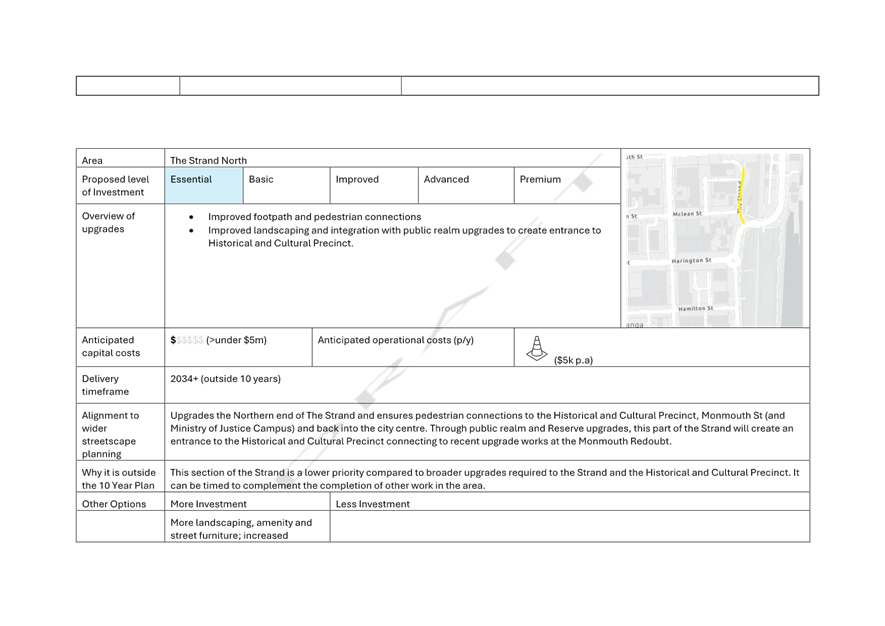
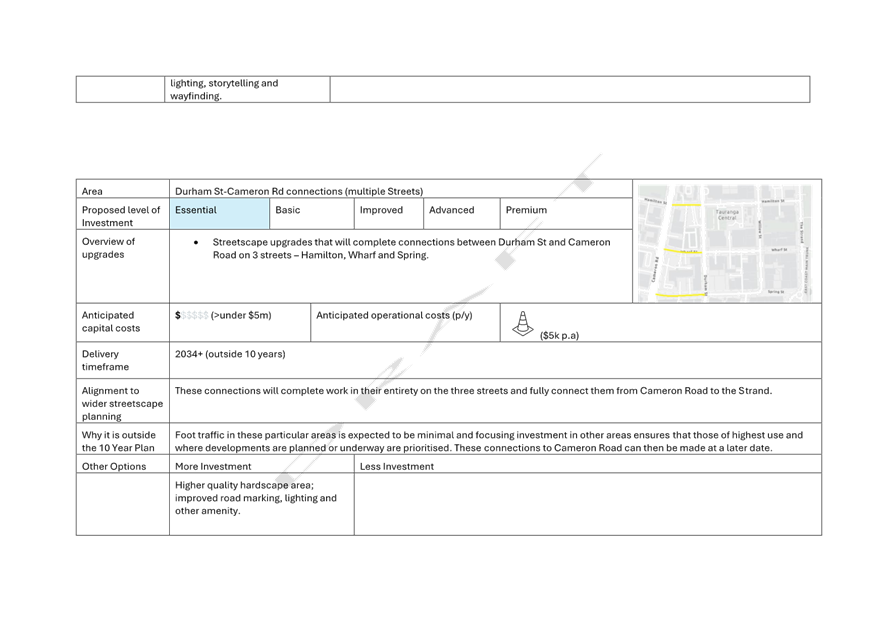
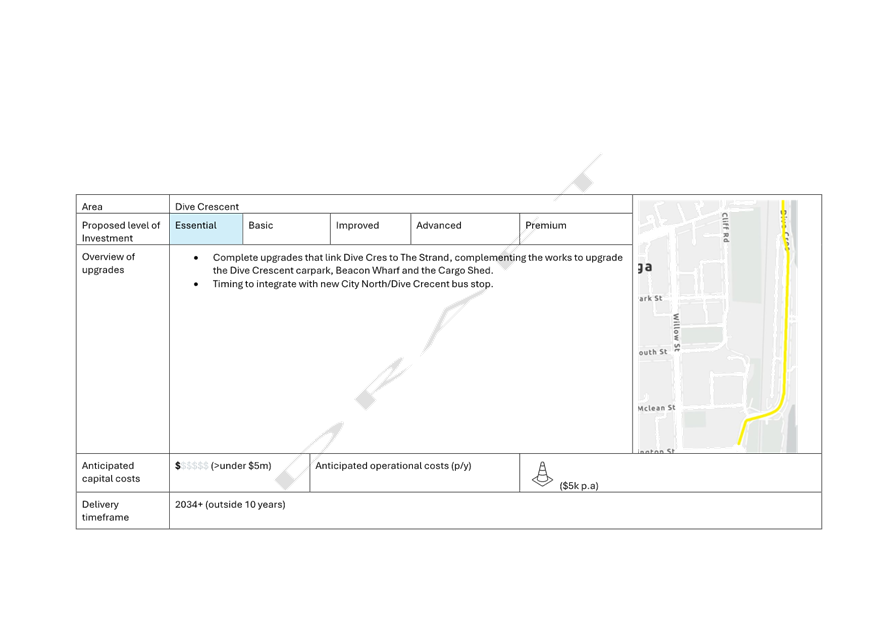


|
Ordinary
Council meeting Agenda
|
14
July 2025
|
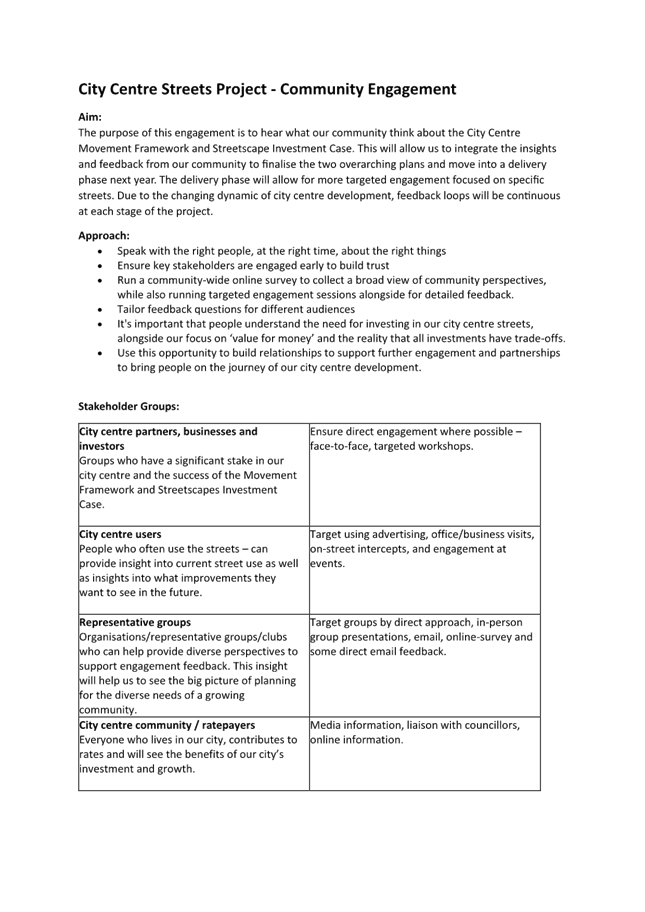
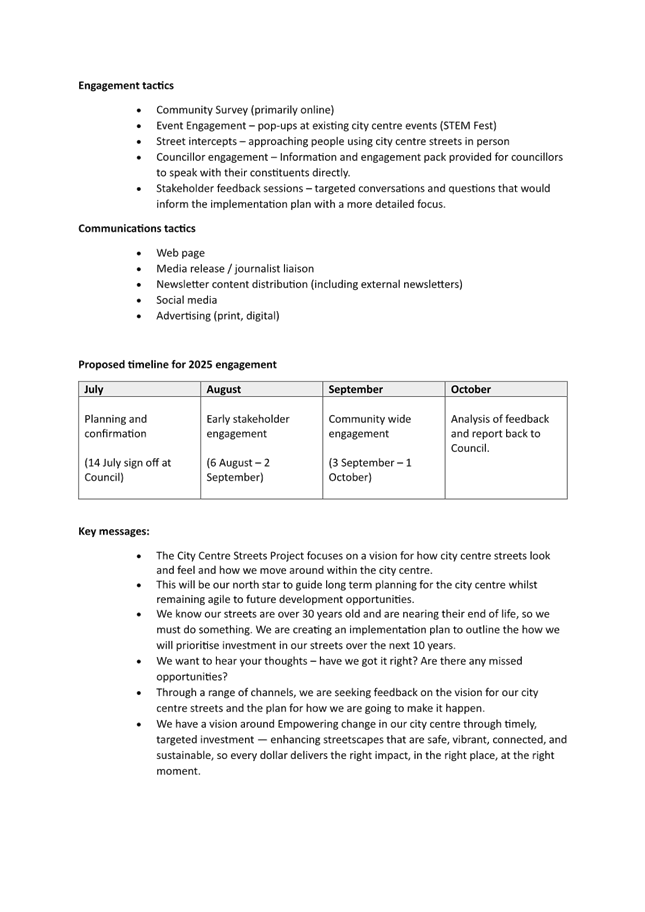
|
Ordinary
Council meeting Agenda
|
14
July 2025
|
11.4 Council-Controlled
Organisations - Final Statements of Intent 2025/28
File
Number: A18151002
Author: Caroline
Lim, CCO Specialist
Sam Fellows,
Manager: City Partnerships
Authoriser: Gareth
Wallis, General Manager: City Development & Partnerships
Purpose of the Report
1. The
purpose of this report is to provide the final Statements of Intent (SOI)
2025/28 for Tauranga City Council’s (TCC or Council) six
council-controlled organisations (CCOs), as required by the Local Government
Act (2002).
|
Recommendations
That the Council:
(a) Receives the report
"Council-Controlled Organisations - Final Statements of Intent
2025/28".
(b) Receives the final SOI
2025/28 for Bay Venues Limited (Bay Venues), Tauranga Art Gallery Trust
(TAGT), Tourism Bay of Plenty (TBOP), Te Manawataki o Te Papa Limited
(TMOTPL), Te Manawataki o Te Papa Charitable Trust (The Charitable Trust),
and Bay of Plenty Local Authority Shared Services Limited (BOPLASS) (Attachments
1 to 6).
(c) Receives Attachment 7
– TBOP’s letter to Mayor Mahé Drysdale regarding its final
SOI.
(d) Notes
that as joint shareholder of TBOP, Western Bay of Plenty District Council
(WBOPDC) received TBOP’s final SOI 2025/28 at their 26 June 2025
Council meeting.
|
Executive Summary
2. Council’s CCOs
are required by the Local Government Act (2002) (Part 5, Section 64, Schedule
8) to prepare an SOI consisting of information about
the organisation’s activities, performance measures, and financials over
a three-year financial period, and is prepared and adopted by each of the CCO
boards annually.
3. The draft SOIs must
be provided to their shareholder, TCC, by 1 March each year for shareholder
feedback, and Council has an opportunity to comment by
1 May each year on the draft SOIs before they are finalised and adopted by the
CCO boards by 30 June each year.
4. Draft SOIs for Bay
Venues, TAGT, TBOP, TMOTPL, the Charitable Trust and BOPLASS were received and
considered by Council on 28 April 2025, and feedback was subsequently provided
to the Bay Venues, TAGT, TBOP and TMOTPL Boards, Council’s substantive CCOs.
5. As Council and the
Otamataha Trust jointly govern the Charitable Trust, and as Council is one of
nine shareholder councils of BOPLASS, it is not expected that TCC provides a
Letter of Expectations (LOE) nor feedback to their draft SOIs, unless there are
areas of significant concern.
6. Council’s
meeting scheduled for 14 July 2025 is the first appropriate opportunity to
formally receive the CCOs’ final SOI 2025/28. It is noted that the Local
Government Funding Agency’s final SOI 2025/28 will be received at the
City Delivery Committee meeting scheduled for 22 July 2025.
7. Each CCO’s
final SOI is provided as Attachments 1 to 6. All six SOIs have met the
statutory requirements as outlined in the Local Government Act.
8. An analysis of each
CCO’s final SOI was undertaken by staff. For Bay Venues, TAGT, TBOP and
TMOTPL, this was done with reference to the shareholder feedback provided to
assess whether Council’s suggestions were considered further.
9. After receiving and
considering Council’s feedback on their draft SOI, the boards of Bay
Venues, TAGT, TBOP and TMOTPL have finalised and adopted their final SOI for
2025/28.
10. The
final SOI for TBOP has also be considered by their joint shareholder WBOPDC at
their 26 June 2025 Council meeting.
11. Overall, the CCOs have
constructively responded to shareholder feedback, with the final SOIs
reflecting the key points raised during the consultation process, as well as
the expectation from Council to find a minimum of 7% in opex saving.
12. Staff are satisfied that the
CCOs have responded appropriately to Council’s shareholder feedback in
their final SOI and that their final SOIs are aligned to Council’s LOEs
provided on 20 December 2024.
13. There are no identified
financial or legal risks associated with the final SOIs. These documents
include financial forecasts for the 2025/26, 2026/27, and 2027/28 financial
years.
14. No
options analysis is required, as this report serves to formally present the
final SOIs to Council as part of its annual reporting responsibilities.
15. The following background
section outlines, in more detail, Council’s feedback and changes from
draft to final SOI for the substantive CCOs.
Background
Highlights
of changes from draft to final SOI
Bay Venues
16. Bay Venues’ final SOI is
provided as Attachment 1.
17. Staff
are satisfied that the Bay Venues Board has responded appropriately to
Council’s shareholder feedback in their final SOI and aligned to
Council’s LOE.
18. Council’s expectation of
a minimum of 7% opex savings has been met and is reflected on page 9 of Attachment
1.
19. Council’s
feedback on the draft SOI, in no particular order of priority, and Bay
Venues’ response in the final SOI are outlined in the following table:
|
Bay
Venues’ Draft SOI – shareholder feedback:
(a) Consider a greater emphasis on using tangible examples to describe
how the ratepayer is receiving value for money from Bay Venues.
(b) Provide
specific examples of how Bay Venues has improved systems or processes to
reduce operating costs, including providing information on
how Bay Venues will achieve a minimum 7% operational grant saving in the
upcoming financial year.
(c) Include a note that Bay Venues will have regular reporting and
bi-monthly meetings with the Mayor, Deputy Mayor, and Councilors.
(d) Provide more information about the Bay Venues asset renewals
project(s).
(e) Consider updating information to clearly illustrate the number of
responses that are received when reporting on KPIs and relevant benchmarking.
(f) Consider
including information about what good looks like, and how Bay Venues is
measuring and working towards achieving that i.e. qualitative benchmarking.
|
Bay Venues’
final SOI – changes reflect shareholder feedback:
· Please refer to Attachment
1 – pages 7 to 9 – which outlines the specific responses to
Council’s feedback.
Note:
· Final SOI on
page 17 reflects the change of meeting frequency with Elected Members from
quarterly to bi-monthly as per the request from Council.
· Final SOI
reflects a change to page 13 regarding the KPI on visitation – target
reduced from 2.2 million to 2.1 million (to reflect final approved budget).
· Final SOI
reflects a change to page 14 regarding the KPI on Team Engagement –
target reduced from >75% to >65% (to reflect current year staff engagement
results).
|
TAGT
20. TAGT’s final SOI is
provided as Attachment 2.
21. Staff are satisfied that the
TAGT Board has responded appropriately to Council’s shareholder feedback
in their final SOI and aligned to Council’s LOE.
22. Council’s expectation of
a minimum of 7% opex savings has been met and is reflected on pages 12 and 19
of Attachment 2.
23. Council’s
feedback on the draft SOI, in no particular order of priority, and TAGT’s
response in the final SOI are outlined in the following table:
|
TAGT’s Draft
SOI – shareholder feedback:
(a) If
TAGT is focused on being the best, consider demonstrating how this can be
achieved and measured, both the current status and ongoing year-on-year
improvements.
(b) Consider
using industry-relevant benchmarking to demonstrate progress against
TAGT’s goals and illustrate how TAGT compares to galleries of a similar
size, scale and offering throughout the country.
(c) Consider
setting stretch targets (e.g. five years) and describe how TAGT will work
towards achieving them.
(d) Collect
more information about what visitors like and dislike, and how that
information will feed into ongoing gallery improvements.
|
TAGT’s final
SOI – changes reflect shareholder feedback:
a) Relevant sections:
· The final SOI (Attachment
2) addresses this by outlining clear metrics in Section 3.3 'Looking to
the future'.
· TAGT will
measure its ambition to be a renowned gallery through community response,
including positive regional media coverage, visitor satisfaction and
engagement surveys, and financial contributions.
· Reputation
metrics include national benchmarking, media reviews, awards, touring
exhibitions, and partnerships.
· Year-on-year
improvements are implied through annual increases in engagement and
satisfaction, and redevelopment milestones.
(b) Relevant
sections:
· TAGT commits to
benchmarking against similar galleries as part of its strategy to be
recognised nationally.
· This is
mentioned in Section 3.3, where benchmarking is listed as a key measure of
success.
· The document
also references a review of other galleries post-COVID to contextualise
visitation expectations (Section 3.2).
(c) Relevant
sections:
· Stretch targets
are discussed in Section 3.2, with expectations of annual growth from 2026/27
following the reopening.
· The final SOI
outlines a major exhibition in 2027 aimed at attracting national visitation
(Section 6).
· The
Gallery’s redevelopment and strategic partnerships are framed as
enablers for achieving these targets.
(d) Relevant
sections:
· A Visitor
Experience Strategy is being implemented (Sections 3.4 and 5), with surveys
and analytics to measure engagement and appreciation.
· Specific
feedback mechanisms include asking visitors where they’ve travelled
from and satisfaction surveys (Section 3.3).
· The strategy is
designed to inform ongoing improvements and demonstrate value for money.
Note:
· Page 6 addresses
establishing a baseline and from there, stretch targets can be set from 2026
onwards.
· This was an
approach the TAGT Board discussed with Elected Members at the Governance to
Governance meeting on 17 June 2025.
|
TBOP
24. TBOP’s final SOI is
provided as Attachment 3.
25. Staff are satisfied that the
TBOP Board has responded appropriately to Council’s shareholder feedback
in their final SOI and aligned to Council’s LOE.
26. Council’s expectation of
a minimum of 7% opex savings has been met and is reflected on pages 4 and 20 of
Attachment 3.
27. Council’s
feedback on the draft SOI, in no particular order of priority, and TBOP’s
response in the final SOI, are outlined in the following table:
|
TBOP’s Draft
SOI – shareholder feedback:
(a) If
TBOP is focused on being the best, consider demonstrating how this can be
achieved and measured, both the current status, and ongoing year-on year
improvements.
(b) Consider
including information about what good looks like and how TBOP is measuring
and working towards achieving that i.e. qualitative benchmarking.
(c) Consider
demonstrating the economic impact of the work TBOP does and the return on
investment the Tauranga ratepayers receive for TCC’s investment.
(d) Include
regular reporting on the Tauranga Destination Brand project.
|
TBOP’s final
SOI – changes reflect shareholder feedback:
· Please refer to Attachment
7 which outlines the responses to Council’s feedback.
Note:
· Whakatāne
District Council will no longer be part of TBOP’s regional tourism
organisation from 1 July 2025, which is reflected in the financial section on
page 20 of Attachment 3.
|
TMOTPL
28. TMOTPL’s final SOI is
provided as Attachment 4.
29. Staff are satisfied that the
TMOTPL Board has responded appropriately to Council’s shareholder
feedback in their final SOI and aligned to Council’s LOE.
30. Council’s expectation of
a minimum of 7% opex savings has been met and is reflected on page 15 of Attachment
4.
31. Council’s
feedback on the draft SOI and TMOTPL’s response in the final SOI, are
outlined in the following table:
|
TMOTPL’s Draft
SOI – shareholder feedback:
(a) Provide
clearer key performance indicators and specific information on delivery in
full, on time, in scope, and on budget.
|
TMOTPL’s final
SOI – changes reflect shareholder feedback:
· Please refer to
page 10 of Attachment 4.
|
The Charitable Trust
32. As Council and the Otamataha
Trust jointly govern the Charitable Trust, there was no LOE provided to this
CCO.
33. Attachment 5 is this
CCO’s final SOI 2025/28. TCC staff worked with the Otamataha Trust on the
development of the new SOI 2025/28, following the CCO’s half-yearly
meeting, which took place on 8 April 2025.
34. The final SOI confirms the
Charitable Trust’s purpose is to:
· Own
the land referred to as Site A of the civic precinct – the land bounded
by Willow Street, Wharf Street, Durham Street, and Hamilton Street.
· Support
and encourage the development of Site A of the civic precinct, including (but
not limited to) a library, civic whare, museum and exhibition centre and the
beautification of surrounding areas.
35. The final SOI notes the
founding documentation of this CCO and outlines the five key deliverables
supporting the Charitable Trust’s core objective of restoring mana of the
whenua to hapū and iwi, and provide certainty for how the land will be
used in the future for the community.
BOPLASS
36. As Council is one of nine
shareholder members, there was no LOE provided to BOPLASS.
37. BOPLASS’ final SOI
2025/28 is provided as Attachment 6.
38. There are no significant
changes between the draft and the final document.
39. BOPLASS’ final SOI has
six key performance targets to maximise value for money, benefits, and best
practice to BOPLASS councils.
40. BOPLASS
has confirmed that it will continue to manage a variety of joint procurement
projects, which require ongoing management for performance, renewal or
replacement. These joint procurement projects will continue across the three
financial years.
41. BOPLASS has also confirmed that
it will continue to manage a variety of shared services. These shared services
will continue across the three financial years.
42. The BOPLASS Board has
appreciated the support received from Council in the past year and looks
forward to another successful year.
Statutory Context
43. The SOI is one of the
CCO’s key governance and planning documents.
44. Engaging with the CCOs
throughout the development of the annual SOIs is one of the main ways Council
can influence its CCOs while ensuring they are aligned with Council’s
strategic outcomes.
45. In accordance with the SOI and
the Local Government Act (2002), CCOs are required to report to Council on its
financial and non-financial performance six monthly and annually.
46. Bay Venues also provides
quarterly updates and the latest Quarter 3 FY2025 can be found here.
47. Council’s partnerships
with its CCOs help successfully deliver community outcomes and facilitate Tauranga becoming a vibrant city that
attracts businesses, people and visitors, is well planned, connected, and
inclusive.
STRATEGIC ALIGNMENT
48. The CCOs contribute to the
promotion or achievement of the following strategic community outcome(s):
|
Contributes
|
|
We are an inclusive city
|
ü
|
|
We value, protect and enhance the environment
|
ü
|
|
We are a well-planned city
|
ü
|
|
We can move around our city easily
|
ü
|
|
We are a city that supports business and education
|
ü
|
49. The
CCOs actively work in partnership with Council, mana whenua and our community
to achieve great outcomes, value for money, and delivering more with less
resources. This is reflected in their SOIs and their performance against
financial and non-financial measures.
Options Analysis
50. There
are no options analysis as Council is formally receiving the final SOIs.
Financial Considerations
51. Budgets for all CCOs, including
Council’s contributions, are included in the final SOIs.
Legal Implications / Risks
52. There are no legal implications.
53. Each of the CCOs has met their
legislative requirements outlined in Part 5, Section 64, Schedule 8 of the
Local Government Act (2002).
54. Staff
believe that there is no strong justification for Council to require additional
changes to the SOIs that have been signed off by the boards as their final
documents.
TE AO MĀORI APPROACH
55. While the Te Ao Māori
approach is important, the matters addressed in this report are of a procedural
nature.
CLIMATE IMPACT
56. While climate impact is
important, the matters addressed in this report are of a procedural
nature.
Consultation / Engagement
57. It is not required or expected
to consult on an SOI under the Local Government Act (2002).
Significance
58. The Local Government Act 2002
requires an assessment of the significance of matters, issues, proposals and
decisions in this report against Council’s Significance and Engagement
Policy. Council acknowledges that in some instances a matter, issue, proposal
or decision may have a high degree of importance to individuals, groups, or
agencies affected by the report.
59. In making this assessment,
consideration has been given to the likely impact, and likely consequences for:
(a) the current
and future social, economic, environmental, or cultural well-being of the
district or region;
(b) any persons who are likely to be
particularly affected by, or interested in, the matter; and
(c) the capacity of the local authority
to perform its role, and the financial and other costs of doing so.
60. In accordance with the
considerations above, criteria and thresholds in the policy, it is considered
that the matter is of low significance.
ENGAGEMENT
61. Taking into consideration the
above assessment, that the matter is of low significance, officers are of the
opinion that no further engagement is required prior to Council making a
decision.
Click
here to view the TCC
Significance and Engagement Policy
Next Steps
62. CCOs will be informed of
Council’s consideration of this report.
63. The final SOIs will be made
available to the public via Council’s website.
Attachments
1. Attachment
1: Bay Venues - Final Statement of Intent 2025-2028 - A18437788 ⇩ 
2. Attachment
2: TAGT - Final Statement of Intent 2025-2028 - A18435933 ⇩ 
3. Attachment
3: TBOP - Final Statement of Intent 2025-2028 - A18431772 ⇩ 
4. Attachment
4: TMOTPL - Final Statement of Intent 2025-2028 - A18456888 ⇩ 
5. Attachment
5: TMOTP Charitable Trust - Final Statement of Intent 2025-2028 - A17911163 ⇩ 
6. Attachment
6: BOPLASS - Final Statement of Intent 2025-2028 - A18437798 ⇩ 
7. Atachment 7: TBOP
- Letter re Final Statement of Intent 2025-2028 - A18431776 ⇩ 
|
Ordinary
Council meeting Agenda
|
14
July 2025
|
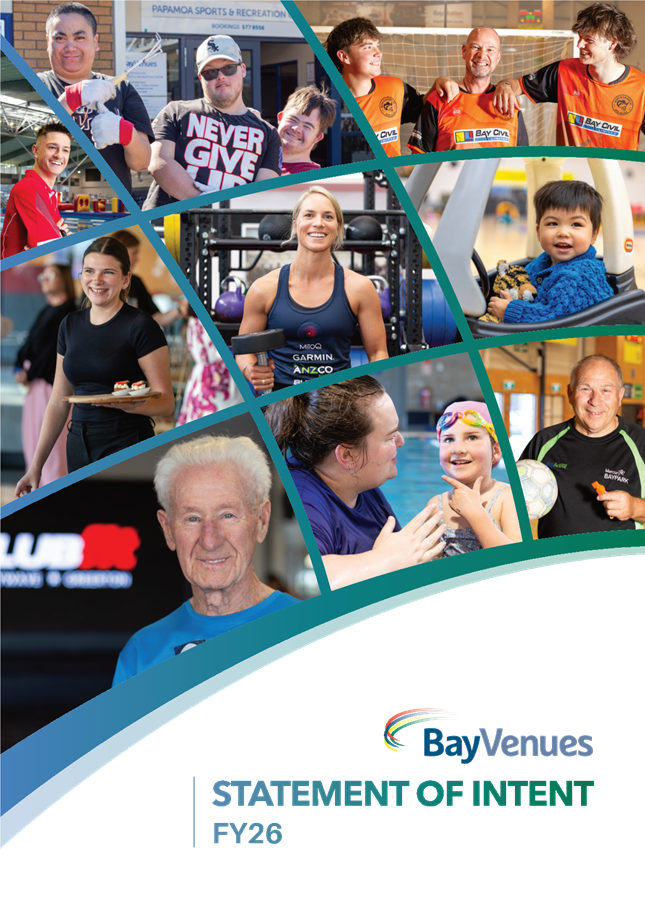
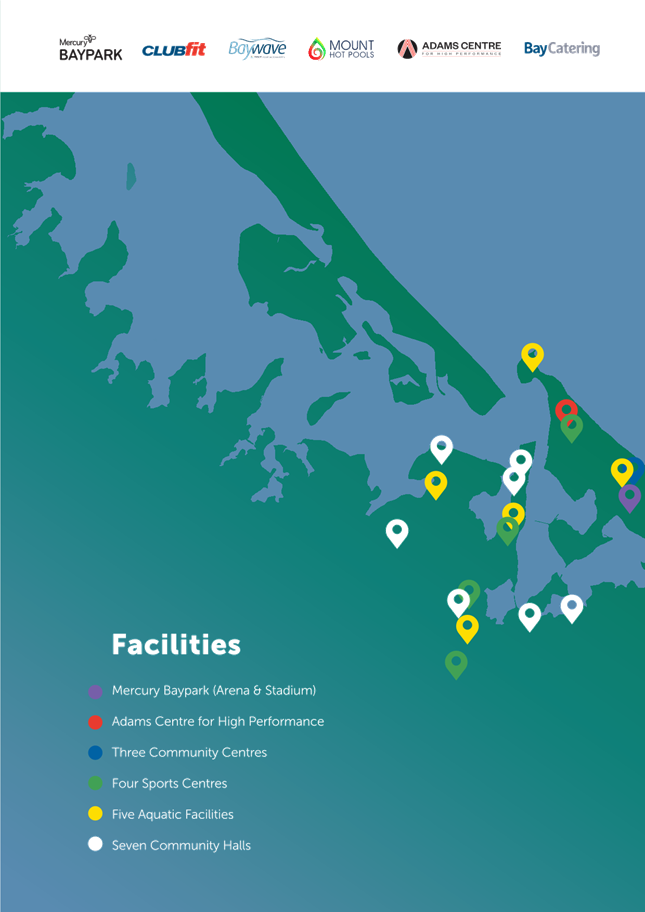
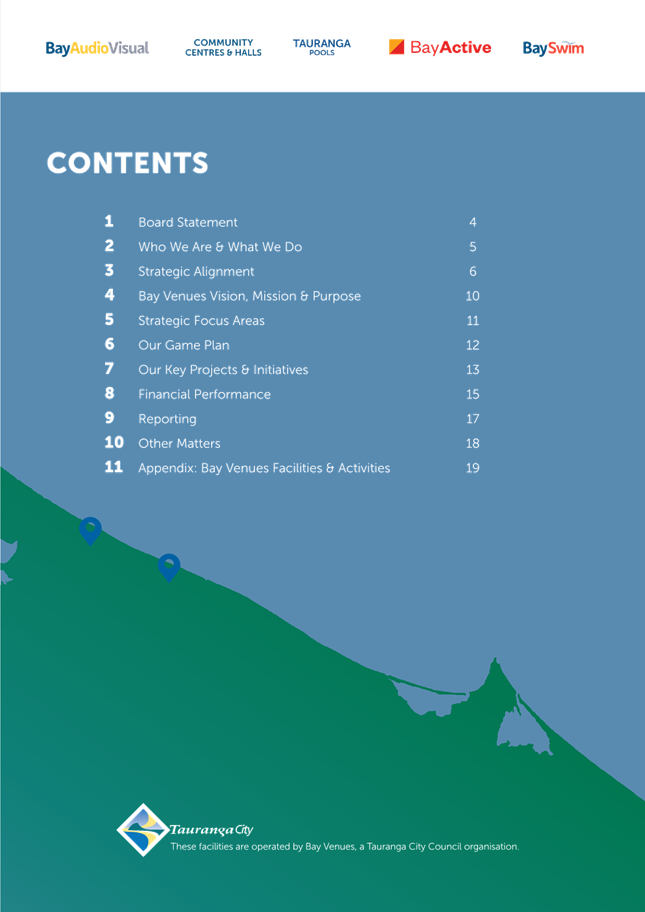
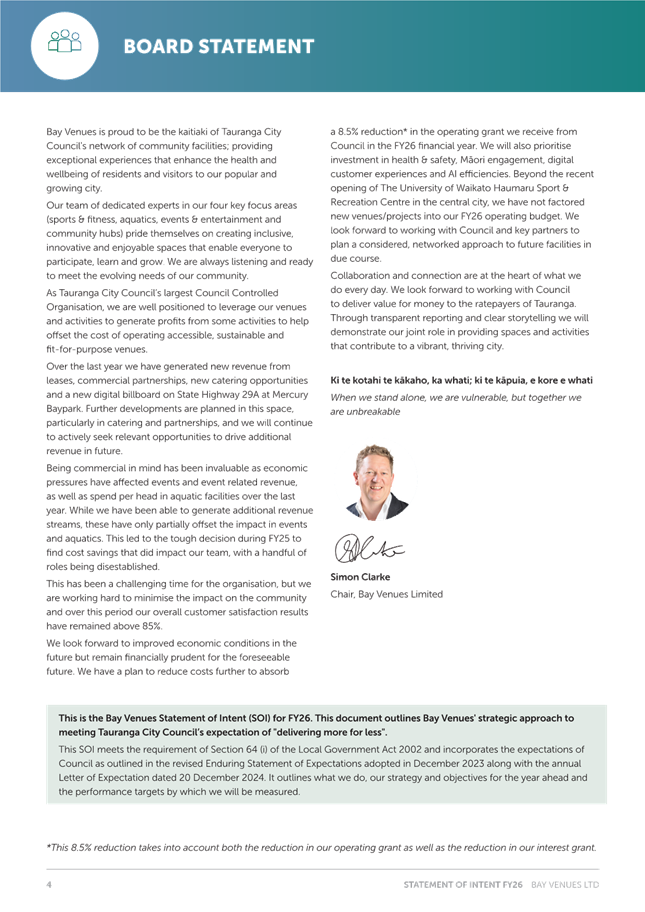
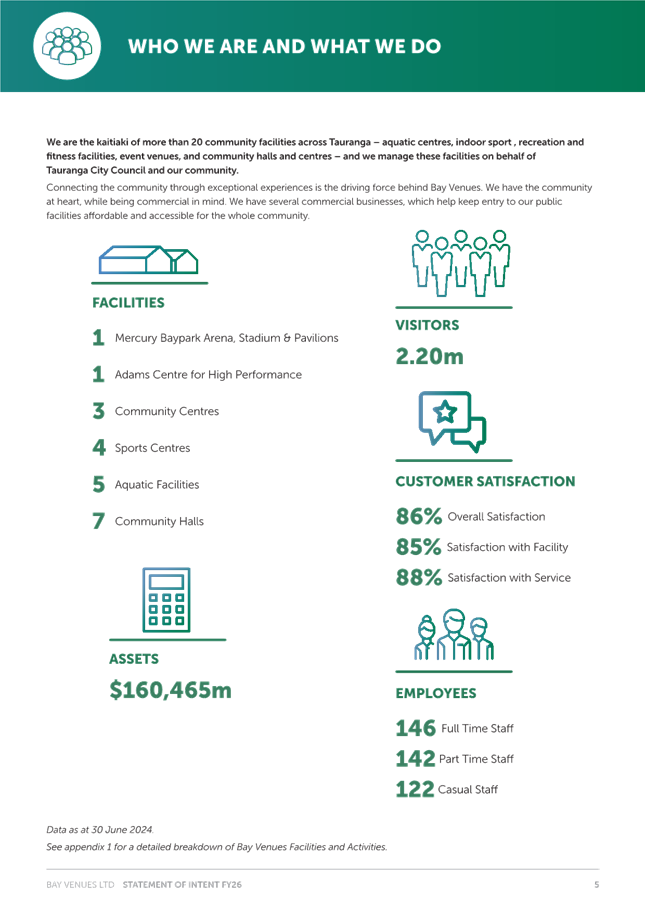
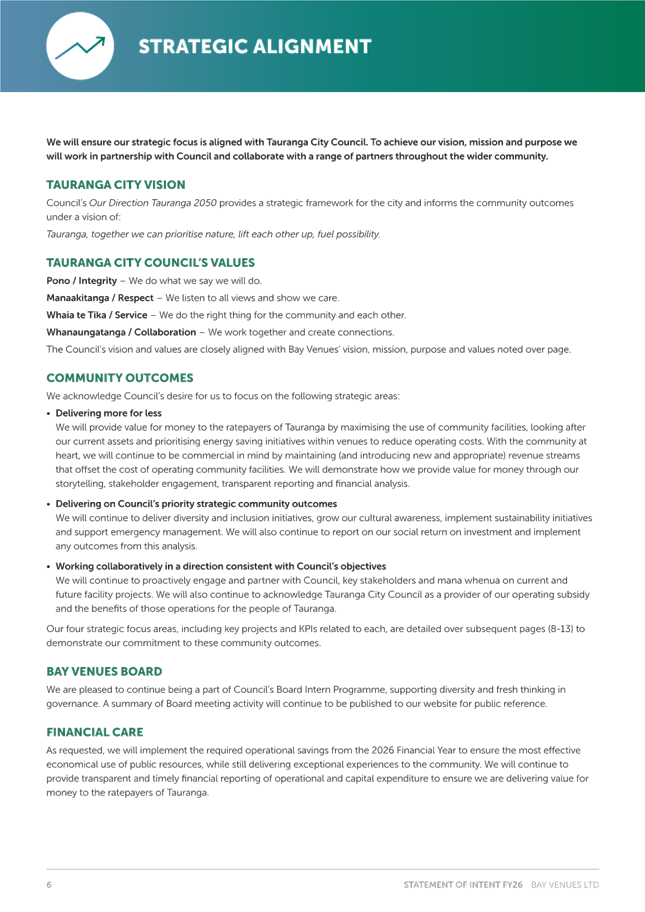
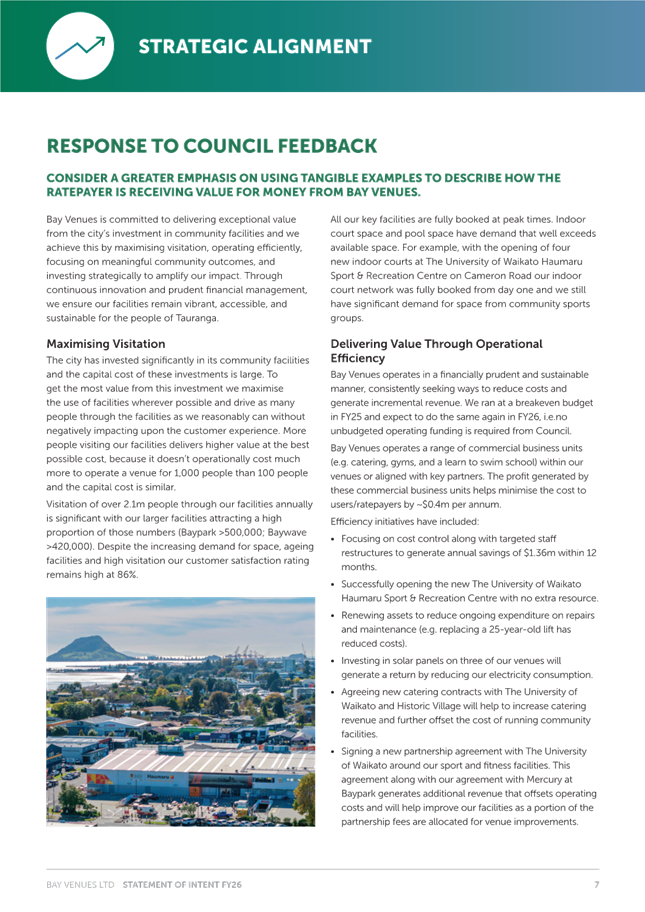
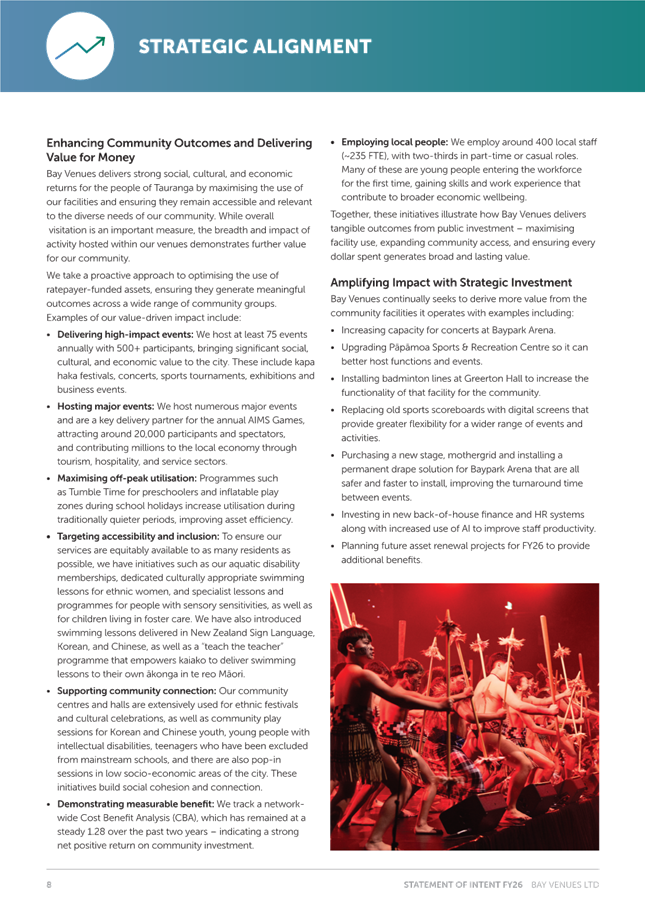
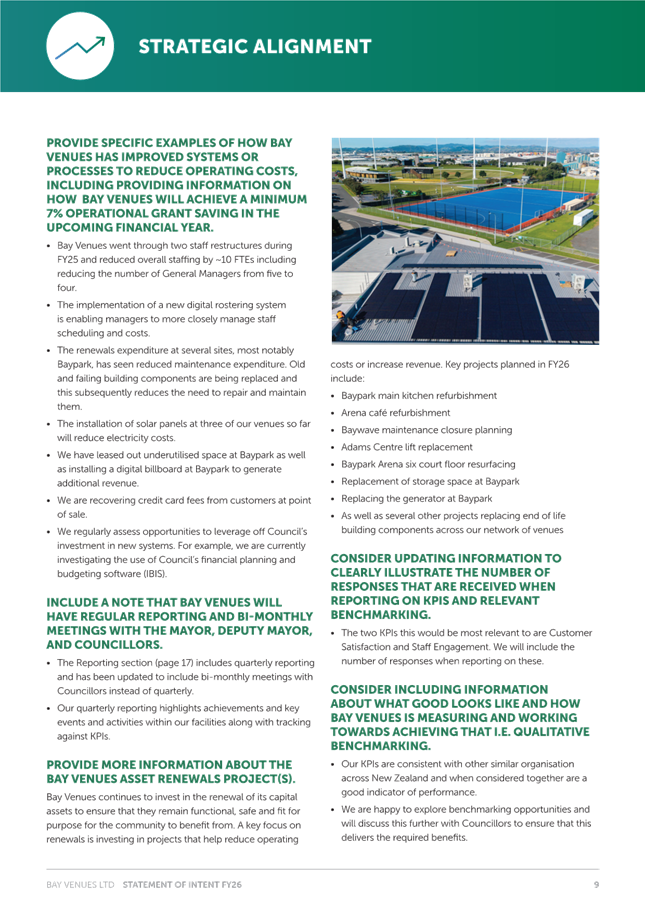
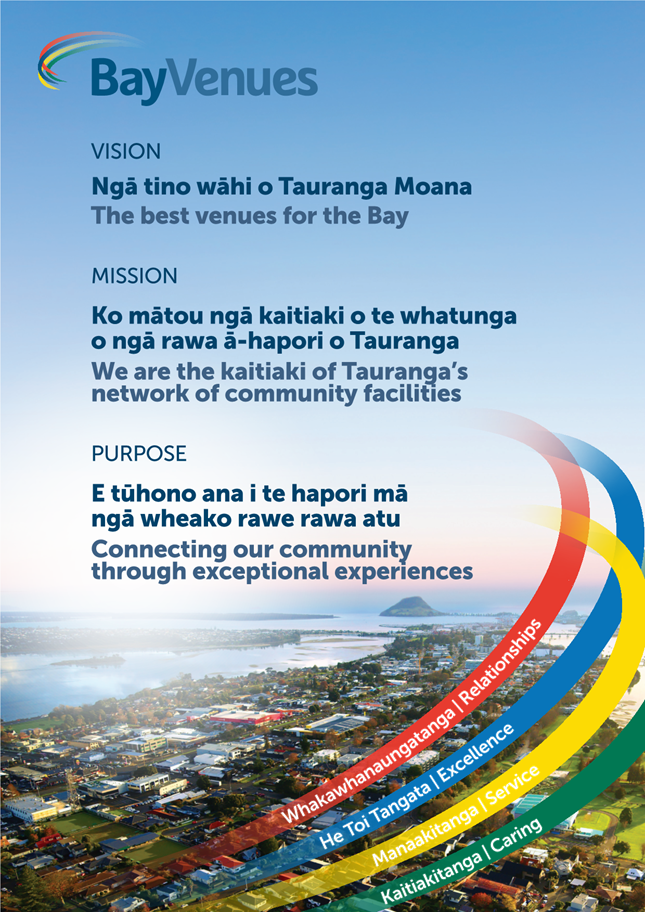
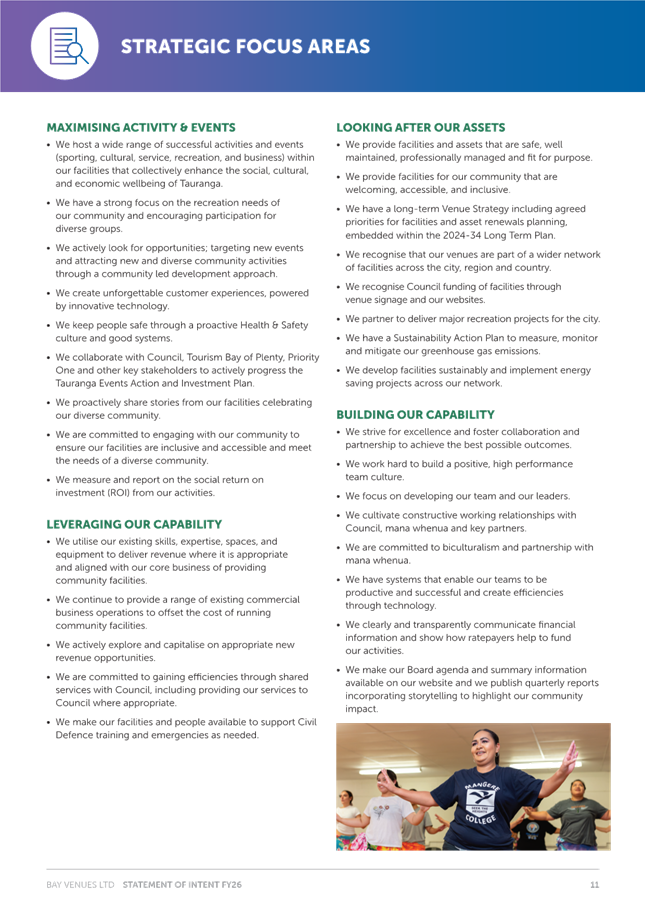
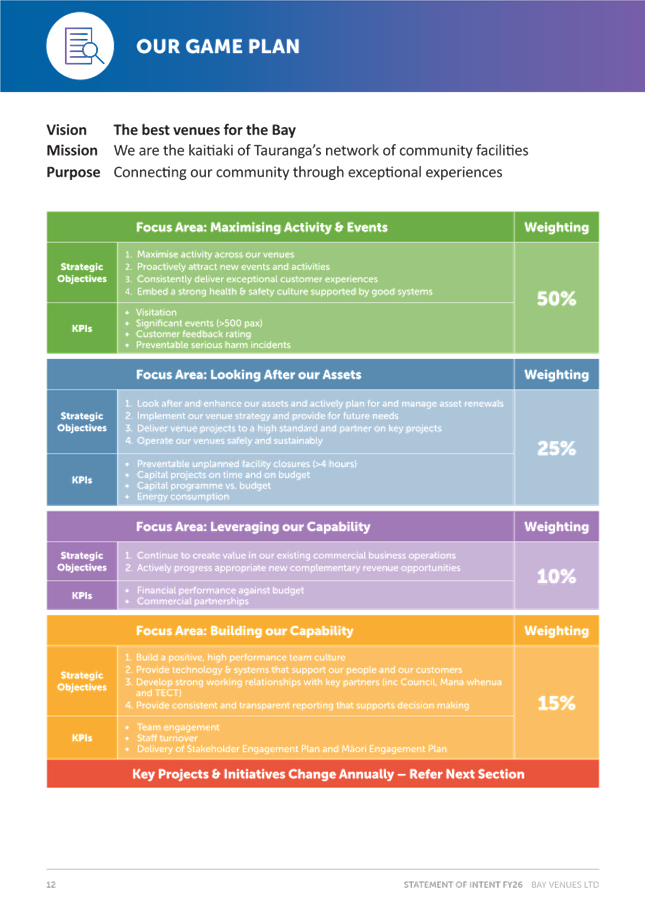
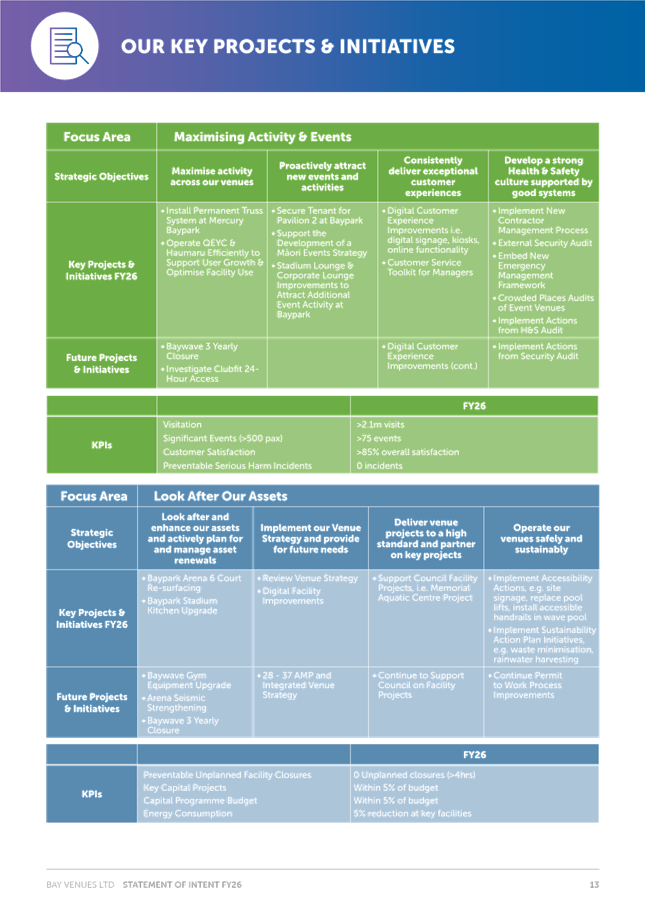
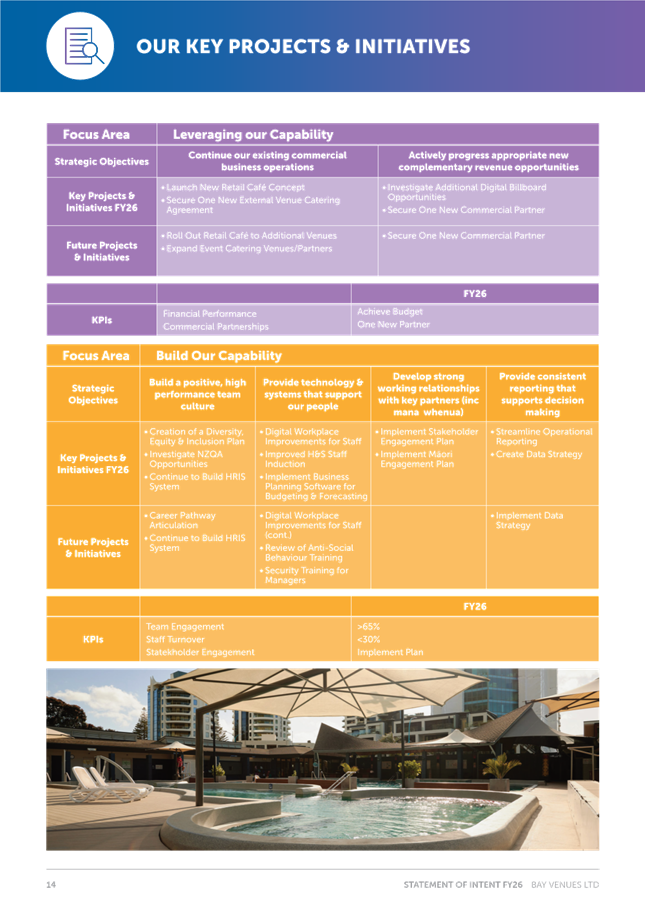

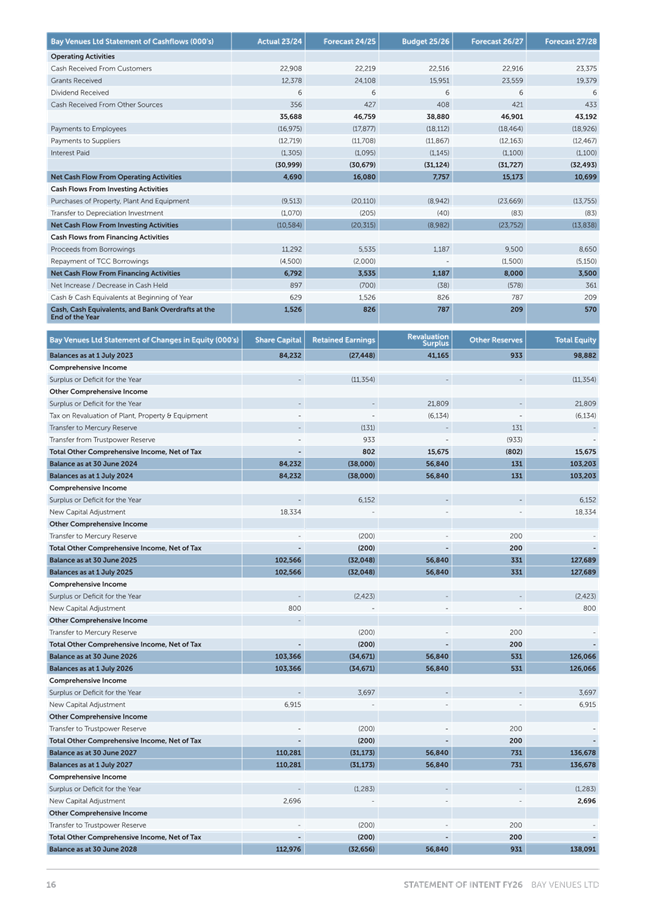
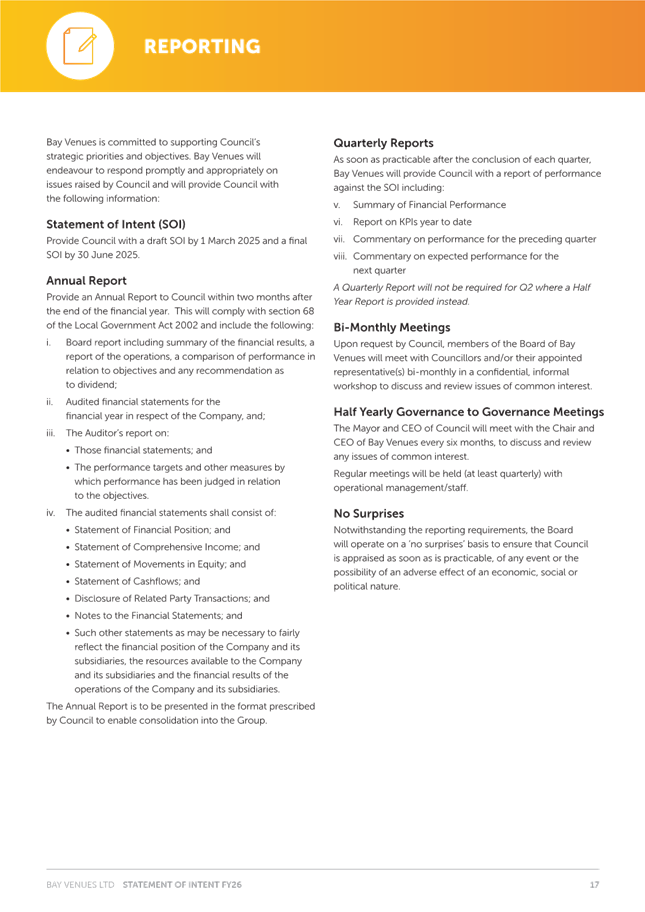
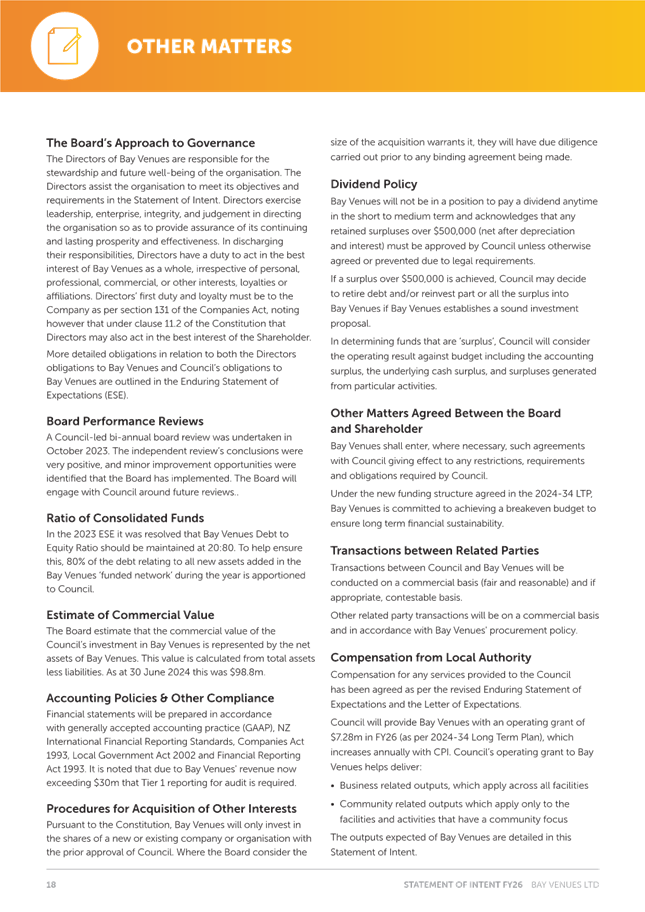
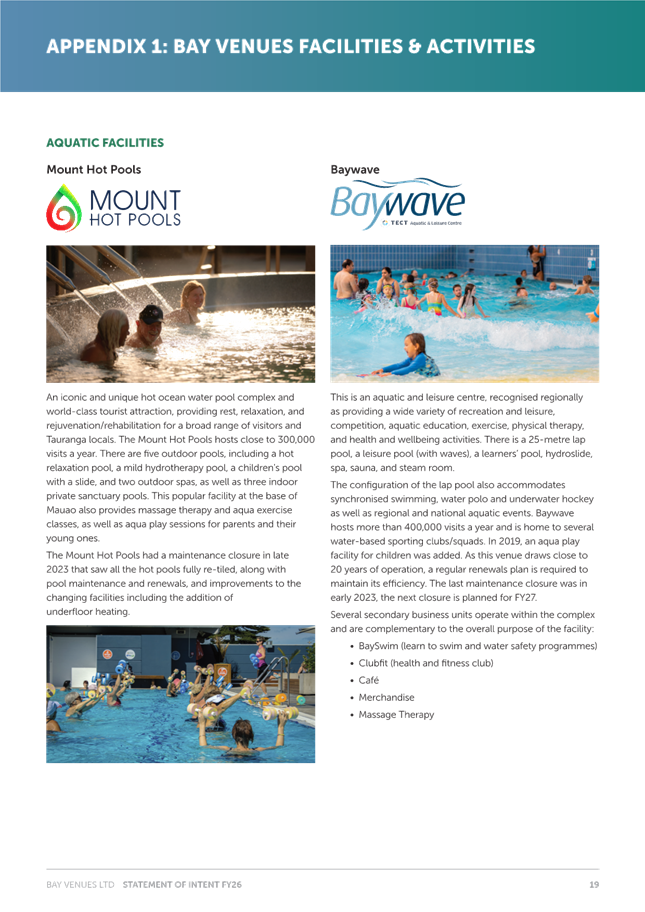
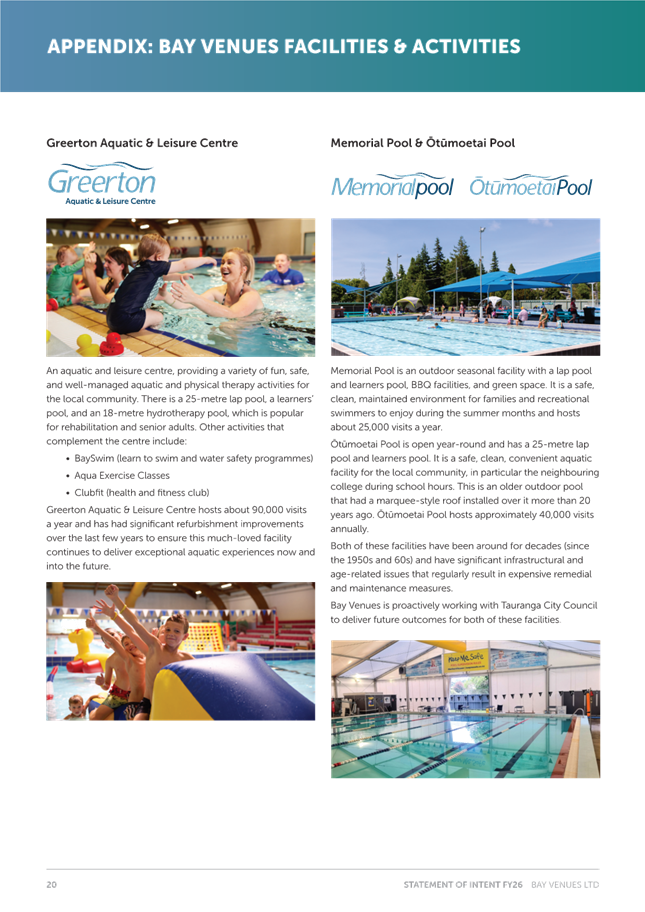
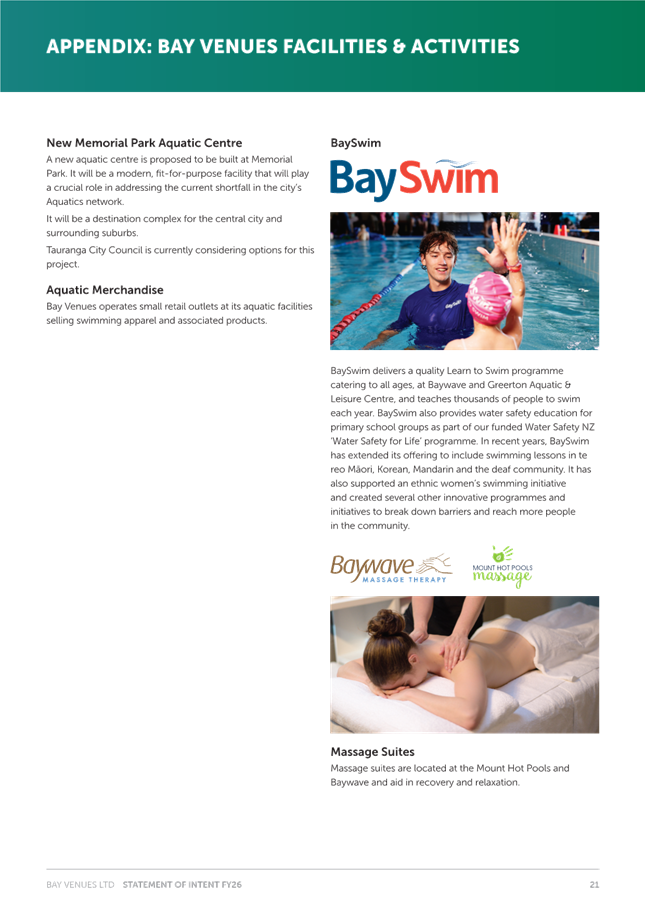
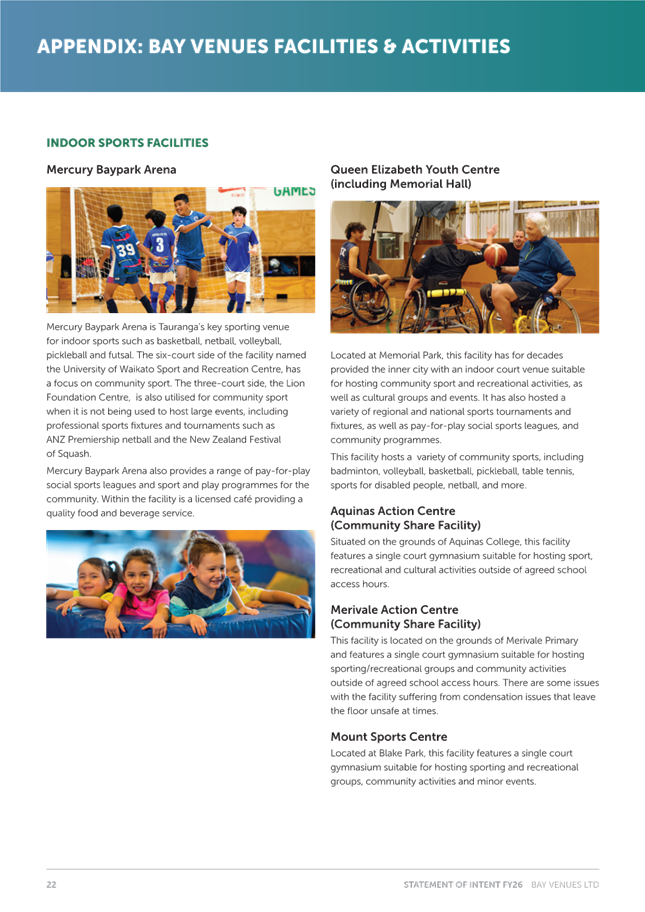
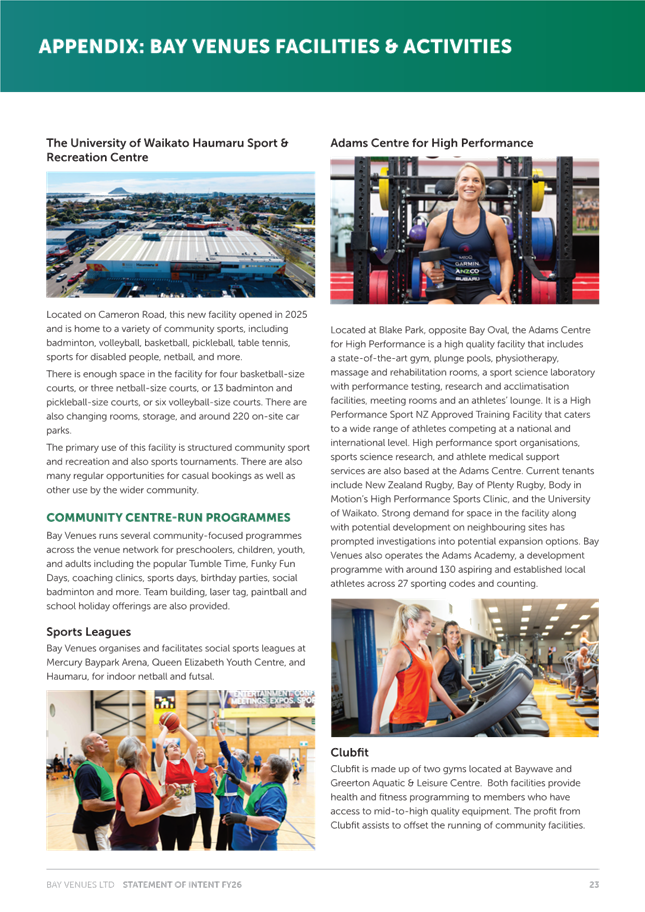
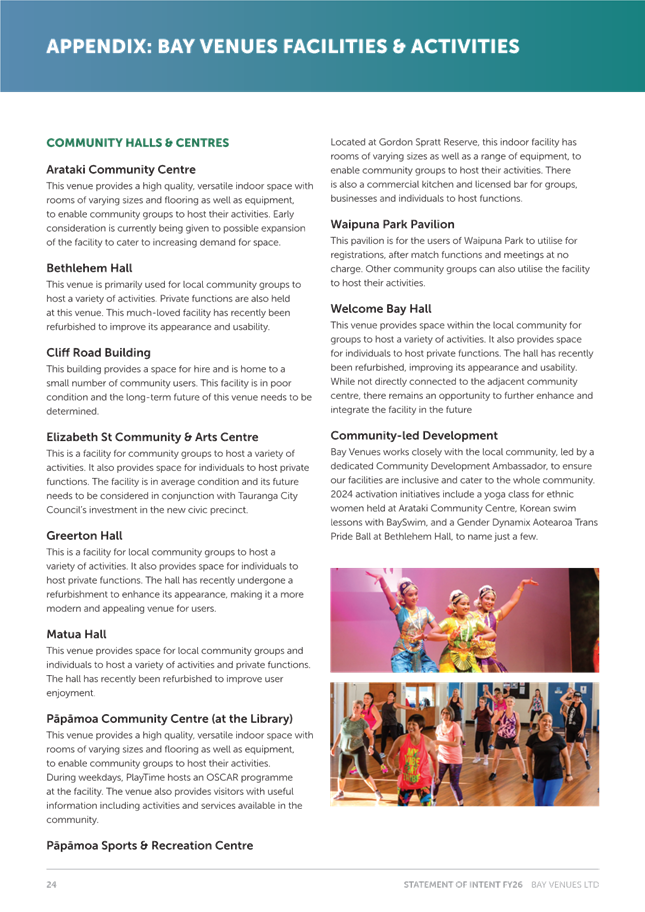
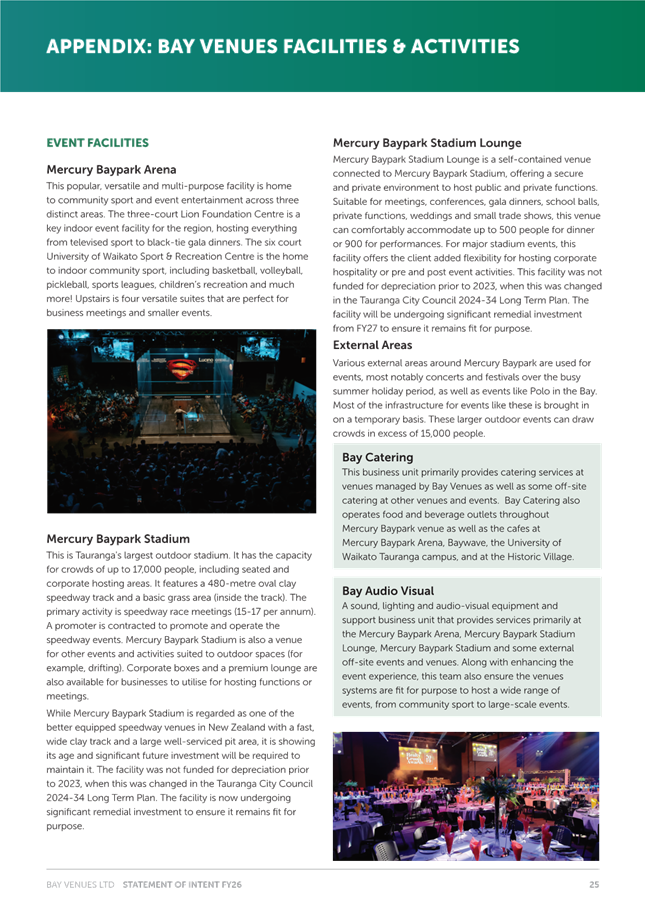
|
Ordinary
Council meeting Agenda
|
14
July 2025
|
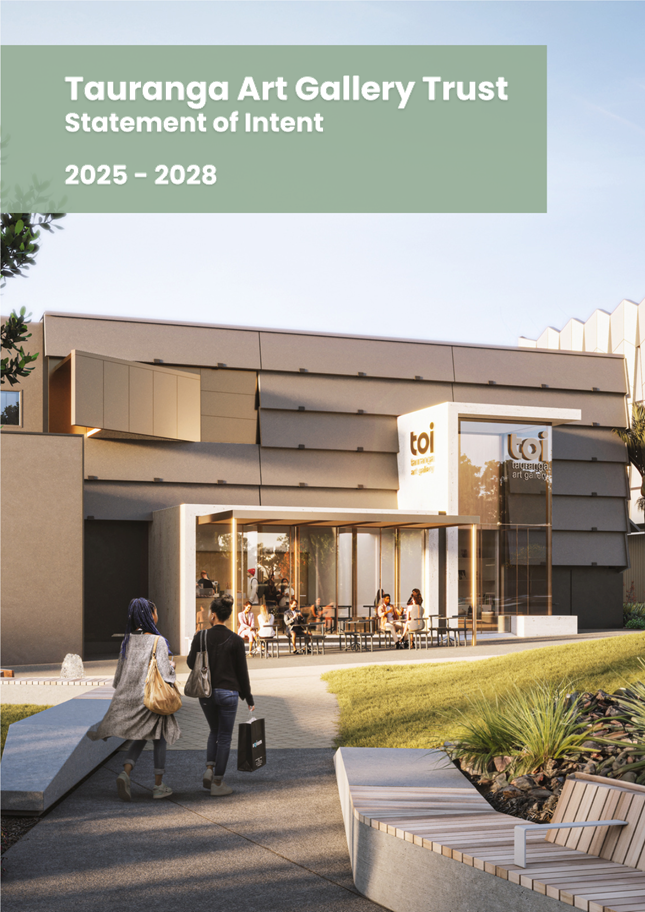
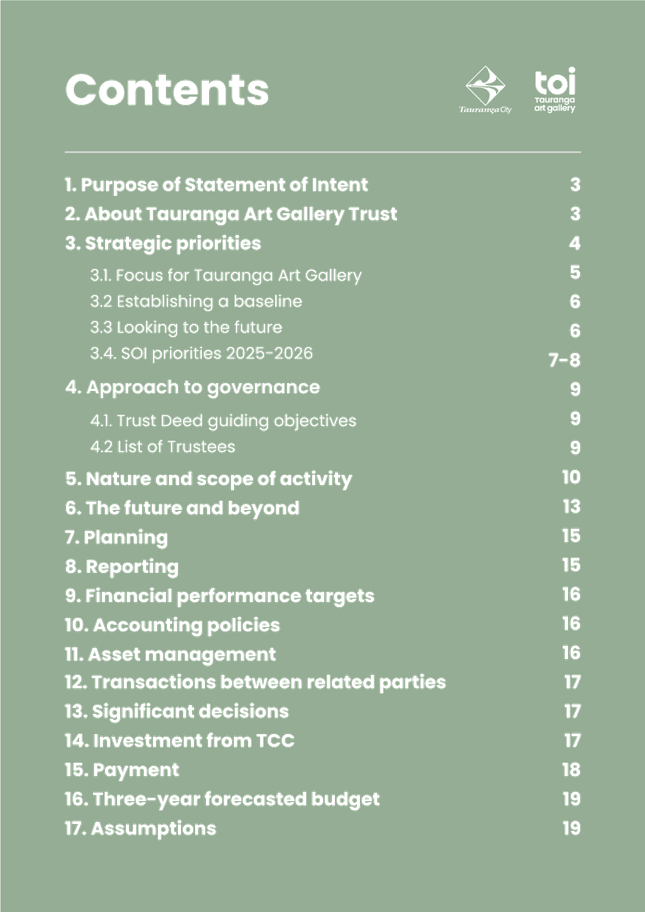
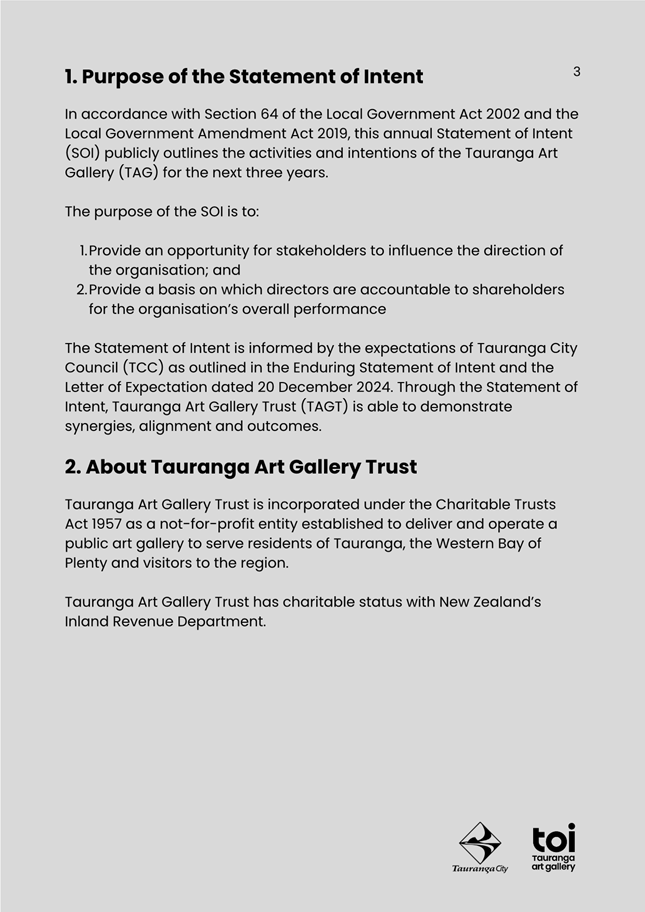
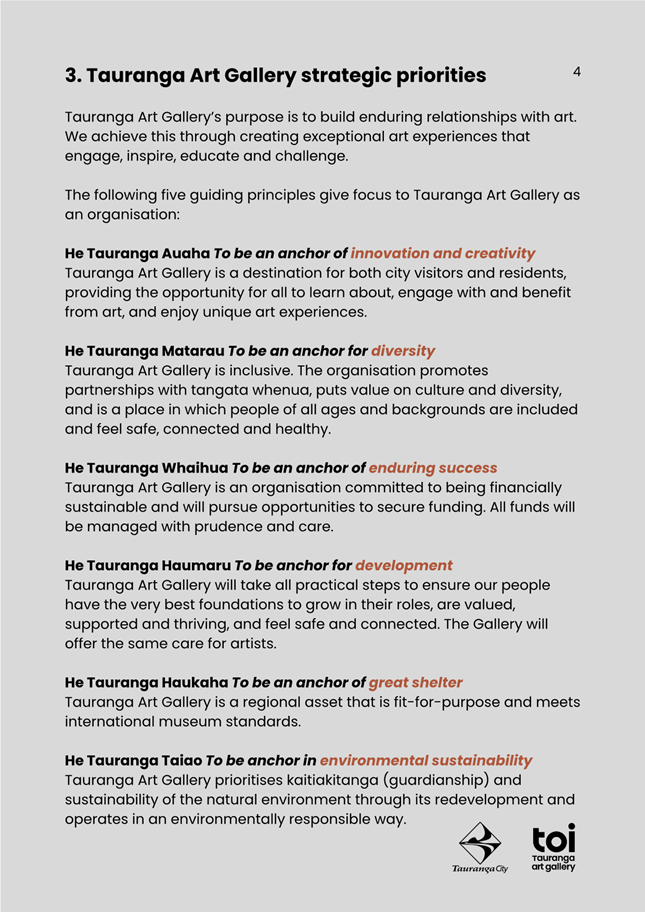
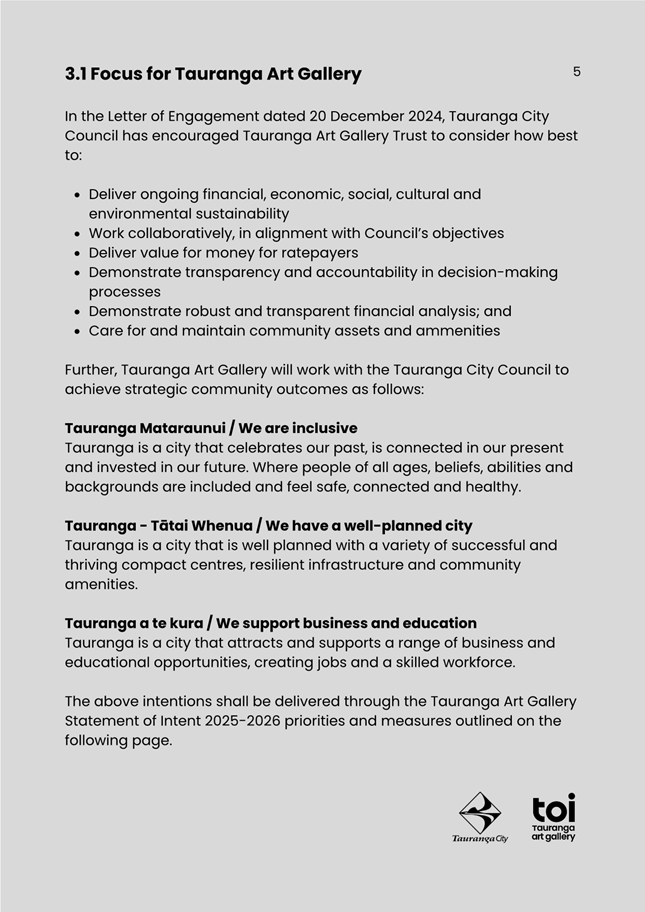
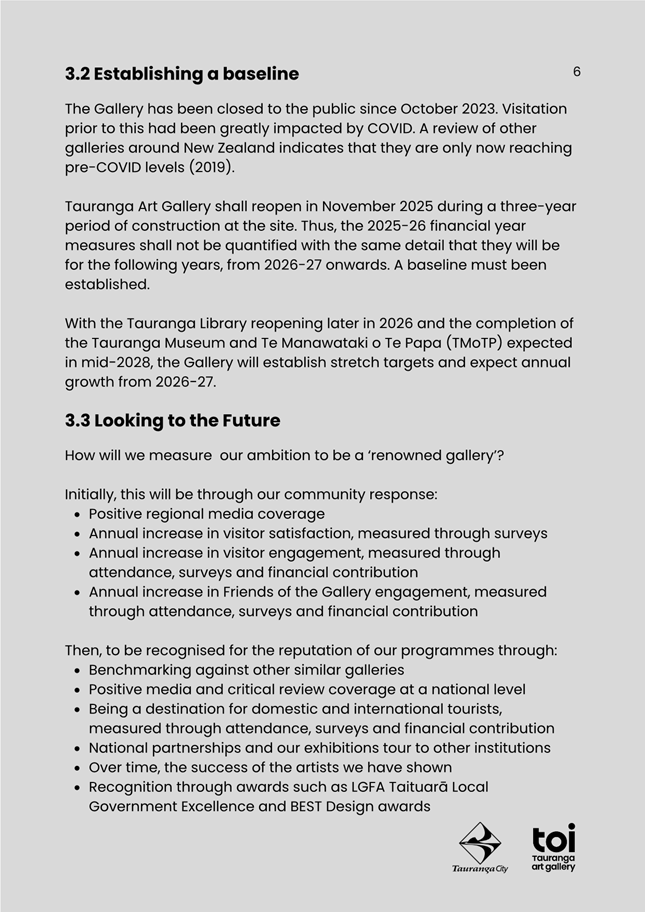
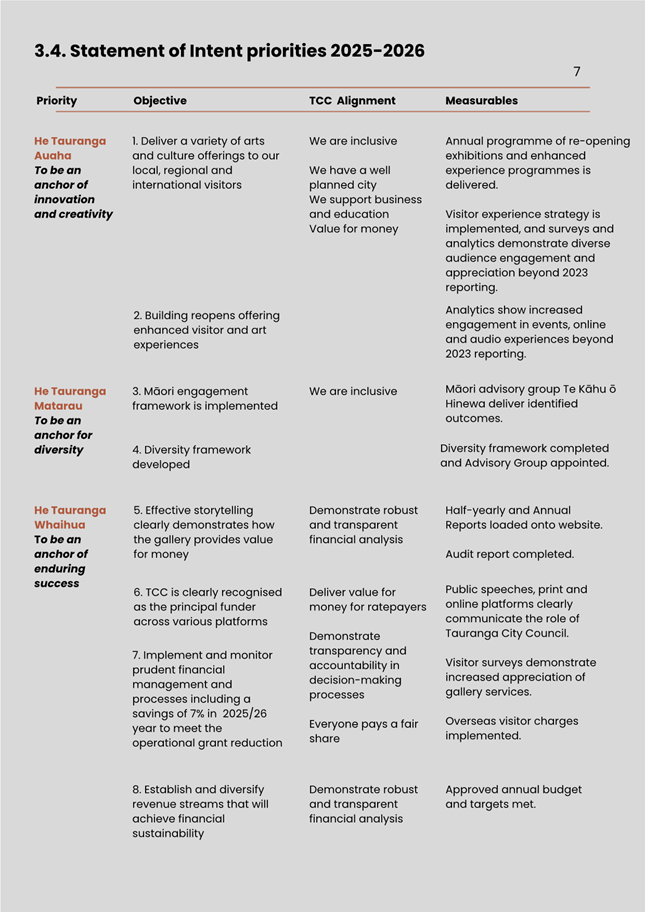

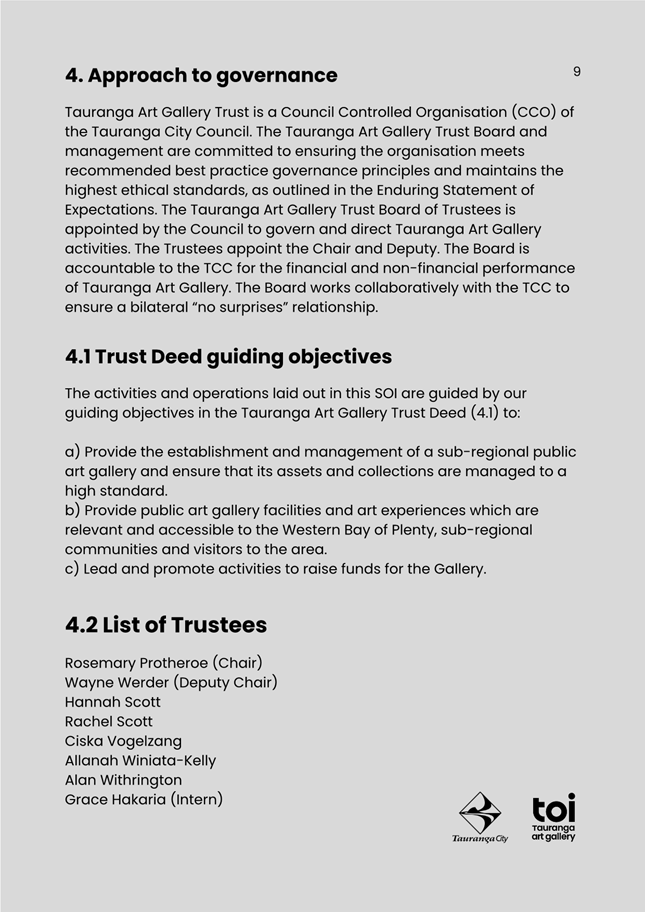
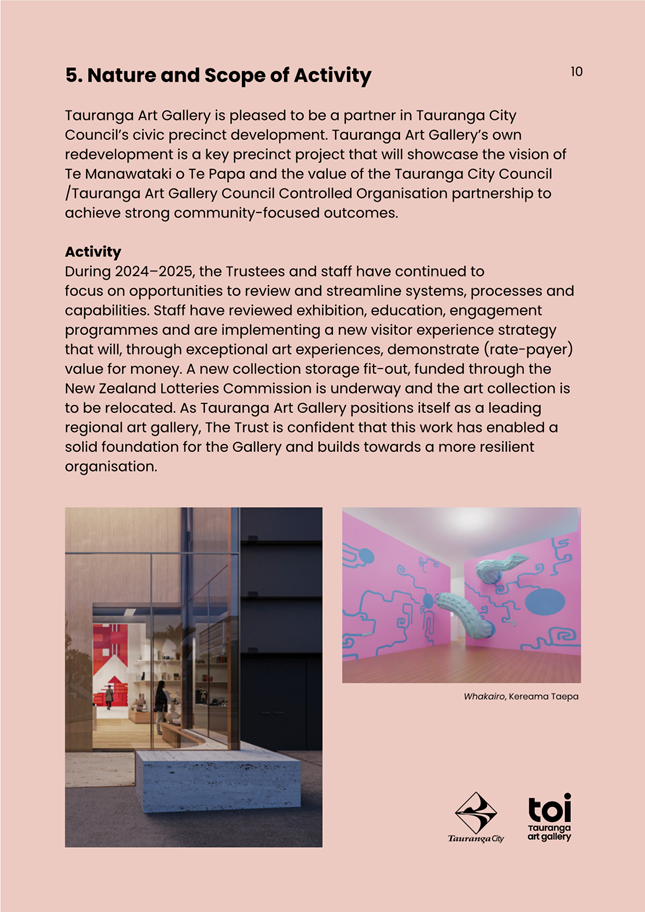

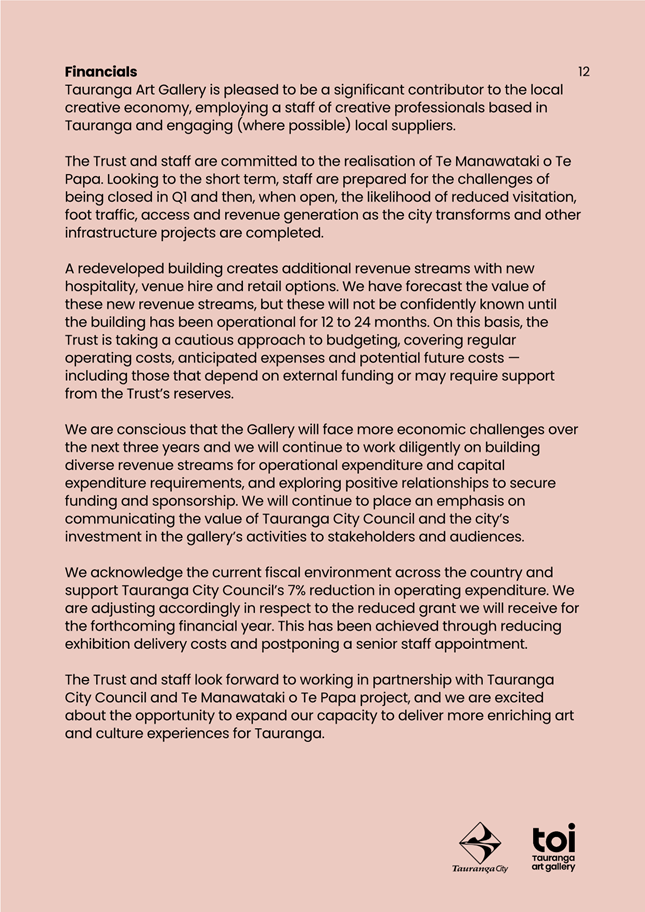
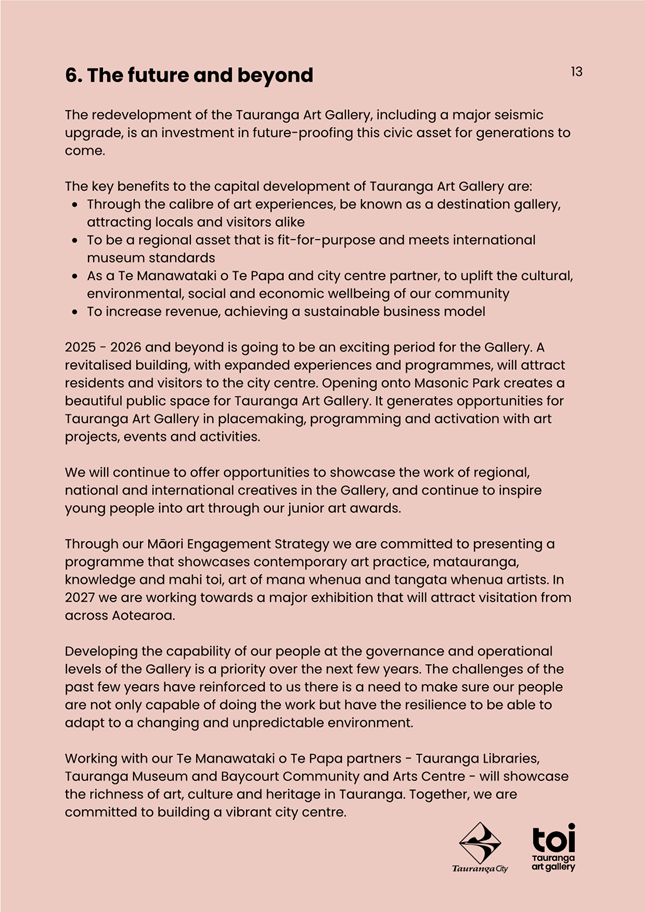

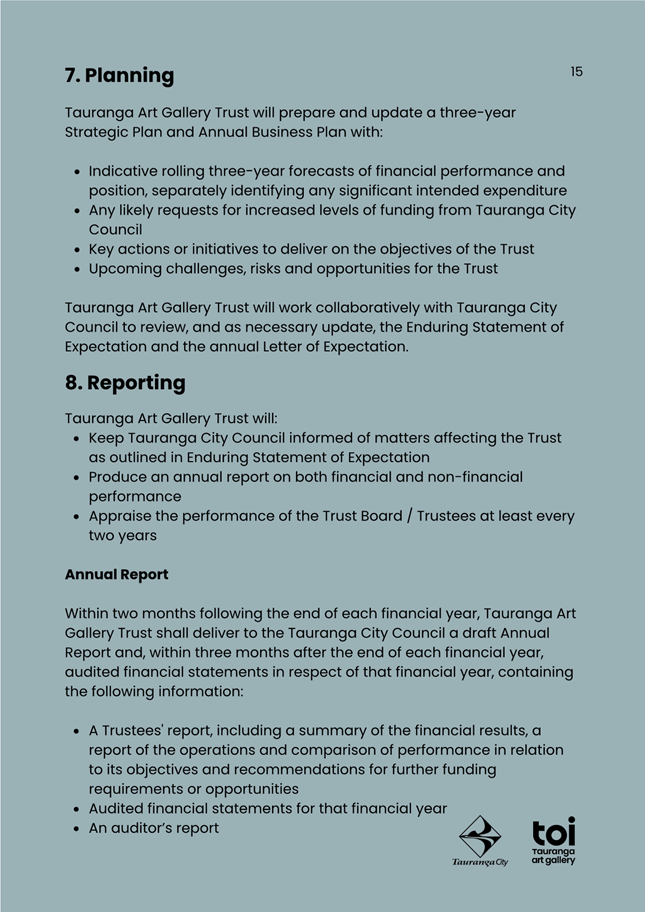
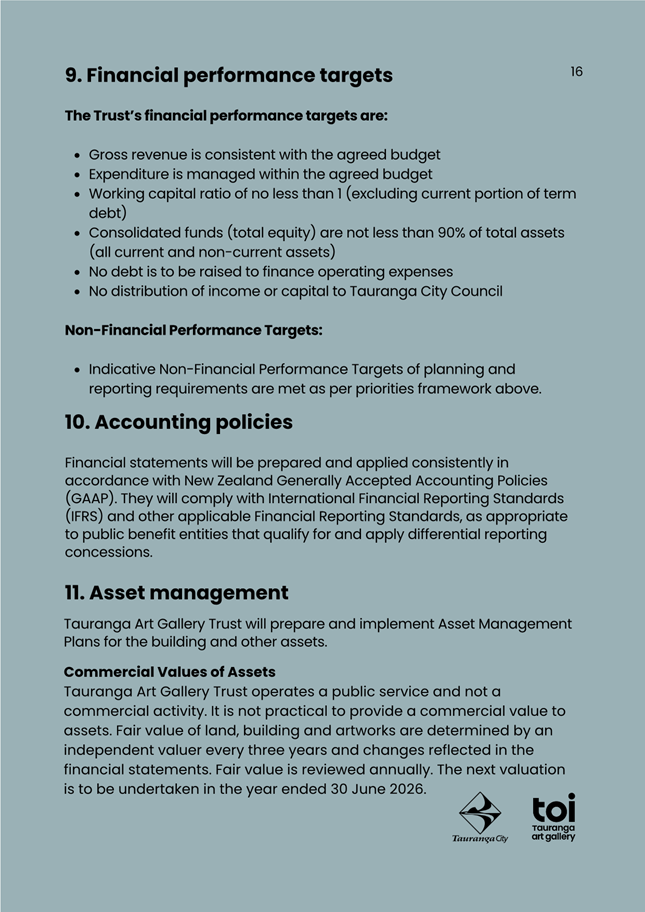
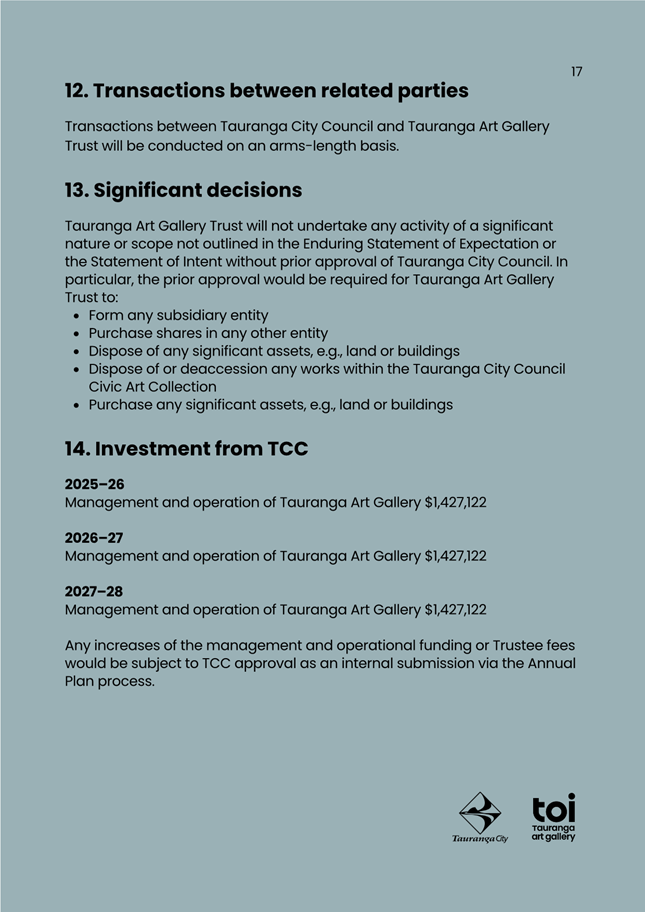
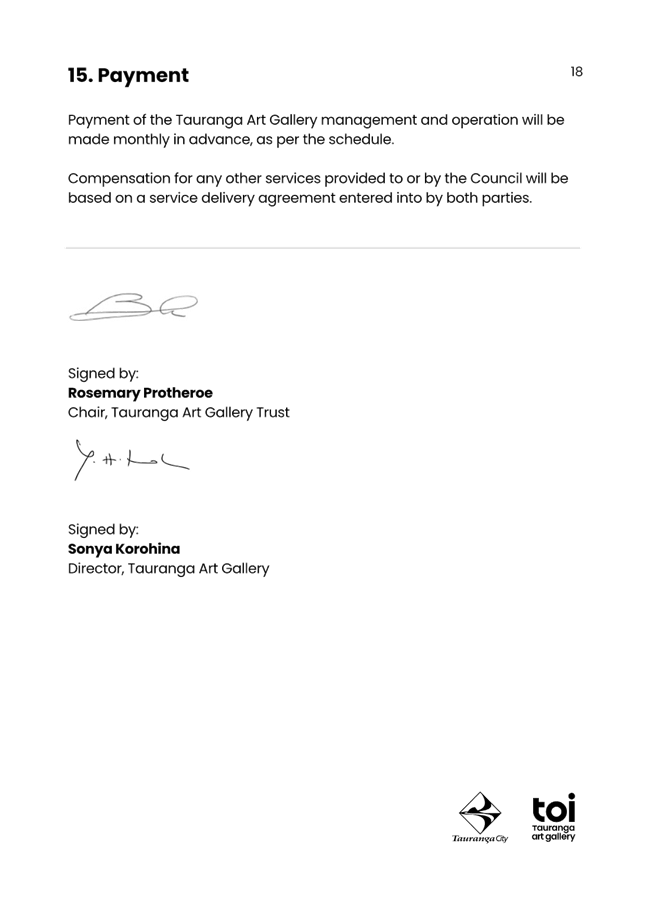
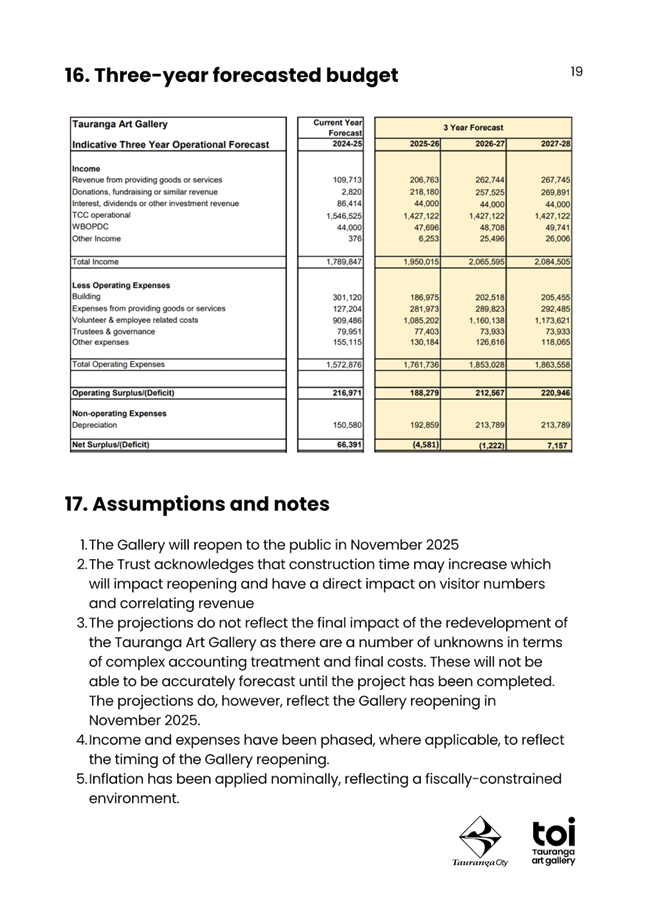
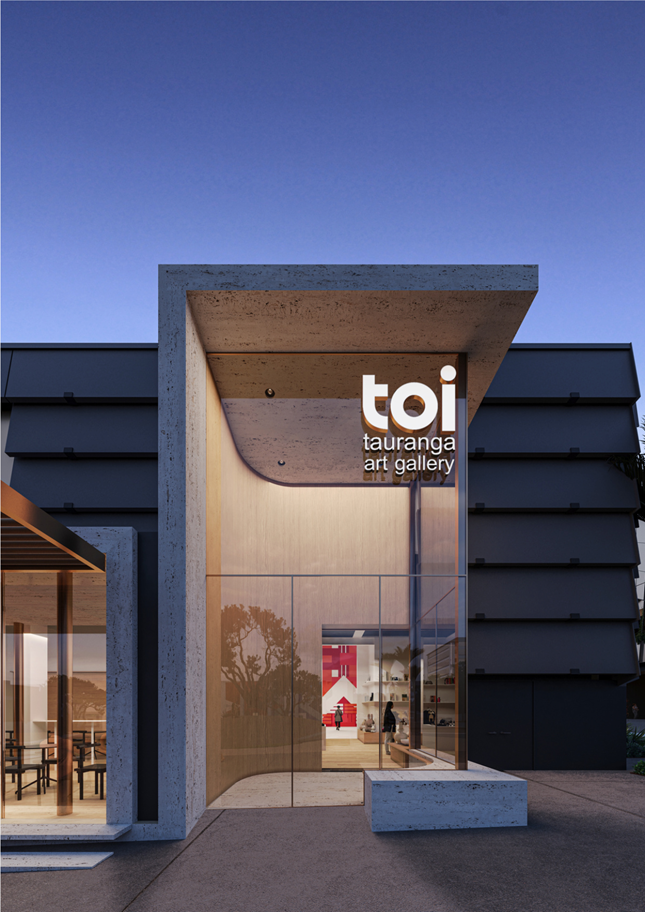
|
Ordinary
Council meeting Agenda
|
14
July 2025
|
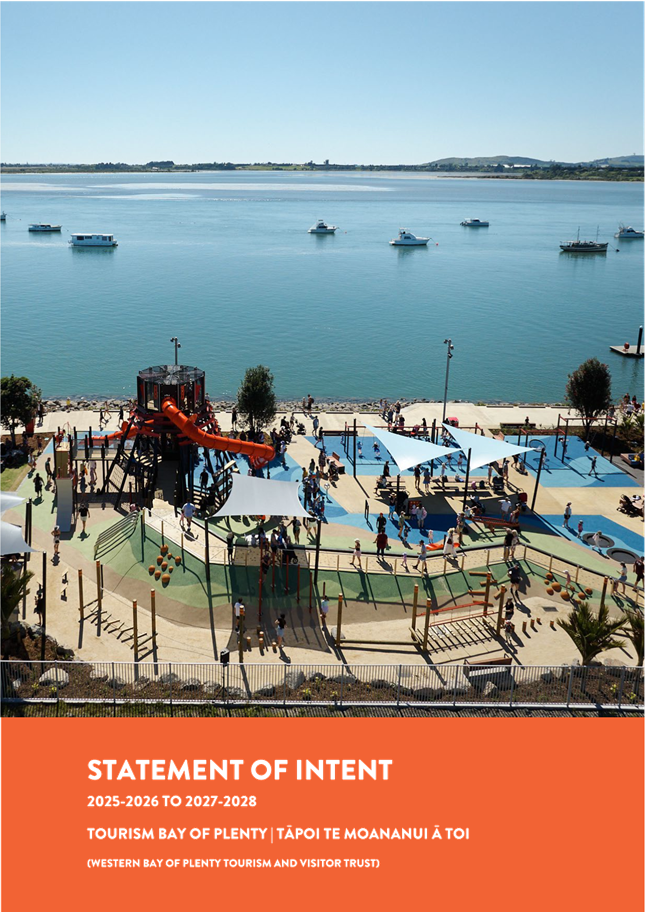
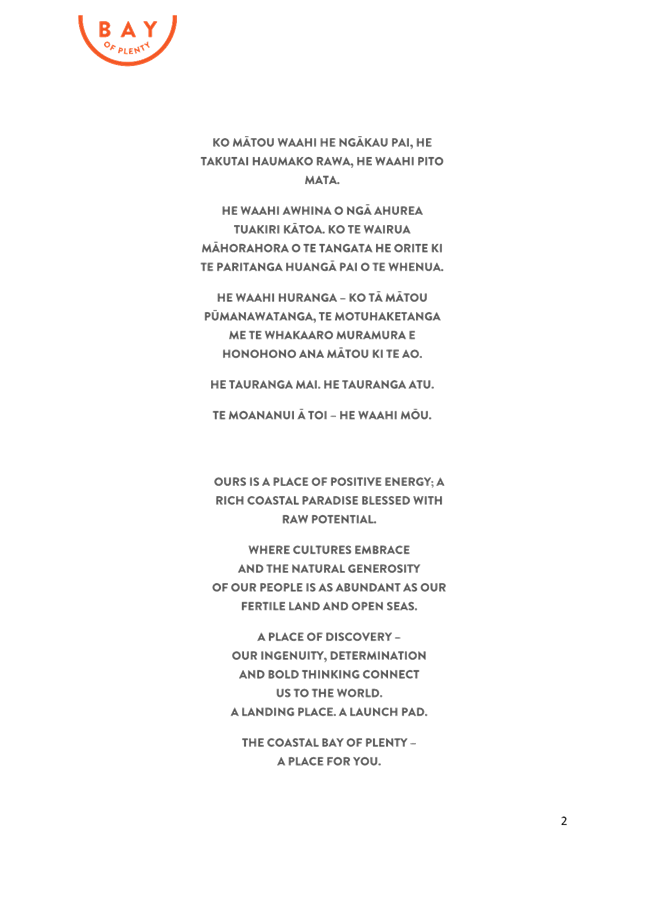


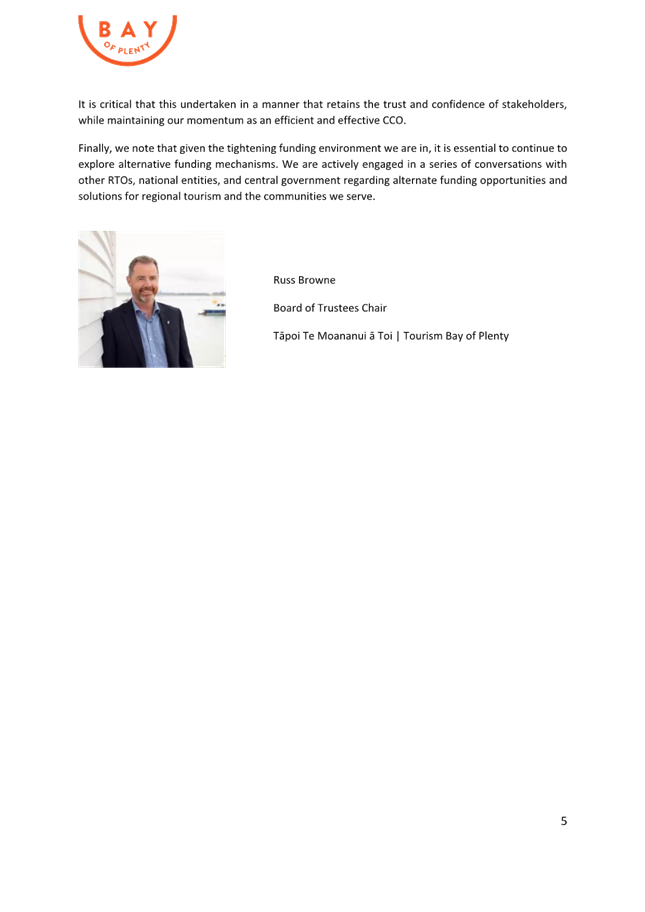
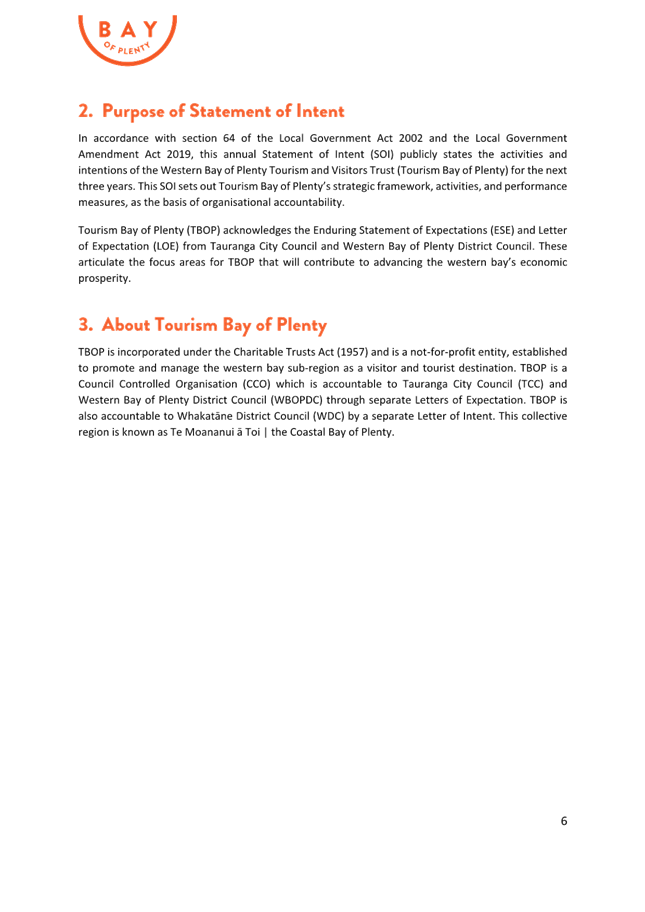
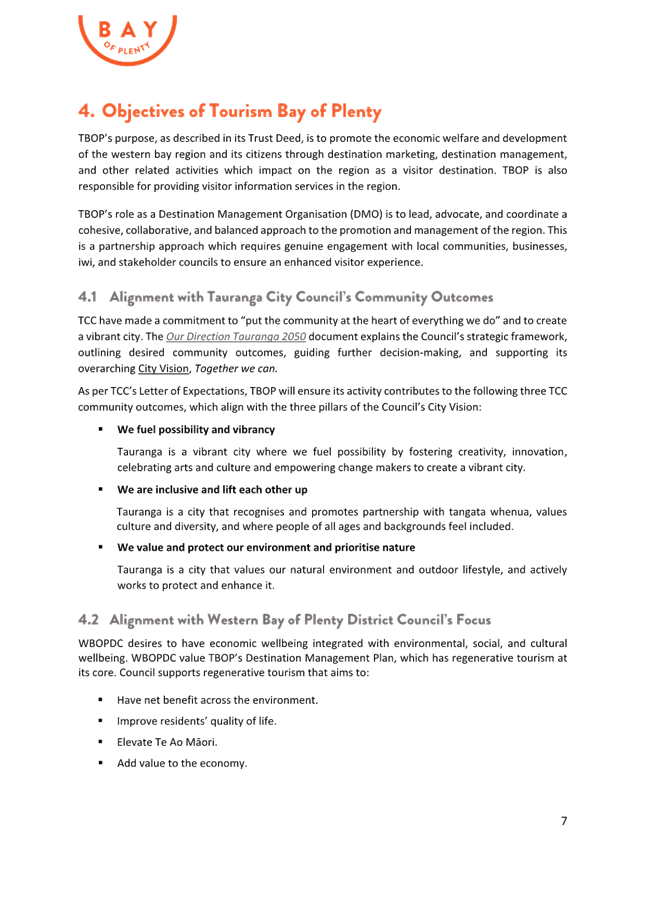
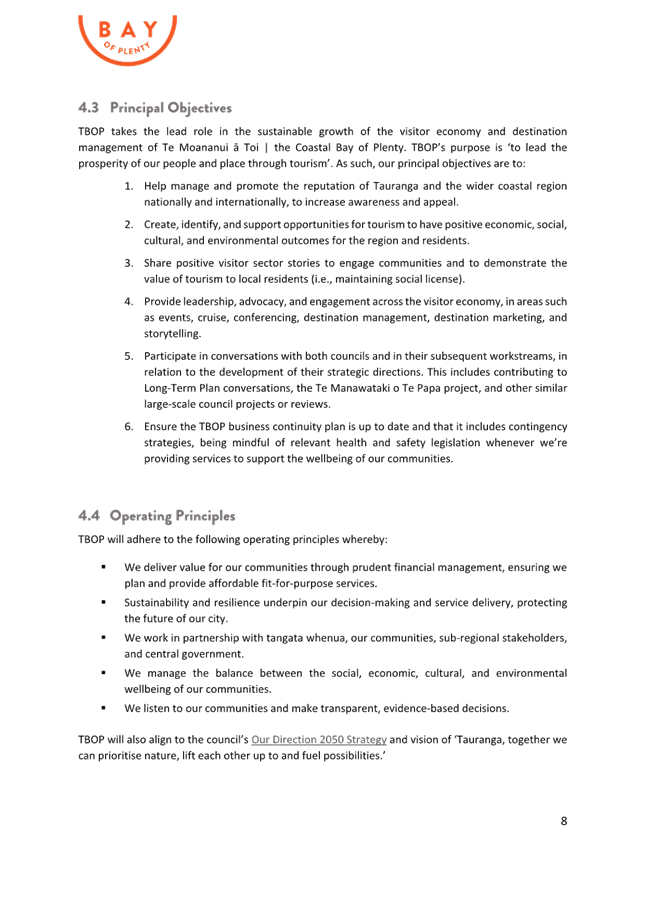
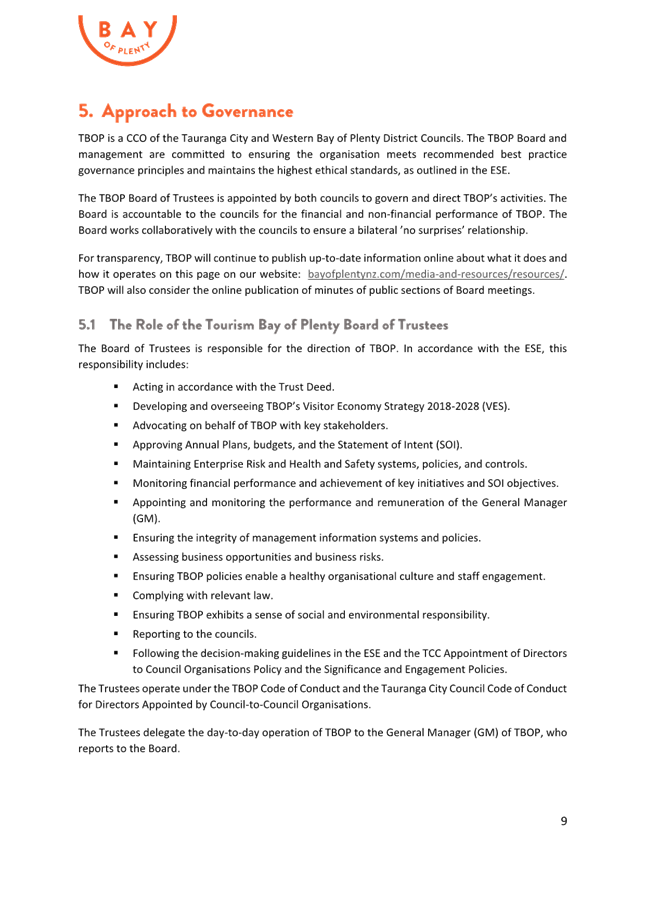

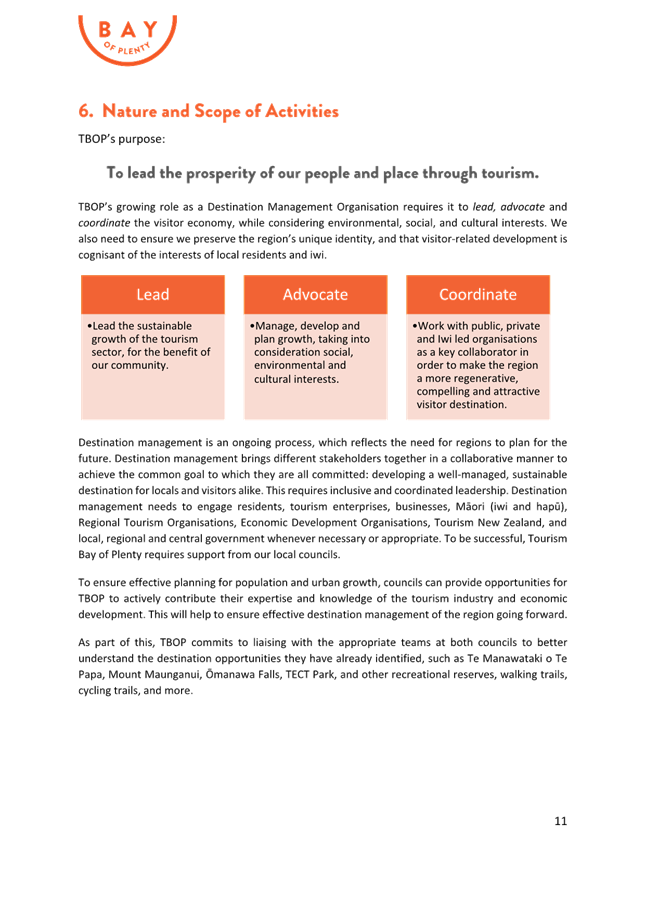
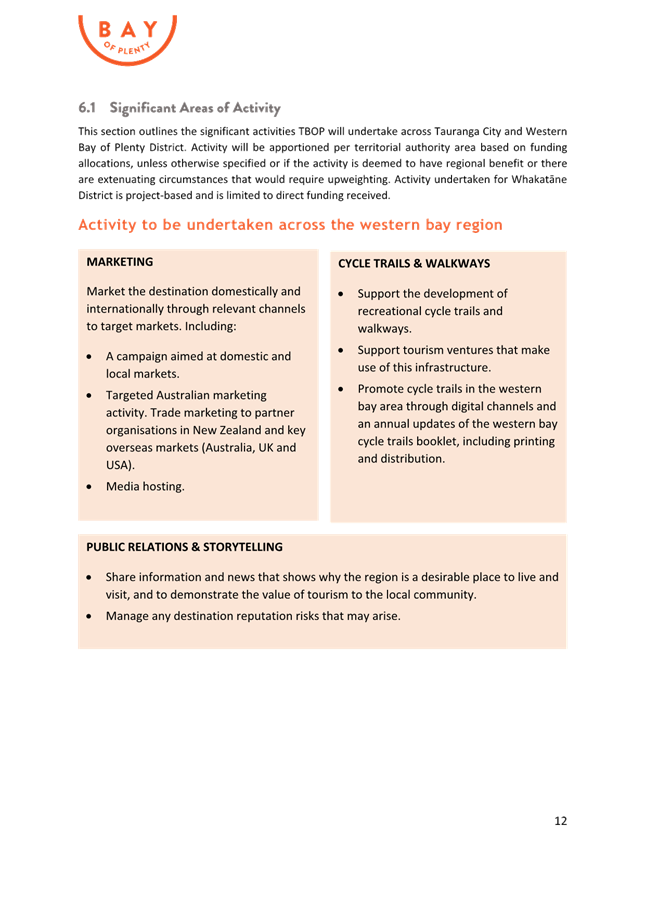
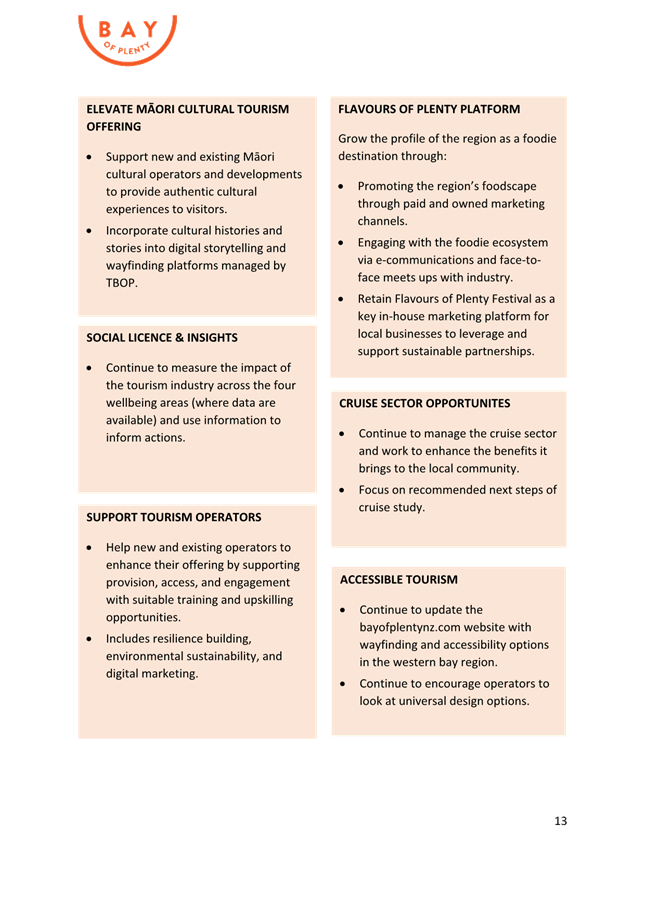
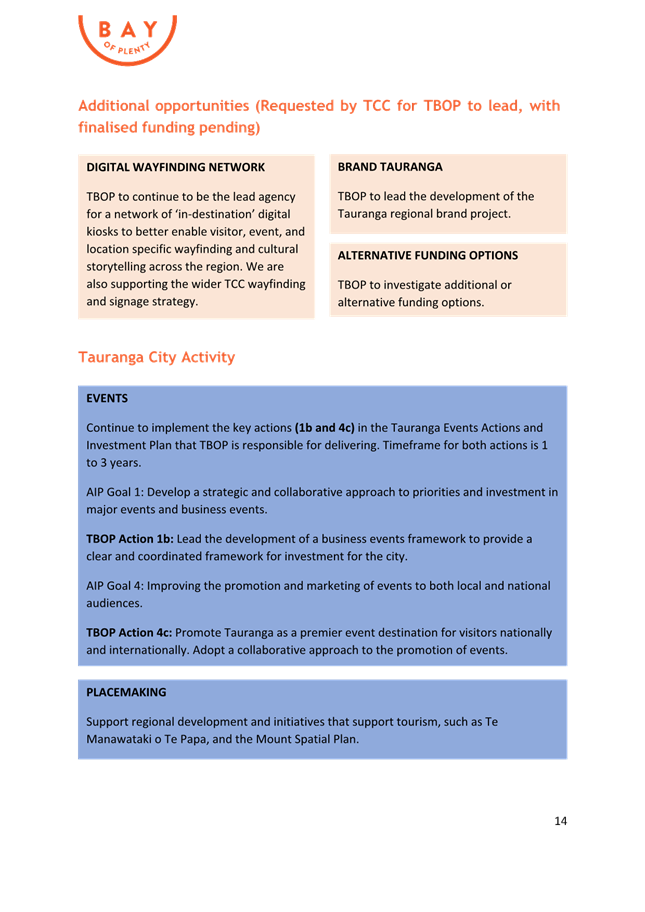
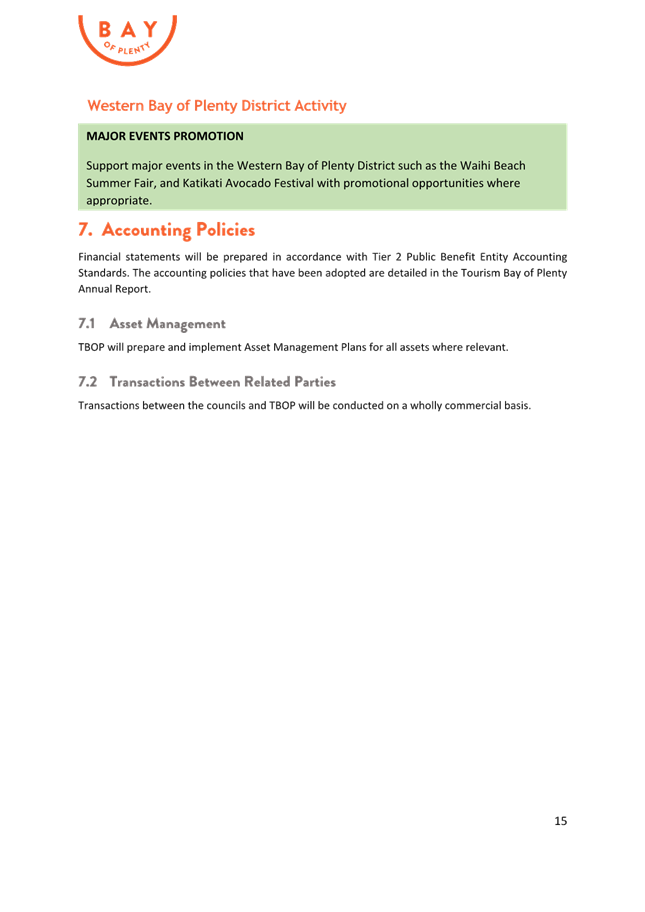
|
Ordinary
Council meeting Agenda
|
14
July 2025
|

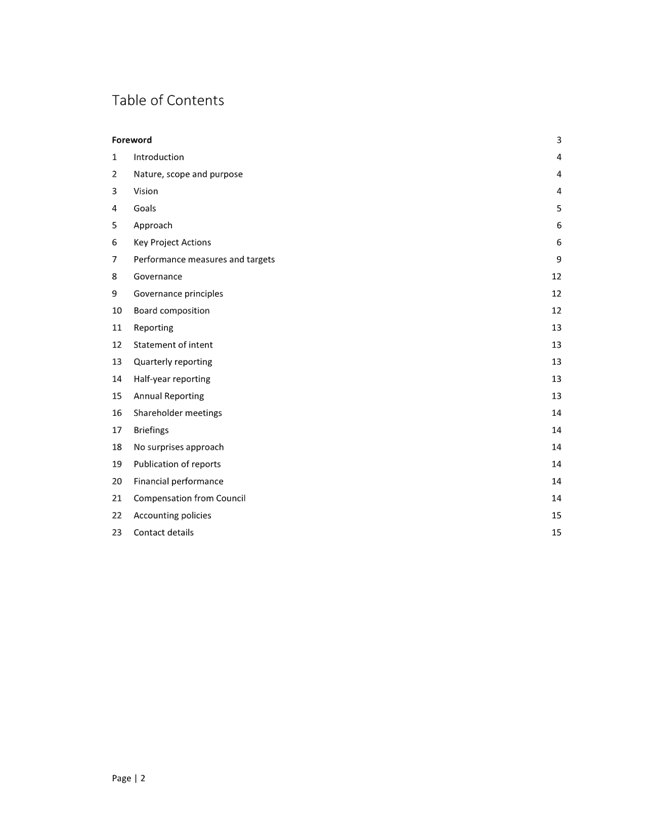
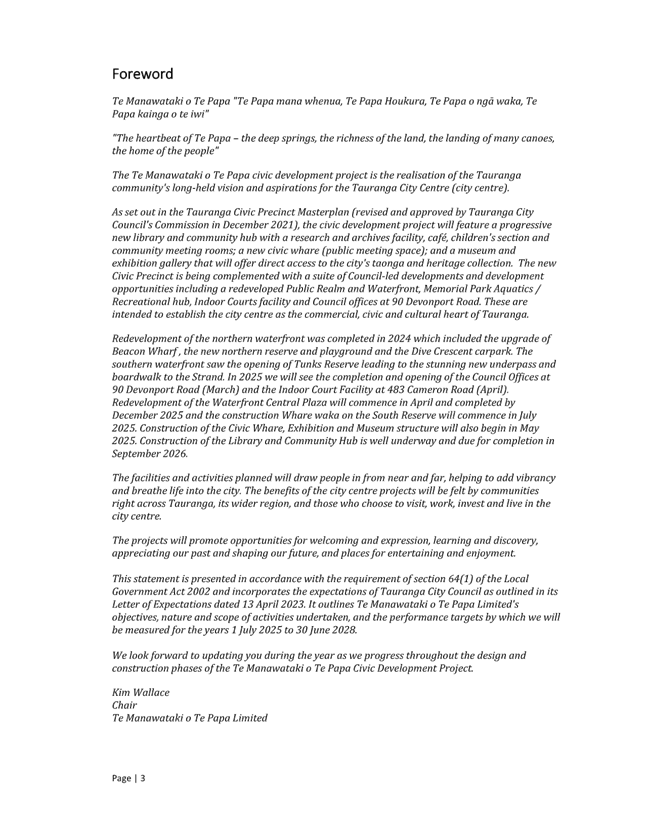
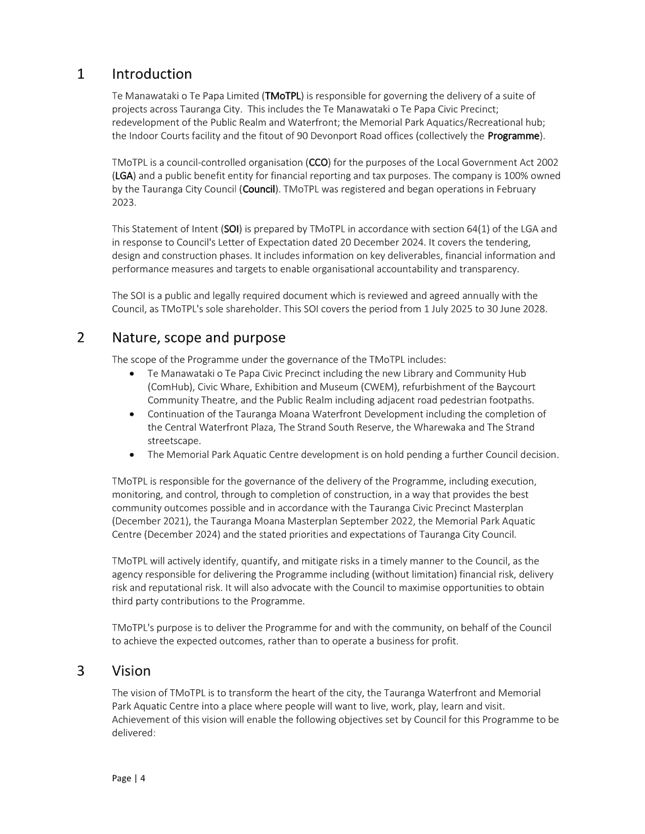
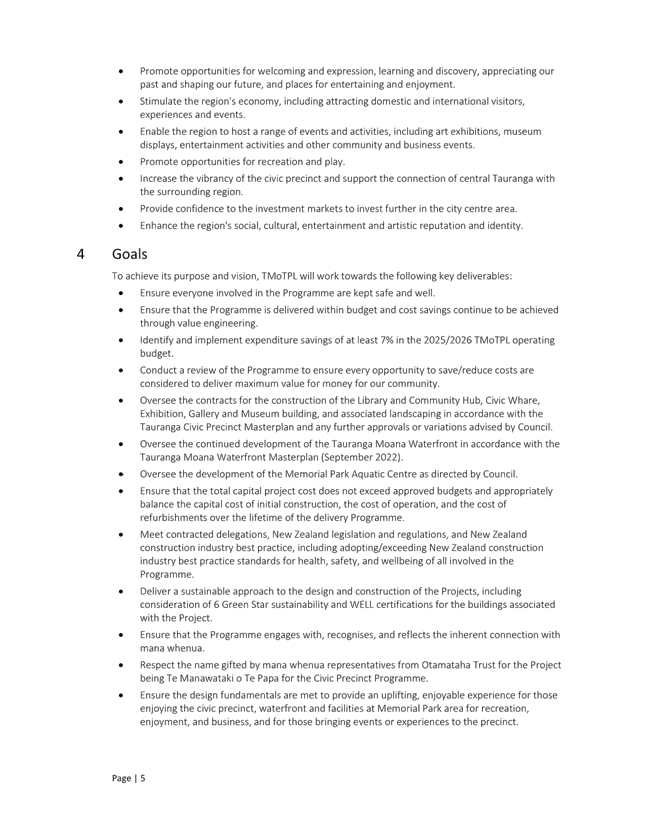

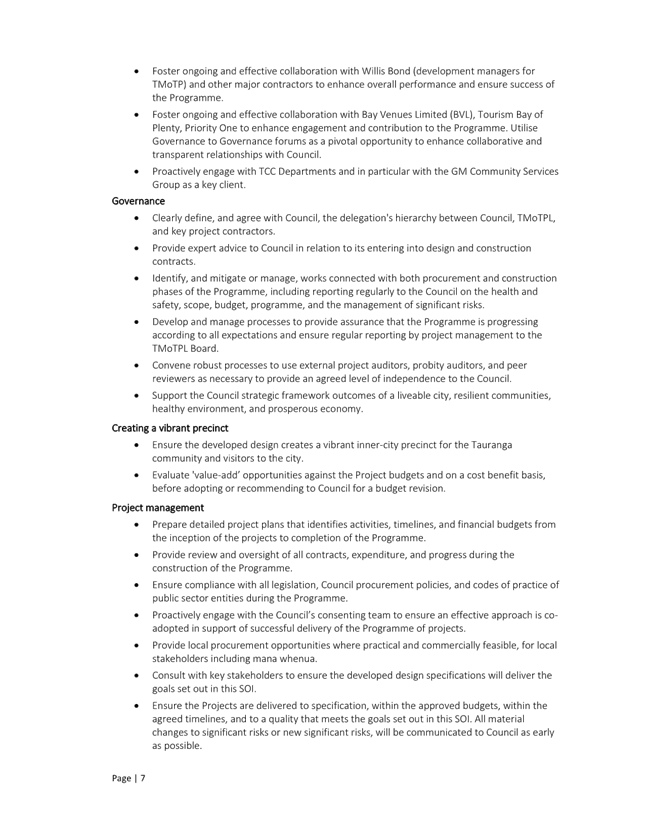
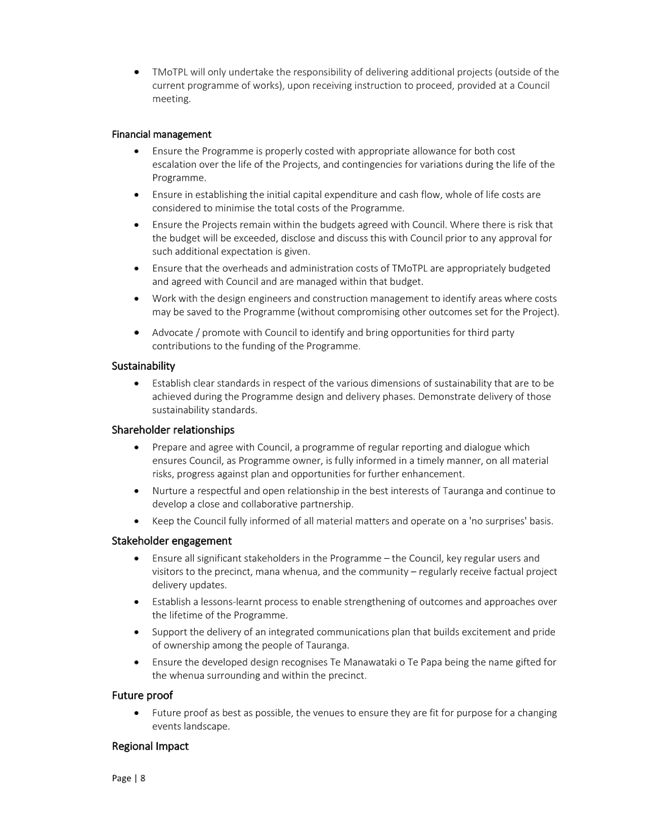
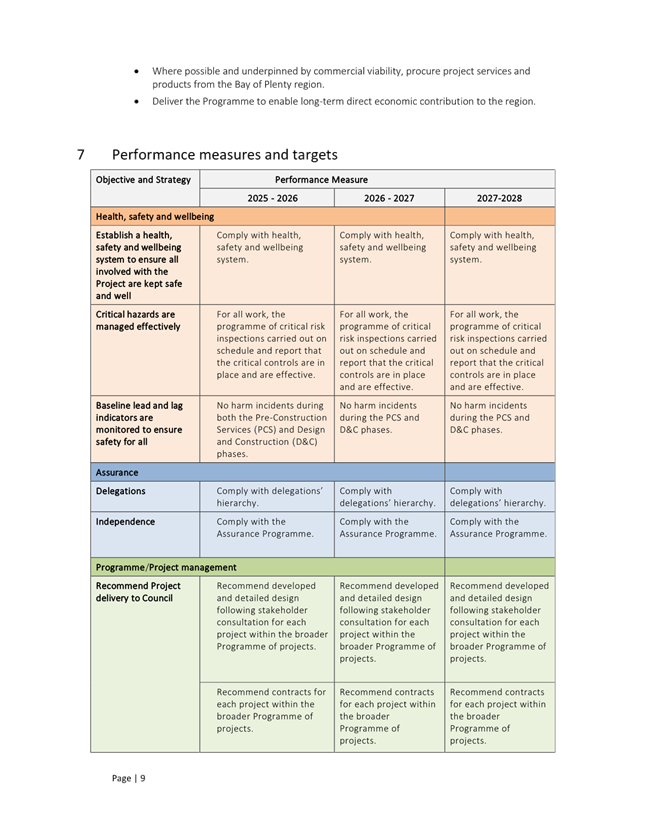
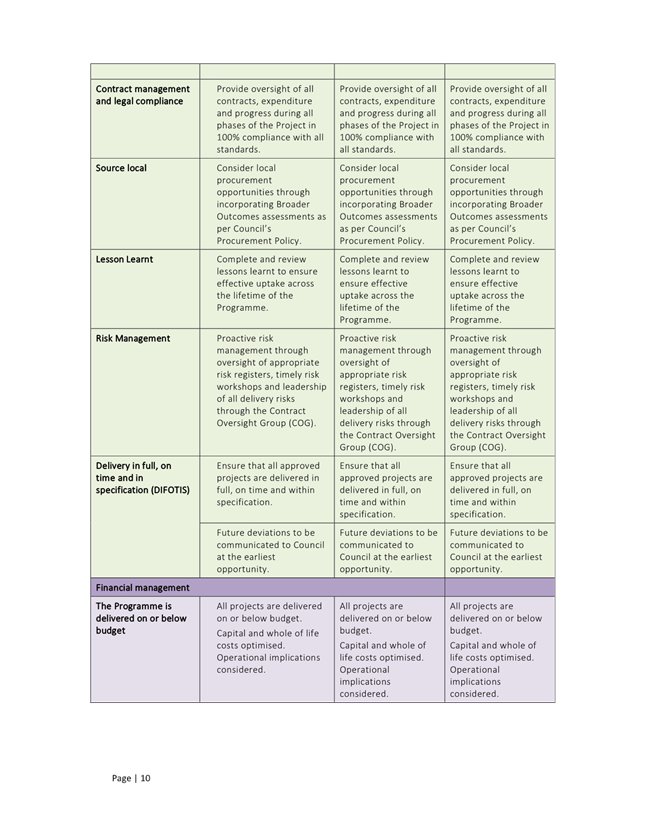
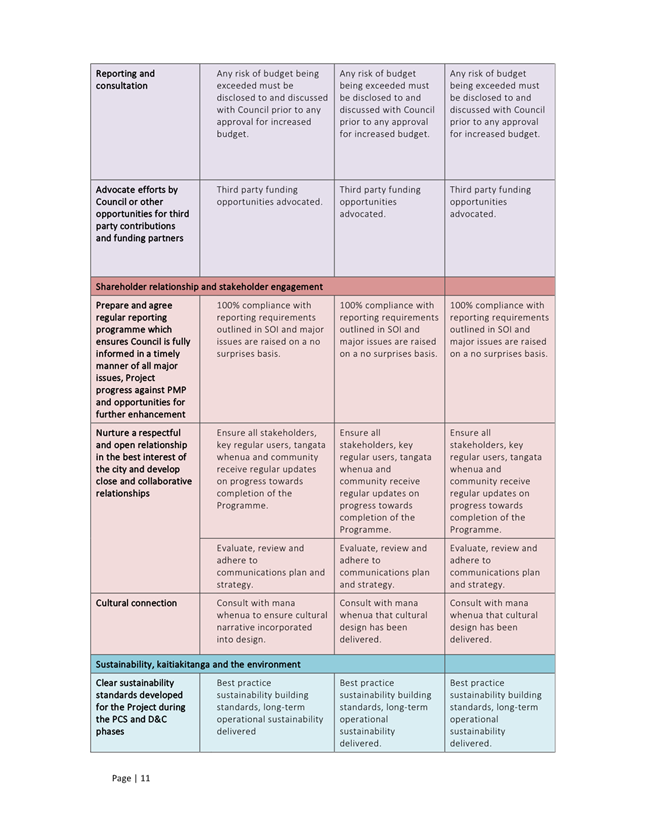
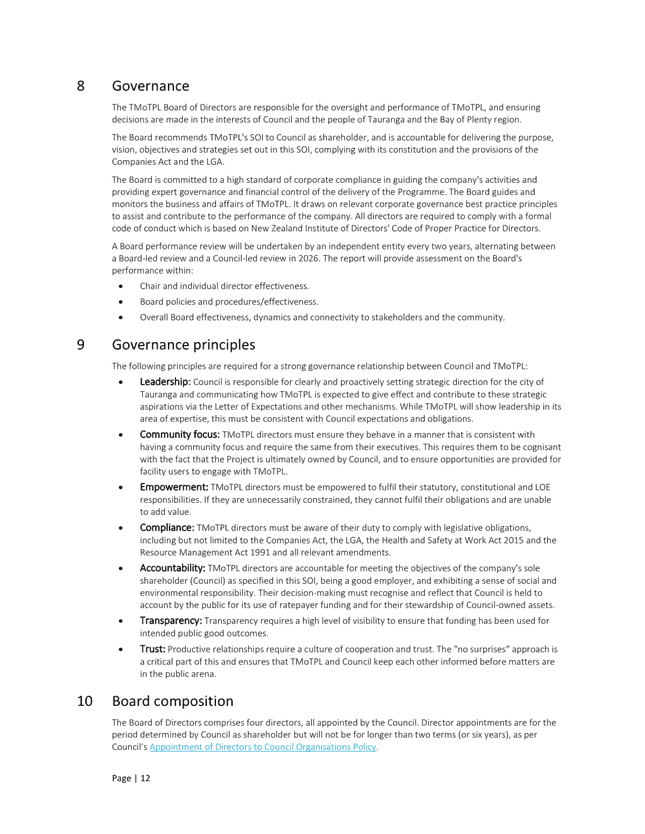
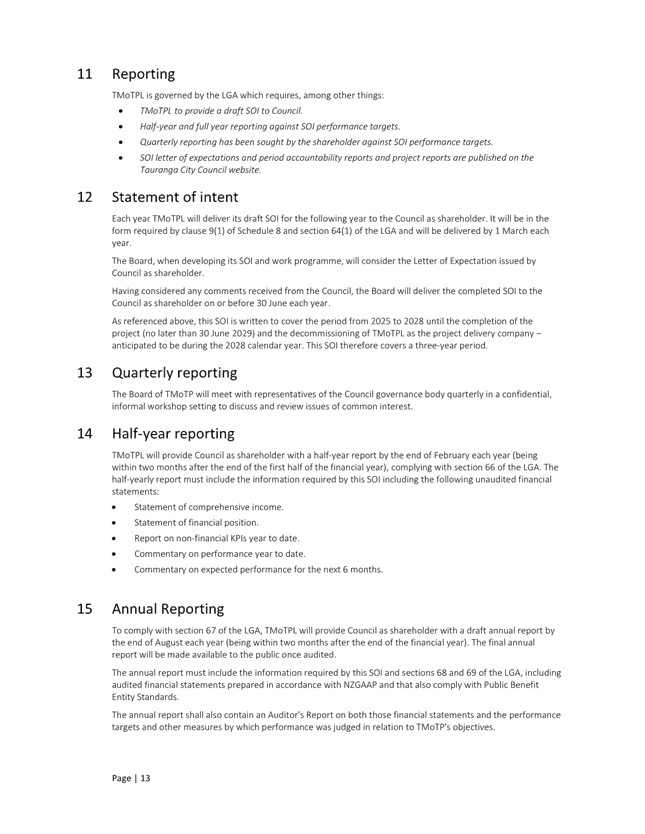

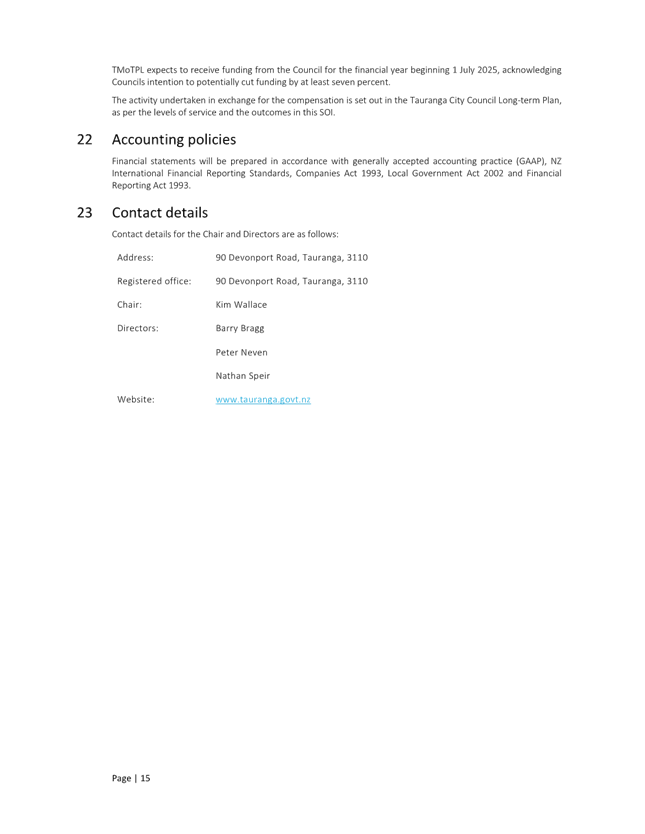
|
Ordinary
Council meeting Agenda
|
14
July 2025
|
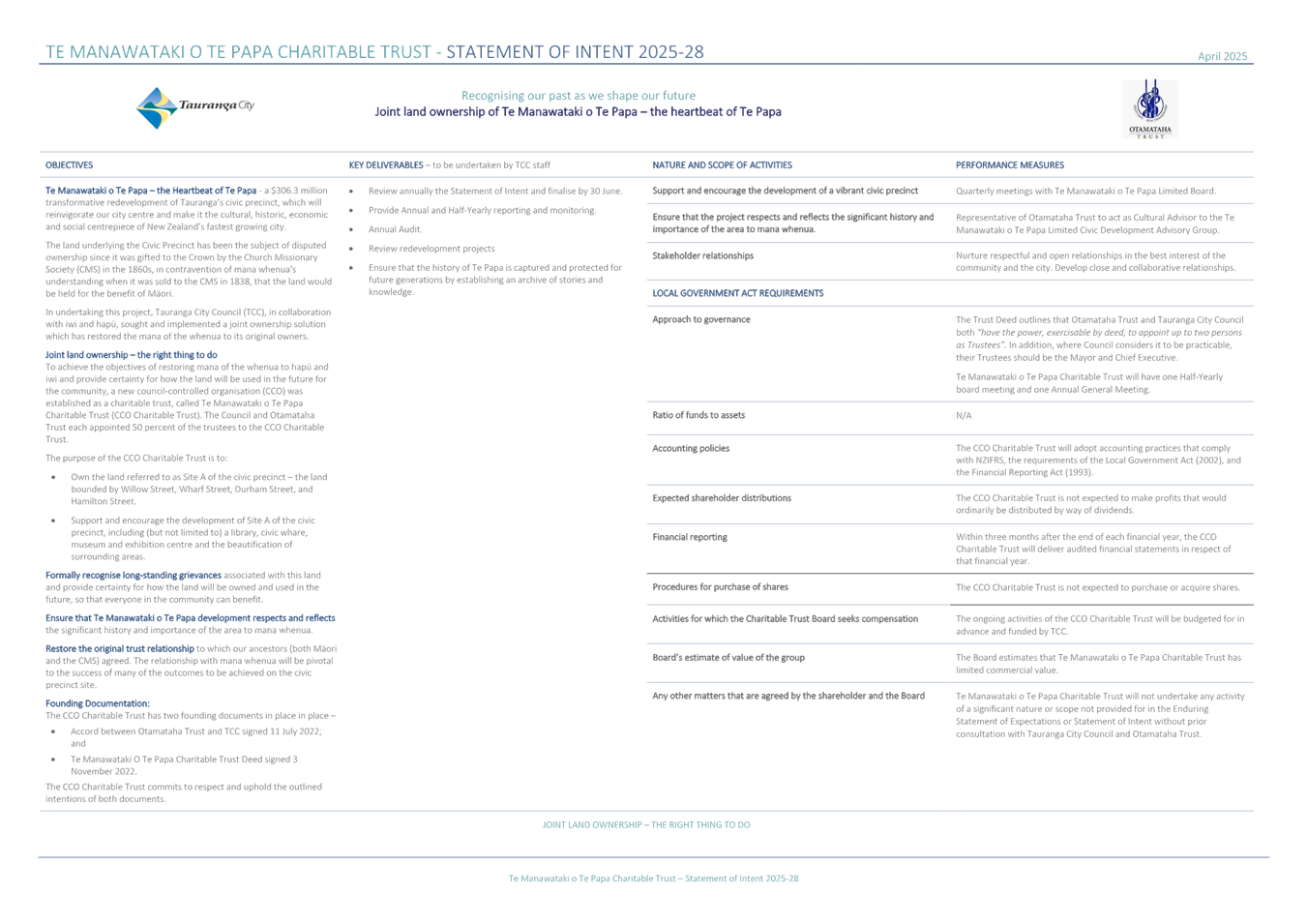
|
Ordinary
Council meeting Agenda
|
14
July 2025
|
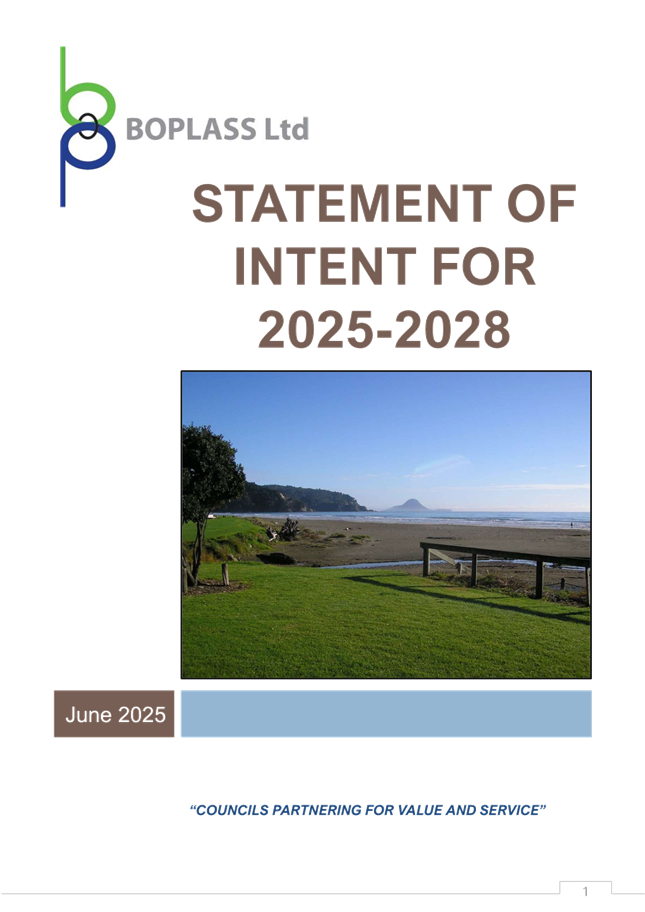


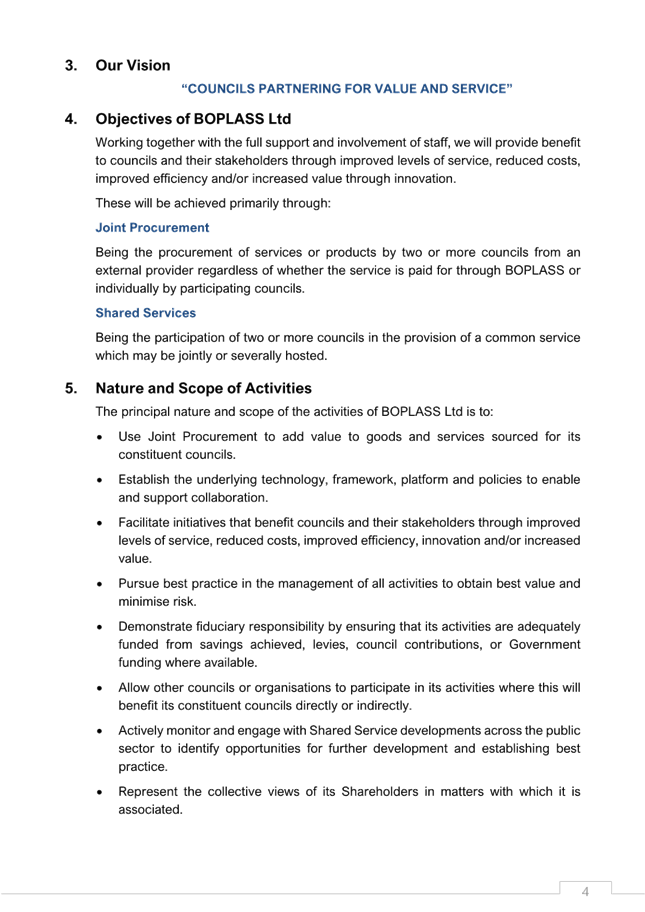
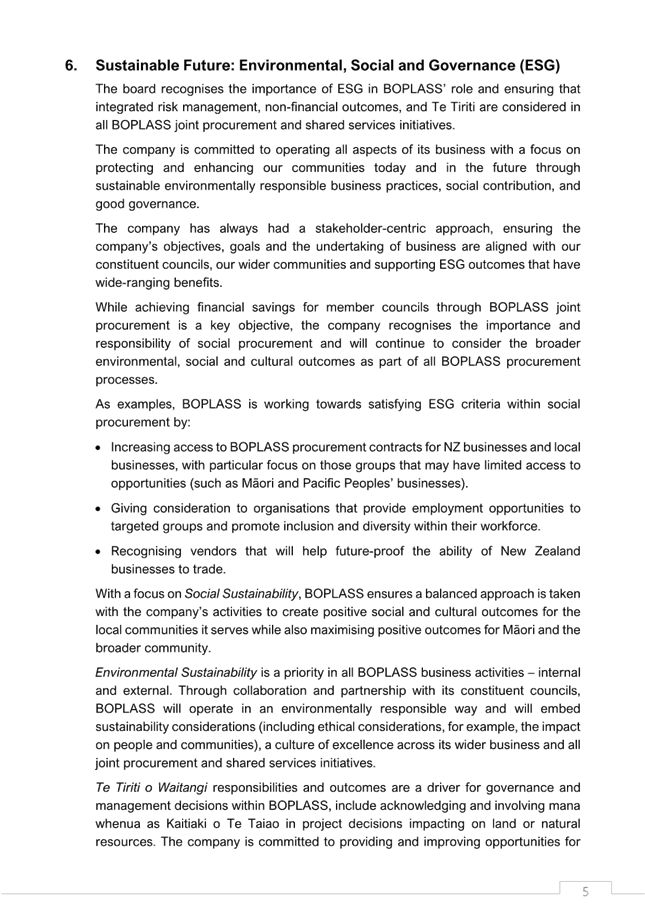
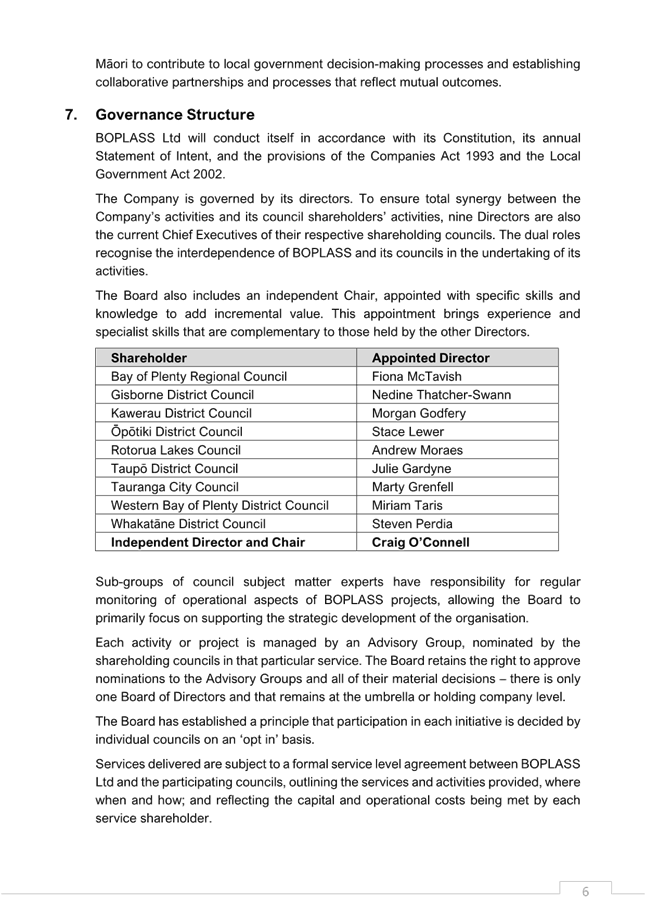
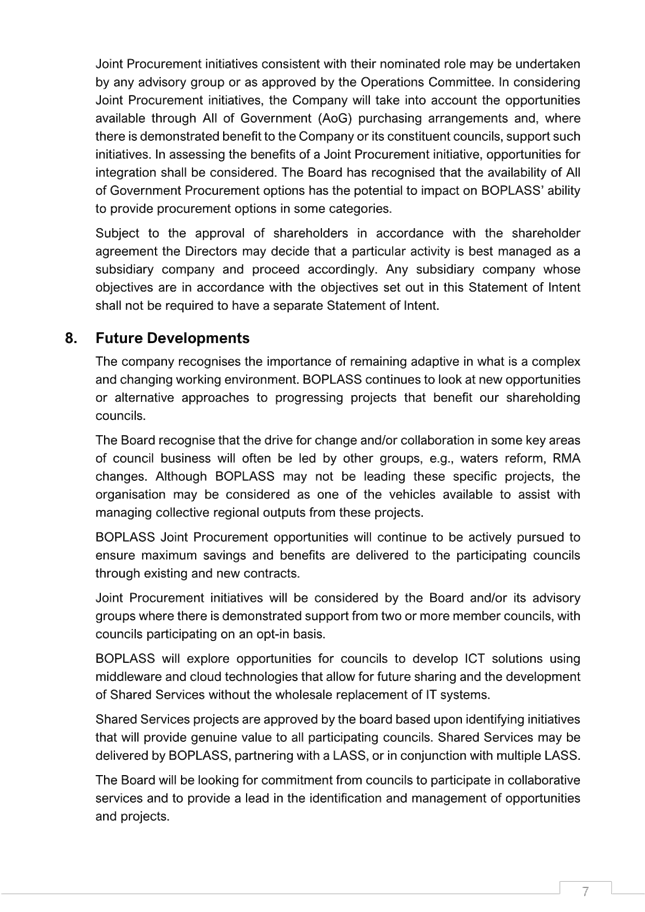
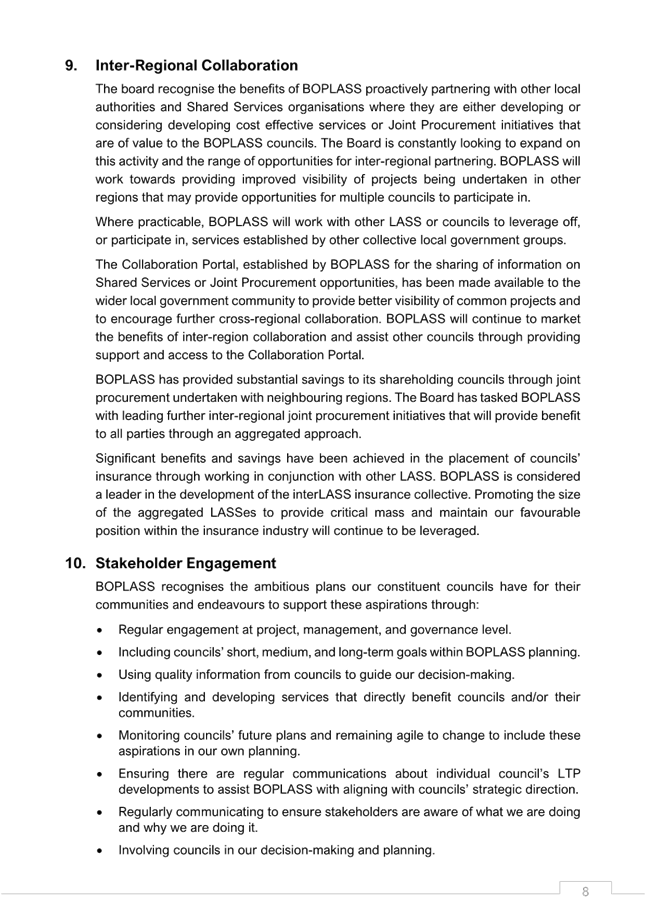
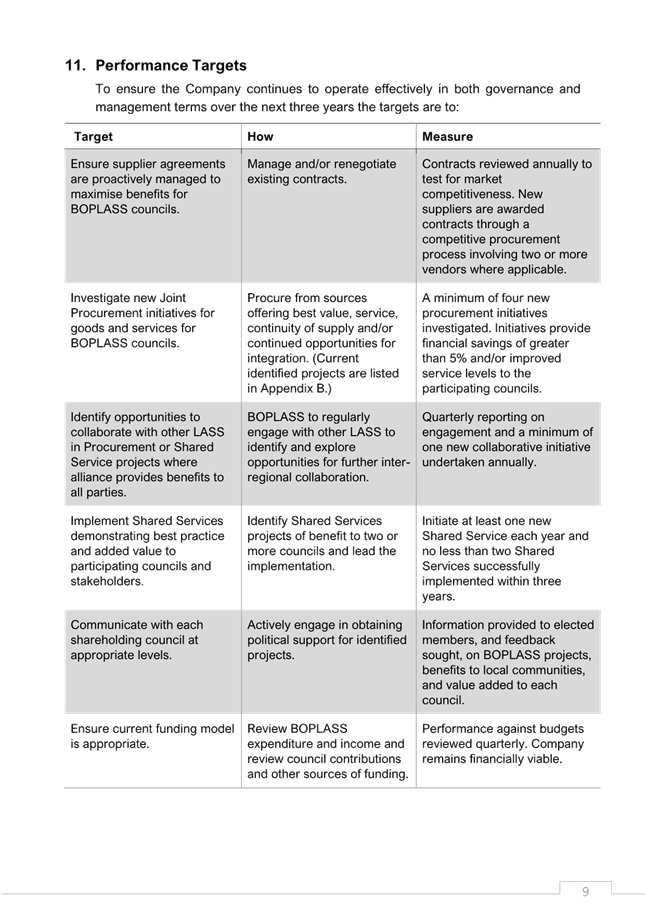
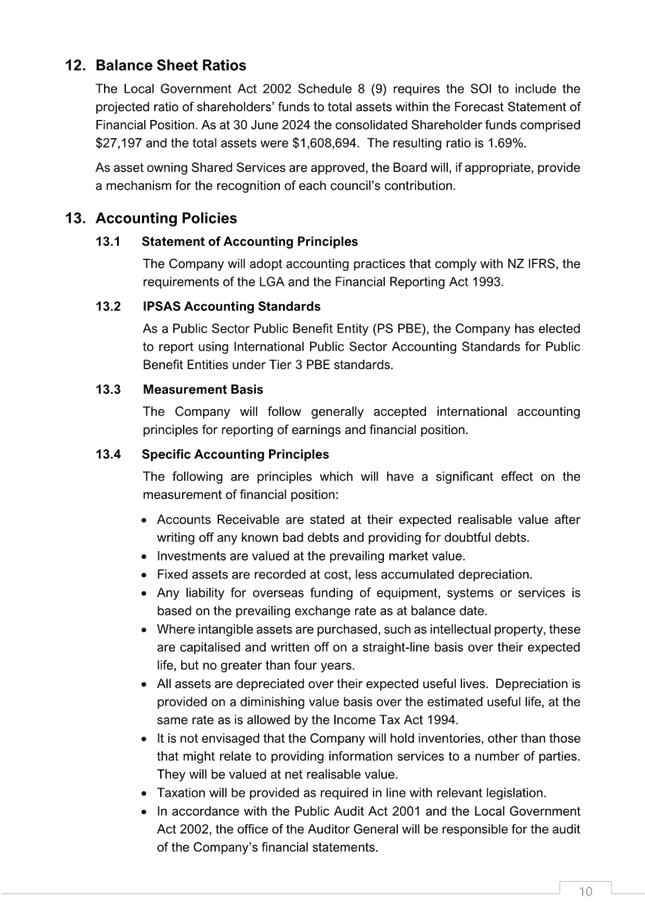

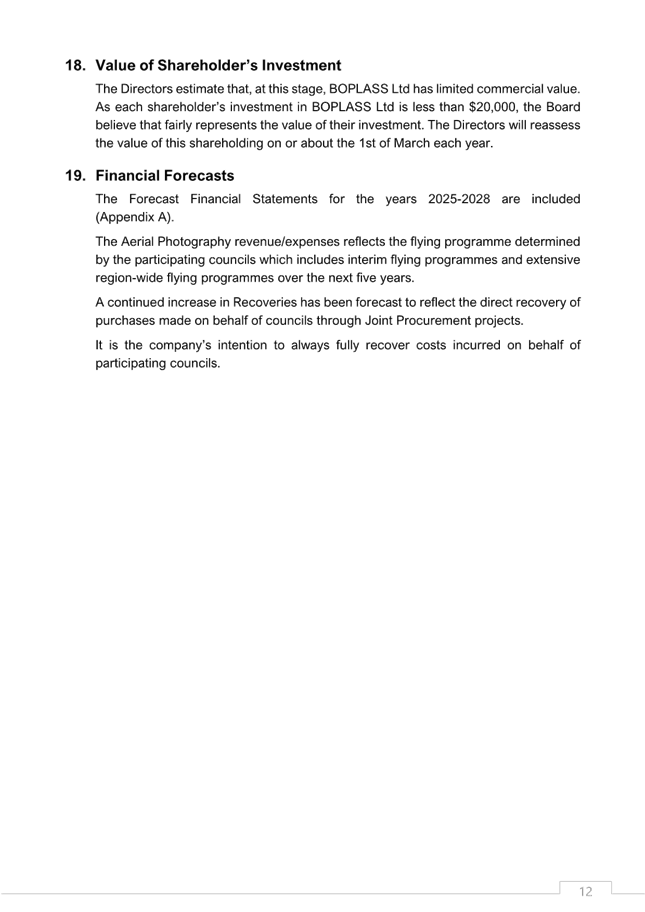
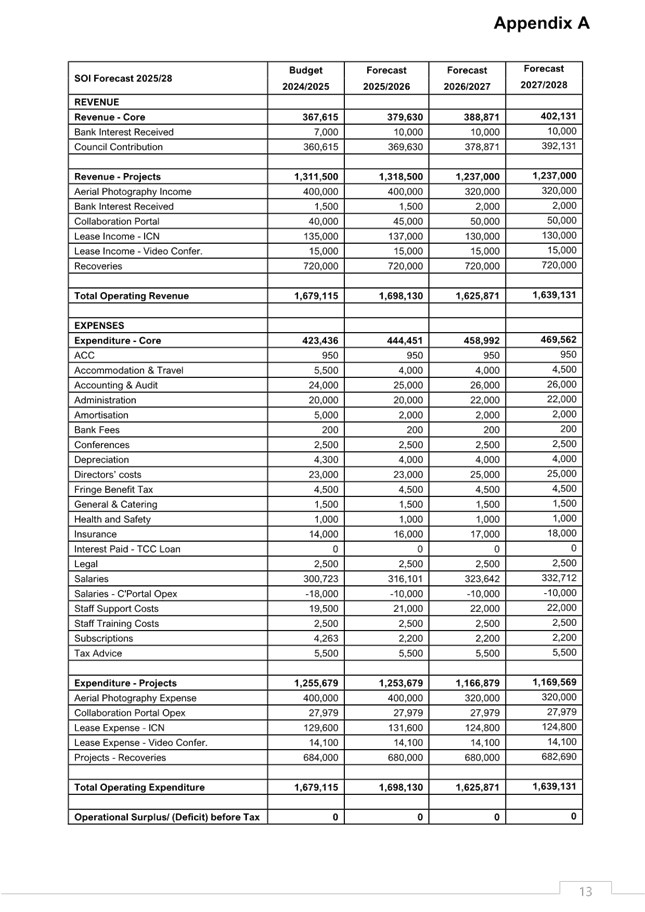
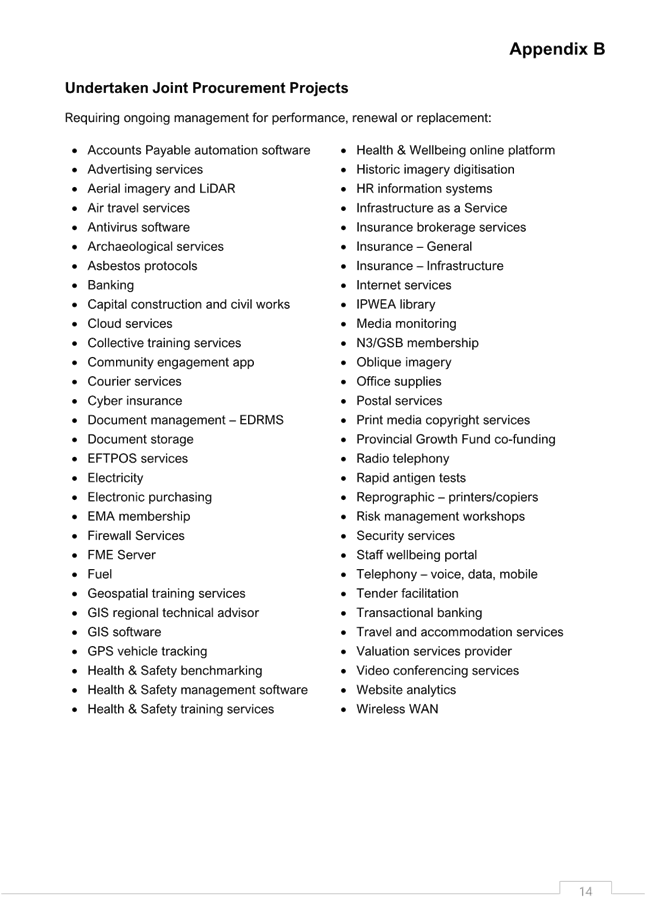
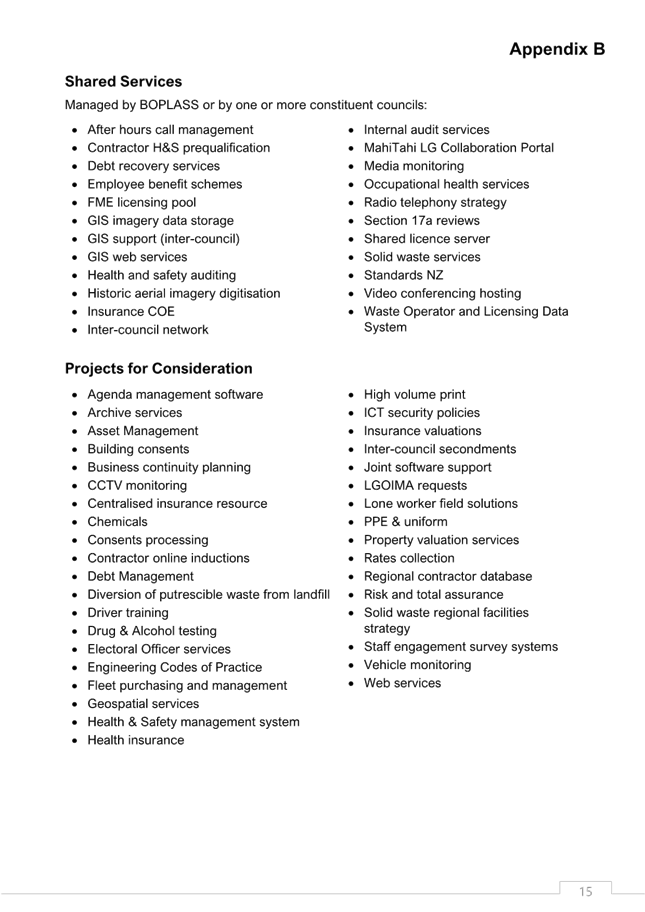
|
Ordinary
Council meeting Agenda
|
14
July 2025
|
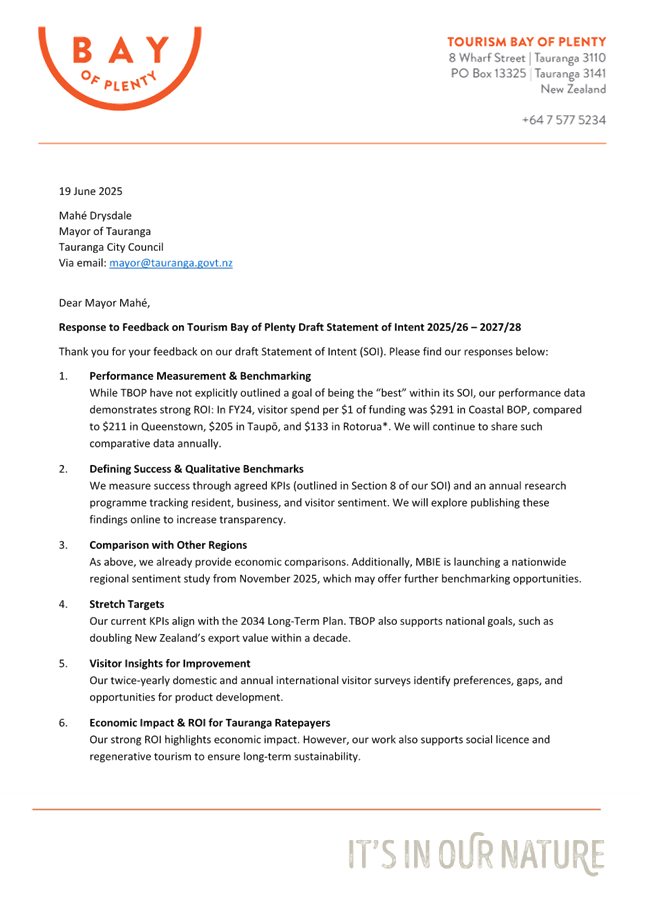
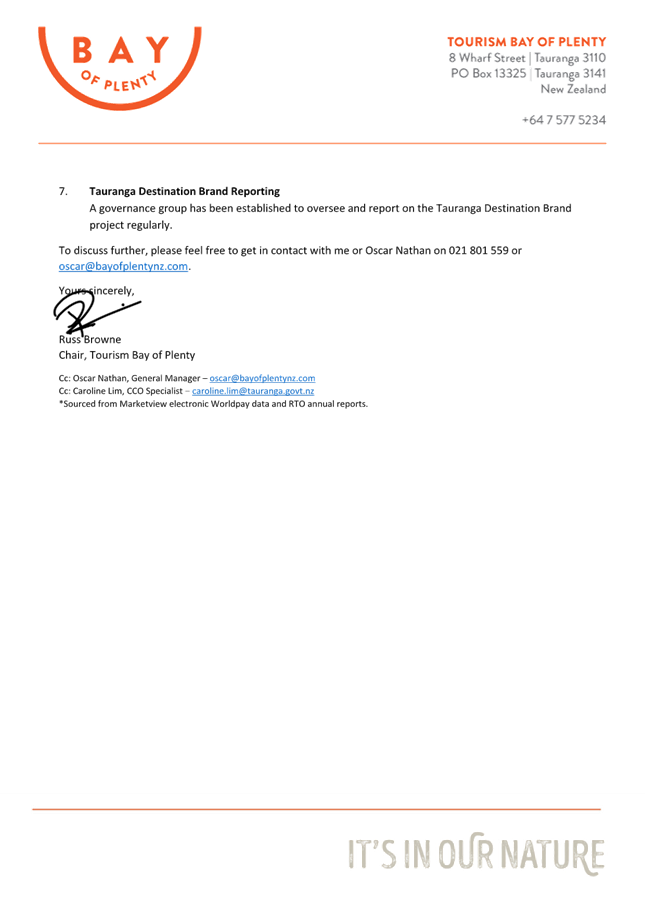
|
Ordinary
Council meeting Agenda
|
14
July 2025
|
11.5 Transport Resolutions
Report No.56
File
Number: A18303348
Author: Karen
Hay, Acting Manager: Safety and Sustainability
Reece Wilkinson,
Parking Strategy Manager
Will Hyde, Senior
Transportation Engineer
Authoriser: Nic
Johansson, General Manager: Infrastructure
Purpose of the Report
1. This
report proposes the introduction, removal or amendment of traffic controls
throughout the city, and seeks a resolution from Council to implement these
proposals.
|
Recommendations
That the Council:
(a) Receives the report
"Transport Resolutions Report No.56".
(b) Resolves to adopt the
proposed parking controls associated with the Parking Management Plan,
including the expansion of the city centre paid parking zone and the
introduction of time limits on certain streets and reserves surrounding the
paid zone. These controls will take effect on 4 August 2025.
(c) Resolves to adopt the
proposed traffic and parking controls associated with general safety,
operational or amenity purposes. The changes are to become effective on or
after the 15th of July 2025 subject to installation of appropriate
signs and road markings, where appropriate.
|
Executive Summary
2. As the city grows
and changes, the demands on the road network also change. Often there can be
conflict between the need to keep traffic lanes clear to enable an efficient
network, the need to provide on-street parking and loading to support nearby
activities, restrict parking to improve access and the need for vulnerable road
users such as pedestrians and cyclists to move around the city safely.
3. Attachment A sets
out changes for general access, parking, safety and operational reasons. Some
of these are requests from the public or other stakeholders for numerous
changes to parking controls which have been assessed to be appropriate.
4. This report
formalises the restrictions associated with the parking management plan for
implementation. The Council approved the Parking Management Plan at its 28th
of April 2025 meeting.
5. The majority of
changes relate to previously approved capital projects or historic parking
controls that have already been completed, recently completed, or are nearing
completion. These require an update to the bylaw to enable enforcement of the
proposed controls.
6. Amendments include
changes to the following attachments to the Traffic & Parking Bylaw (2023):
(a) Attachment 3.1: Shared
Pedestrian / Cycle Paths & Cycle Paths (in Road Reserve)
(i) These changes relate to
shared paths in close proximity to crossing facilities or providing short
connections to accommodate the number of path users. Consultation was
undertaken when the project was developed and implemented. These changes are
retrospective.
(b) Attachment 7.2: No
Stopping at Any Time
(i) A number of changes
relate to capital projects that are complete, where broken yellow lines require
to be resolved. The broken yellow lines are required for access and visibility
reasons.
(ii) There are fifty-two amendments
to the bylaw required to capture the existing broken yellow lines at bus stops.
These provide clear lead-in and lead-out spaces for buses to pull out of and
back into kerbside traffic. A minimum standard is applied to ensure this. These
changes are retrospective, with consultation completed at the time the project
was delivered.
(iii) Extending the existing broken
yellow lines to improve access at the head of the cul-de-sac, as requested by a
local resident. The change is retrospective.
(iv) Other retrospective changes relate
to projects completed to capture the changes associated with access or
visibility at various locations.
(c) Attachment 7.7 Mobility
Parking
(i) Reinstating a mobility
parking space on Grey Street. This was formerly a mobility parking space, which
was disestablished approximately 10 years ago. Some markings still remain. The
space is being used as a mobility bay in
practice even if it is not legally one currently.
(ii) Other
retrospective mobility parking spaces requiring a resolution.
(d) Attachment 7.9
Parking Time Restrictions
The
following key changes are being implemented as part of delivery of the parking
management plan.
(i) P60 Restrictions on
Cameron Road and Maunganui Road previously consulted upon as part of the
project. These resolutions are retrospective.
(ii) P120 Restrictions as set out
in Figures 1a and 1b in Attachment A.
(iii) P240 Restrictions as agreed
with spaces and places for a section of 7th Ave and for Memorial
Park and as laid out in Figure 2 in Attachment A.
(e) Attachment 7.12 Pay
Areas
(i) Designating parking on
the site of No.483 Cameron Rd (former site of The Warehouse) as paid parking,
to enable effective management of the car parks.
(ii) Expanding the city fringe paid
parking area, as resolved in the Tauranga Parking Management Plan. The extent
of the expanded paid parking area is shown in Figure 3 of Attachment A. This is
to include a resident permit as detailed in Appendix B.
(f) Attachment
7.16 Loading Zones with Time Restriction
Formalising
an existing loading zone in Pilot Bay to support boat ramp users, and
establishing a new loading zone within a service lane on First Avenue to
support adjacent businesses. These changes are retrospective.
Background
7. The Traffic and
Parking Bylaw 2023 includes attachments which list various traffic and parking
restrictions. Council can impose traffic and parking resolution by Council
resolution.
8. As the city grows
and changes, the demands on the road network also change. Often there can be
conflict between the need to keep traffic lanes clear to enable an efficient
network, the need to provide on-street parking and loading to support nearby
activities, and the need for vulnerable road users such as pedestrians and
cyclists to move around the city safely.
9. The Tauranga Parking
Strategy was adopted by Council on 15 November 2021.
10. Parking Management Plans
(PMP’s) are developed to provide a focus to parking in local areas. Each
local area has its own challenges and expectation from customers, the Parking
Management Plans are to be designed reflecting that.
11. Parking Management Plans are
required to provide an environment where different parking users are able to
coexist within boundaries set by Council.
12. The Tauranga Parking Management
Plan was adopted by Council on the 28th of April 2025 alongside an
agreement to engage on the Mount Maunganui Parking Management Plan. The Council
resolved that (Resolution CO/25/6/18) :
(a) Approves implementation of the
City Centre Parking Management Plan including paid parking in the city centre
fringe and time restrictions, conditional on approval of appropriate bylaw
updates and the agreement of a resident parking permit.
(b) Approves paid parking within a
city centre fringe zone between Arundel Street and Park Street excluding the
existing city centre paid parking zone.
(c) Approves additional P120 time
restrictions, including a potential paid option for an extended duration,
between Eleventh Avenue and Marsh Street (inclusive), excluding areas covered
by a paid parking zone.
13. Limited engagement with the
local community took place in 2022. Given the Council resolution in April 2025,
no further consultation or engagement is envisaged. Adjacent properties will be
notified of the changes prior to implementation.
14. The Council regularly adds,
removes or amends traffic and parking controls to reflect and support
operational and safety needs on the road network. The proposed amendments in
Attachment A are minor changes to parking restrictions across the city which have
arisen through requests from the public, transportation staff, or other
stakeholders; or changes resulting from approved developments.
Statutory Context
15. The amendments
help to achieve the vision and strategic transport priorities of making our
network safer and easier for people to get around the city.
STRATEGIC ALIGNMENT
16. This contributes to the
promotion or achievement of the following strategic community outcome(s):
|
Contributes
|
|
We are an inclusive city
|
ü
|
|
We value, protect and enhance the environment
|
☐
|
|
We are a well-planned city
|
ü
|
|
We can move around our city easily
|
ü
|
|
We are a city that supports business and education
|
ü
|
17. The
recommendations address a number of issues affecting safety, access and/or
amenity and contribute to the safe and efficient operation of the city’s
transport network. The provision of mobility parking enables a more inclusive
city by making our amenities more accessible to less-abled members of our
community.
Options Analysis
18. For the
proposed changes relate to general operations the reasons for each proposal are
described in Appendix A. In each case the problem identified is expected to
continue if the proposed amendment is not adopted.
19. The proposals are independent
of each other, and Council may resolve to adopt some, all or none of them.
Financial Considerations
20. The
signs and markings costs associated with general operational changes are minor
and can be accommodated within existing project or operational budgets.
Legal Implications / Risks
21. These proposals are required in
order to allow enforcement of changes deemed necessary for safety and amenity
purposes. Council has an obligation to address known safety issues on the road
network.
TE AO MĀORI APPROACH
22. The
proposals create safety, access and/or amenity improvements for our residents
and visitors, and therefore align with the principal of manaakitanga. For the
major projects, consultation with hapū was undertaken as part of the
project development.
CLIMATE IMPACT
23. Given
this report relates to regulatory procedure, no climate impact assessment is
made.
Consultation / Engagement
24. Limited consultation/engagement
was undertaken in relation to the parking management plan in 2022. The Council
resolved to implement the Tauranga Parking Management Plan and hence no
additional consultation is envisaged.
25. Changes will be notified to
adjacent properties prior to implementation of the signage.
Significance
26. The Local Government Act 2002
requires an assessment of the significance of matters, issues, proposals and
decisions in this report against Council’s Significance and Engagement
Policy. Council acknowledges that in some instances a matter, issue, proposal
or decision may have a high degree of importance to individuals, groups, or
agencies affected by the report.
27. In making this assessment,
consideration has been given to the likely impact, and likely consequences for:
(a) the current
and future social, economic, environmental, or cultural well-being of the
district or region
(b) any persons who are likely to be
particularly affected by, or interested in, the decision.
(c) the capacity of the local authority
to perform its role, and the financial and other costs of doing so.
28. In accordance with the
considerations above, criteria and thresholds in the policy, it is considered
that the decision is of medium significance.
29. For the changes which are
retrospective, these are likely to have a low public interest as these were
previously consulted upon or responded to requests from adjacent landowners.
Parking
changes for local residents and businesses is likely to be of high interest.
ENGAGEMENT
30. Taking into consideration the
above assessment, that the decision is of medium significance, officers are of
the opinion that no further engagement is required prior to Council making a
decision.
Next Steps
31. The bylaw schedule will be
updated in accordance with the resolution and implementation of associated line
marking and signage as appropriate.
32. Adjacent business and residents
to be notified of parking restriction changes, prior to implementation.
Attachments
1. Appendix
A - Transport Resolutions Report 56 Proposals - A18408733 ⇩ 
2. Appendix B -
Residents Parking Permit 2025 - A18409547 ⇩ 
|
Ordinary
Council meeting Agenda
|
14
July 2025
|
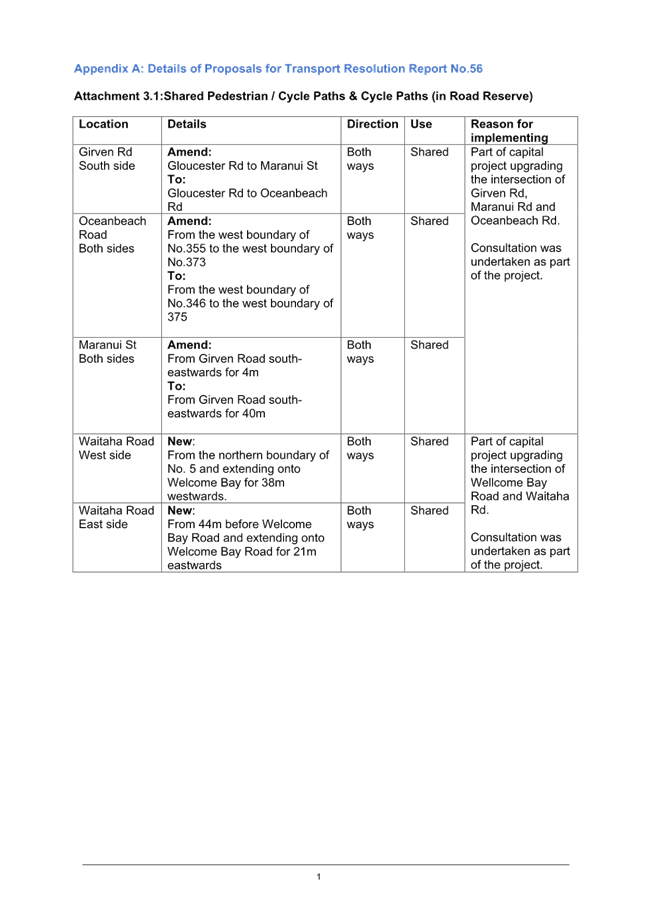
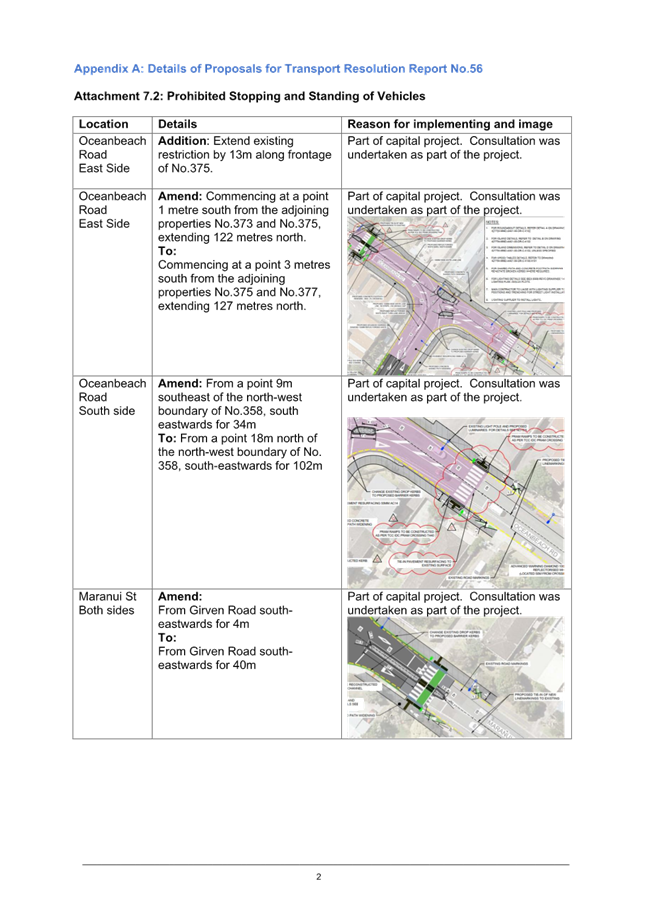
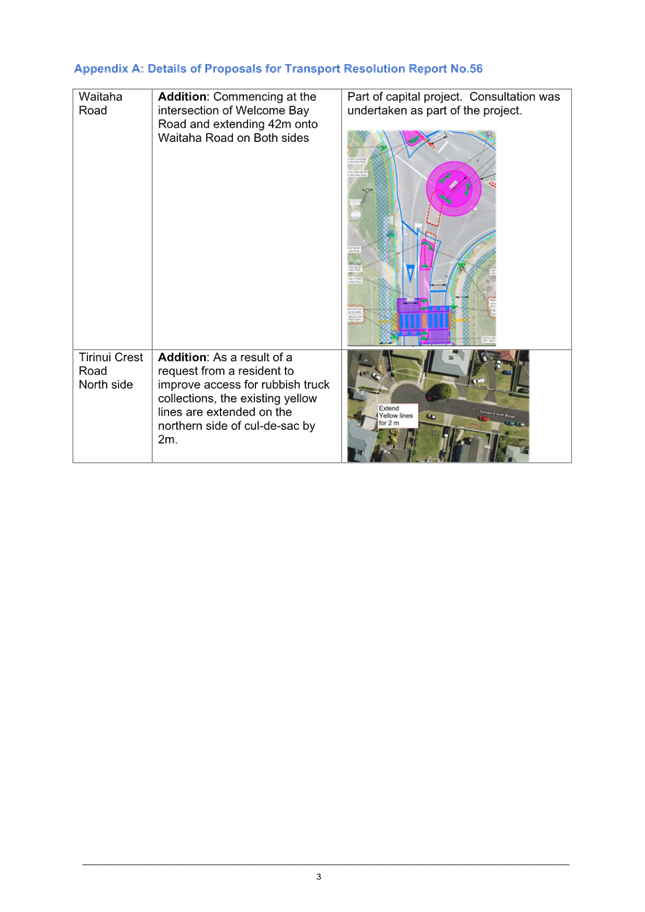
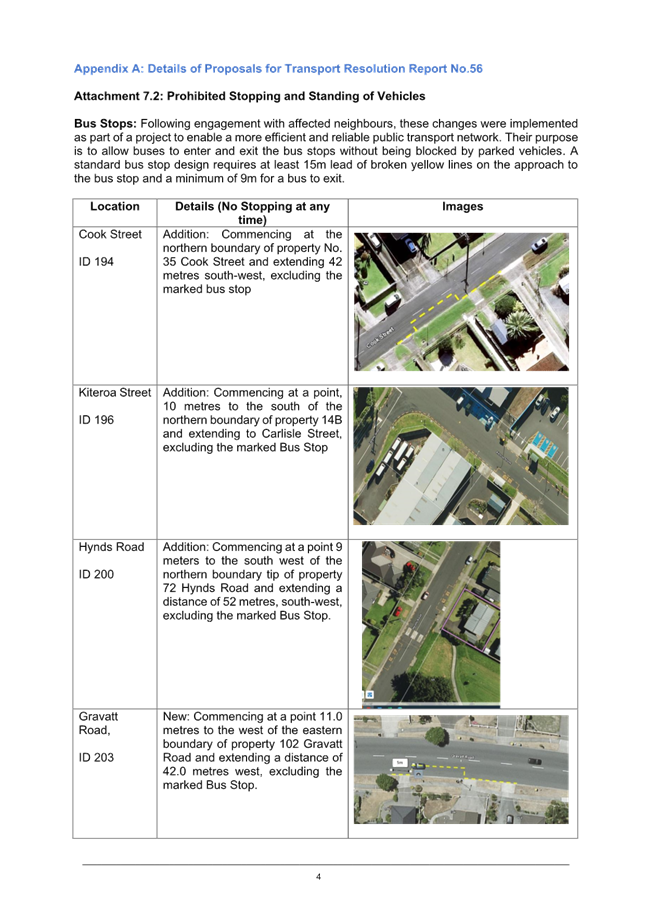
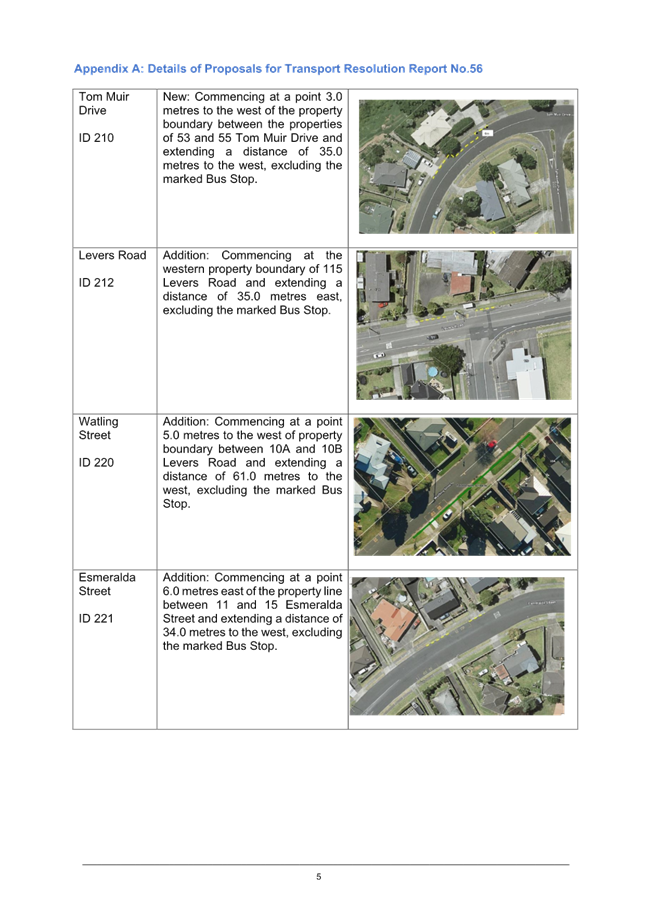
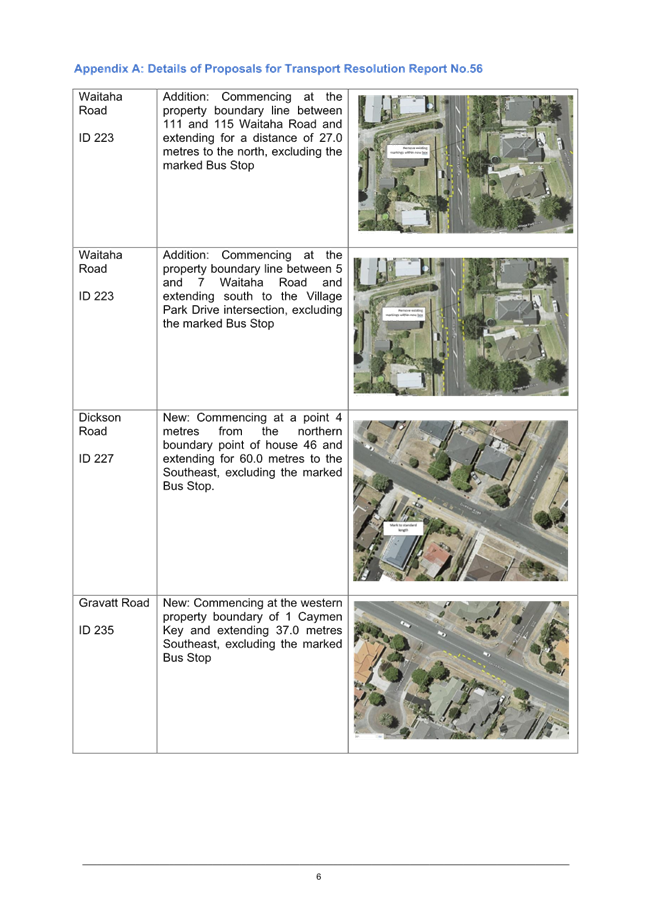
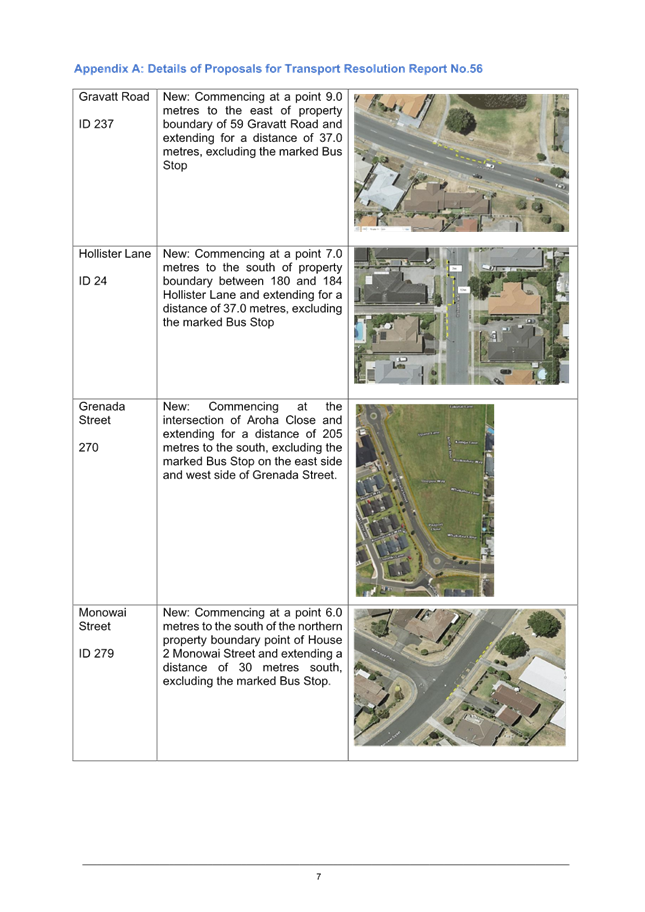
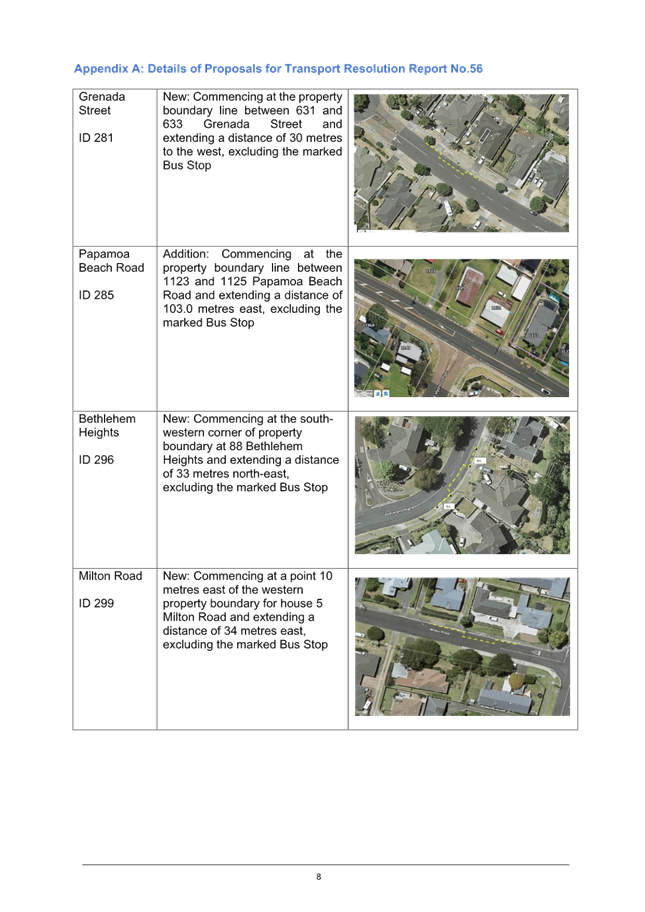
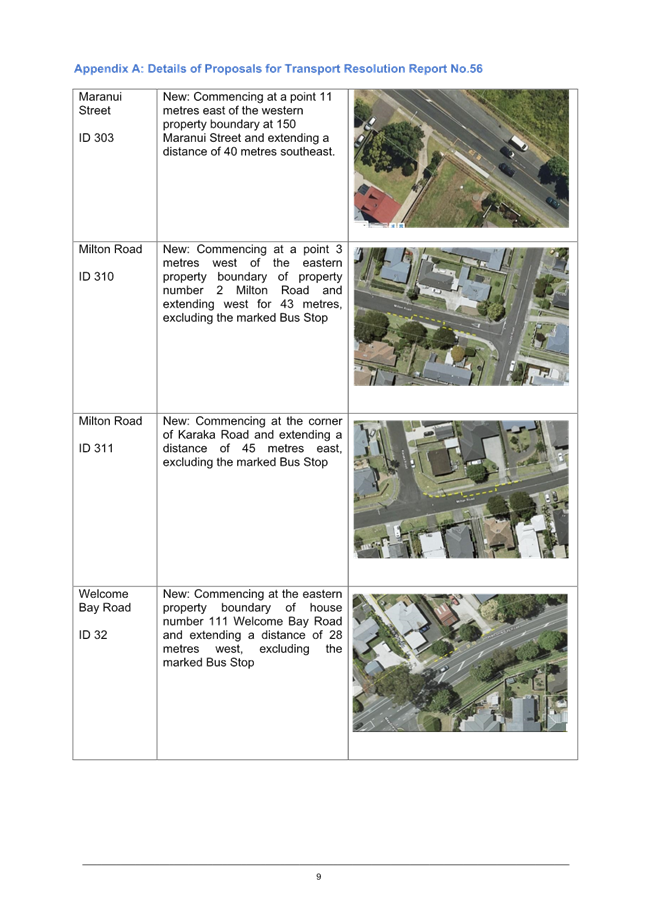
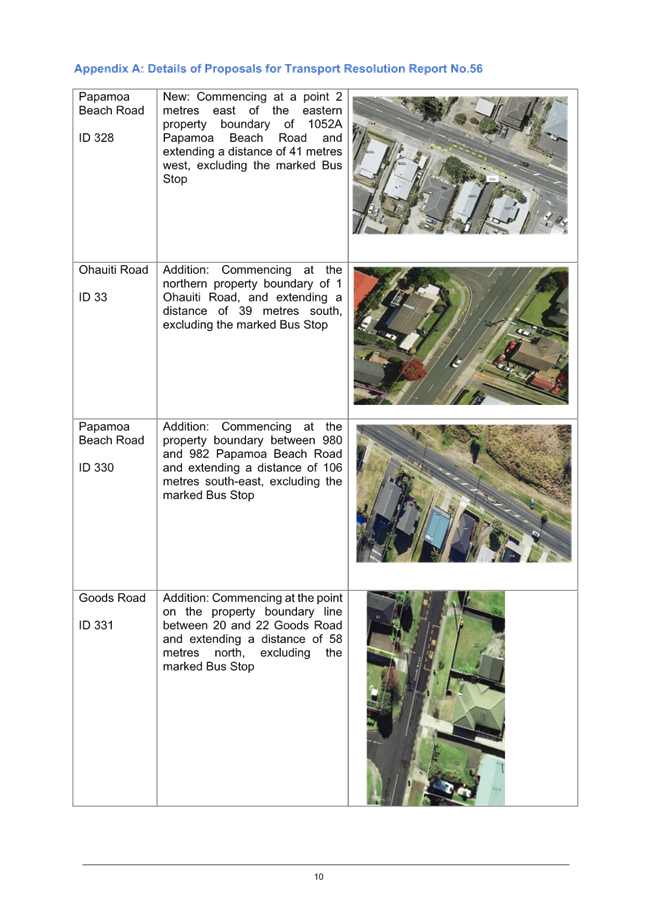

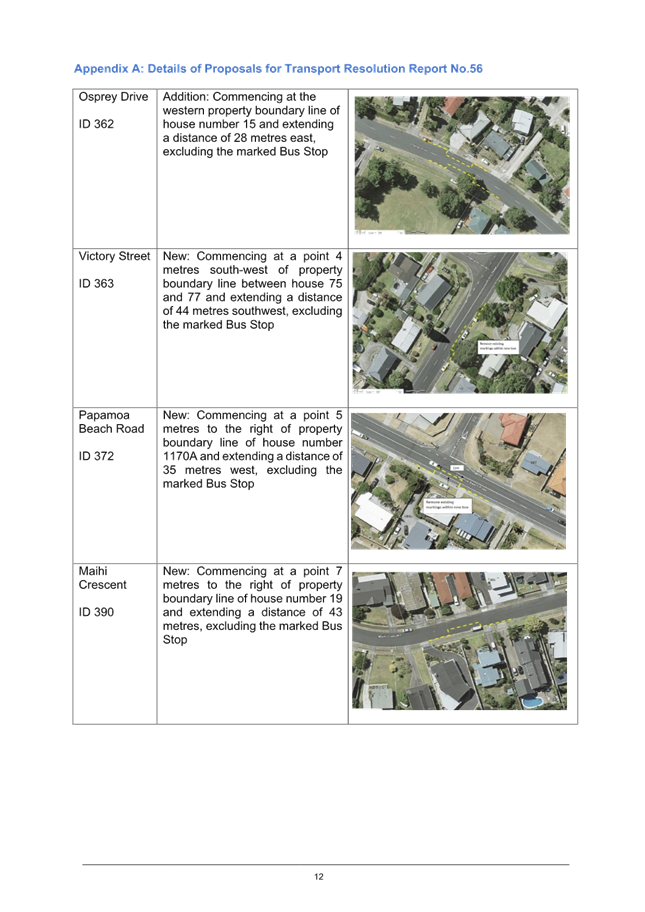
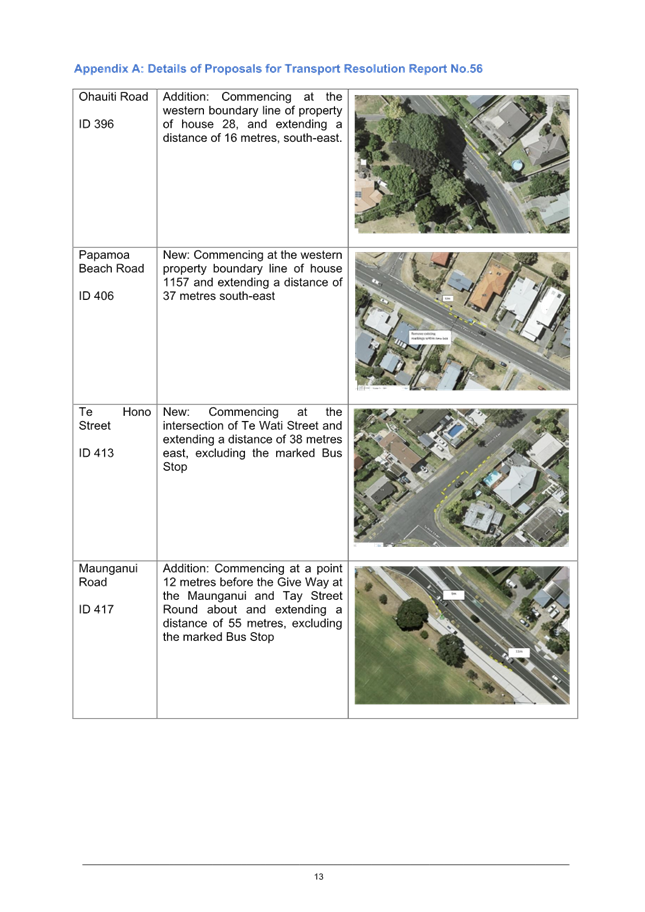
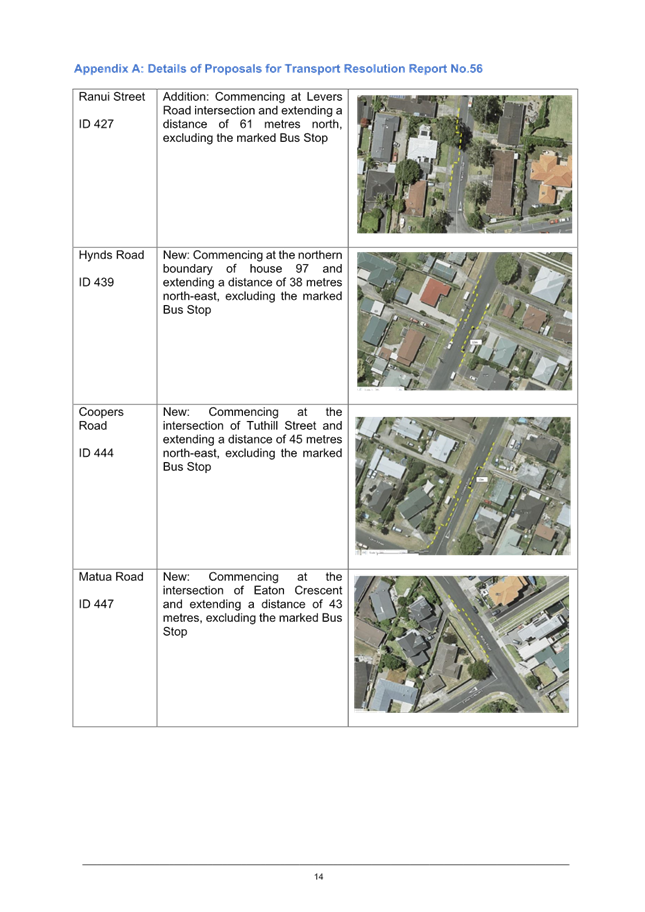
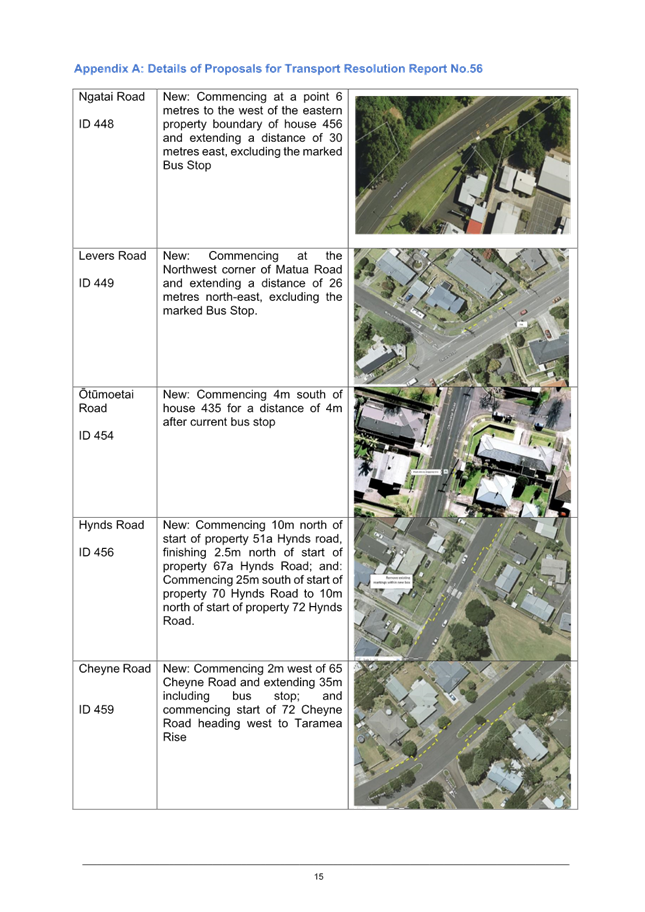
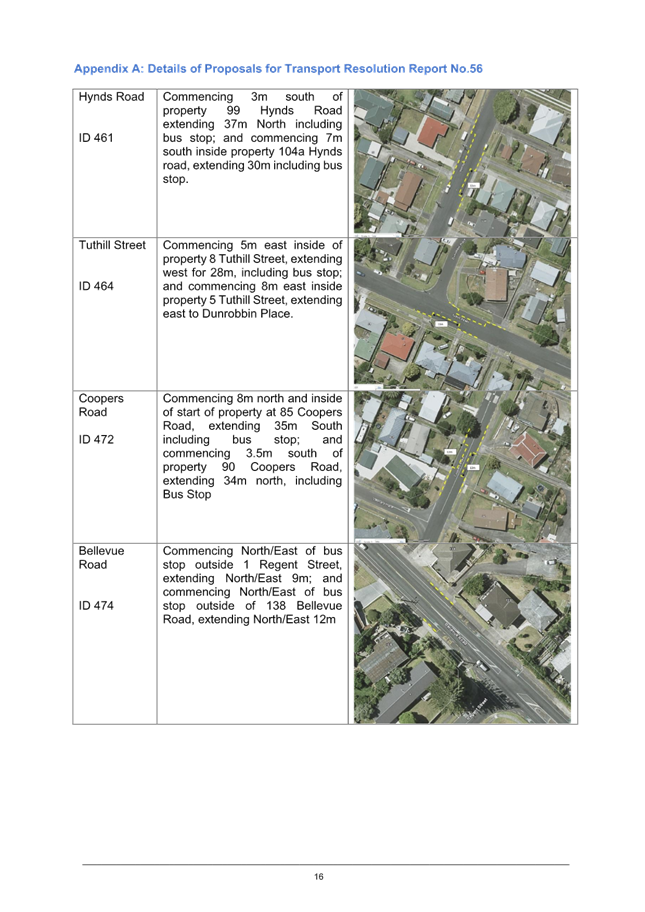
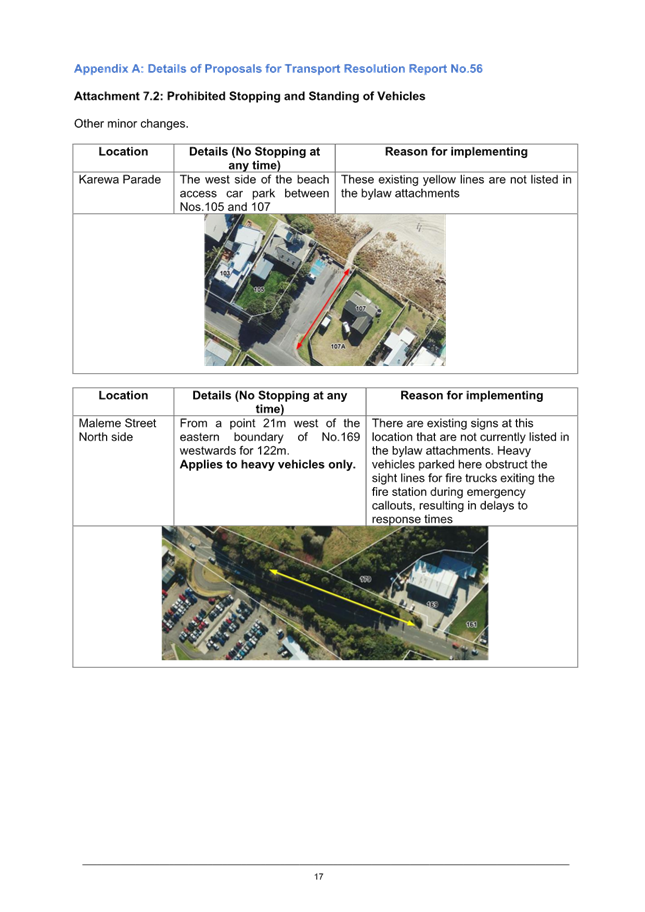
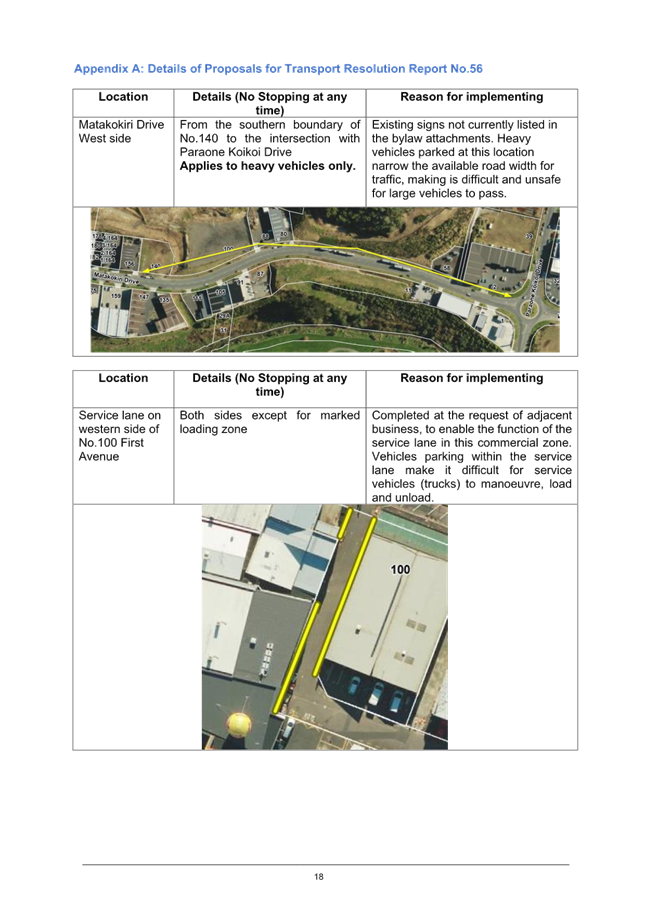
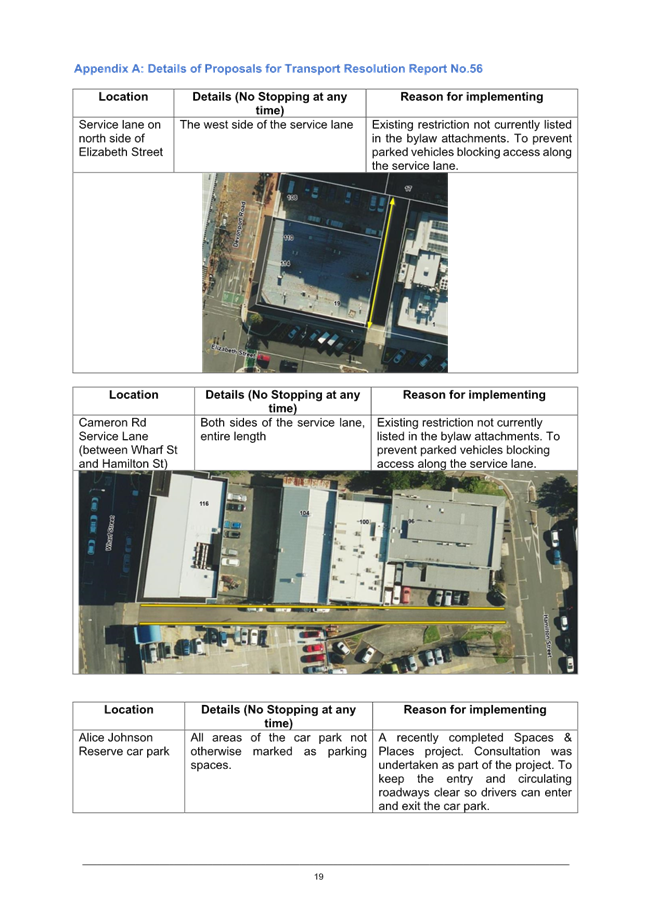
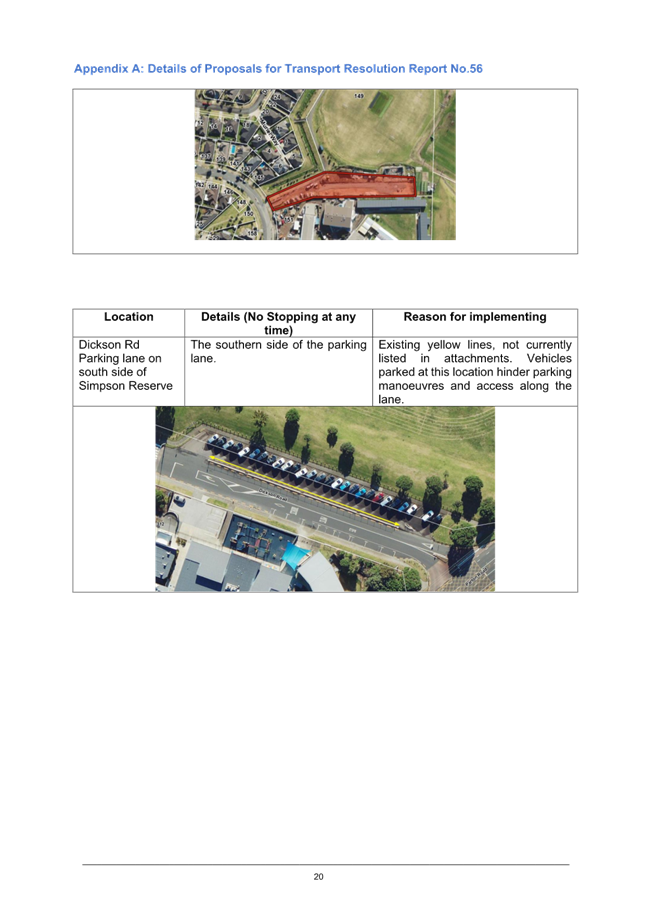
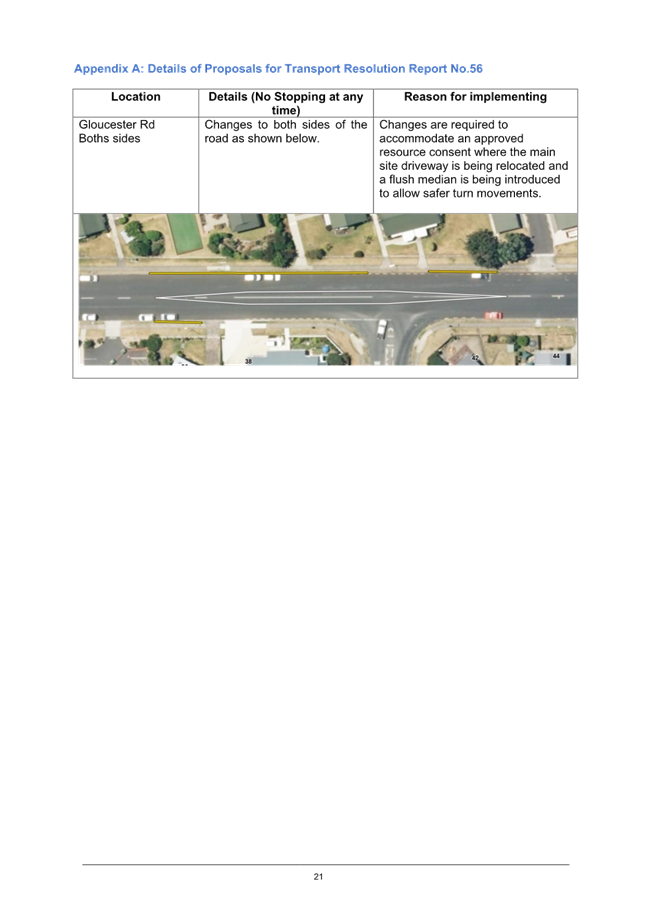
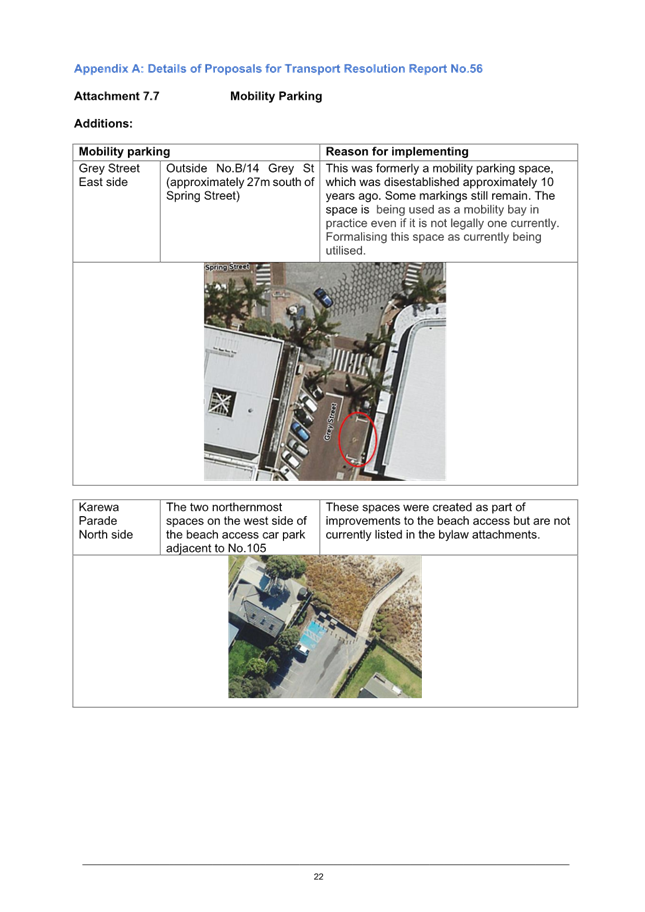
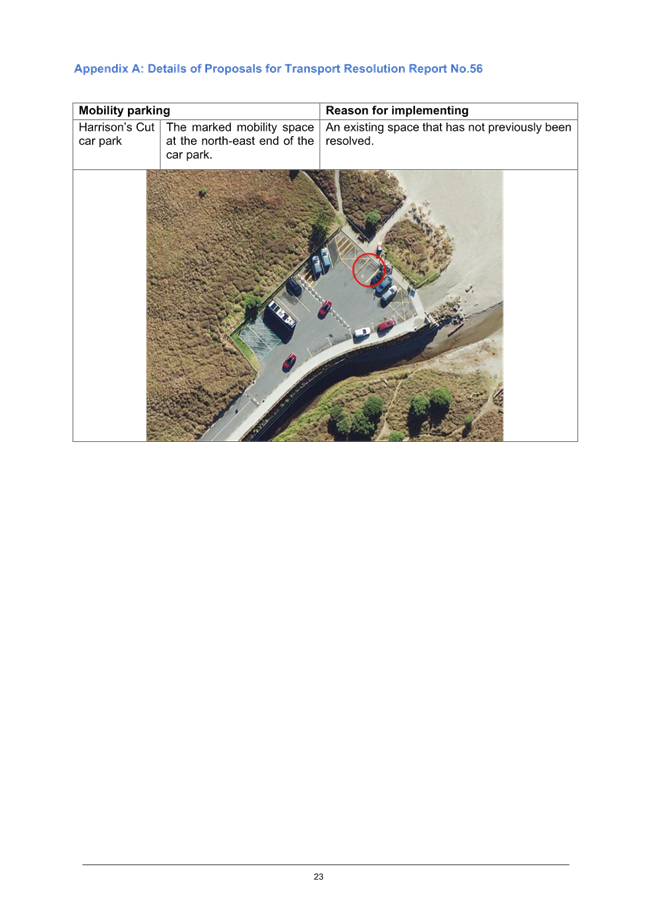
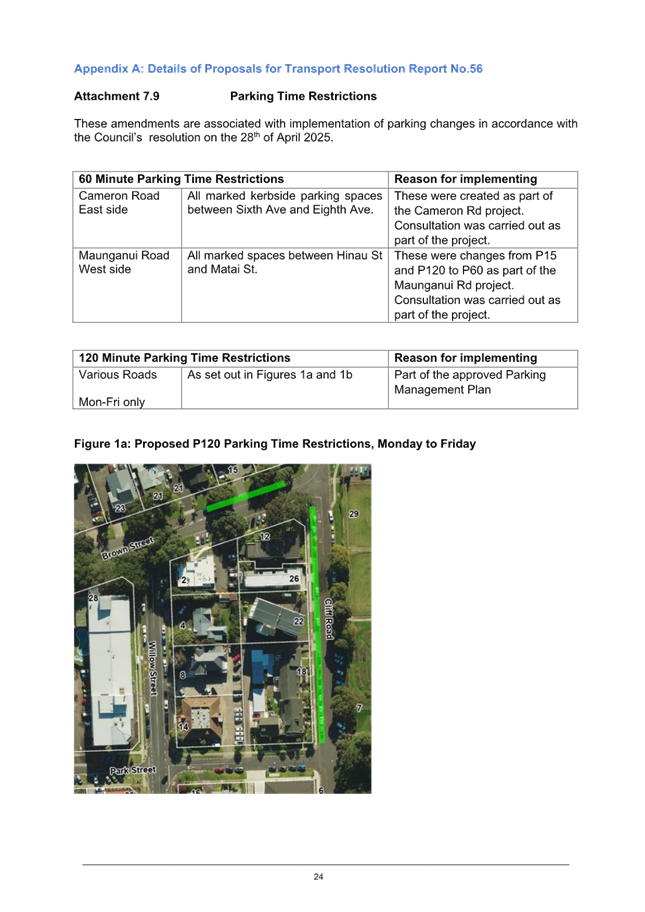
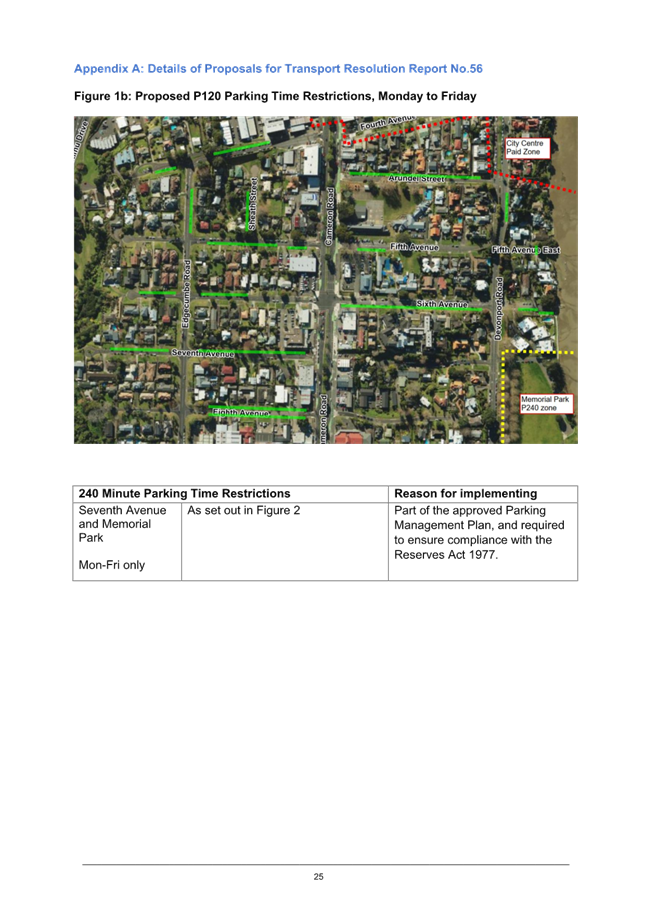
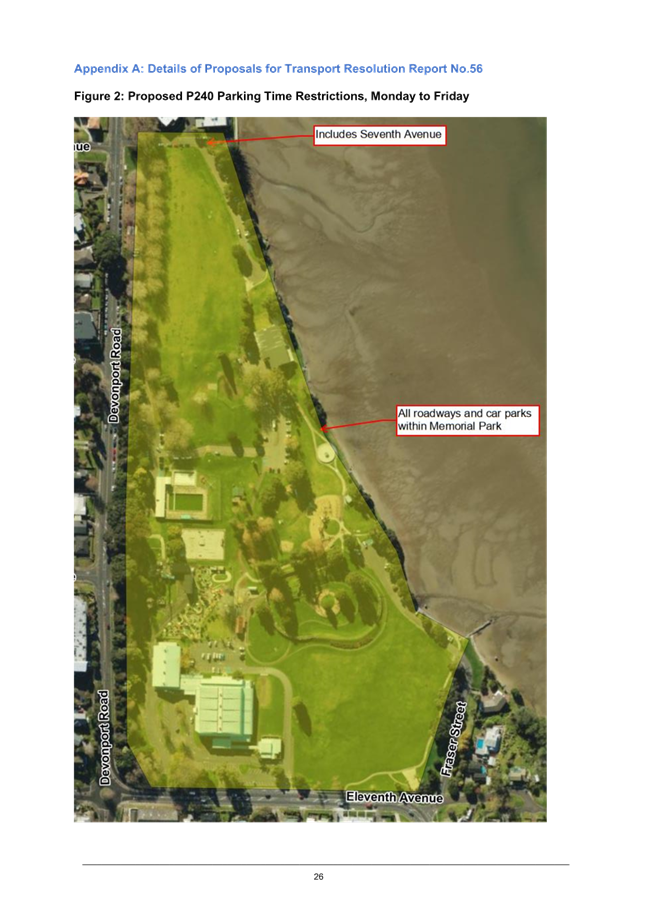
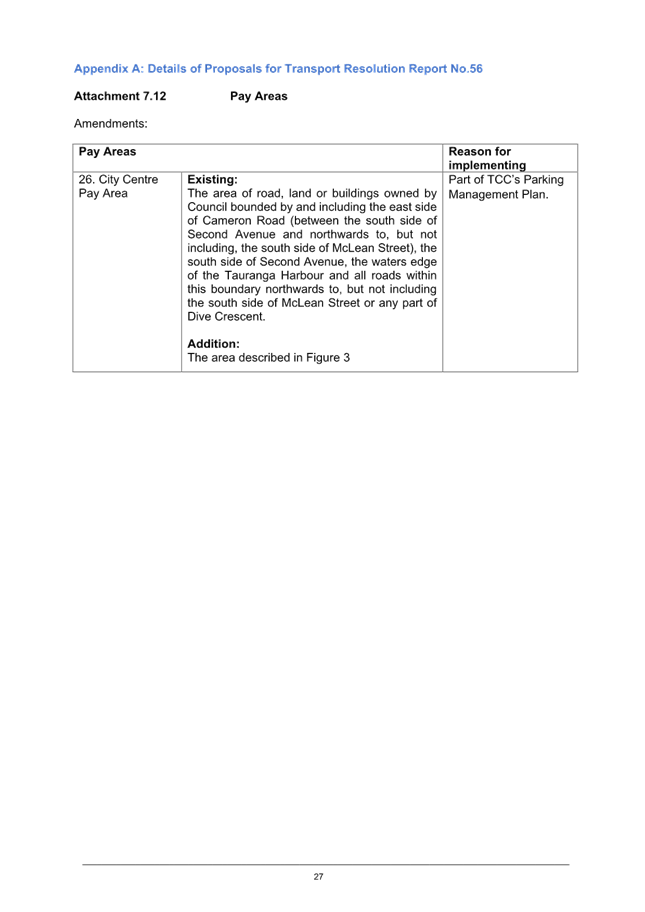

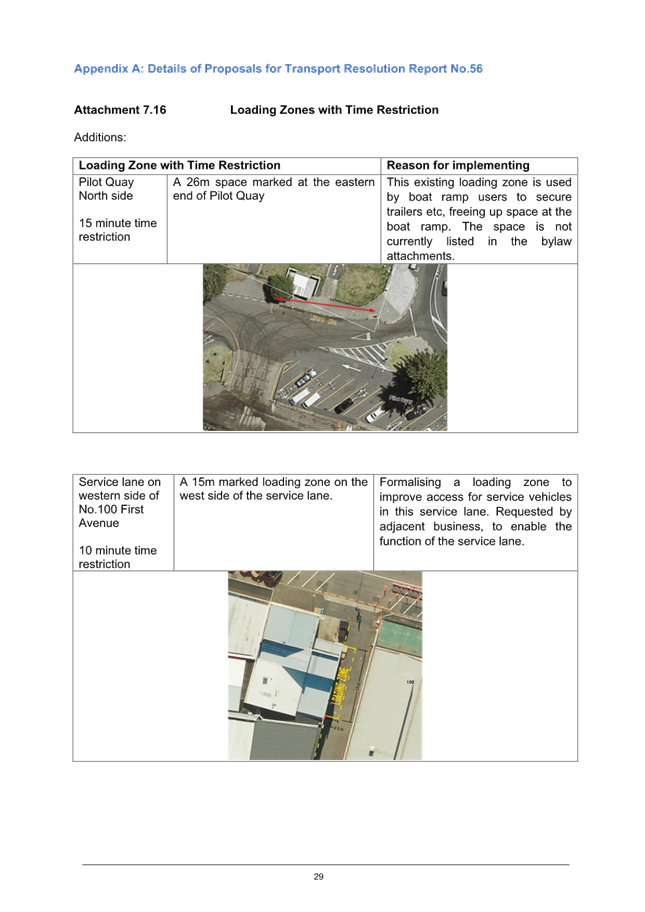
|
Ordinary
Council meeting Agenda
|
14
July 2025
|
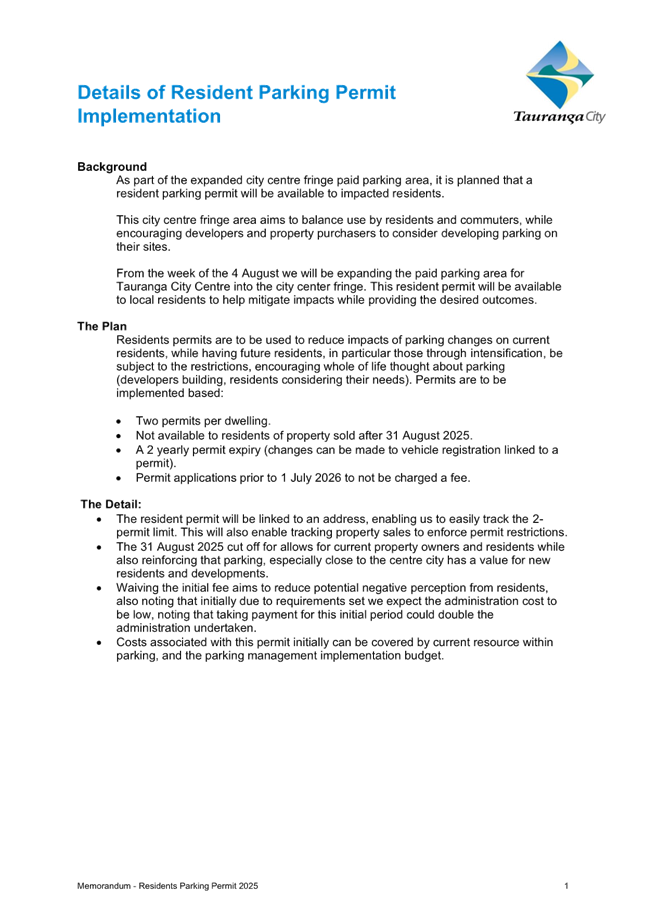
|
Ordinary
Council meeting Agenda
|
14
July 2025
|
11.6 Remits to Local
Government New Zealand
File
Number: A18365831
Author: Jeremy
Boase, Manager: Strategy & Corporate Planning
Authoriser: Christine
Jones, General Manager: Strategy, Growth & Governance
Purpose of the Report
1. To consider
Council’s position on five remits that will be voted on at the Local
Government New Zealand annual general meeting on 16 July 2025.
|
Recommendations
That the Council:
(a) Receives the report
"Remits to Local Government New Zealand ".
Voting
(b) Provides the following
direction to Council’s representatives at the Local Government New Zealand
annual general meeting on whether the remits to that meeting should be
supported or not supported.
|
Remit
|
Topic
|
Support / not support
|
|
1
|
Security System
Payments
|
|
|
2
|
Improving Joint
Management Agreements
|
|
|
3
|
Alcohol Licensing
Fees
|
|
|
4
|
Aligning public and
school bus services
|
|
|
5
|
Review of local
government arrangements to achieve better balance
|
|
Priorities
(c) Provides the following
direction to those representatives regarding the relative priority of
successful remits:
|
|
Priority (A to E)
|
|
Remit 1 (if
successful)
|
|
|
Remit 2 (if
successful)
|
|
|
Remit 3 (if
successful)
|
|
|
Remit 4 (if
successful)
|
|
|
Remit 5 (if
successful)
|
|
OR
(d) Delegates responsibility to
those representatives to determine a view on the priorities of the successful
remits and convey this to the annual general meeting as required.
|
Executive Summary
2. This report
facilitates Council decision-making on five remits to be voted on at the
upcoming Local Government New Zealand annual general meeting.
3. Staff commentary is
provided on four of the five remits to assist Council in making a decision on
whether to support the remit. The fifth remit was proposed by this
Council and therefore support is assumed.
4. Supported remits
form part of Local Government New Zealand’s future work
programme.
5. There are no
financial implications, legal implications, or risks directly associated with
the decisions required in this report.
Background
6. Each year at the
Local Government New Zealand (“LGNZ”) annual general meeting
(“AGM”) member councils vote on ‘remits’. Remits
allow member councils to propose policy changes or work programmes for
LGNZ. If a remit is passed at the AGM, it becomes official policy for
LGNZ to action.
7. The 2025 AGM will be
held on 16 July in Christchurch. At the time of writing, Mayor Drysdale
and Deputy Mayor Scoular will be attending on Council’s behalf. The
Chief Executive will also be in attendance.
8. There are five
remits to be considered at this year’s AGM. They cover:
· Security
system payments for elected members
· Improving
joint management agreements (a Resource Management Act tool to enable councils
and iwi/hapu to work together on environmental governance)
· Alcohol
licensing fees
· Aligning
public and school bus services
· A
review of local government arrangements to achieve better balance.
9. A full copy of each
remit including the proposing council or councils, the support obtained to get
the remit onto the agenda[1],
and background information is included as Attachment 1 to this report.
10. Remit 5, a review of local
government arrangements to achieve better balance, was proposed by this council
and supported by the LGNZ Metro Sector.
11. Staff commentary on the remits
is included as Attachment 2 to this report. This is included to
assist Council’s consideration of whether to support each remit. No
commentary is provided on Remit 5 because, as proposing council, it is assumed
that Council will be in support.
12. To ensure that LGNZ’s
workload is directed appropriately to meet its members’ wishes, delegates
to the AGM will also vote on the relative priority of all successful
remits.
Statutory Context
13. The remits, if successful and
prioritised, feed directly into LGNZ’s work programme. The ambition
of all five remits is to ultimately change legislation or other central
government statutory tools.
STRATEGIC ALIGNMENT
14. This contributes to the
promotion or achievement of the following strategic community outcome(s):
|
Contributes
|
|
We are an inclusive city
|
☐
|
|
We value, protect and enhance the environment
|
☐
|
|
We are a well-planned city
|
☐
|
|
We can move around our city easily
|
☐
|
|
We are a city that supports business and education
|
☐
|
15. Voting on the remits themselves
has no direct impact on strategic community outcomes. However, if
supported and then if LGNZ’s further work leads to legislative or other
change, significant impacts may occur.
Options Analysis
16. There are three layers of
decision to be made by Council, each with its own options. The layers
are:
(a) Whether to provide direction on
each remit to the delegates, or to allow the delegates to determine
Council’s position on each remit and vote accordingly while at the AGM.
(b) Whether to support or not
support each individual remit (assuming that the ‘provide
direction’ approach is taken above).
(c) The relative priority for
LGNZ’s work programme of all remits supported at the AGM.
17. For layer 1, past elected
councils have traditionally provided direction on each remit to the delegates.
Financial Considerations
18. There are no direct financial
considerations associated to this report.
Legal Implications / Risks
19. There are no direct legal
implications or risks associated with this report.
TE AO MĀORI APPROACH
20. There are no direct
implications on council’s Te Ao Māori approach within this report or
the decisions to be made. In the event that Remit 2 is supported at the LGNZ
AGM and further work leads to changes in this area, there is a possibility that
a joint management agreement may occur between council and tangata
whenua.
21. Similarly, if Remit 5 is
supported by the LGNZ AGM and leads to changes in the area of local government
arrangements, there may be implications for future relationships between local
government and Māori.
CLIMATE IMPACT
22. There are no direct climate
impact implications associated with this report.
Consultation / Engagement
23. No specific formal engagement
has occurred with stakeholders or the community on the five matters covered in
the remits.
Significance
24. The Local Government Act 2002
requires an assessment of the significance of matters, issues, proposals and
decisions in this report against Council’s Significance and Engagement
Policy. Council acknowledges that in some instances a matter, issue,
proposal or decision may have a high degree of importance to individuals,
groups, or agencies affected by the report.
25. In making this assessment,
consideration has been given to the likely impact, and likely consequences for:
(a) the current
and future social, economic, environmental, or cultural well-being of the
district or region
(b) any persons who are likely to be
particularly affected by, or interested in, the decision.
(c) the capacity of the local authority
to perform its role, and the financial and other costs of doing so.
26. In accordance with the
considerations above, criteria and thresholds in the policy, it is considered
that the decision as to how Council should cast its votes at the LGNZ AGM is of
low significance.
ENGAGEMENT
27. Taking into consideration the
above assessment, that the decision is of low significance, officers are of the
opinion that no engagement is required prior to Council making a decision.
Next Steps
28. Council’s delegates will
take Council’s direction to the LGNZ AGM on Wednesday 16 July.
Attachments
1. LGNZ
AGM Remits_2025 - A18431462 ⇩ 
2. 2025 LGNZ remits
- staff commentary - A18432589 ⇩ 
|
Ordinary
Council meeting Agenda
|
14
July 2025
|
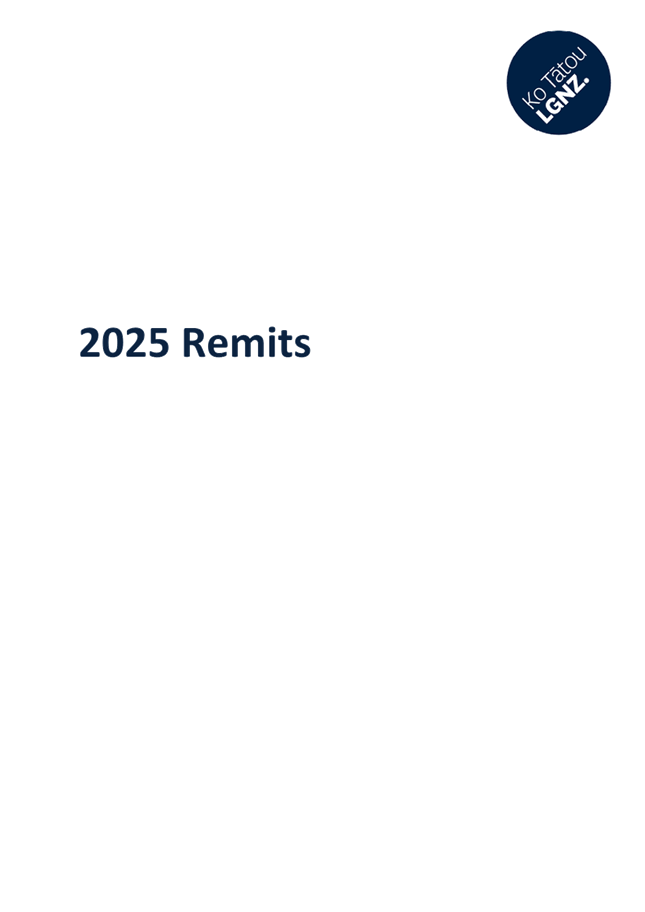
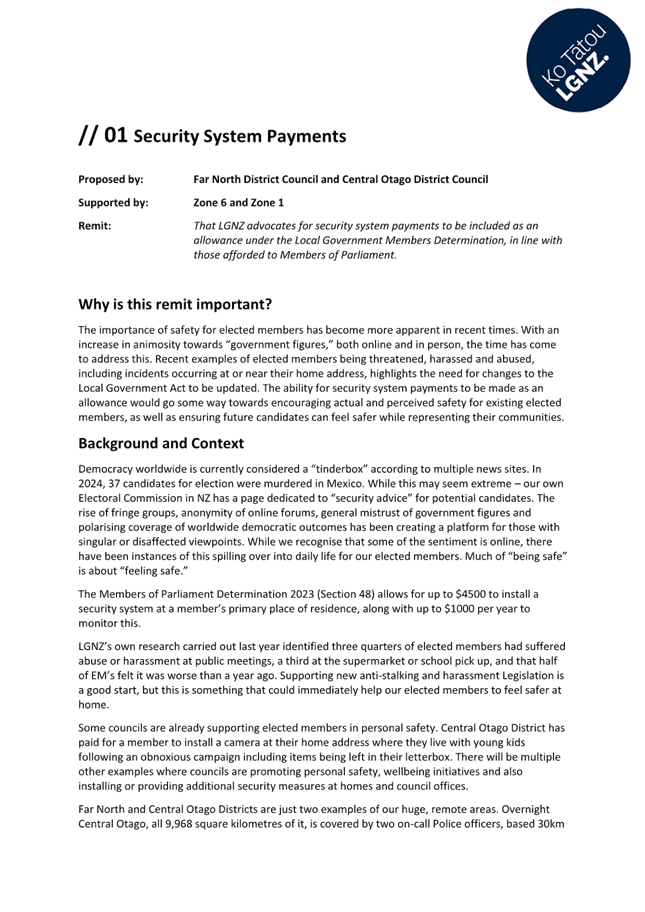

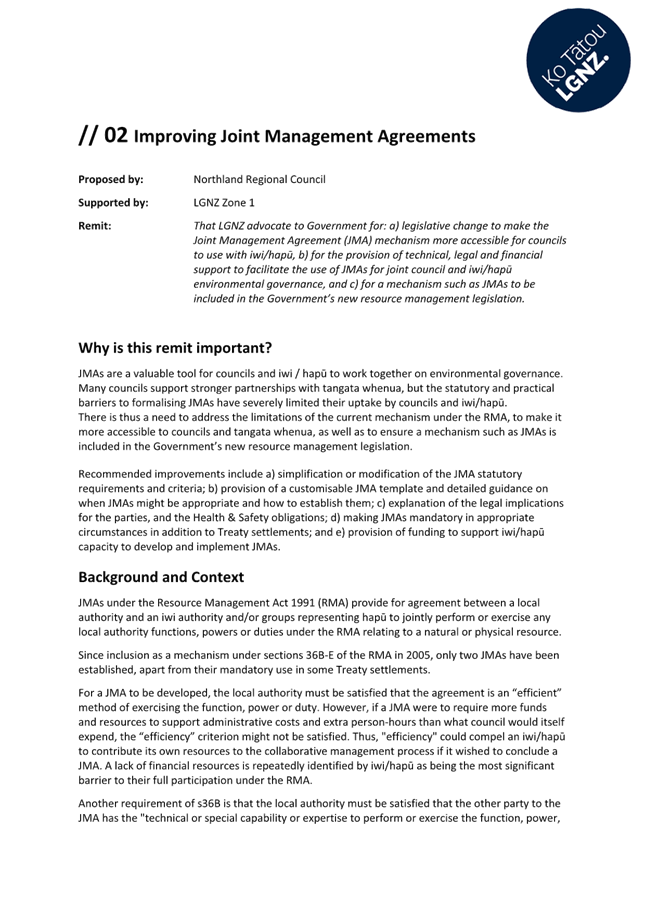
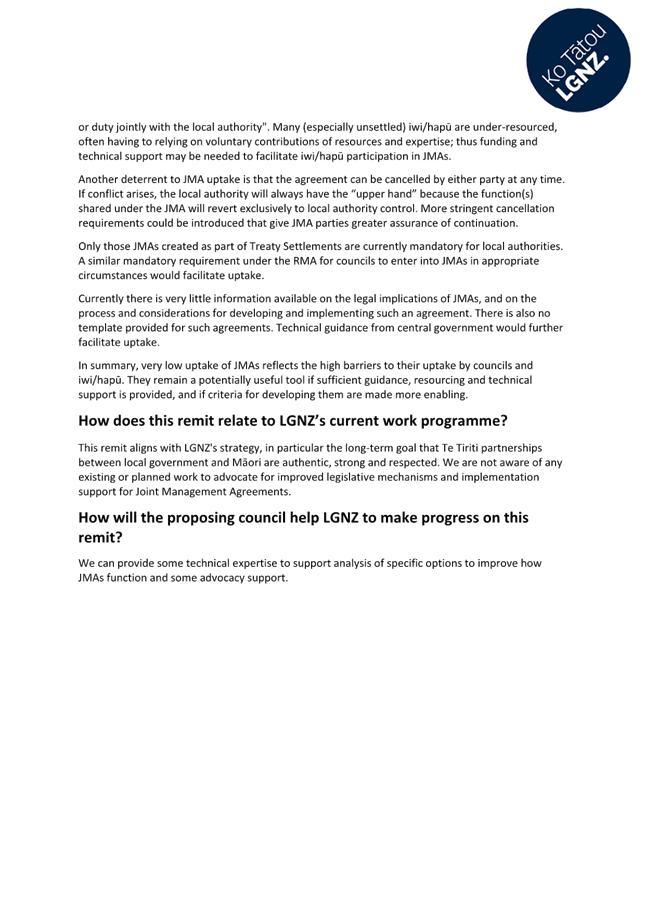
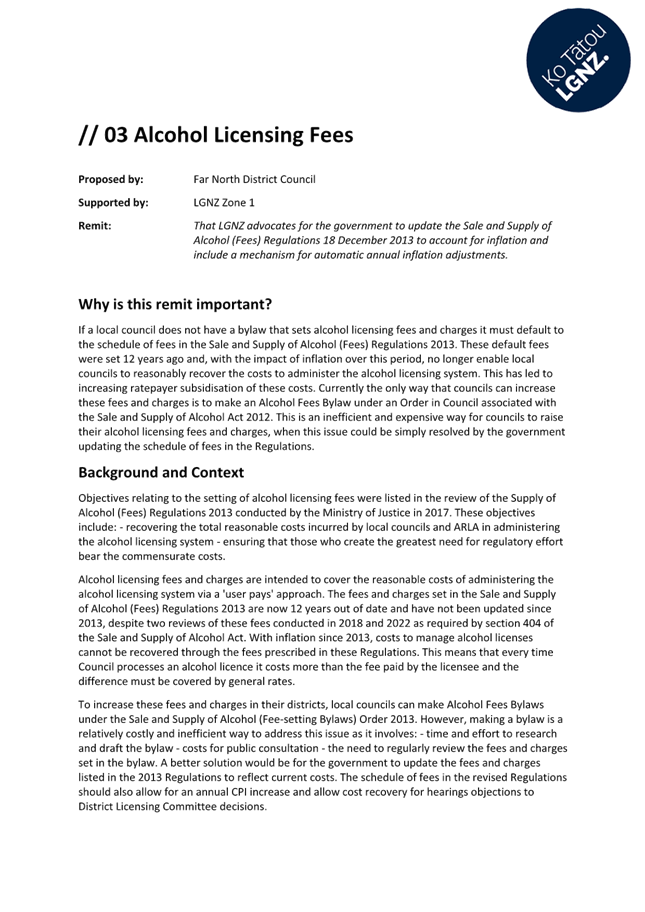
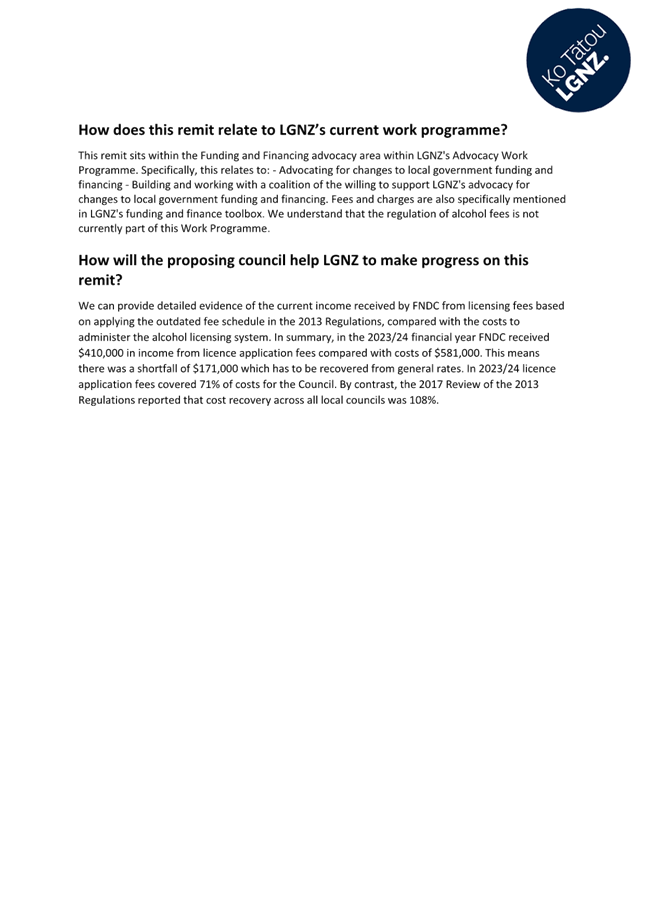
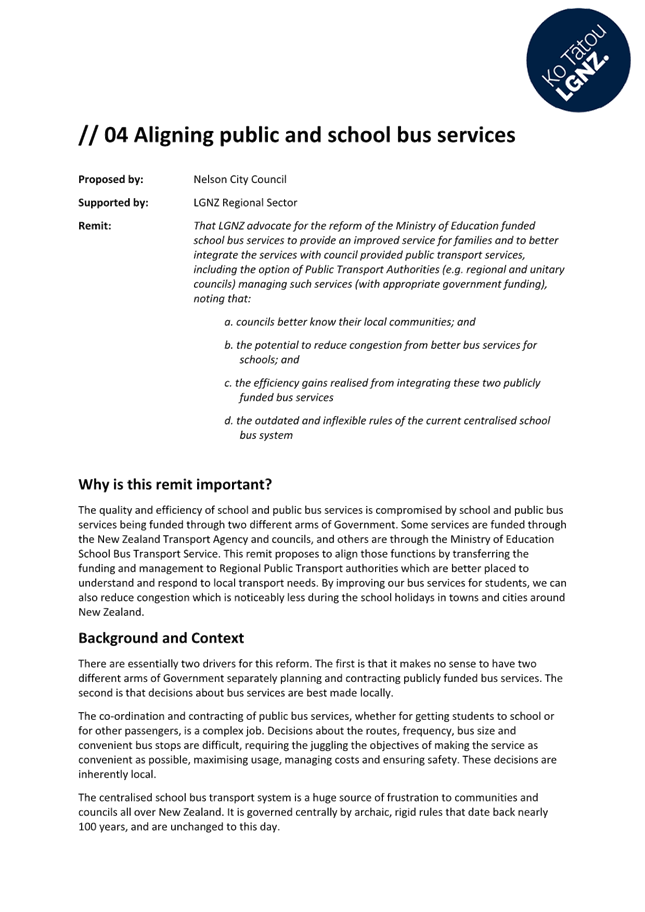
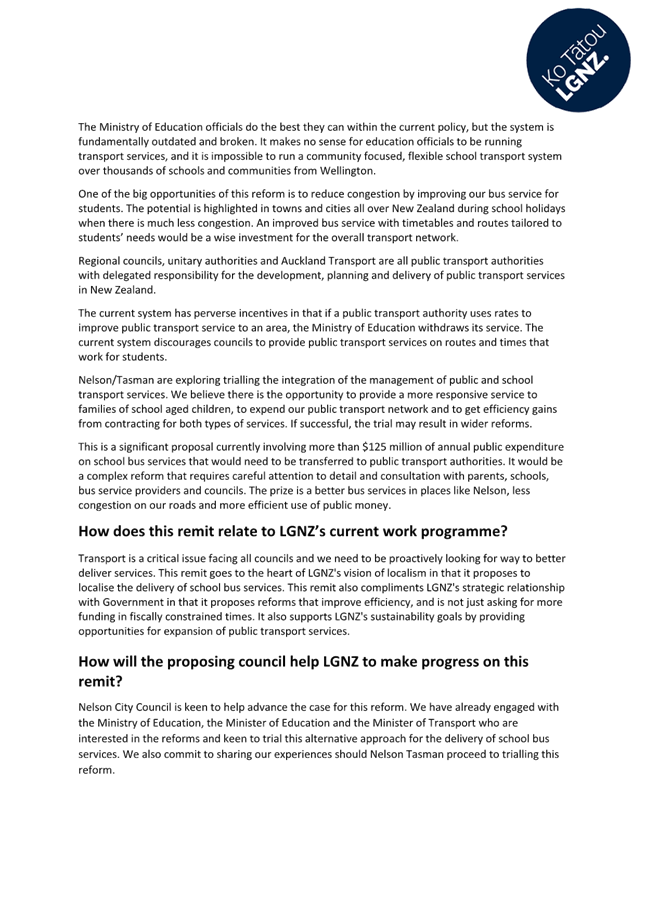
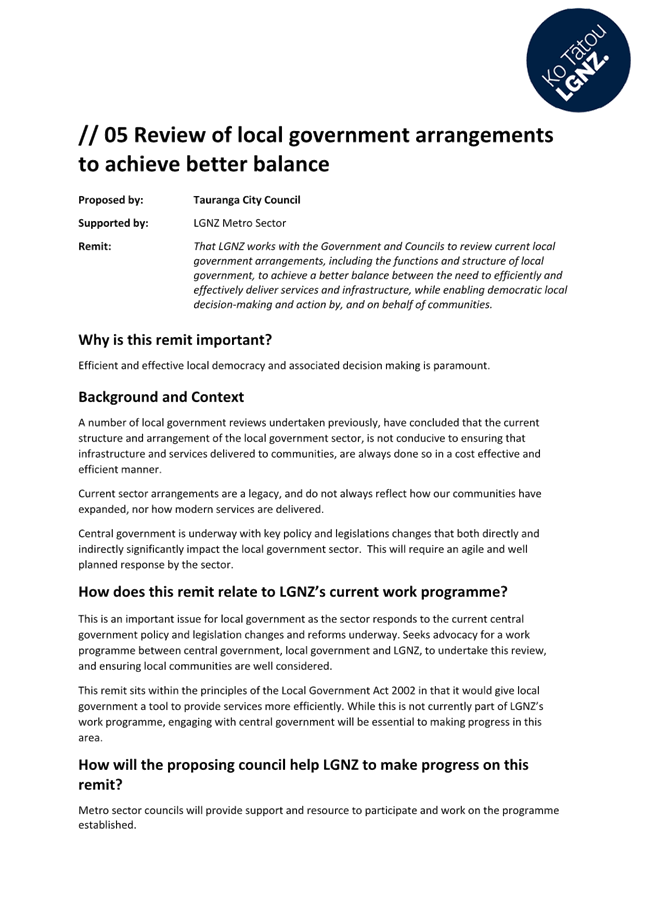
|
Ordinary
Council meeting Agenda
|
14
July 2025
|
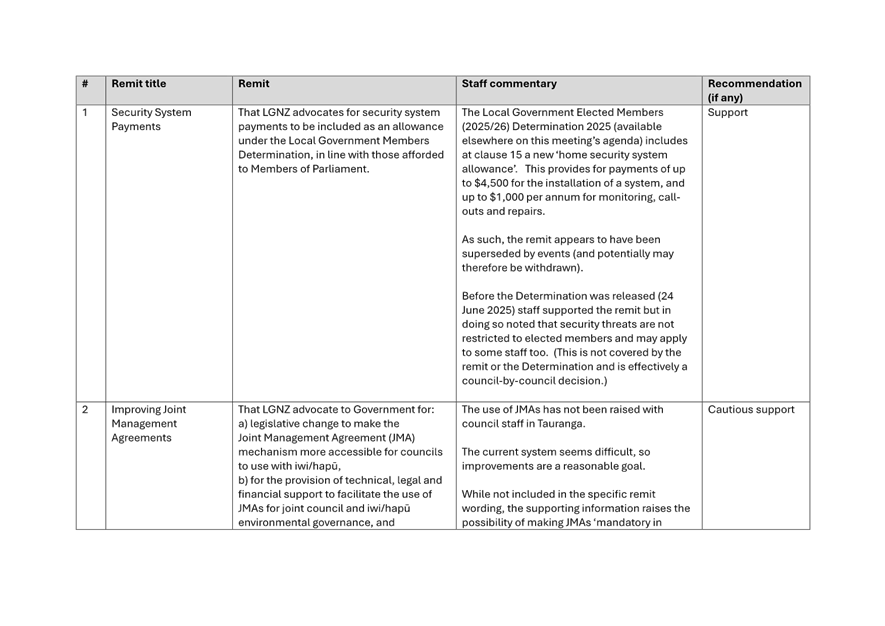
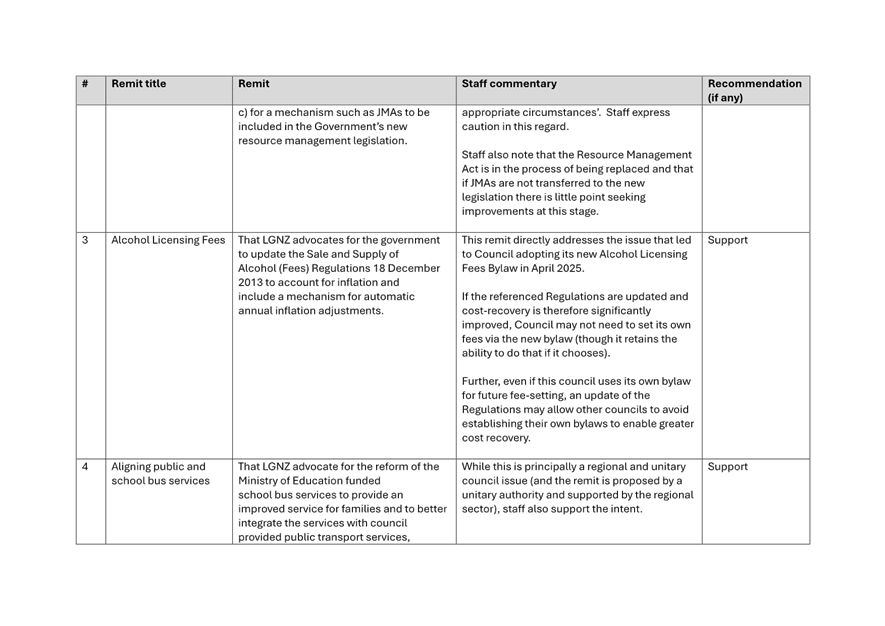
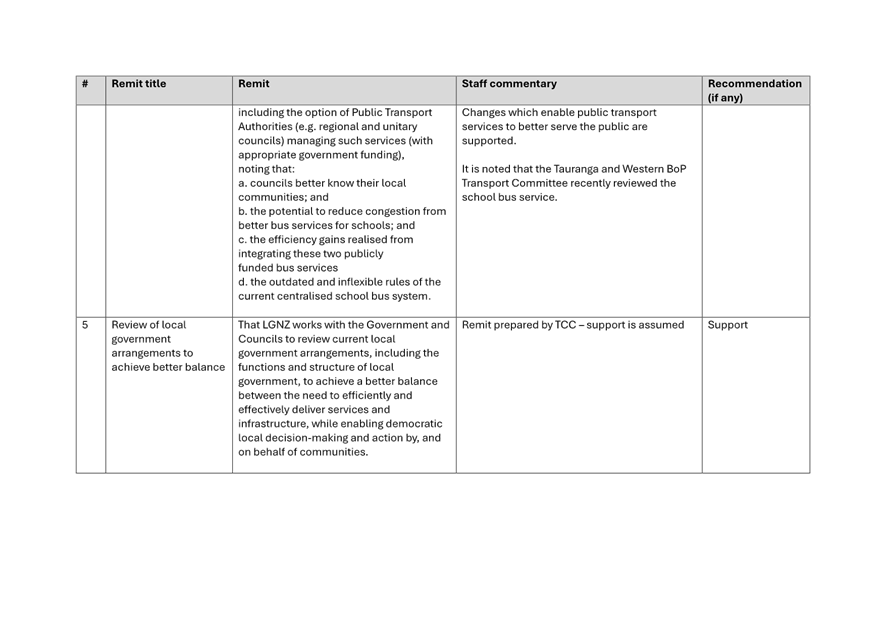
|
Ordinary Council meeting Agenda
|
14 July 2025
|
12 Discussion
of late items
|
Ordinary Council meeting Agenda
|
14 July 2025
|
13 Public
excluded session
Resolution to exclude
the public
|
Recommendations
That the public be
excluded from the following parts of the proceedings of this meeting.
The general subject
matter of each matter to be considered while the public is excluded, the
reason for passing this resolution in relation to each matter, and the
specific grounds under section 48 of the Local Government Official
Information and Meetings Act 1987 for the passing of this resolution are as
follows:
|
General subject of each matter to be
considered
|
Reason for passing this resolution in
relation to each matter
|
Ground(s) under section 48 for the
passing of this resolution
|
|
13.1 - Public Excluded Minutes of the
Council meeting held on 10 June 2025
|
s7(2)(a) - The withholding of the information is
necessary to protect the privacy of natural persons, including that of
deceased natural persons
s7(2)(g) - The withholding of the information is
necessary to maintain legal professional privilege
s7(2)(h) - The withholding of the information is
necessary to enable Council to carry out, without prejudice or
disadvantage, commercial activities
s7(2)(i) - The withholding of the information is
necessary to enable Council to carry on, without prejudice or disadvantage,
negotiations (including commercial and industrial negotiations)
|
s48(1)(a) - the public conduct of the relevant
part of the proceedings of the meeting would be likely to result in the
disclosure of information for which good reason for withholding would exist
under section 6 or section 7
|
|
13.2 - Public Excluded Minutes of the
Council meeting held on 26 June 2025
|
s6(b) - The making available of the information
would be likely to endanger the safety of any person
s7(2)(a) - The withholding of the information is
necessary to protect the privacy of natural persons, including that of
deceased natural persons
s7(2)(b)(ii) - The withholding of the information
is necessary to protect information where the making available of the
information would be likely unreasonably to prejudice the commercial
position of the person who supplied or who is the subject of the information
s7(2)(i) - The withholding of the information is
necessary to enable Council to carry on, without prejudice or disadvantage,
negotiations (including commercial and industrial negotiations)
|
s48(1)(a) - the public conduct of the relevant
part of the proceedings of the meeting would be likely to result in the
disclosure of information for which good reason for withholding would exist
under section 6 or section 7
|
|
13.3 - Clarification on CCO Board
appointment
|
s6(b) - The making available of the information
would be likely to endanger the safety of any person
s7(2)(a) - The withholding of the information is
necessary to protect the privacy of natural persons, including that of
deceased natural persons
|
s48(1)(a) - the public conduct of the relevant
part of the proceedings of the meeting would be likely to result in the
disclosure of information for which good reason for withholding would exist
under section 6 or section 7
|
|
13.4 - Bay of Plenty Housing Equity
Fund - Appointment of members to the Board
|
s7(2)(a) - The withholding of the information is
necessary to protect the privacy of natural persons, including that of
deceased natural persons
|
s48(1)(a) - the public conduct of the relevant
part of the proceedings of the meeting would be likely to result in the
disclosure of information for which good reason for withholding would exist
under section 6 or section 7
|
|
|
Ordinary Council meeting Agenda
|
14 July 2025
|
14 Closing
karakia




















































































































































